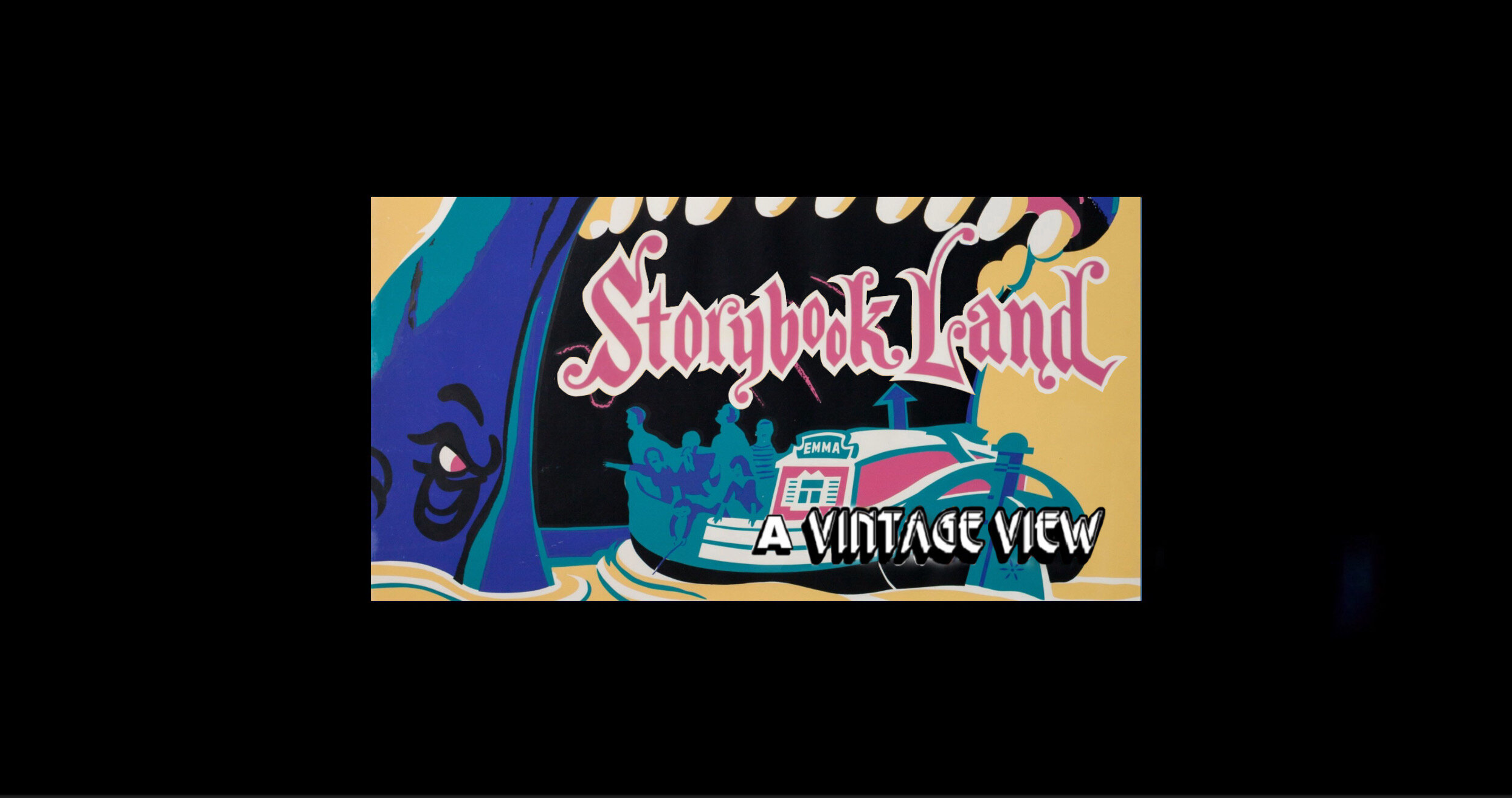STORYBOOK LAND (CANAL BOATS of the WORLD)
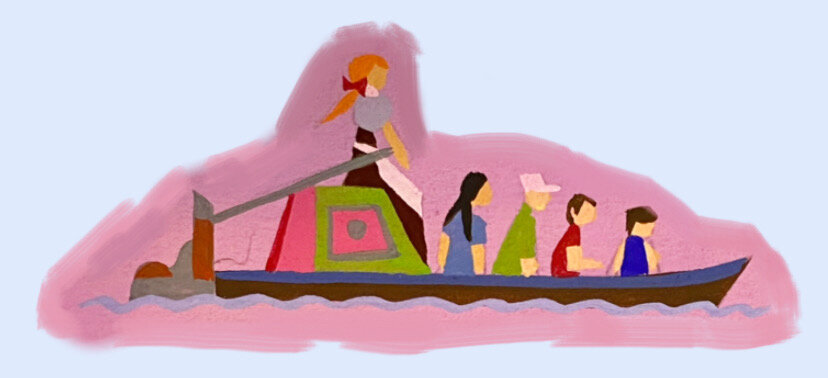

(July 17, 1955 - September 16, 1955)
One can easily slip into the jargon of “ride,” but at Disneyland there is a "story behind the story" of every attraction, every attraction is a living experience for the guest. Disneyland ride-through attractions or adventures have officially been defined as an “individual show, ride, or exhibit designed to produce an entertaining Guest experience. Disney attractions stir the imagination, enliven the senses, and provide the participants with positive, innovative entertainment, which is the essence of the DISNEYLAND Show.” It is important to review the story of the attraction, tell the story, explain it, and create interest. This is the story of the Canal Boats.
“A Prologue to Storybook Land”
Once upon a time… Walt Disney became fascinated with miniatures amidst his travels. It is believed that it happened while visiting the Golden Gate International Exposition of 1939, where Mrs. James Ward Thorne’s collection of miniature rooms was displayed. With that, Walt’s interest in the world of miniatures was sparked, and he soon began crafting his own (to match the scale of his Carolwood Pacific Railroad stock) within the Studio Machine Shop under the supervision of Roger Broggie. By 1951, Walt had also started collecting miniatures (as attested to by his extensive collection in the care of the Walt Disney Family Museum), and was even working on a traveling “Disneylandia” exhibit of miniature mechanized scenes (like a tap dancing Vaudeville entertainer and a barbershop quartet), to be transported by railroad to major cities. The displays would have been viewed by visitors, through coin-operated windows installed in pullman railroad cars.
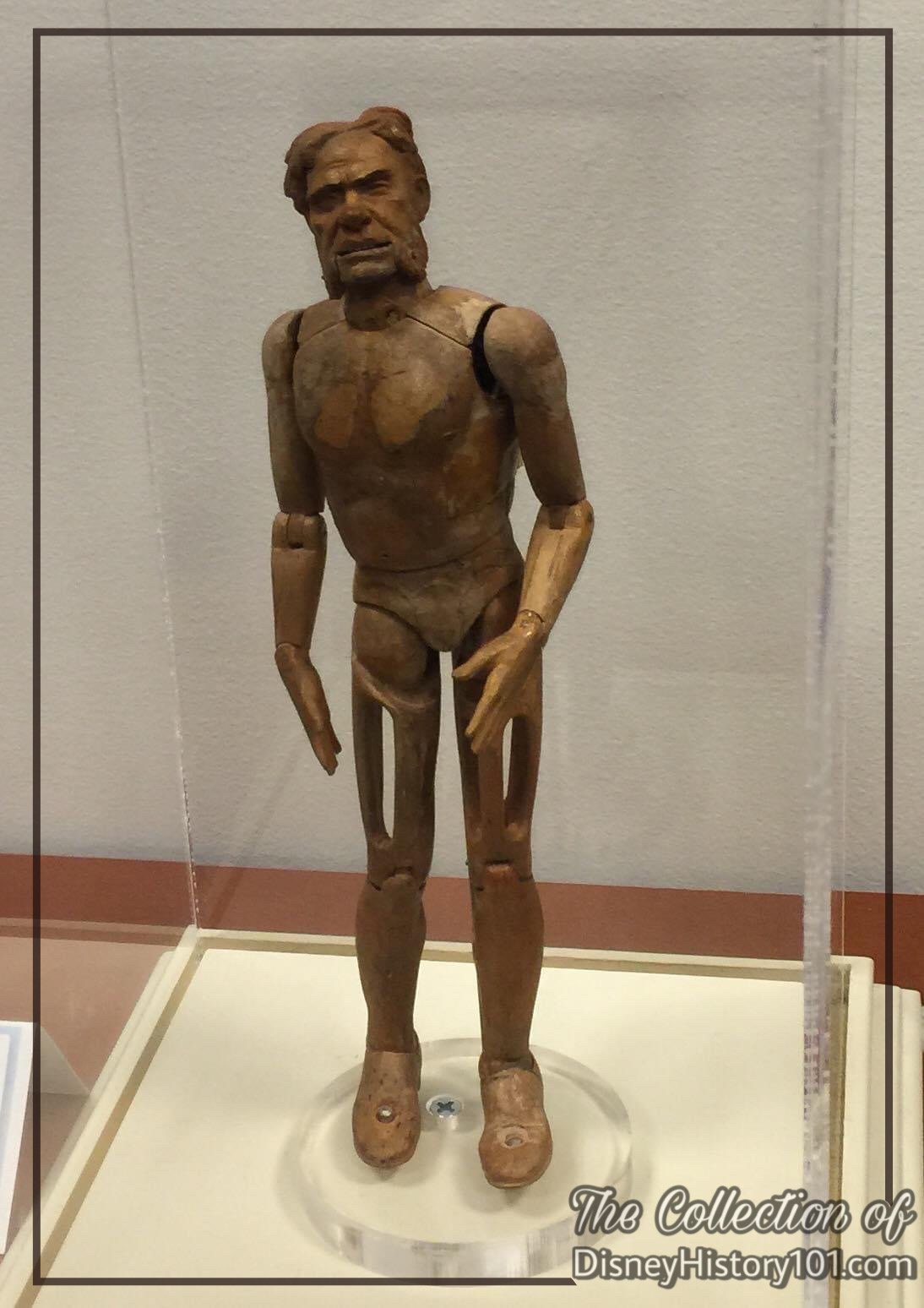
A miniature Cam-and-Lever Figure of a man; The Walt Disney Archives.
While the science of cam-and-lever technology and some of the art was developed, the project was scrapped due to costs.
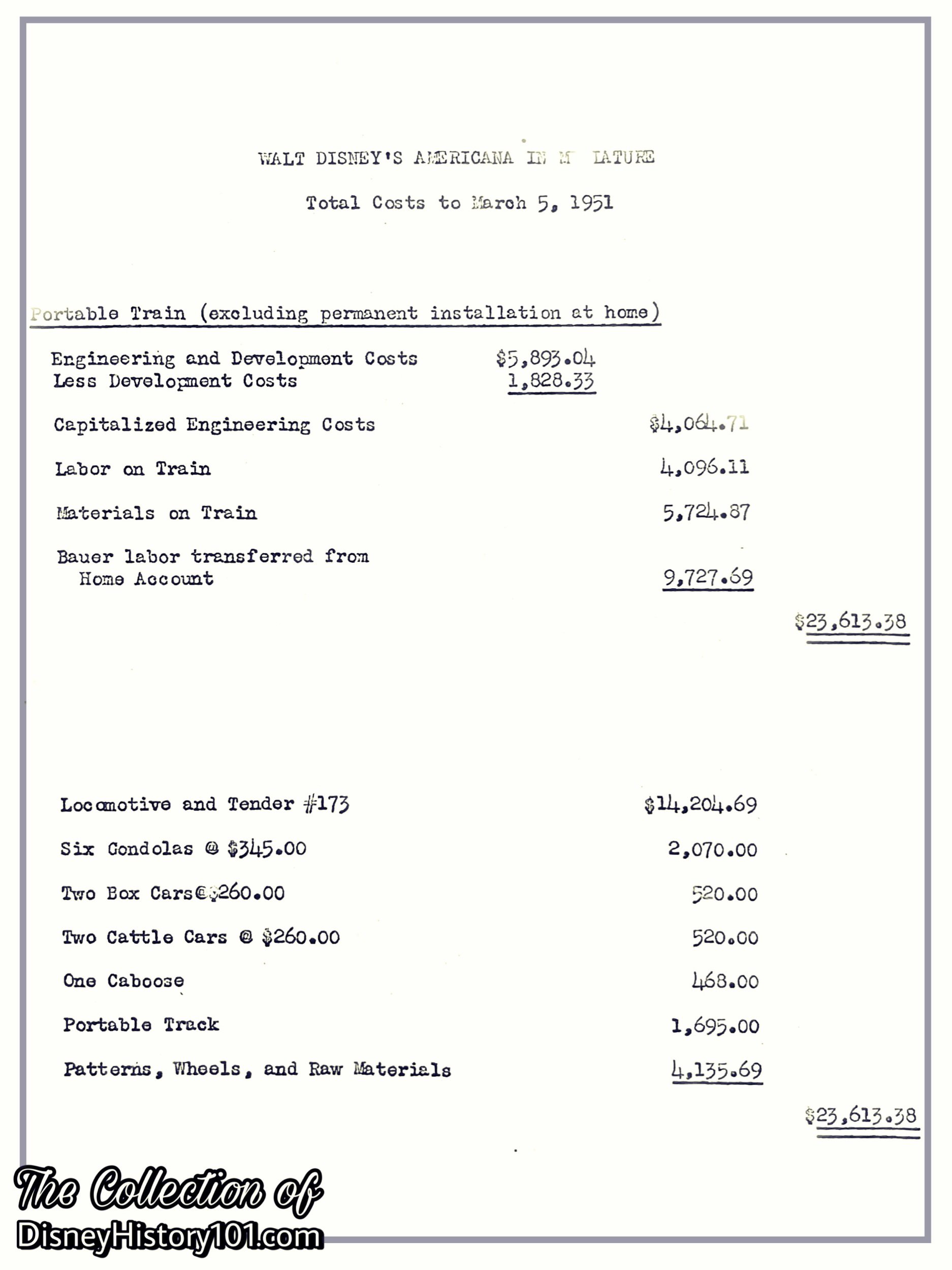
A “bid-and-construct” estimate for “Walt Disney’s Americana,” (or, "Disneylandia") c. 1951; as seen at Walt’s Carolwood Barn Museum.
While visiting England in 1951, Walt had the fortuosity to meet an artist named Harper Goff while shopping for small-scale railroad engine. Some time after Walt returned home (in 1952), he founded a company called WED Enterprises, Inc. in order to master-plan and design his dreams of a Park. Walt would hire Harper to create drawings of a “Mickey Mouse Mark” (to be constructed on an 11-acre plot along Riverside Drive in Burbank). It was within these drawings prepared c. 1953, that Harper included a “gravity flow canal boat” ride (similar to one that Walt saw at Bois de Boulogne, north of Paris, while performing research for Disneyland).
“At the Philadelphia Toboggan Company, where rides were engineered, they advised against trying to run the canal boats on an underwater chain. Long experience had shown that such devices tangled and rusted out.” Such a gravity flow canal ride would revolutionize theme park vehicles, and (most import) influence several future Disneyland attractions! The result was that further designs and documents began to reference a “Gravity Flow Canal Boat” and “Boat Lift”. Further rough map and site plan drawings created for the very same area near Griffith Park (in Burbank, California) depicted the canal boat ride with a miniature “castle” labelled along the shores of the water.
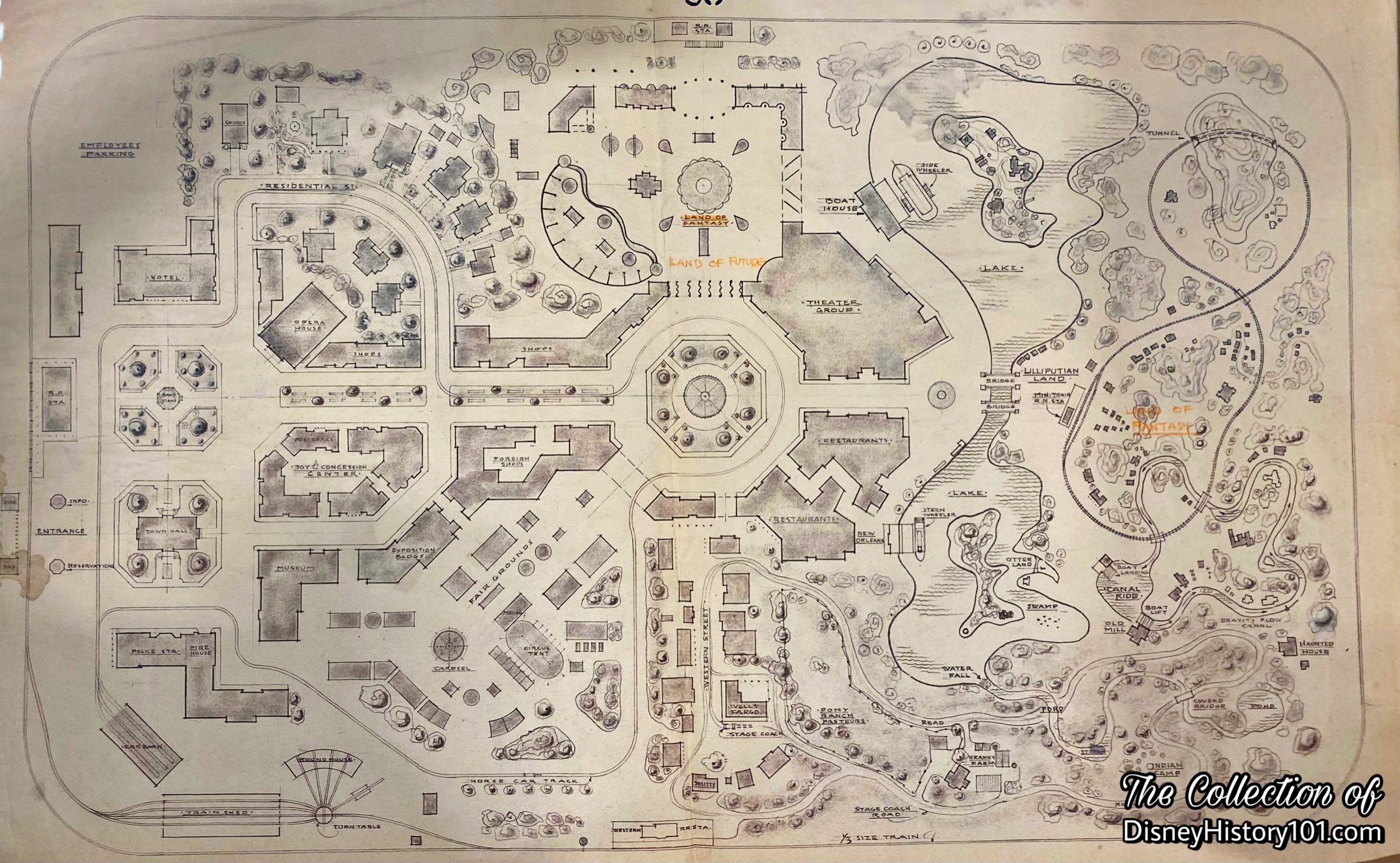
Both a “Gravity Flow Canal” and “Boat Lift” are depicted on “Disneyland Preliminary Scheme #1”
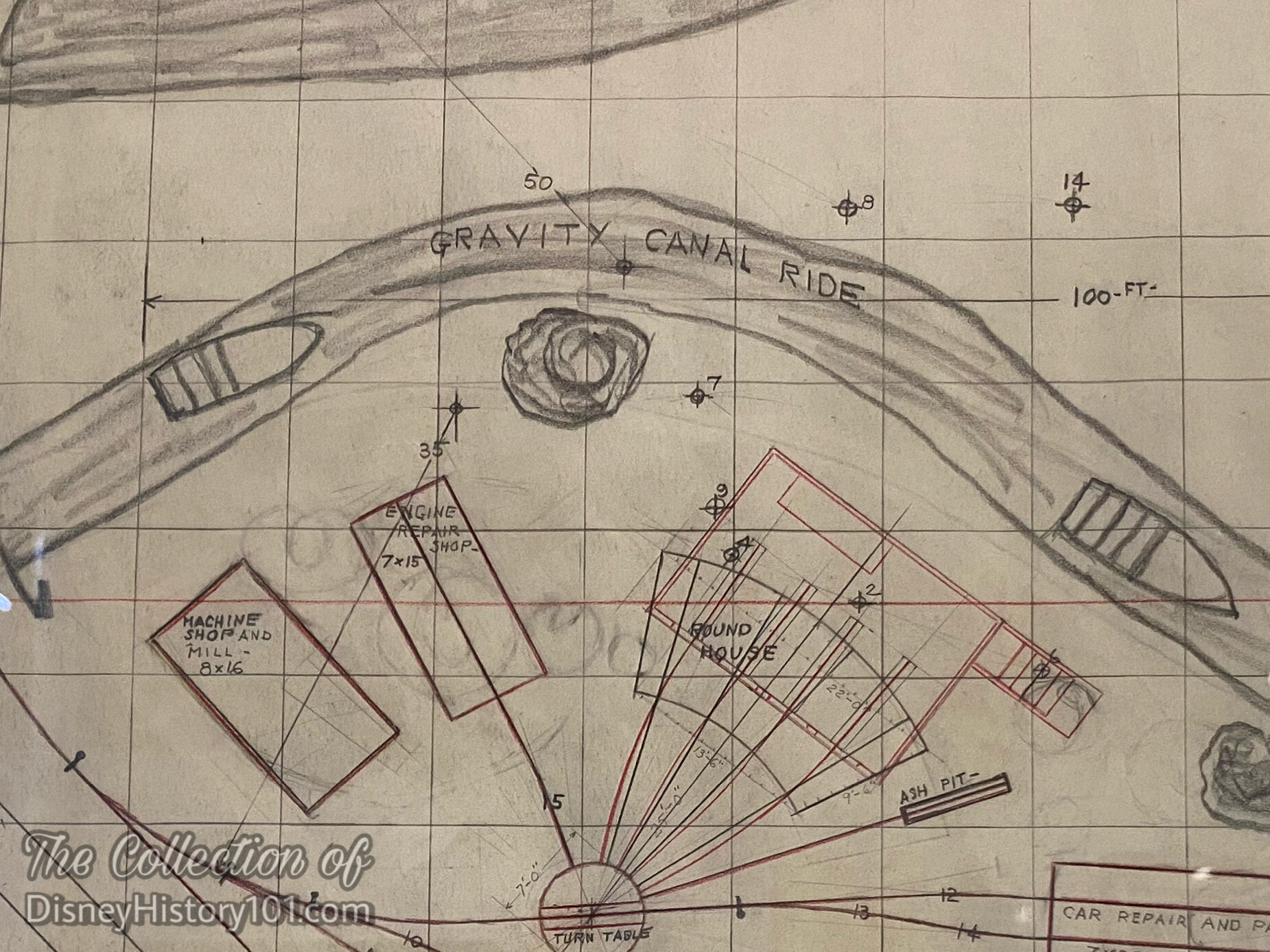
Note the Gravity Flow Canal on the "Disneyland Rail Road Station and Yard Lay Out Plan", prepared c. 1953.
During 1952, Walt travelled to the newly opened miniature cities of Madurodam Park (in Holland), in his continuing study of amusement centers. Some time passed, and after the Park’s working title had been changed to “Disneyland,” some of the earliest conceptual drawings of the new Park, now featured an area described as “Lilliputian Land” as part of the site plans. The following year, while designs for his own “Disneyland” Park still incorporated the “Gravity Flow Canal Ride,” concept, site plan drawings (included in the 1953 “Disneyland Prospectus”) began to feature an area labelled “Mother Goose” in the “Fantasy Land.” According to the “Proposed Diagramatic Layout of Disneyland” (Marvin A. Davis’ plot plan, produced for WED Enterprises, by September 12, 1953) described among the details a “Lilliputian Land” featuring a “1/2 Scale Train Ride”, a “Canal Boat Ride”, and even a “Lilliputian Museum” (perhaps to hold Walt’s collection of miniatures). About this time, the nursery rhyme “Rub-a-dub-dub, three men in a tub” had came to influence the concept of a potential mode of travel through this lilliputian land, and concepts were created of a bathtub-like boat that would transport guests along these miniature vignettes. But Walt made a research trip to Europe during this time, and after at least one canal boat ride in Paris, the “plug was pulled” on the idea of bathtubs.
Then in 1952, Walt Disney founded a company called WED Enterprises, Inc. in order to master-plan and design his his dreams of a Park. The company was staffed by Animators, Art Directors, Artists, Artisans, Architects, Set Designers, and Planners from the Studio. Early thumbnail sketches and other concept artwork seemed to be unencumbered by restrictions of budget, schedule or the laws of nature and physics. Though guided by Walt, his artists appeared to engage in “free-thinking,” as if implementing the modern “Blue Sky” Imagineering process.
Early thumbnail sketches and other concept artwork of Disneyland still seemed to be unencumbered by restrictions of budget, schedule or the laws of nature and physics. Though guided by Walt, his artists appeared to engage in “free-thinking,” as if implementing the modern “Blue Sky” Imagineering process.
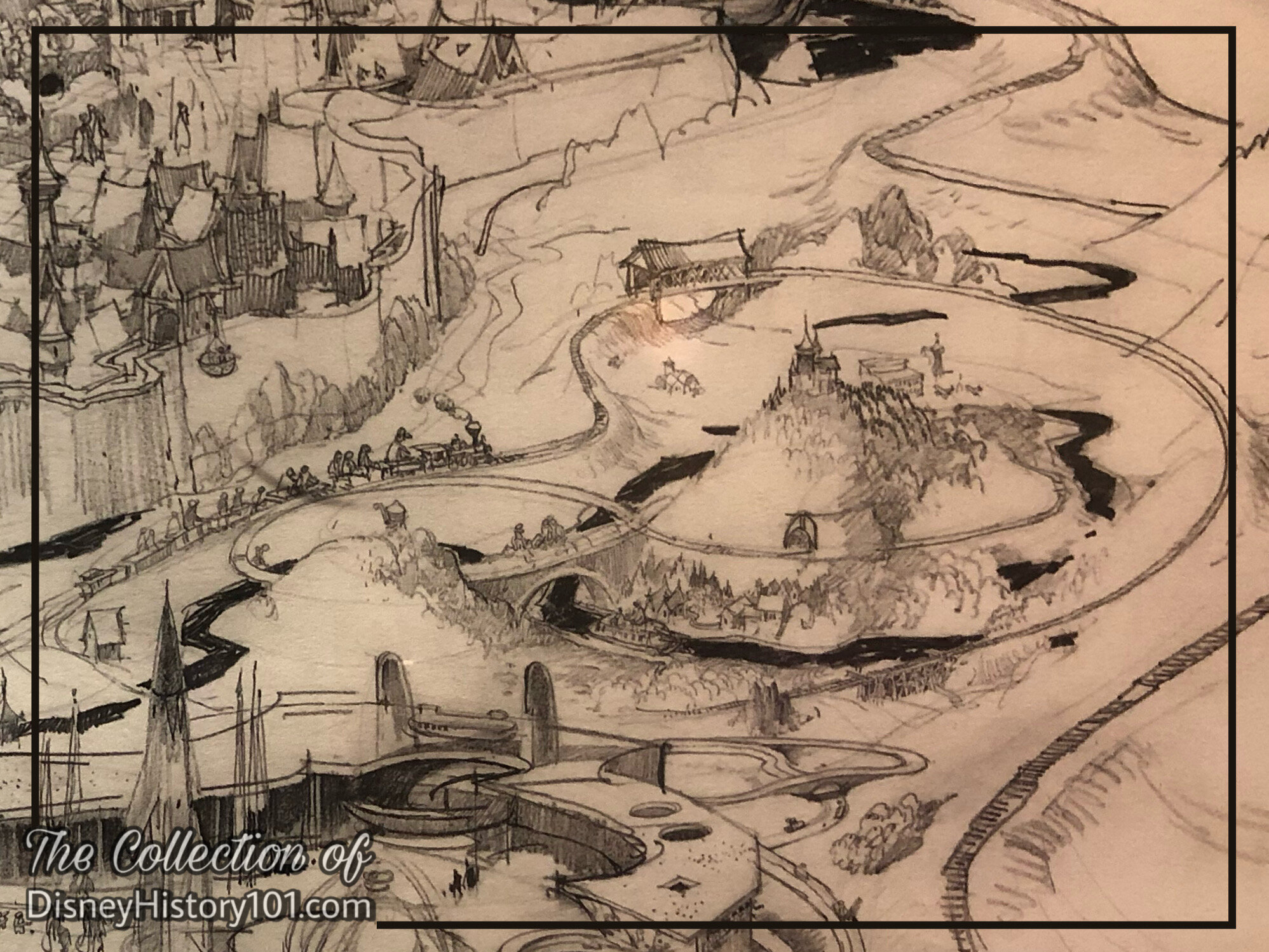
An efficient and maximum utilization of space in what appears to be a form of the "Lilliputian Land" in Herb Ryman's "Aerial View Over Disneyland" Excerpt, originally produced September 26 & 27, 1953.
“Draw Concept”
While many artists contributed, the talented Herbert Ryman is of note. Herb had joined the Disney Studio in 1938, after Walt saw a public show of his work in New York. (Herb's paintings were being exhibited with those of another up and coming artist, Andrew Wyeth.) Herb Ryman acted as art director for such films as Fantasia and Dumbo, but had left Walt Disney Studios in 1946 and (by 1953) was employed by 20th Century Fox. Walt reached out to Herb and during one weekend (September 26 & 27, 1953) the first “Schematic Aerial View” over Disneyland originally produced! Herb Ryman’s work notably depicted a water-based ride through a lilliputian land.
This land was (at least partially) inspired by Walt’s earlier “Disneylandia” project, which would have been a traveling exhibition of miniature Americana (as told though small-scale set pieces and animated figures). In one particular 1954 document, an attraction is described as “a land of little things….A miniature Americana village is inhabited by mechanical people nine inches high, who sing and dance, and talk to you as you peek through the windows of their tiny shops and homes. In Lilliputian Land there is an Erie Canal barge that takes you through the famous canals of the world, where you visit the scenic wonders of the world in miniature. Here, a little diamond-stack locomotive engine 17 inches high steams into the tiny railroad station. You sit on top of the Pullman coaches like Gulliver, and the little nine inch engineer pulls back the throttle taking you on the biggest little-ride in the land. And for the little people who have little appetites - you can get miniature ice-cream cones, or the world’s smallest hot-dog on a tiny bun in Lilliputian Land.” Some of these viable project Concepts (as seen above), were supported by a well-developed business case and built expectation. But while some of these ideas didn’t materialize, at least one of them did - a canal boat (similar to those seen in Netherland’s canals).
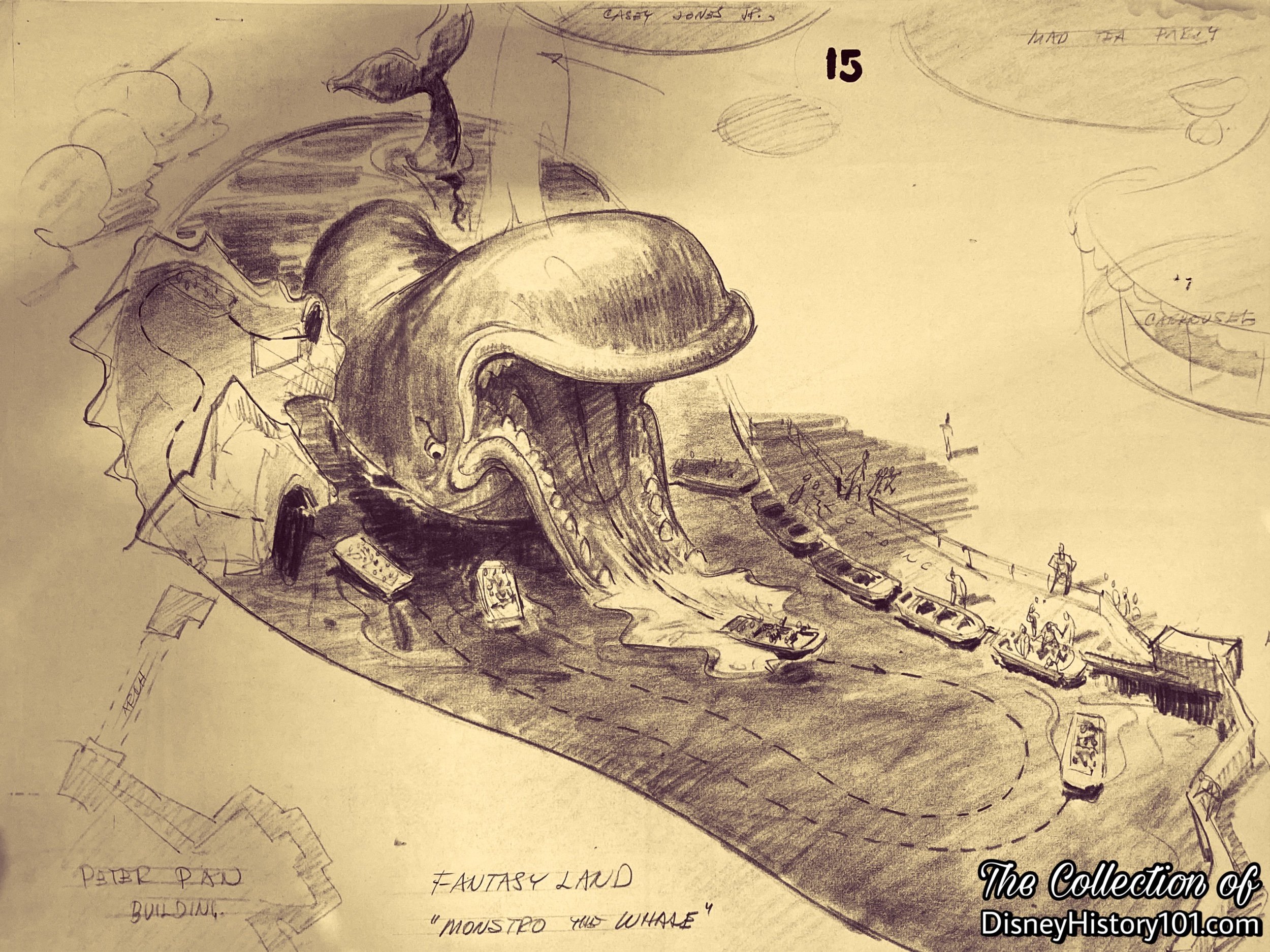
Note the Canal Boats and Monstro the Whale in this design for Fantasy Land prepared by Bruce Bushman.
This concept was prepared by Bradley & Kaye Amusement Company of 8506 Beverly Blvd. Los Angeles 48, Calif; Oleander 5-8029.

Note the Canal Boats in this design for Fantasy Land prepared by Bruce Bushman.
Amidst his loose line work, Walt Disney Studio artist Bruce Bushman (who was also affiliated with Bradley & Kaye) suggested a Stromboli Puppet theater in an area inspired by Pinocchio’s village, a gravity-flow canal ride featuring Monstro the Whale, a circus midway-themed dining area entered through a towering clown arch, a sailboat in a lagoon, and remembering that “it was all started by a mouse,” his detailed designs also included a “Birth of a Mouse” show. [The Disneyland News, Vol.1, No.9 published for March 10, 1956.]
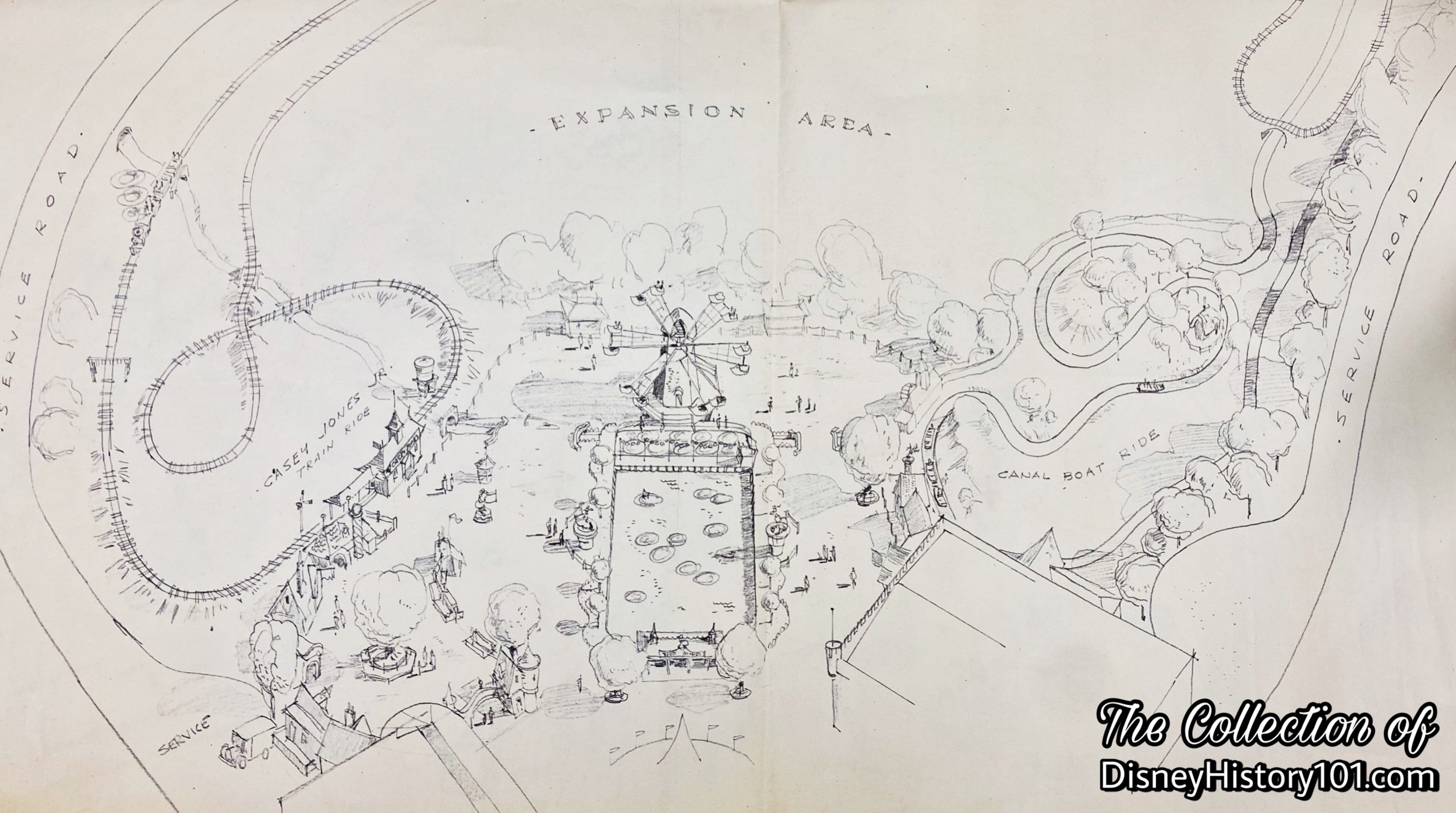
Note the Canal Boats in this plot plan for Fantasy Land.
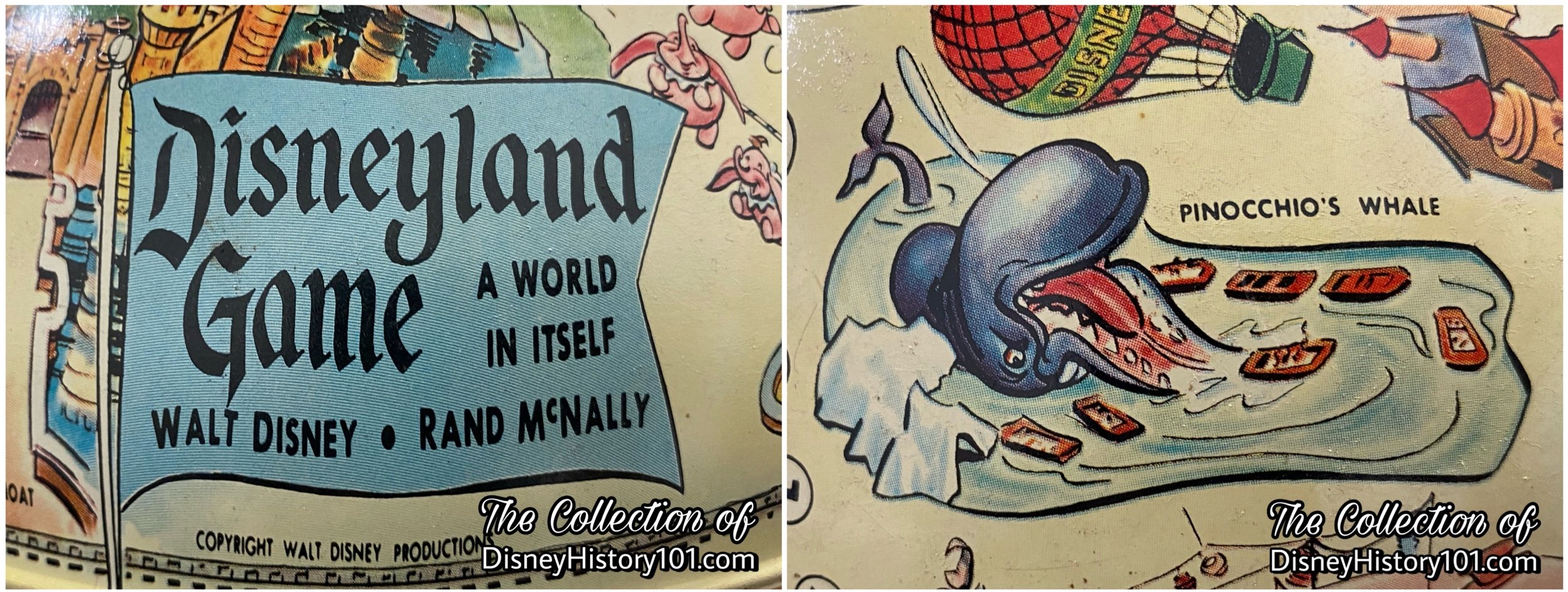
Bruce Bushman created a Monstro-shaped attraction concept - a Pinocchio-themed canal boat flume ride and a Tick-Tock Crock-themed aquarium.
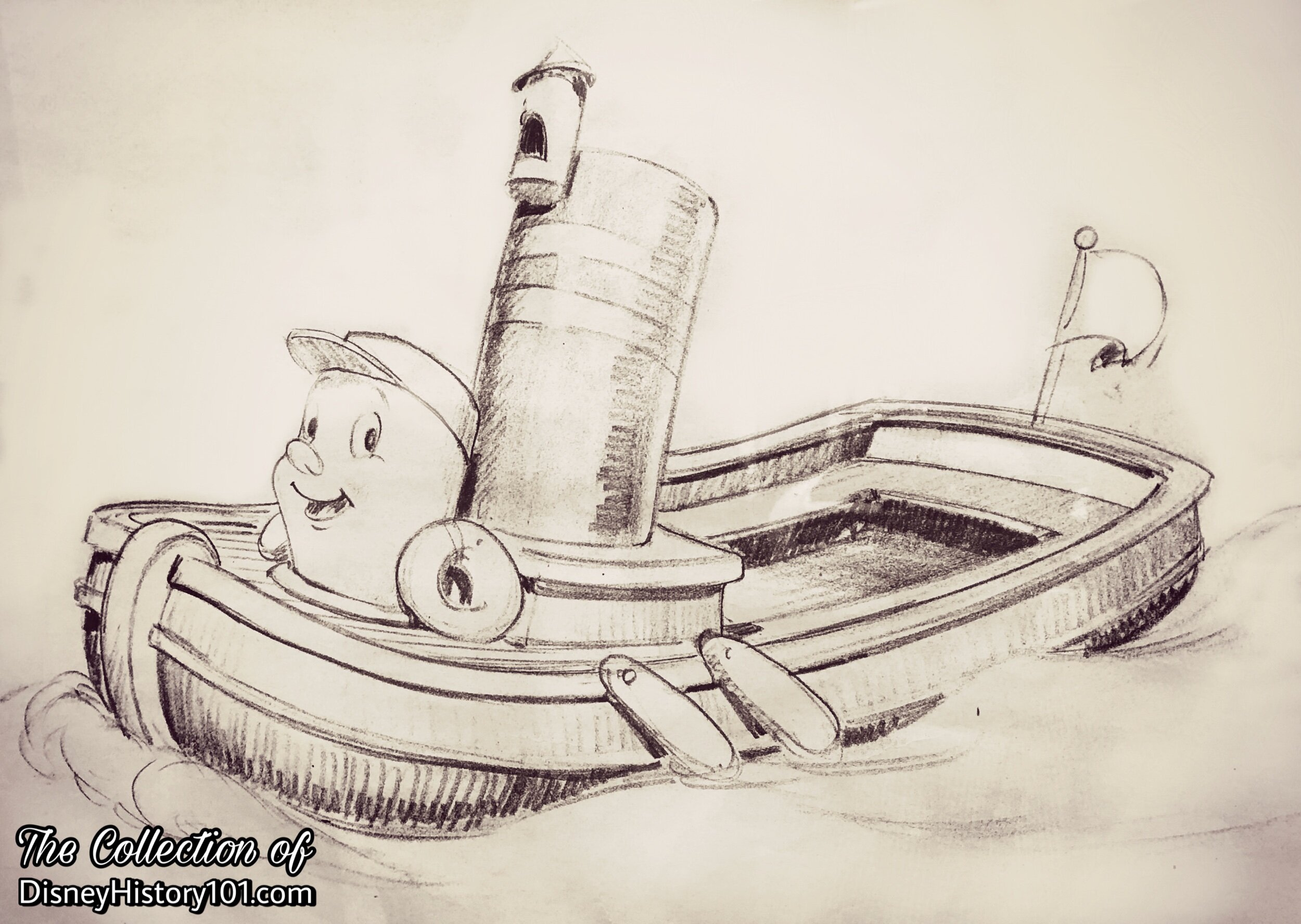
Bruce Bushman “Little toot” Canal Boat Concept, c. 1954.
By July 1, 1954, George Whitney of Disneyland, Inc. directed Amusements, with Ron Miller overseeing analysis, philosophy, capacities, planning, operator training, and amusement procurement.
Meanwhile, one 1954 design (pictured above) by Bruce Bushman (a Walt Disney Productions Technical Director) was derived from the character model of Hardie Gramatky’s Little Toot (as featured and popularized in “Walt Disney’s Melody Time”, released in 1948). Maybe you’ve seen the limited edition print released through The Disney Gallery.
But a more traditional (and non- “anthropomorphic”) look was ultimately finalized, which can be seen below. Here, the Canal Boats of “Holland, France, England, and America travel through the canals which pass the fabulous sights of Fantasyland”, according to The Story of Disneyland (published 1955 by Disneyland Inc.)! Like some advanced “High Concept,” final designs were quickly generated and approved.
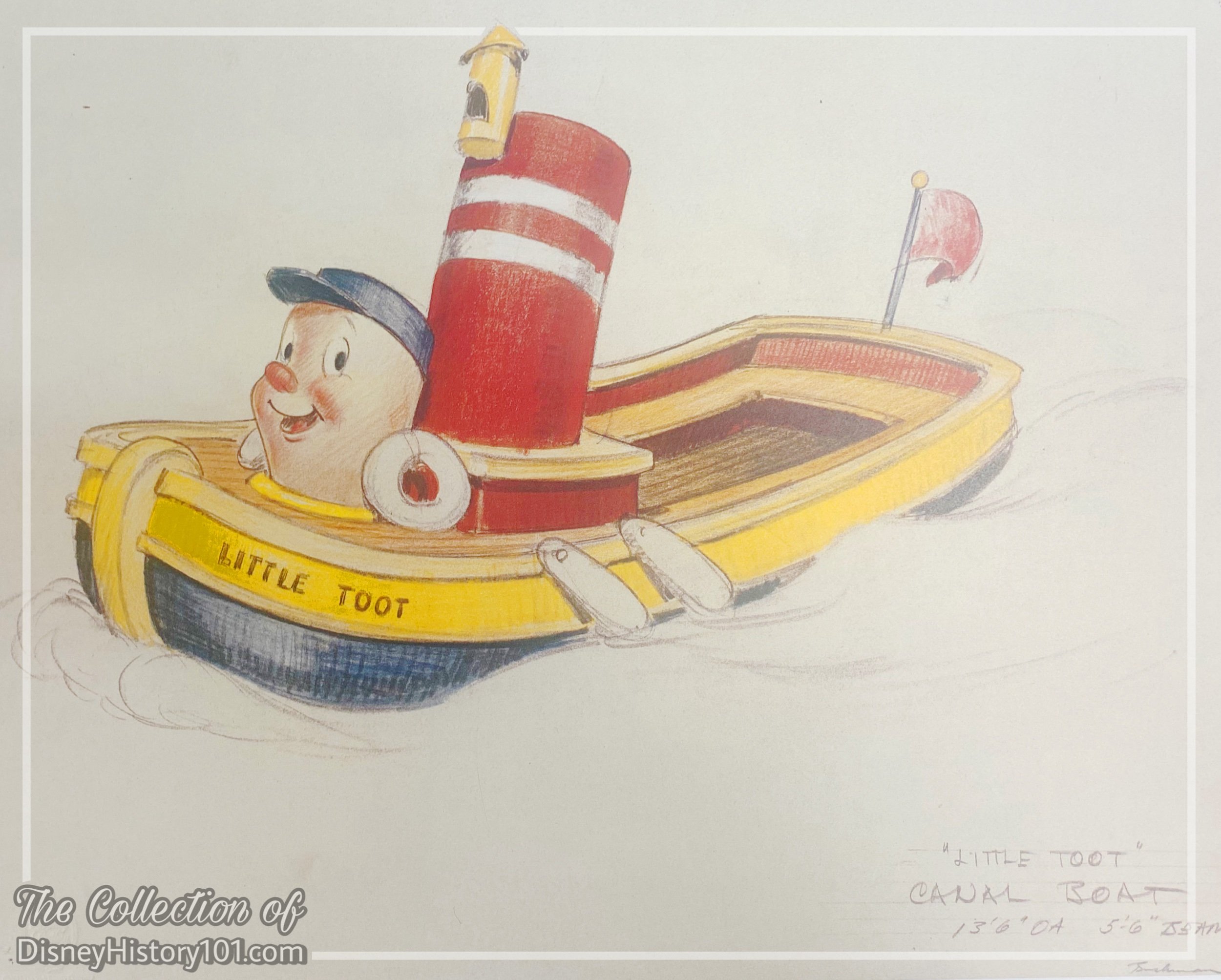
Bruce Bushman “Little toot” Canal Boat Concept, c. 1954.
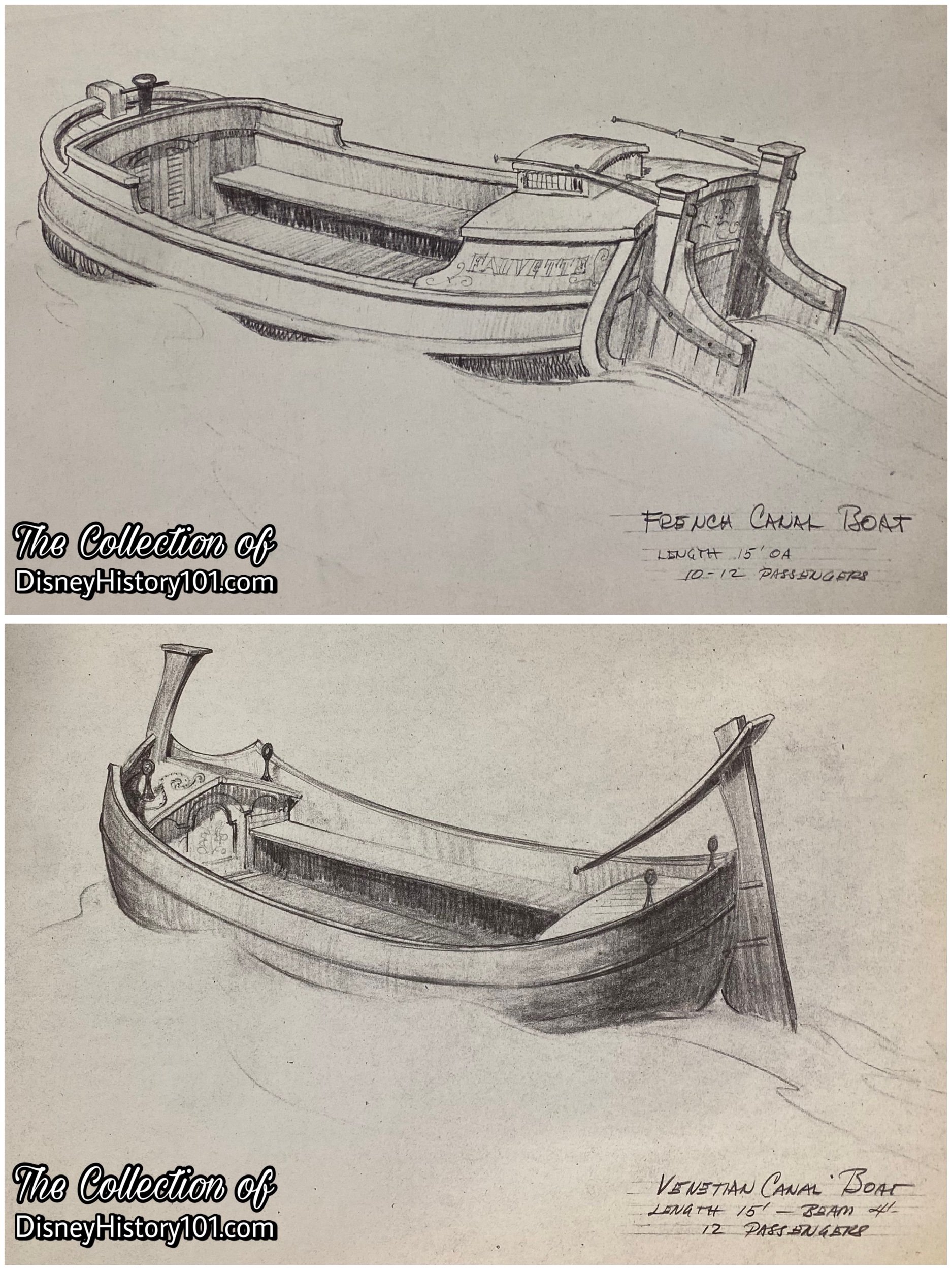
French Canal Boat and Venetian Canal Boat
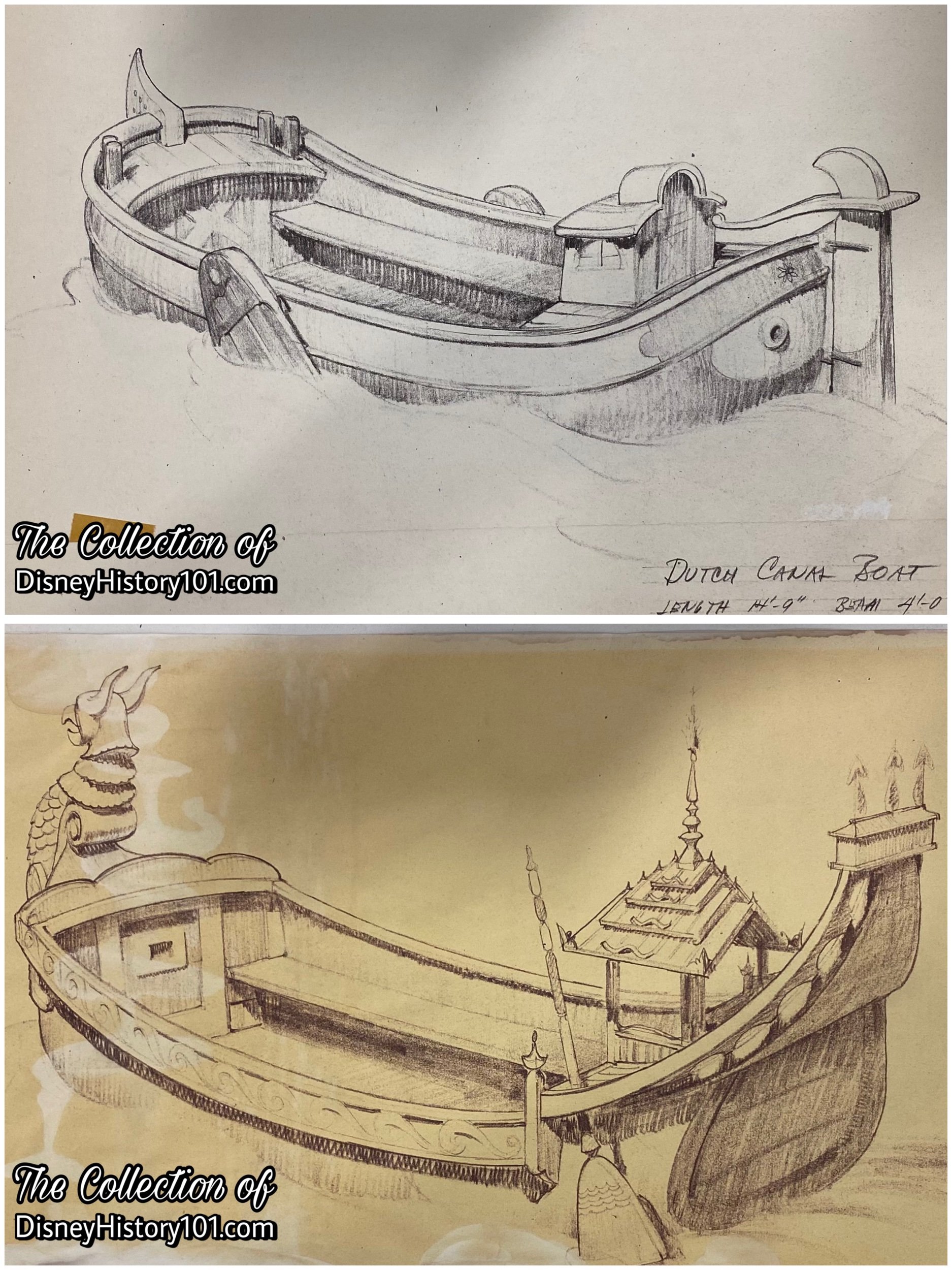
A Dutch Canal Boat and another of Scandinavian influence.
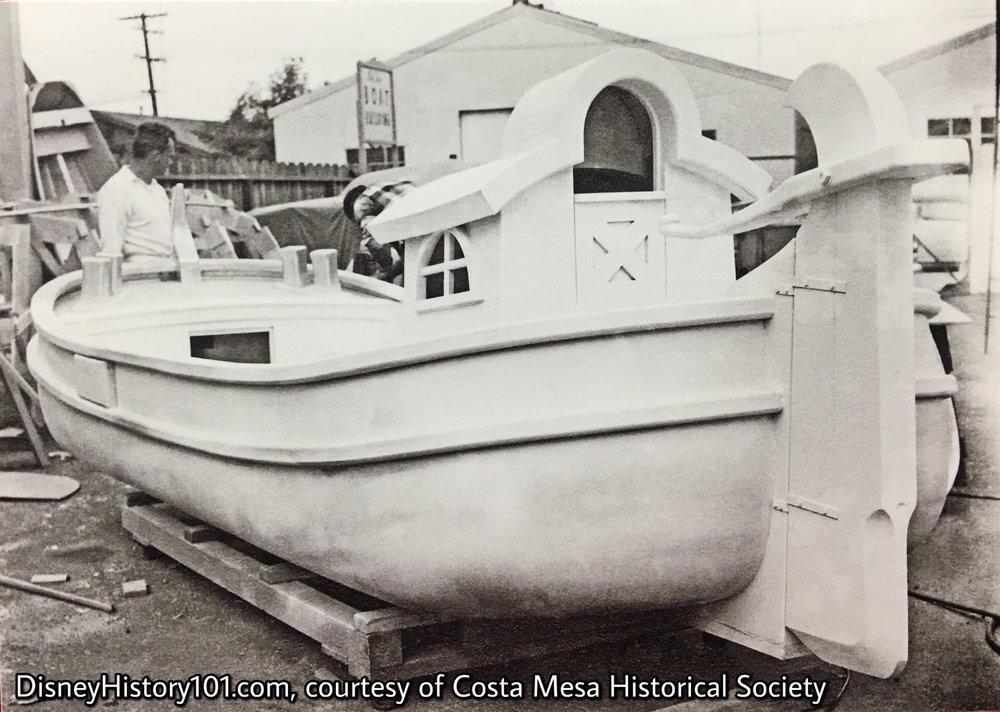
Canal Boat Under Construction at Bob Dorris Boatworks, (c. 1955)
Eight original boats were built and these were named, Annie Oakley, Bold Lockinvar, Gretel, Lady Guinivere, Lady Katrina, Lady of Shallot, Lady of the Lake, and Nellie Bly. According to a “Nomenclature List” (updated May 25, 1955), there were “2 American boats, 2 English boats, 2 French boats, and 2 Dutch boats.” Each of these unique 15-foot, 9-inch (5 foot, 8 inch beamed) canal boats were both fabricated and constructed by the reputable Robert Dorris and his Bob Dorris Boatworks (a local boat builder of neighboring Newport Beach). Bob Dorris Boatworks (of Newport Beach) was already responsible for a number of Disneyland boat hull designs. After Bob consulting with artists from WED enterprises, it was time to begin construction on his most memorable Disneyland contribution - those quaint and whimsical little canal boats. Soon their propulsion was attached, to be accomplished by way of gasoline-powered outboard motors on each boat.
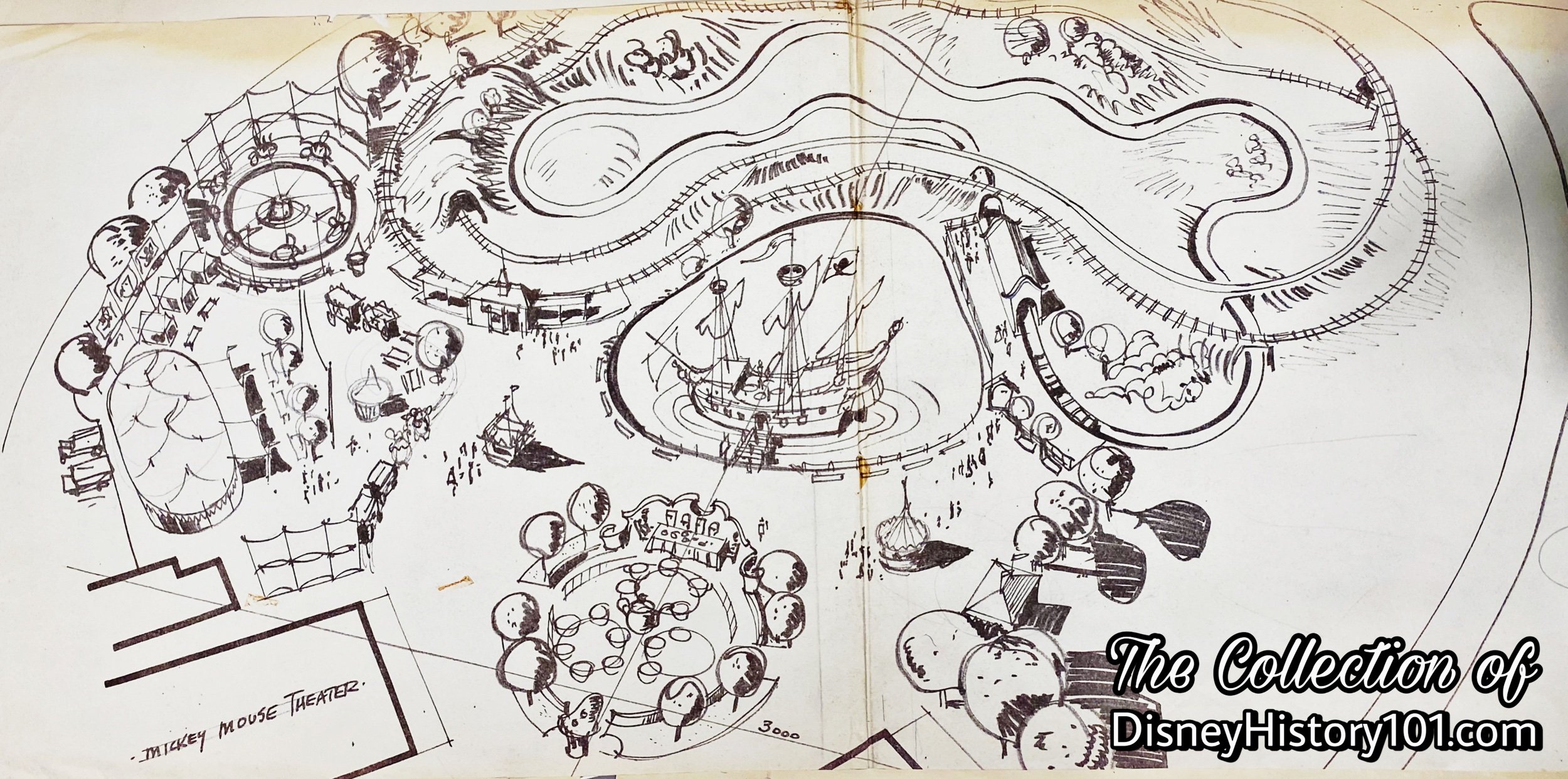
Note the placement of the attraction in this early rough layout concept.
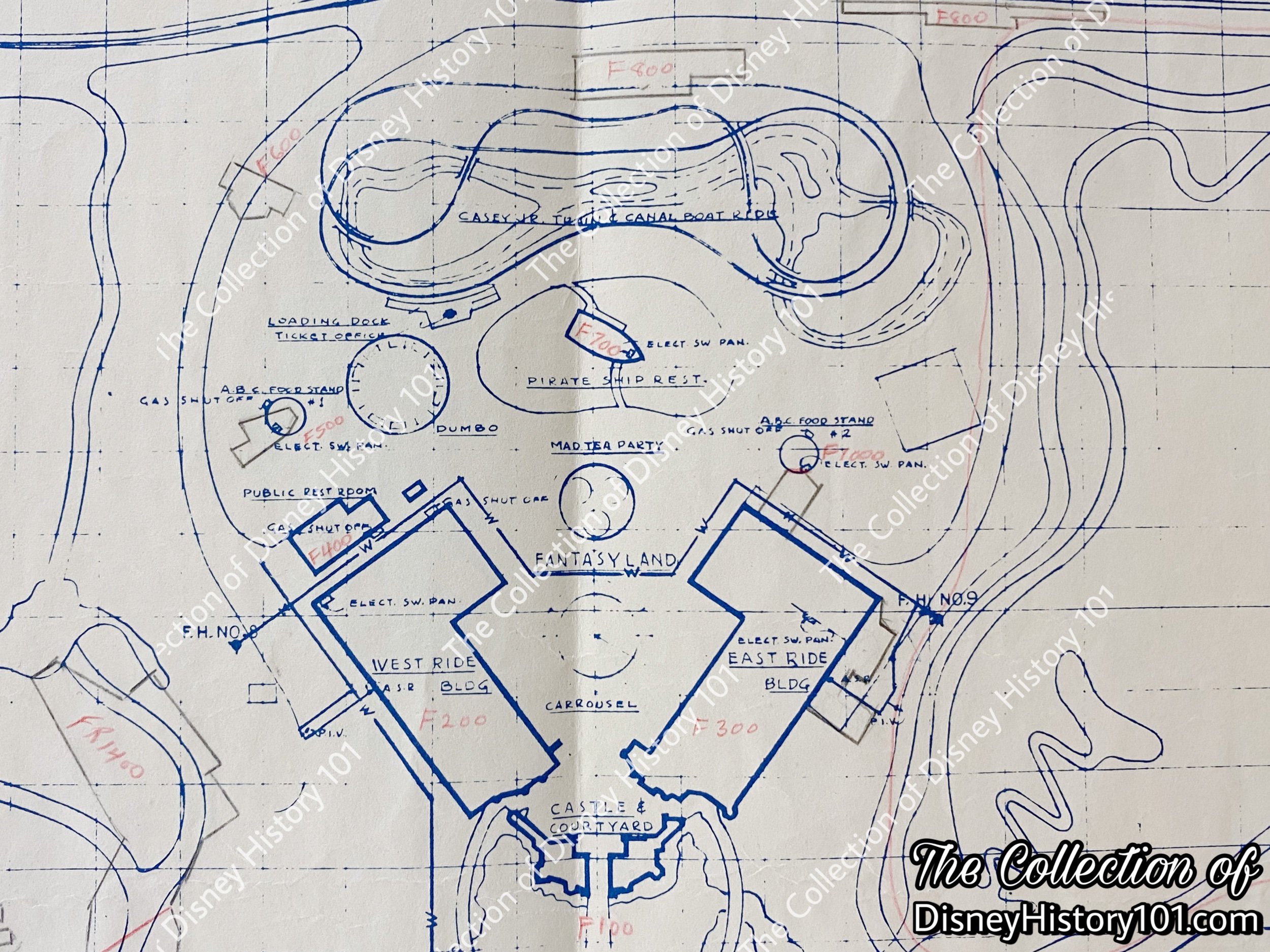
Note the placement of the Canal in Fantasyland on this plot plan.
Meanwhile, the Canalways of the World began to take form! It’s waters were to be shared with Tomorrowland Lake (in a “continuous flowing gravitational water system”) via an additional canal which would run along the tracks of the Santa Fe & Disneyland Railroad. Soon, one authorized “Disneyland Information & Nomenclature List” (prepared by Bill Cottrell of Disneyland Inc., May 25, 1955) announced the working title as the “Canal Boats of the World,” describing a “scenic canal boat ride in American, English, French, and Dutch canal boats.” The same document adds that the “there are : 2 American boats, 2 English boats, 2 French boats, 2 Dutch boats.” As of June 2, 1955, C.V. Wood Jr. sent an Inter-Office Memorandum to Walt Disney regarding the best estimates that could be obtained at the time regarding the completion status of individual sections of the Park and Opening Day. C.V. wrote: “Canal Boats: We can have the canal finished with the water run but will probably only have five boats operating.”
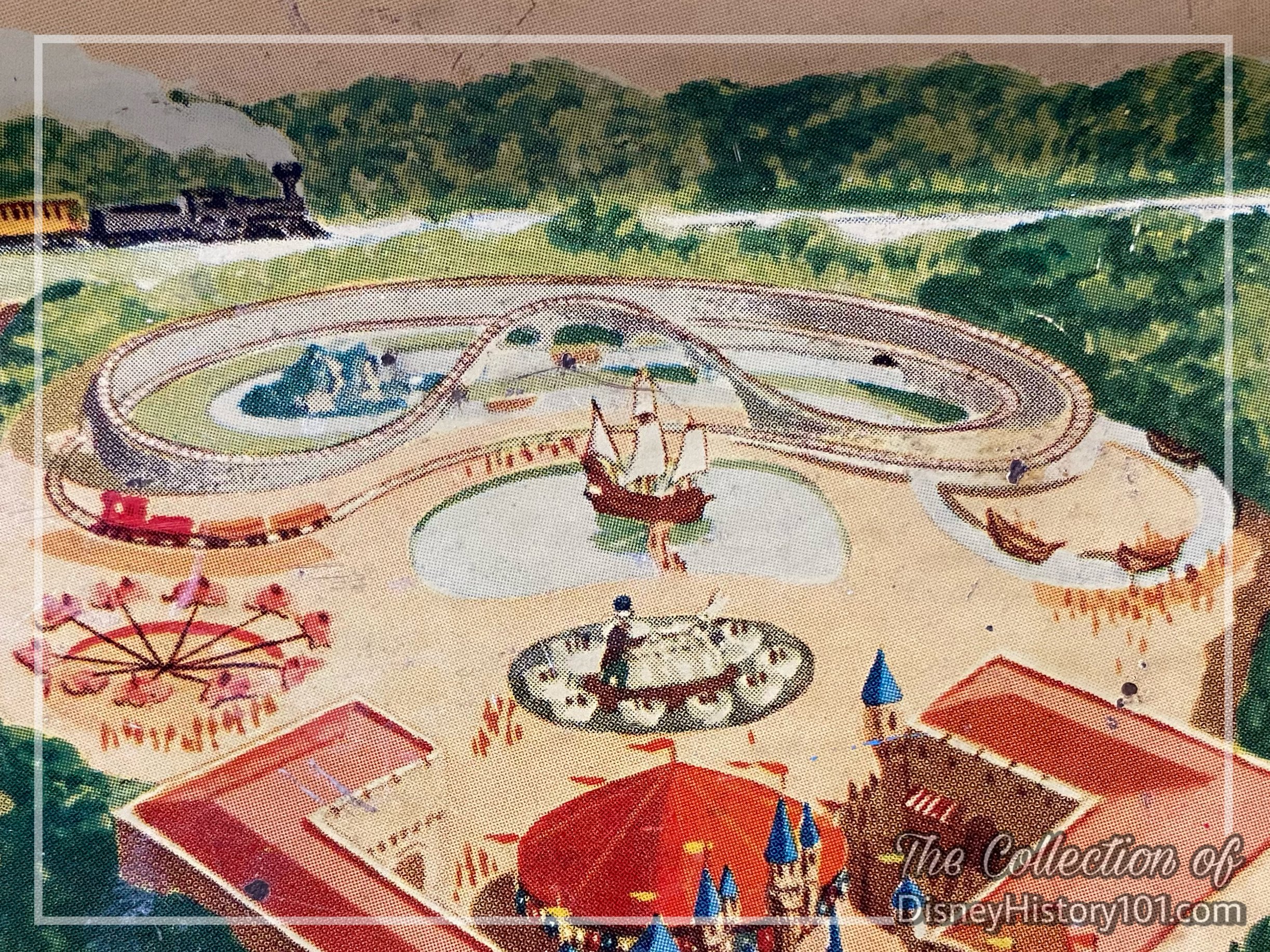
The Canal Boats as depicted on an early licensed merchandise - a c.1955 TV Tray.
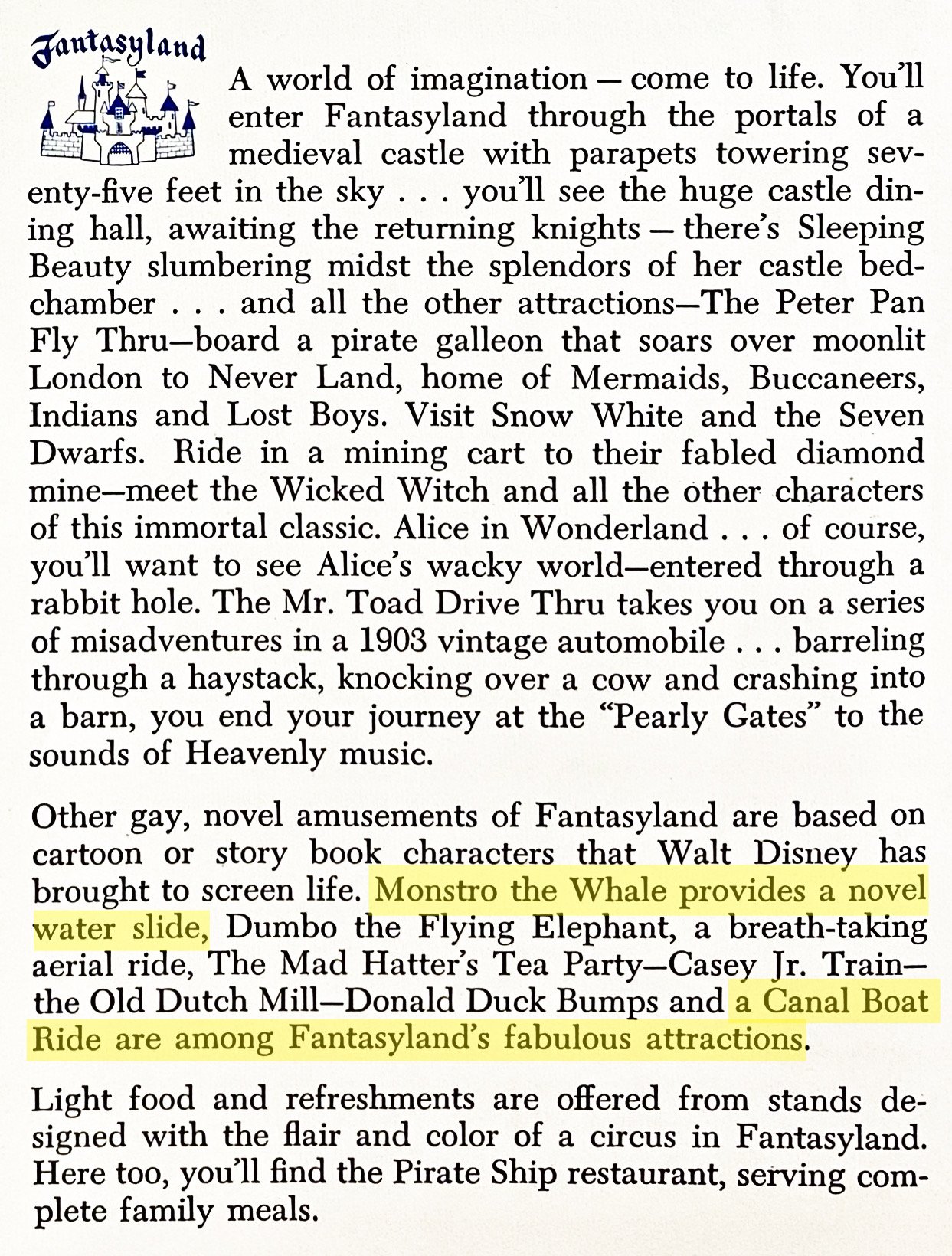
A Disneyland advertisement heralding a “mid-summer 1955” opening mentions both “Monstro the Whale” and the “Canal Boat Ride.”
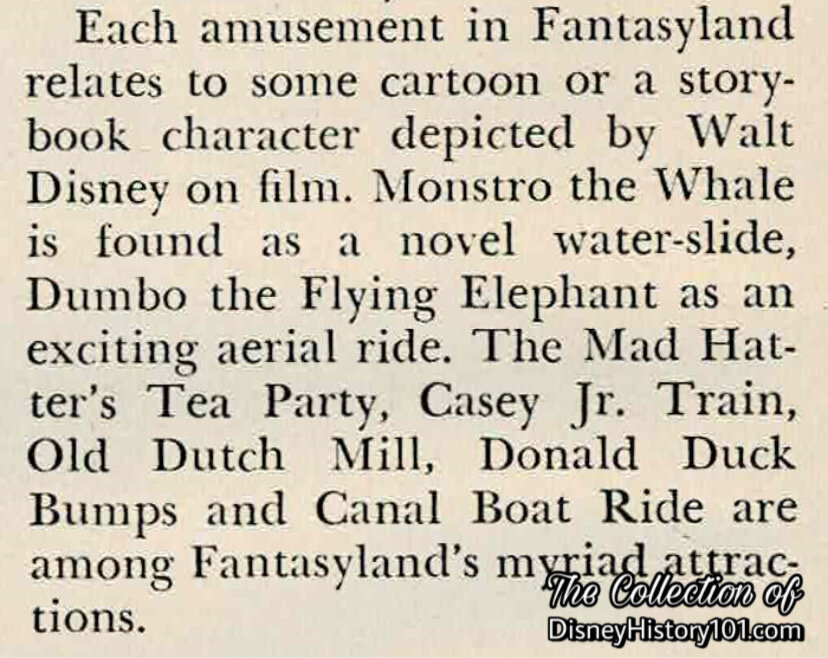
Travel - The Magazine That Roams The Globe (July, 1955) Excerpt Describes A Canal Boat Ride
As the Opening Day (of the summer of 1955) drew closer, an Orange County Register insert tantalized guests with the line : “the Canal Boats of the World will glide you on an eventful trip.”
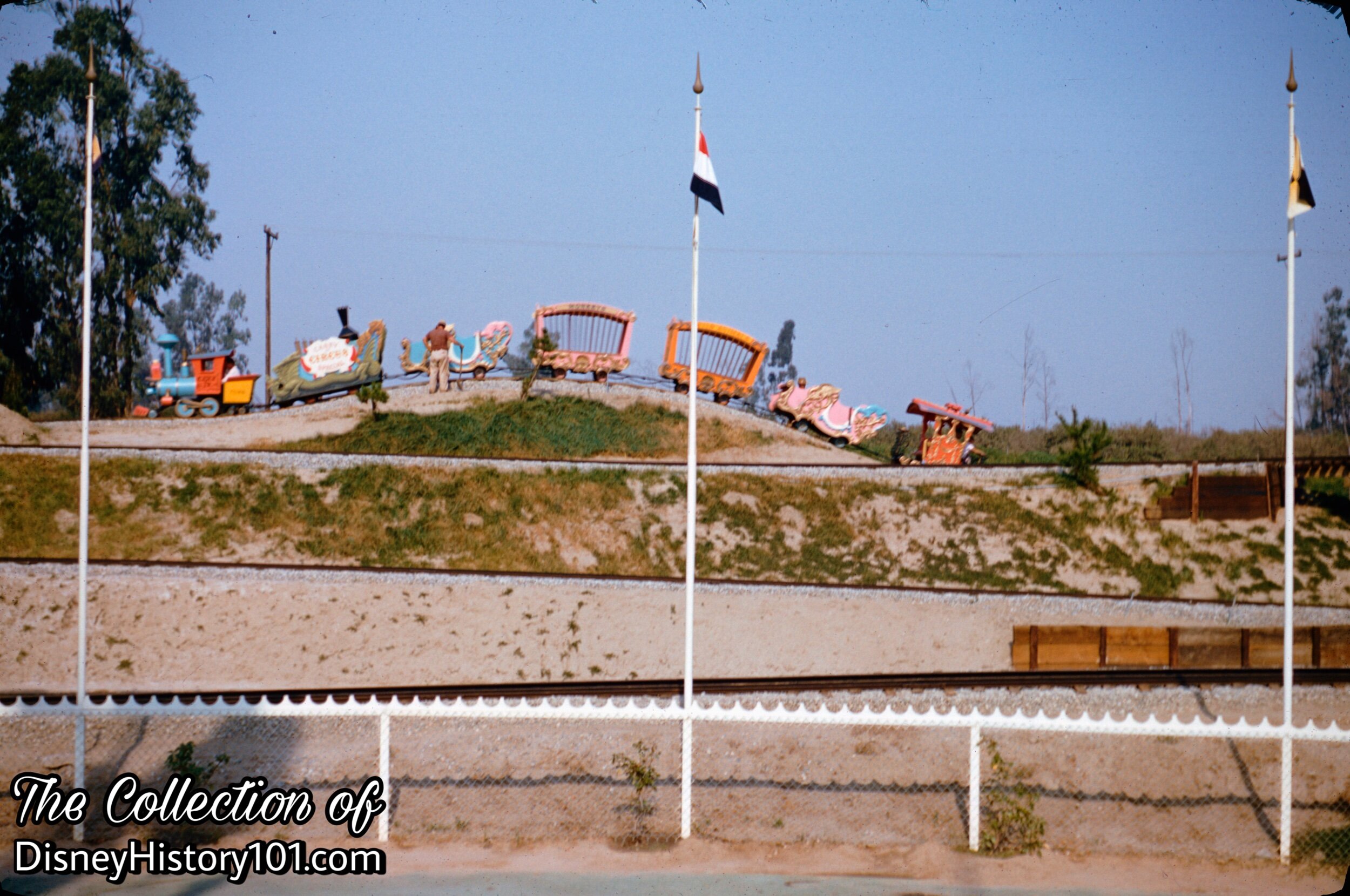
Casey Jr. Circus Train & Canals of the World Flags
This photograph (pictured above) was taken between July 14th and 17th, 1955. The Casey Jr. Circus Train was making its first test rides and the engine was having trouble making it up the steep uphill grades. (You can see this taking place in the background.)
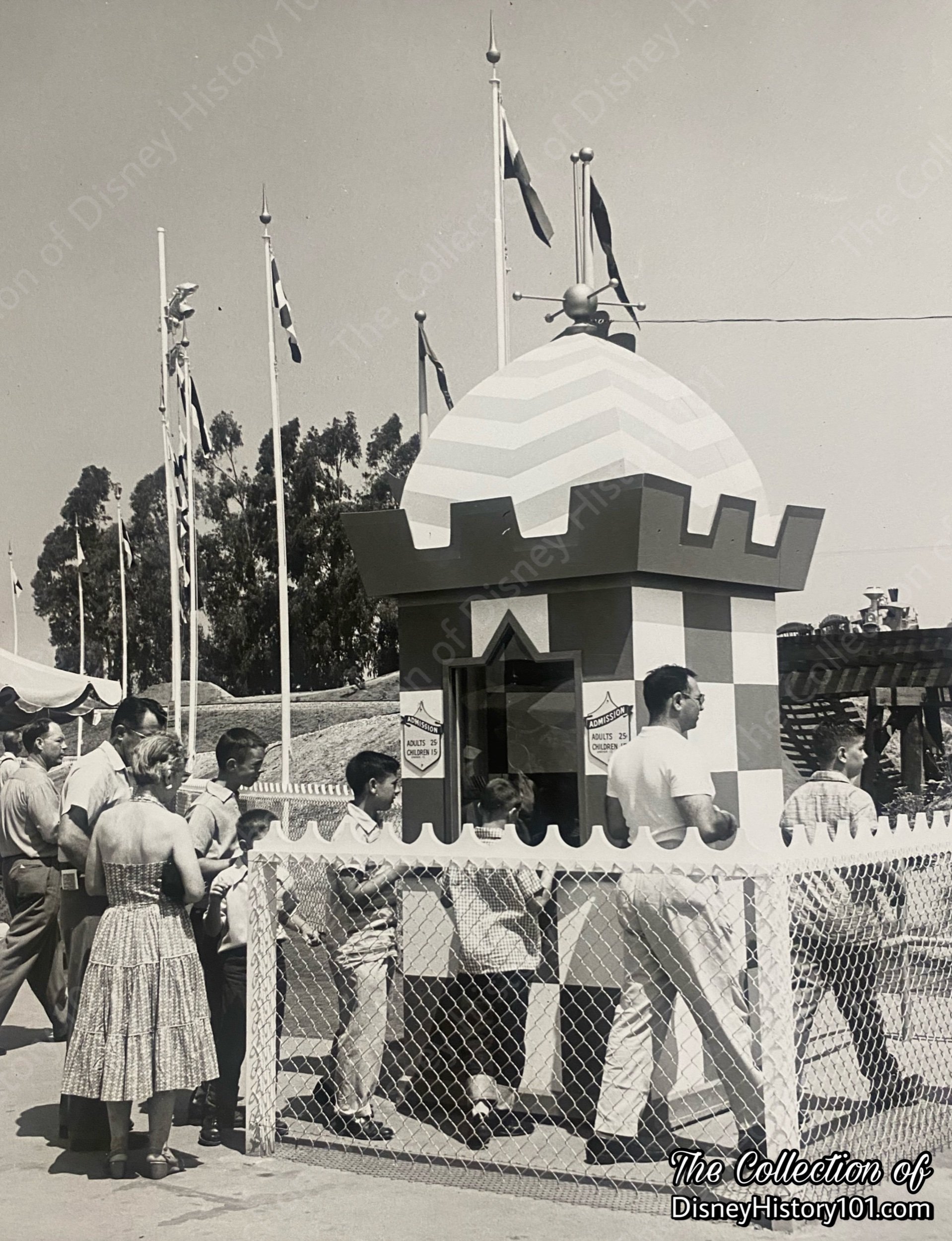
Then, finally, the simple Canal Boats of the World opened as 1 of 18 amusements and attractions to open with Disneyland during July of 1955, and “Welcome to Disneyland” maps invited guests to take a ride aboard the “Canal Boats of America, England, France.” However, despite Walt Disney’s reputation as an exceptional storyteller, it became apparent that there was a certain lack of character to the attraction.
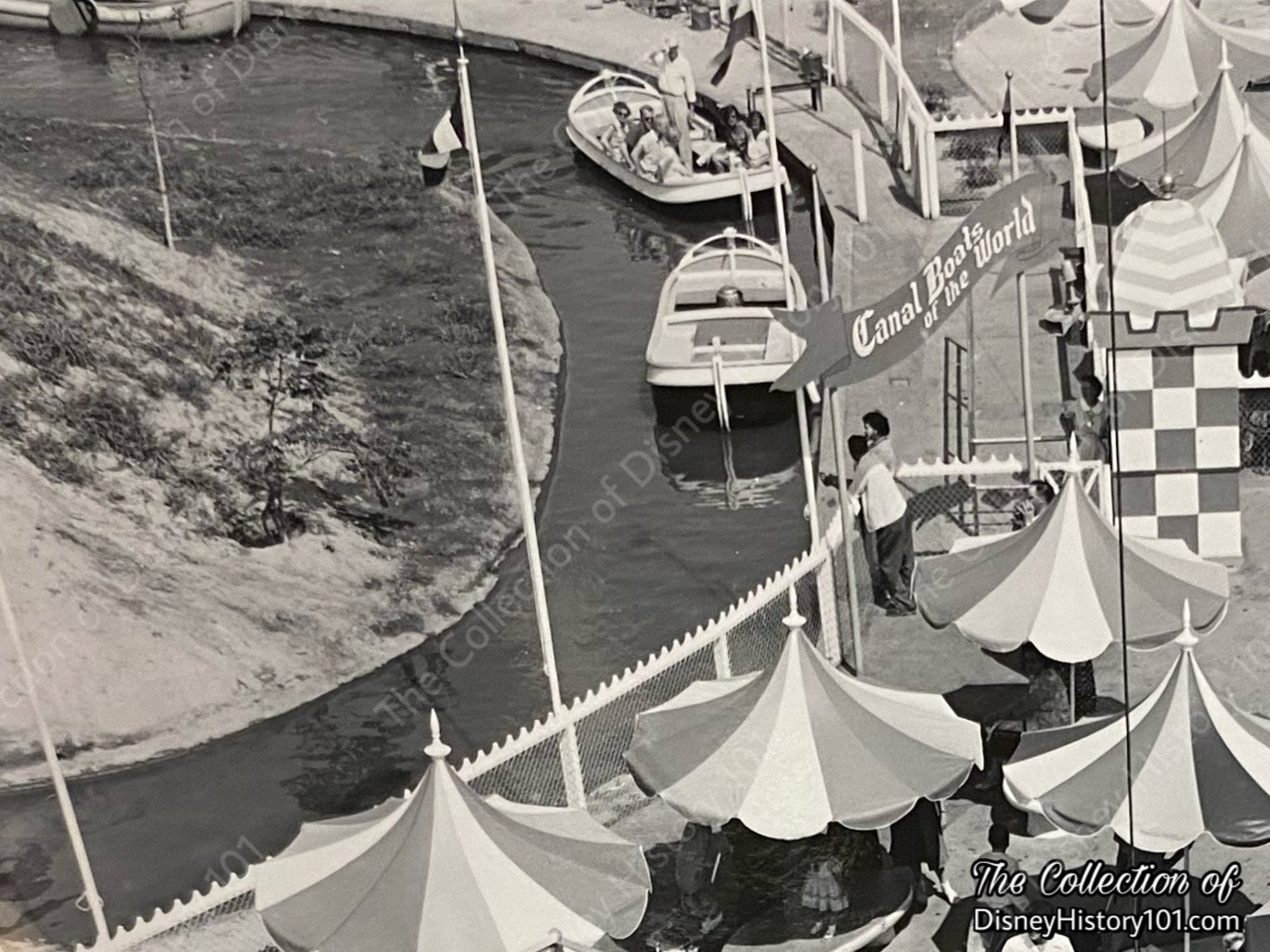
Canal Boats of the World Loading Dock
In recent decades, Disneyland attractions have officially been defined as an “individual show, ride, or exhibit designed to produce an entertaining Guest experience. Disney attractions stir the imagination, enliven the senses, and provide the participants with positive, innovative entertainment, which is the essence of the DISNEYLAND Show.” While the present incarnation of the Canal Boats epitomizes this mission statement, things weren’t always that way. Note the preceding Vintage View and the flags in the foreground representing different countries of the world. There were no miniatures. Aside from the flags, the sparse foliage was the only other attraction along the canals. The Canal Boats of the World, which would become The Storybook Land Canal Boats, was an incomplete boat ride through dirt mounds.
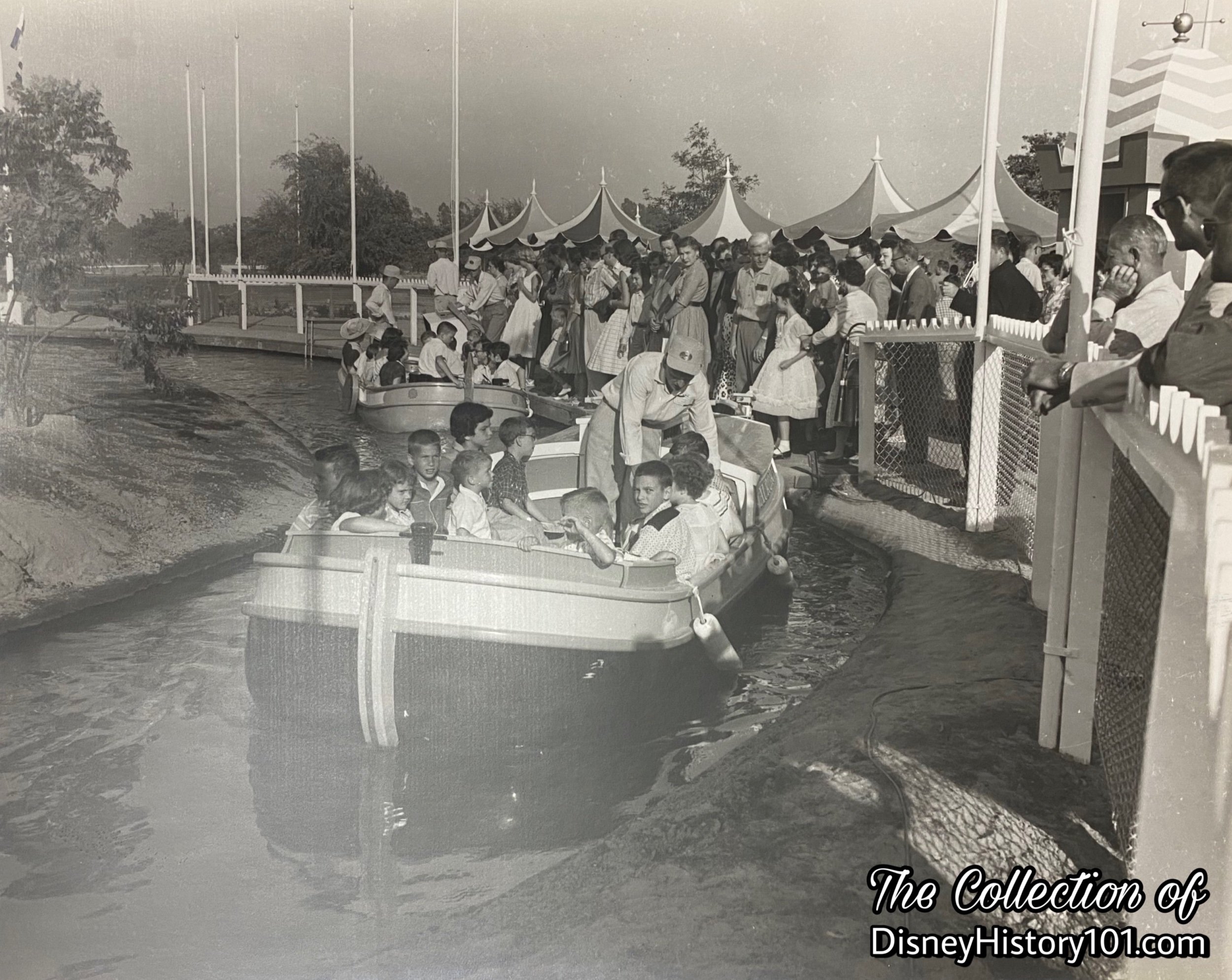
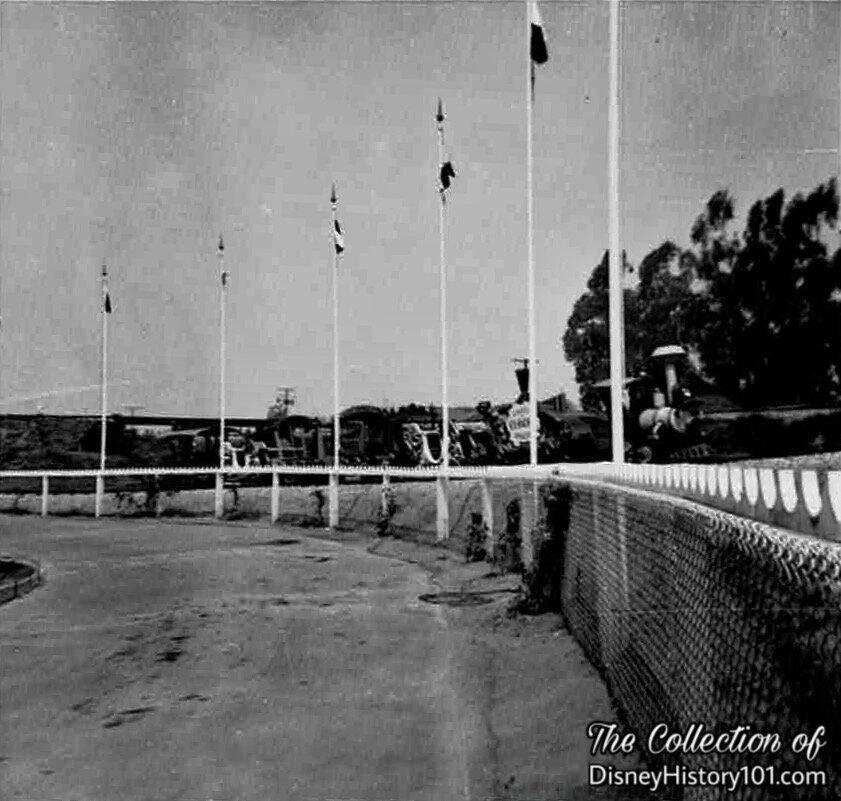
Canals of the World Flags
Flags placed along the shores identified the origin of various flora along the canal.
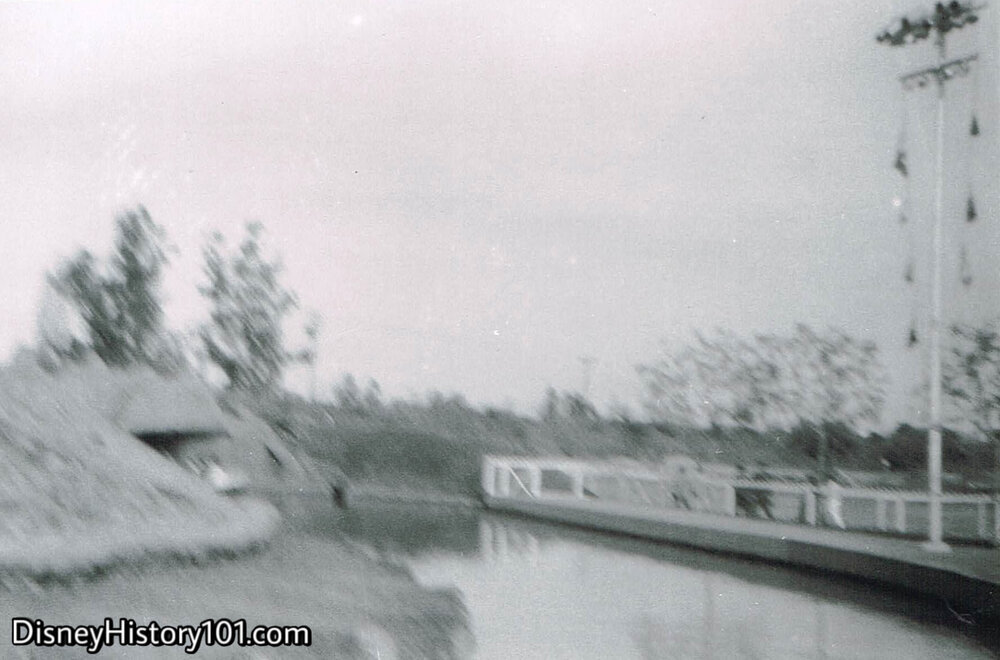
Canals of the World, (1955)
“Neverland” (the place where the canal boats are stored during non-operation today) likely had another name during this period.
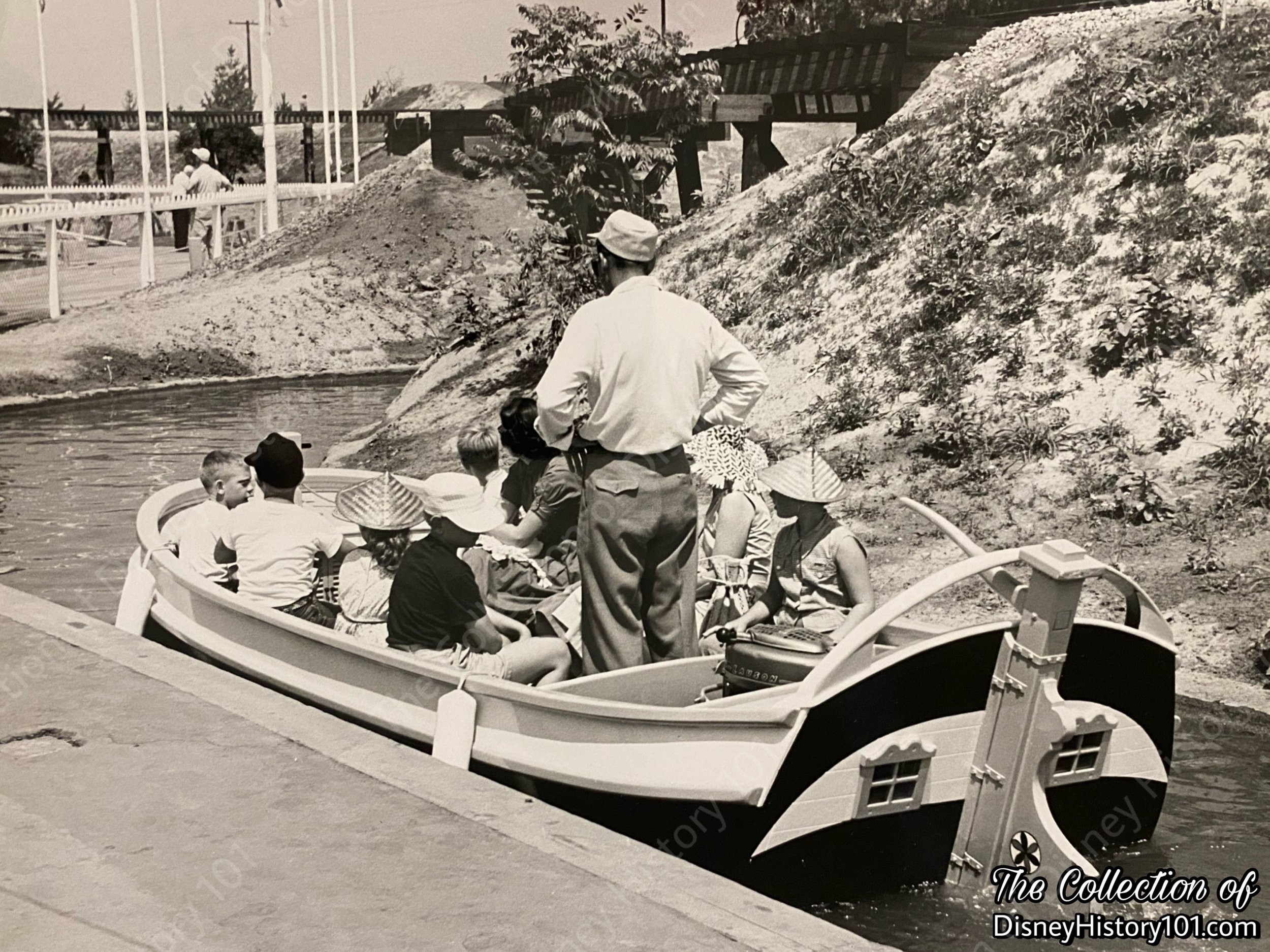
The “landscaping” was virtually nonexistent. At the Disneyland 10th anniversary birthday party Walt (for the first time) publicly recalled, “when we opened… we didn’t have enough money to finish the landscaping and I had Bill Evans go out and put Latin tags on all the weeds.” [“The Spirit of Disneyland,” page 43 ; Prepared 1984 by Walt Disney Productions.] Even more, there were no miniature sets. Owing to the lack of character or story, “the attraction was euphemistically referred to as ‘Mud banks of the World’ because there was initially virtually nothing to see,” according to “Disneyland: Then, Now, and Forever,” by Bruce Gordon and Tim O’Day. As a result, at this time, there was no spiel delivered by the all-male Pilot Hosts.
Disneylander and “55er” Jack Taylor recalled: “I started on the Canal Boats, but there was NOTHING there, only weeds. The enclosed outboard motors were always overheating, so we pulled the boats and people around by hand! We would tell the guests, One of these days there will be such and such on the canal and over there will be a mountain with bobsleds and... There were no girls on the Canal Boats and we were a kind of a Dutchman's outfit, with no set spiel...we couldn't talk over the roar of the outboards.”
Considering all this, it seems the attraction may have been pretty easy to forget. Still, of all the Disneyland Opening Day memories, Jack Lindquist (who was present as a Guest) remembered the Canal Boats of the World most. “We took my oldest son, who at the time was five, and we finally got him on one attraction - it was the Canal Boats. The boat took off and it never came back. About 55 minutes later his boat came back being pulled by six people in the water. That was the only attraction he got on that day, but it was still a tremendous thrill at Disneyland.” On its first day of operation, the attraction would experience a “Show Failure” situation and go “101.”
Bob Penfield recalled: “Storybookland was not completed...just a canal. The boats had outboard motors in the enclosed engine room. The motors would overheat and burn up...and they were always running out of gas.”
“55er” Cora Lee Sargent recalled an even worse situation, some “Canal Boat fellas would bring Vodka in their Thermos bottles!”
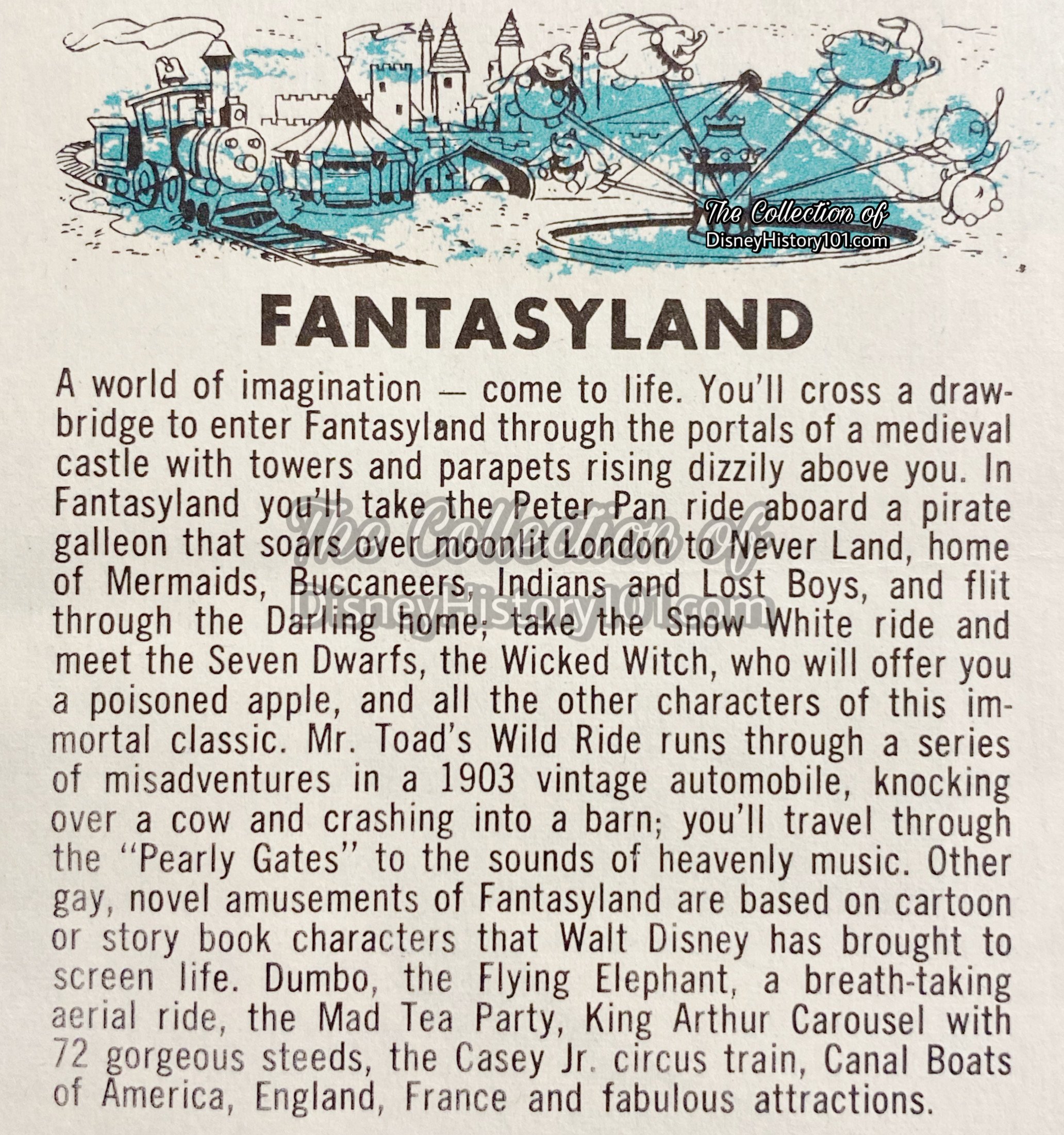
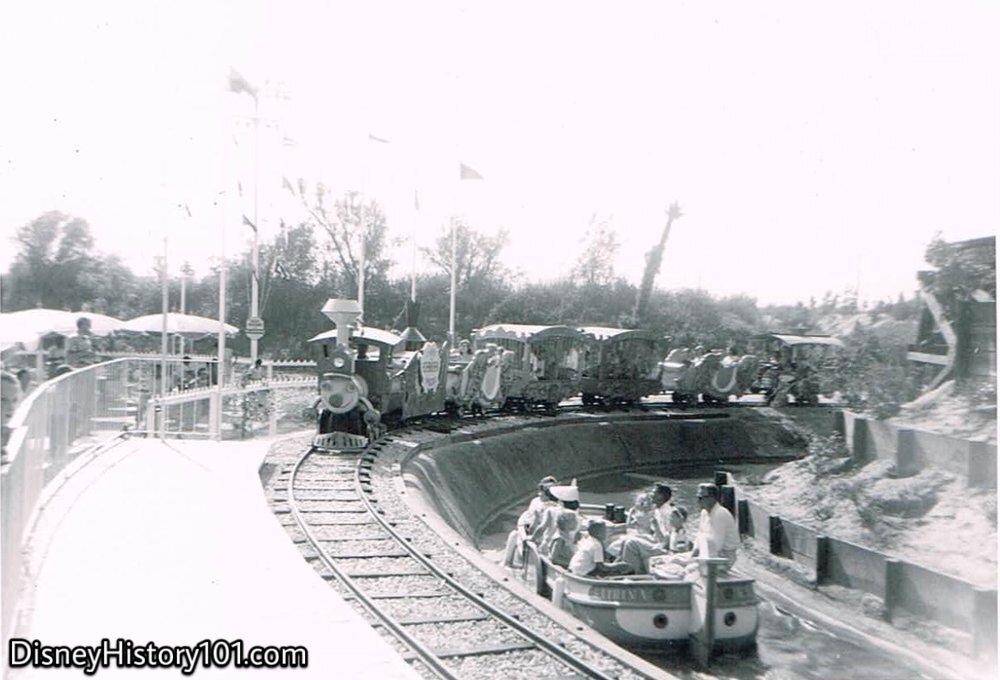
Canal Boat of the World, (August, 1955)
The attraction closed on September 16, 1955. Though the Canal Boats of the World was a short-lived, attraction, Bob Dorris’ quaint canal boats themselves would outlive the original theme and become part of Fantasyland’s most timeless attractions!
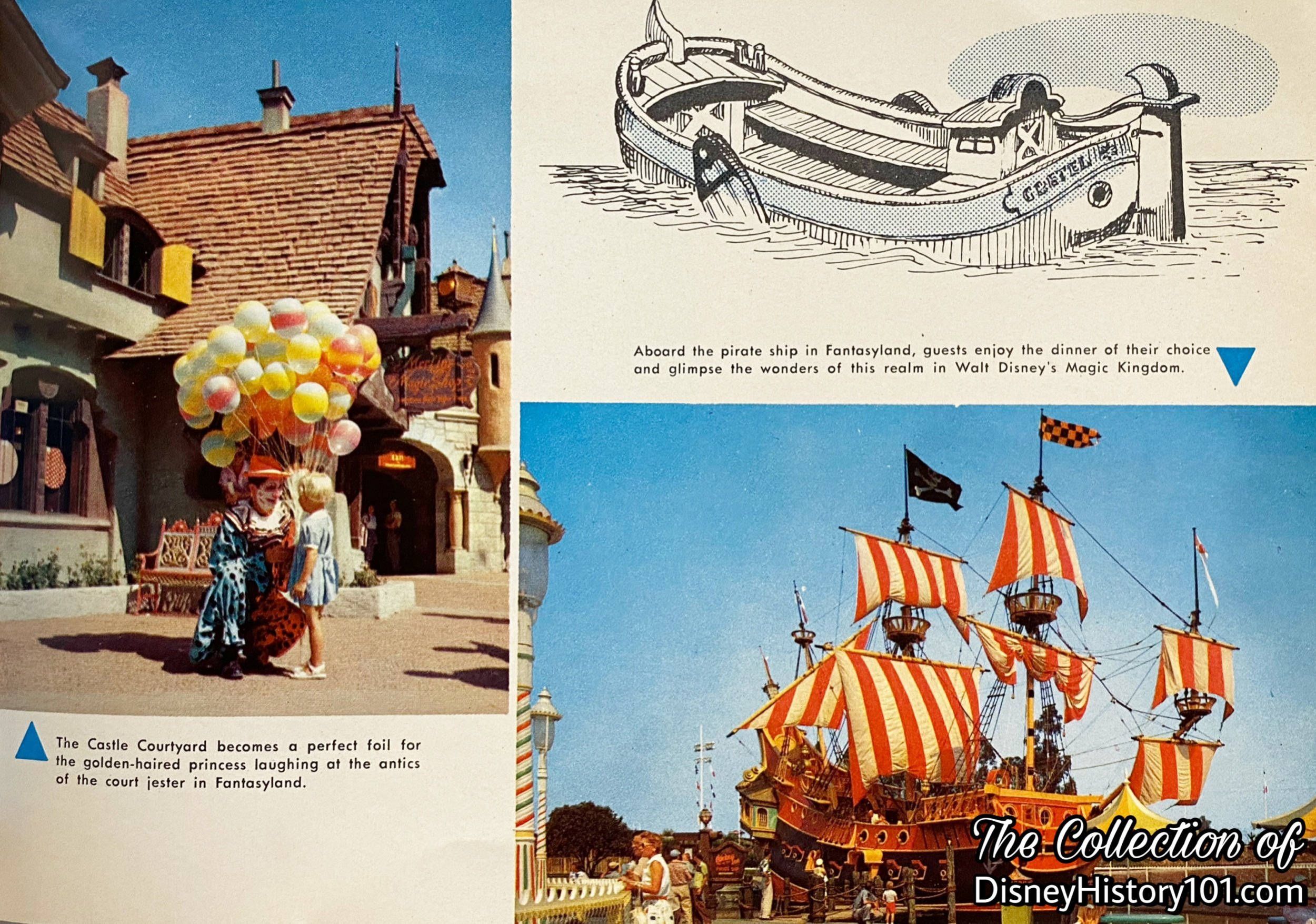
Michael Harvey's illustration of a Canal Boat in the "Picture Souvenir Book of Disneyland in Natural Color," ©1955 Walt Disney Productions Excerpt.
While artwork of the canal boat appeared in the Picture Souvenir Book of Disneyland (published for 1955), it was not described (but only mentioned on the Key Map of Disneyland, below), alluding to the fact that there was a little more story to tell regarding the charming little boats. In fact, by 1956 Walt Disney Productions Character Merchandising Division was considering producing a toy inspired by the Canal Boats.
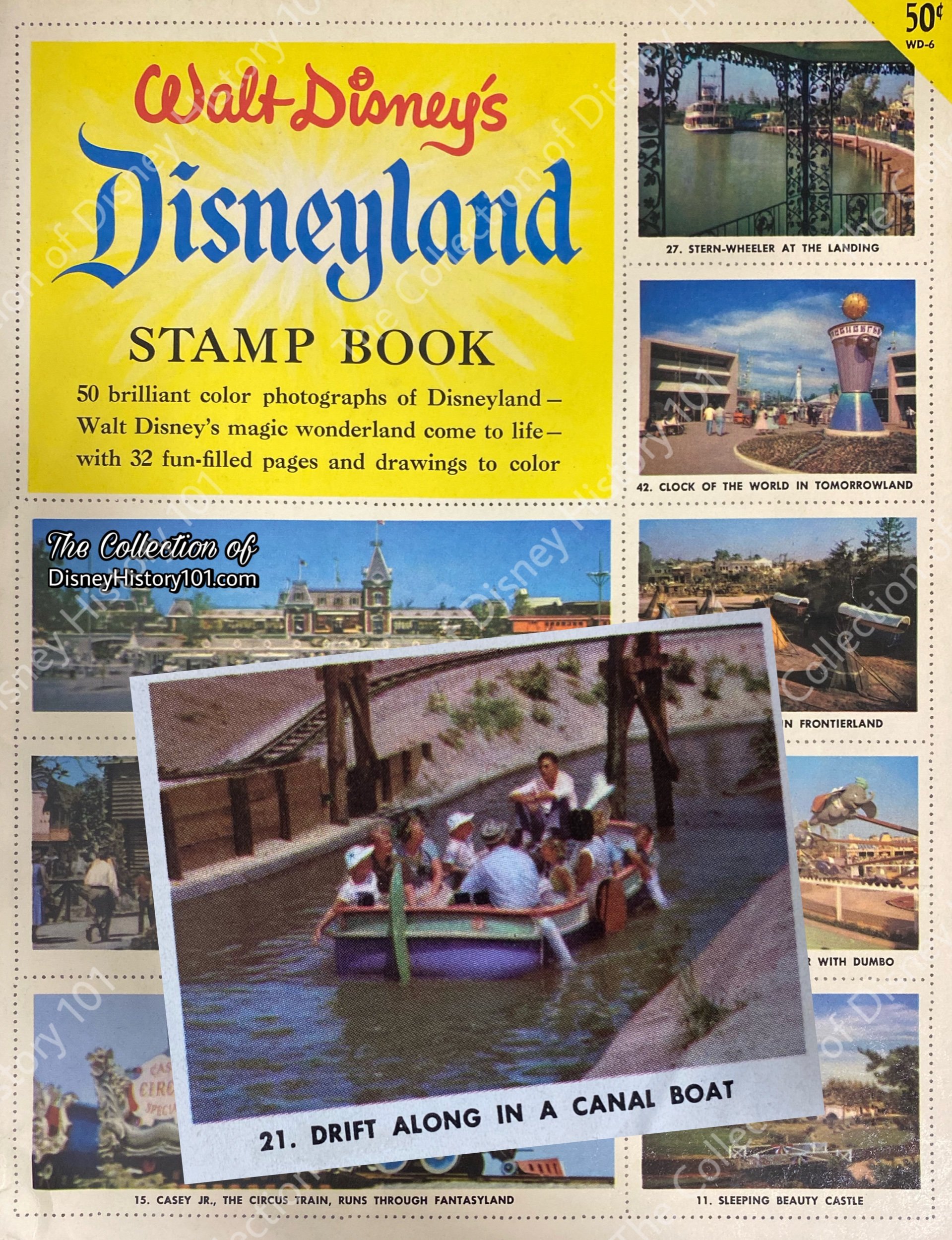
A Canal Boat in "Walt Disney's Disneyland Stampbook."

Disneyland Souvenir Book in Natural Color, c.1955.
By about September of 1955, C.S. Olson (of Strombeck-Becker Mfg. Co.) was interested in designing and producing plastic model kits or fully assembled plastic toy forms of the small canal boats. One letter (addressed to Philip Sammeth of Walt Disney Productions’ Character Merchandise Division) even proposed the possibility of toys measuring “about a 6” size for wading pool and bath tub use for little tots.”
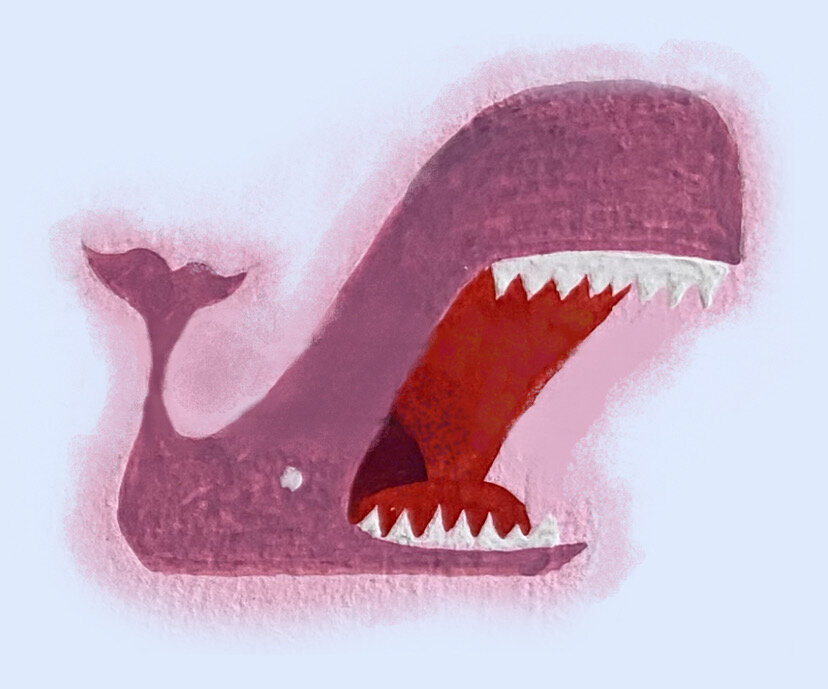


(Friday, June 15, 1956 * - Present)
*Press Opening Monday, June 18, 1956.
Walt Disney had “promised that his ‘Disneyland Story’ will never be completed,” according to “Walt Disney’s Guide to Disneyland” published 1956. You may recall hearing how Walt Disney, on the very eve of Disneyland’s first day of operation, promised innovation, that “Disneyland will never be completed. It will continue to grow, to add new things, as long as there is imagination left in the world.” Further, Walt also said that “Disneyland is like a piece of clay : if there is something I don’t like, I’m not stuck with it. I can reshape and revamp.” On these notes, we’ve “got a whale of a tale to tell ya!”
“The Story of Storybook Land”
As far back as 1955, Disneyland visitors were intended to “ascend the interior of Monstro the Whale to enjoy a breath-taking slide down his tongue into a pond.” In addition to that concept, at least one “Bird’s Eye View of Fantasyland” designed by WED Enterprises for Disneyland, Inc. included a “Mother Goose Fun Thru” attraction full of storybook character. However, there just one fantastic $200,000 refurbishment, of a $2,000,000 expansion that would bring these elements together into one show at Disneyland. These developments to the Canal Boats of the World would quickly prove the truth of Walt Disney’s promise that Disneyland would continue to grow!
At a meeting of the Disneyland Merchant's Association (held January 25, 1956), the momentous announcement was made regarding Fantasyland developement: “We are making several new developments on this ride at a cost of approximately $125,000.00. This ride will be exciting and portray a ‘story book’ land, with villages at about 1/2 scale and crazy quilt landscape idea. This should be completed by April.”
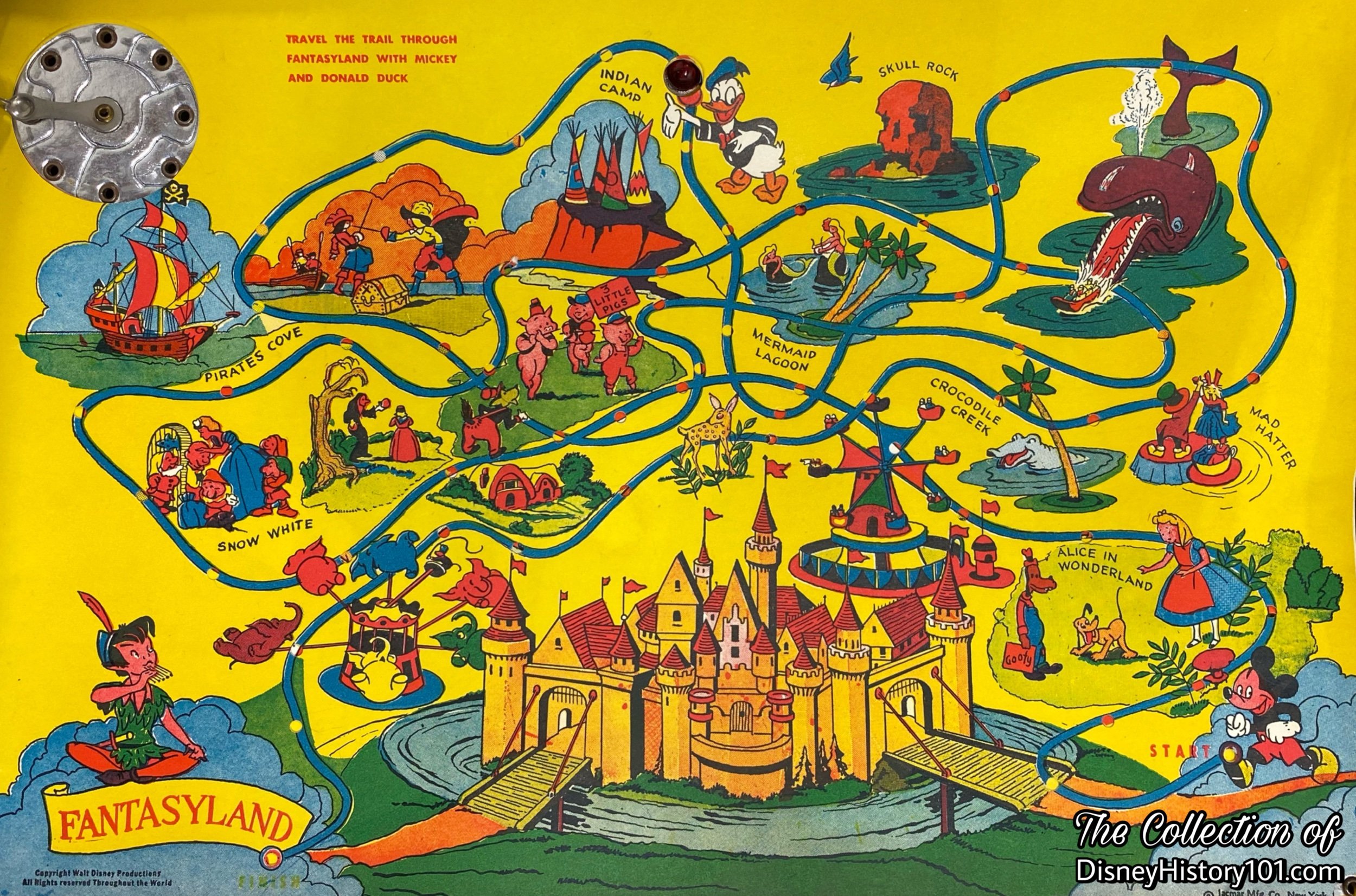
A Canal Boat was featured in a Disneyland game.
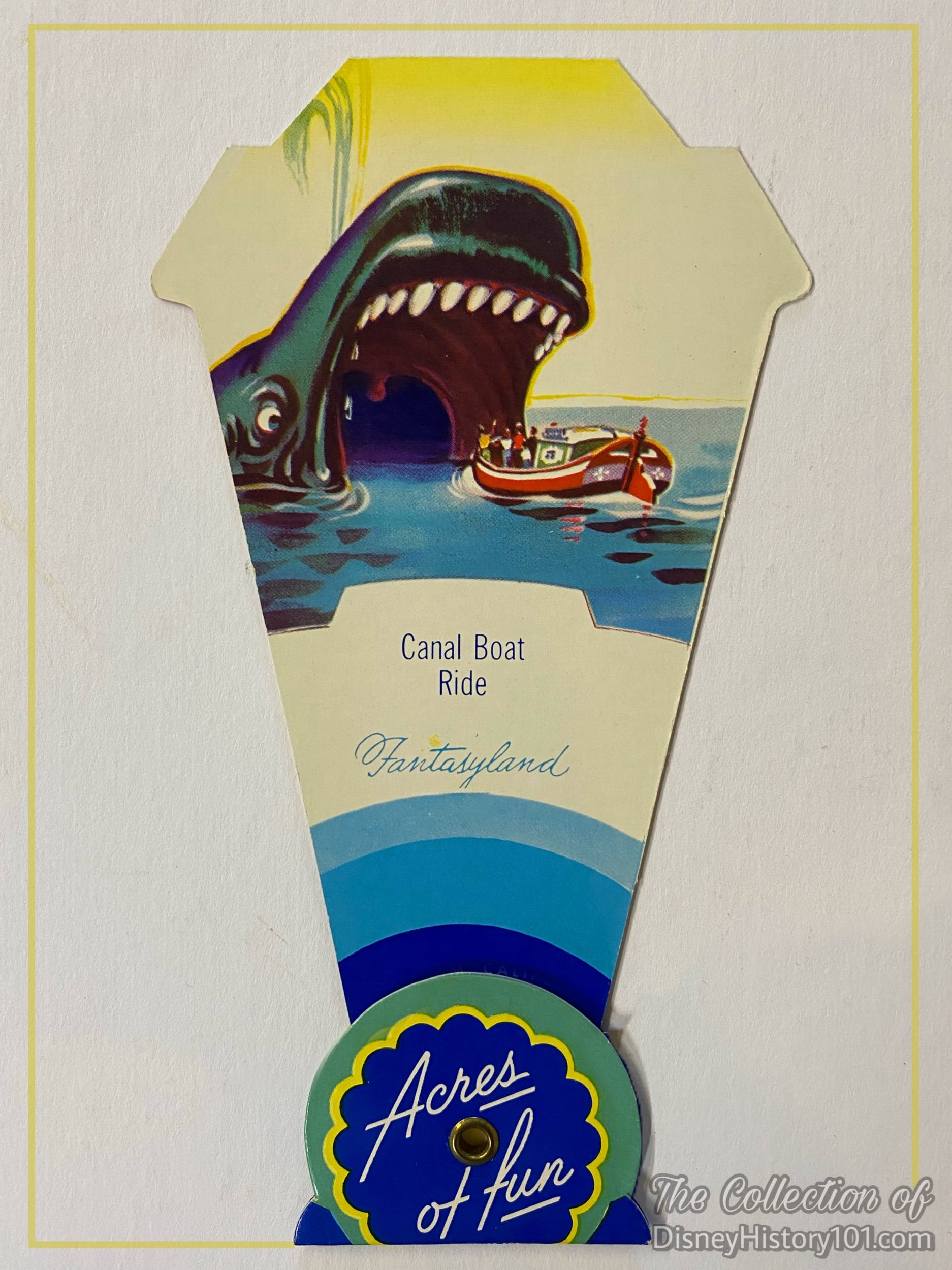
Acres of Fun Disneyland souvenir fan, c.1955-1956.
“A Kingdom Within the Magic Kingdom”
Now, the quaint Dutch, English, and French-style Canal Boats vehicles were simply too good to dispose of, so the attraction would be recycled (with the view that the original attraction theme would be temporary). In the meantime, Walt had taken some trips abroad (visiting and researching amusement centers). Harriet Burns once related the results of these excursions in an interview this way : "Walt came in and he said he had seen miniature cities, both in Canada and in England, and he was most impressed with the one in England. He recalled how charming it was, and how kids and families could walk along the roads and between the buildings. It really intrigued him.” But more than intriguing, these things would inspire Walt! The Disneyland News Vol.1 ; No.8 (published February 10, 1956) described an extensive remodel that would produce “a truly international ride.” It would give “canal boat passengers a look at model-sized representations of cities in Holland, France, Belgium, England, Switzerland, and Italy.”
However, the concept soon changed to feature “miniature three-dimensional scenes of the world’s great folk tales.” Some of these folk tales were once adapted (by that “modern day Aesop,” Walt Disney and Company) into feature length animated films (like Pinocchio and Snow White and the Seven Dwarfs), while others became the subject of animated short or “package” films (like The Old Mill, Lullaby Land, and the Wind In The Willows). Verifying this was an editorial article in the pages of “The Disneyland News” (published for March 10, 1956) entitled “A Promise Kept,” which featured artwork of Geppetto’s Wood Carving Shop. In retrospect, this was not too surprising considering that Walt later divulged: “To translate the world’s great fairy tales , thrilling legends, stirring folk tales into visual theatrical presentations and to get back warm response of audiences in many lands has been for me an experience and a life time of great value.”
Present Walt Disney Imagineers are often reminded that “you can dream, create, design, and build the most wonderful place in the world…but it takes people to make the dream a reality.” The creators of the Storybook Land Canal Boat’s so-called “kingdom within a kingdom” are a wonderful example of this philosophy! Walt had “called on all the geniuses available at his studio to re-create - in miniature - three dimensional scenes from…stories” of Disney animated features according to “Walt Disney’s Guide to Disneyland” published 1956. A number of Walt Disney Studio artists were assigned to work on the developments, including Art Director Stan Jolley (who had gone to work for Walt in 1954, and officially joined WED Enterprises in September of 1955). Ken Anderson (who had designed twenty-four scenes for Walt Disney’s prior miniature “Disneylandia” project) is credited for many of the designs, but Ken also worked closely with both Walt Peregoy and Frank Armitage to create many of the storybook settings. There was also, Wathel Rogers (an animator and miniaturist) who had a talent for the technical - both mechanical and electrical. Fred Joerger (a Union model maker), was hired c.1953 to craft the “Barber Shop Quartet” show for “Project Little Man” of “Walt Disney’s Disneyland.” He had subsequently crafted models for Main Street, and was well-known for his love for making model ships, and so Fred was tasked with the construction of a number of the original fiberglas-coated, plywood buildings. Last but certainly not least was Harriet Burns (with a background in artistic display). Harriet had only recently designed and built the Mickey Mouse Club “Mouse Clubhouse” for the television production) and was the first woman hired by WDI in a non-office-related capacity to subsequently create prototypes for nearly every Disneyland project. She was assigned to the project, creating many of the miniature (one-inch-to-one-foot scale) details of the Lilliputian buildings (like the hand-carved toys featured in the windows of Gepetto’s Shop)! Harriet fabricated six-inch doors that really worked, allowing the maintenance workers to open them in order to change lightbulbs. In one interview, Harriet later recollected soldering copper gutters, locks, and pulls, as well as the fanciful stained glass windows of the miniature church. Many of these artists and craftspeople worked together side-by-side at the inside the Walt Disney Studio Model Shop, and Harriet later reflected (on her team), “that combination was good for all of us. We helped each other. We did everything from the design (in 3-D, in a model) to the final production.” And so this team of real people would create a world of make-believe.

An original French Village Building (Once Situated Near Stone Bridge to Castle), as seen at a prior Van Eaton Galleries' Auction Exhibition
One of the first tasks performed was to determine what the scale of the structures would be. The decision was made of “one inch to one foot,” according to “Walt Disney Disneyland,” page 42, printed by Officine Grafiche Arnoldo Mondadori - Verona; first published 1964. Also, where would the new scenes (or, “various Disney stories”) be placed? Stan Jolley, Fred Joerger, and Wathel Rogers visited Disneyland, placed cut-outs of structures in various locations along the canal, and then photographed themselves standing next to the scenes in order to get an idea of what the one-tenth scale would look like.
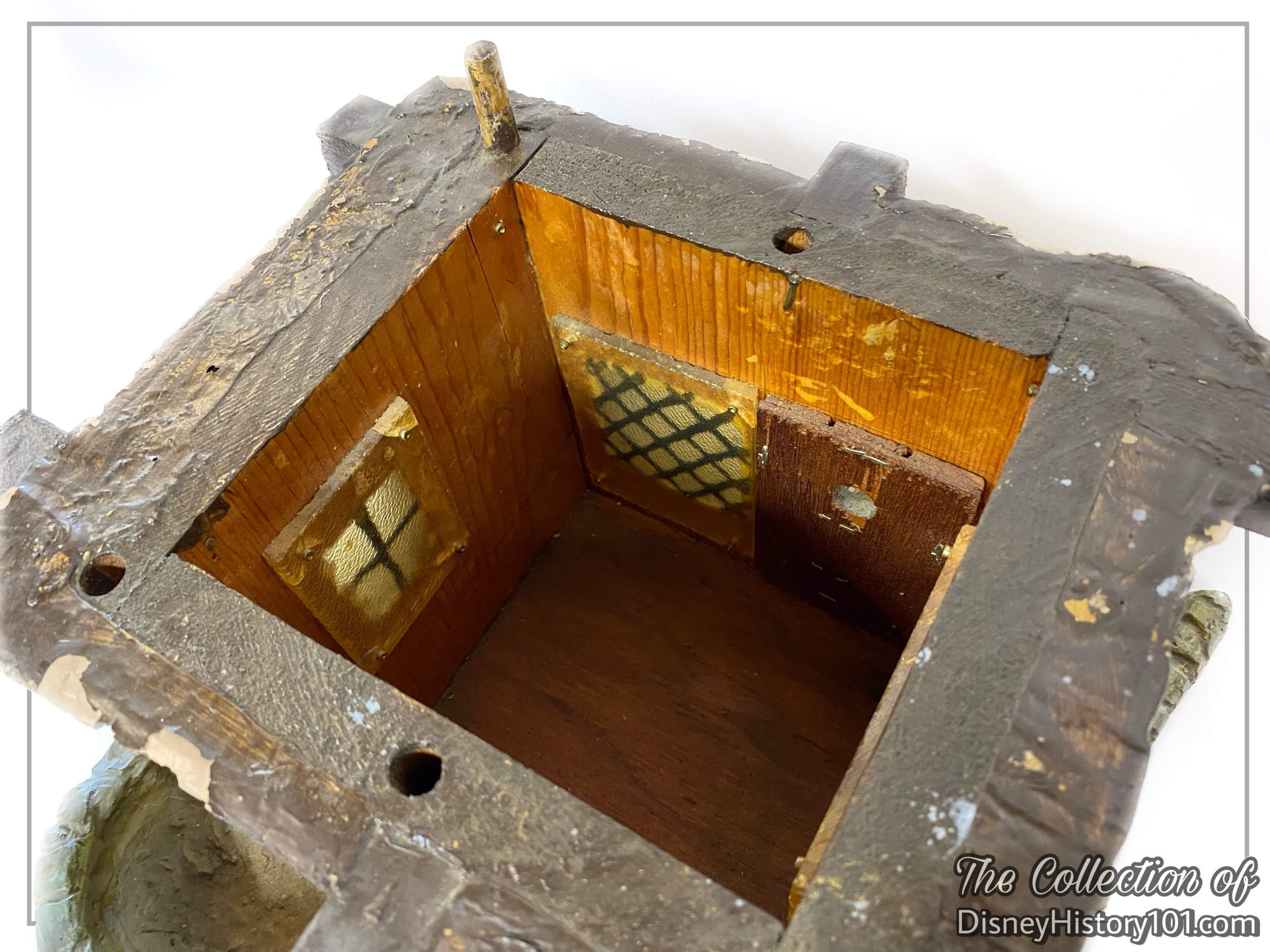
An original French Village Building (Once Situated Near Stone Bridge to Castle), as seen at a prior Van Eaton Galleries' Auction Exhibition
Under the direction of Fred Joerger (at the Walt Disney Studio Model Shop), many of the original (one-inch-to-one-foot scale) structures were made of marine plywood or redwood, and then coated with fiberglass. You may recall seeing images of Fred putting some touches on Geppetto’s Workshop while Walt inspects the Cottage of the Seven Dwarfs. “Tile roofs and brick chimneys were molded of fiberglass and joined to the houses. Metal flashings were used for foundations, to resist rot. Each little house and shop had openings so that air could circulate through and prevent mildew. There were hundreds of tests to find the right transparent dye for tiny plastic “stained-glass” windows. Tiny lead doorknobs were installed on tiny doors that opened and closed on minute hinges. Little thatched roofs were covered with plastic, so the birds couldn’t carry them off,” according to Mickey Mouse Club Magazine, (published December, 1957). “They made lead hinges by hand, so that six-inch-high doors would actually open for electricians to change light bulbs. One c.1957 Disneyland Holiday magazine would later describe the “majestically conceived lighting effects, hidden from daytime view, cast fanciful illuminations upon the detailed miniature buildings at nighttime.” Dozens of tiny toys line the window of Geppetto’s shop. Minute drain pipes actually function on tile, redwood and plywood roofs,” according to “Walt Disney Disneyland,” page 42, printed by Officine Grafiche Arnoldo Mondadori - Verona; first published 1964. The authenticity of all these little “Disney” details was important to Walt. Ron Dominguez recalled that “the detail that Walt put into Disneyland is just unbelievable. I remember one time, that he was taking a tour with the designers and there was this little building and it had some stained glass in it. Somebody said, ‘Well, Walt, we don’t have to put stained glass in there. It could be just colored glass, because nobody could tell the difference.’ He says, ‘I would. I would know the difference.’” [“Homecoming - Destination Disneyland” Golden Anniversary Collector’s Edition by Carlene Thie, 2005]
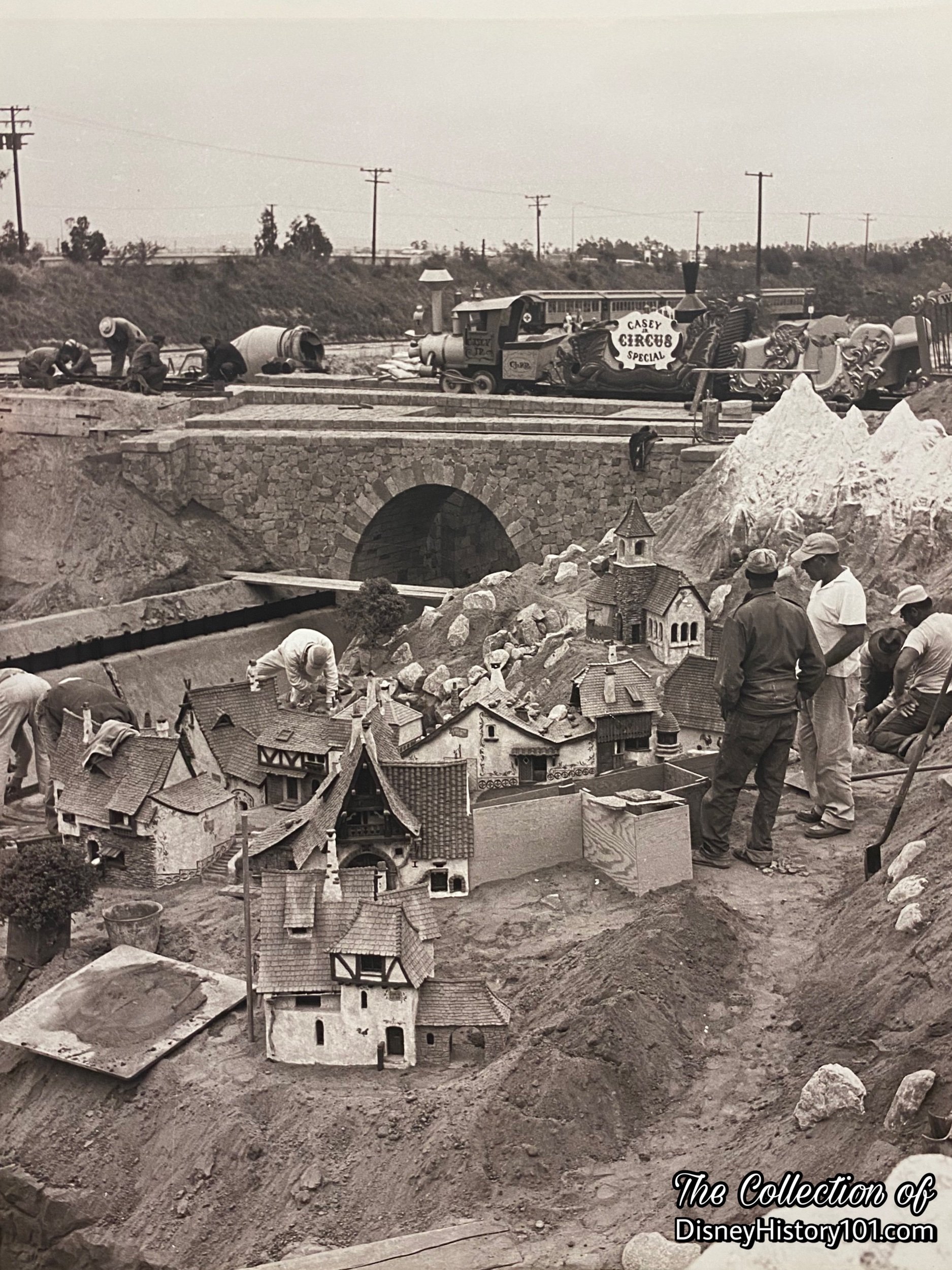
Construction of the Pinocchio Village.
While the buildings were constructed off-site (for a sum of six months), the ground was graded, as would be done on a full-scale construction site. Then Walt oversaw the placement of everything. Bob Thomas (Hollywood reporter of Associated Press) in the pages of “The Disneyland News” (Vol. 1, No. 12 ; June of 1956) divulged what he saw on a recent sneak preview of Storybook Land in development. He observed how Walt “climbed up a small hill and viewed what the canal boats will see. Craftsmen were meticulously creating miniature villages from Pinocchio, Alice in Wonderland, Three Little Pigs, Cinderella and other stories. ‘Isn’t that Dutch Village too low to see from the boat?’ Disney called to the supervisor. The man adjusted the platform to simulate the boat level. Disney sat on it and assured himself the village was high enough. ‘But raise that bridge or it’ll be too much under the water,’ he added. He was off again, tramping past a peak on which Cinderella’s Castle will rest.”
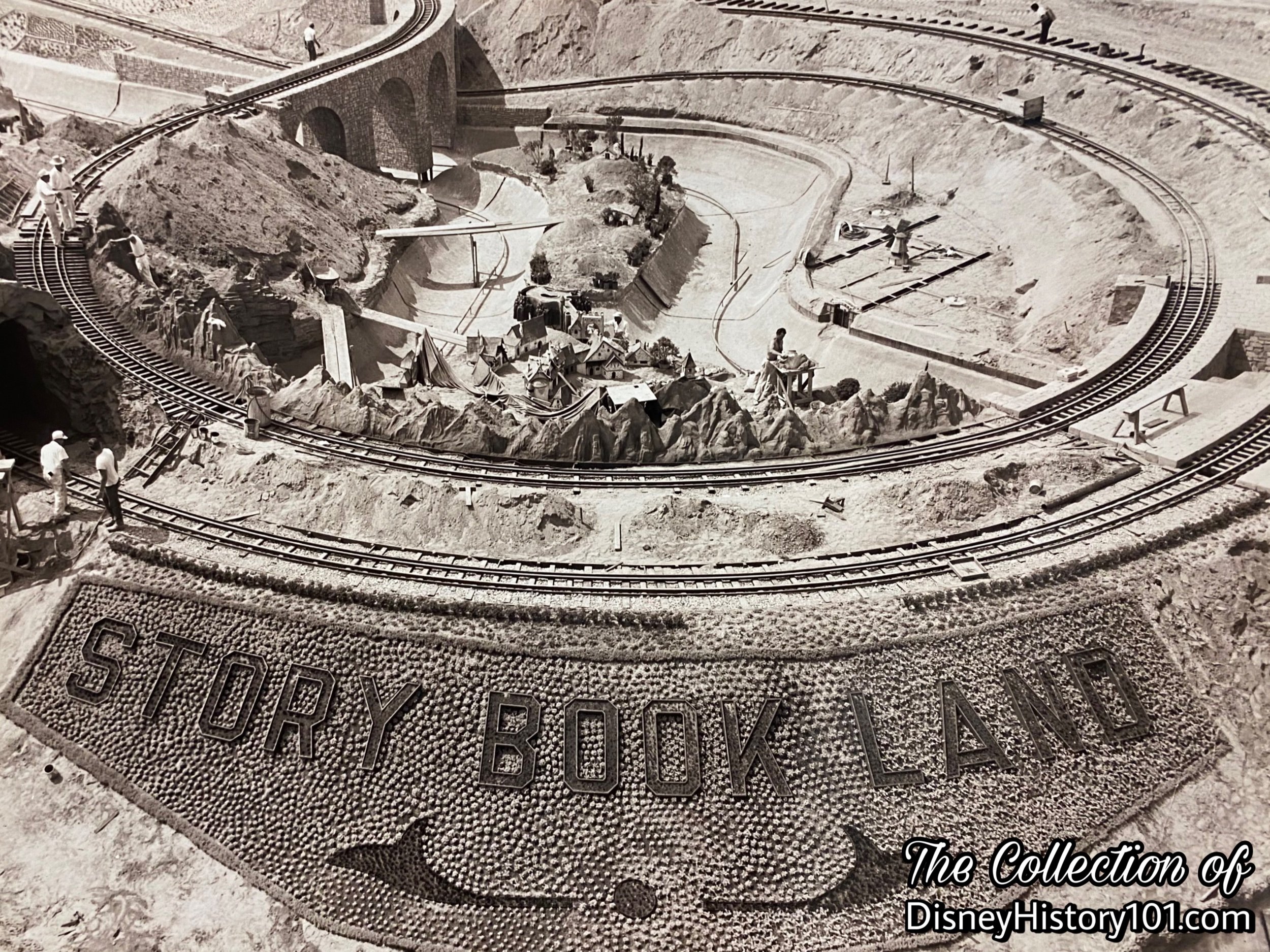
Story Book Land Construction.
According to Mickey Mouse Club Magazine, (published December, 1957) : “When the last buildings were finished and painted, the setting was ready for them at Disneyland - miniature trees, miniature shrubs, miniature mountains, and, appropriately, enough, streets of tiny, hand-laid cobblestones.”
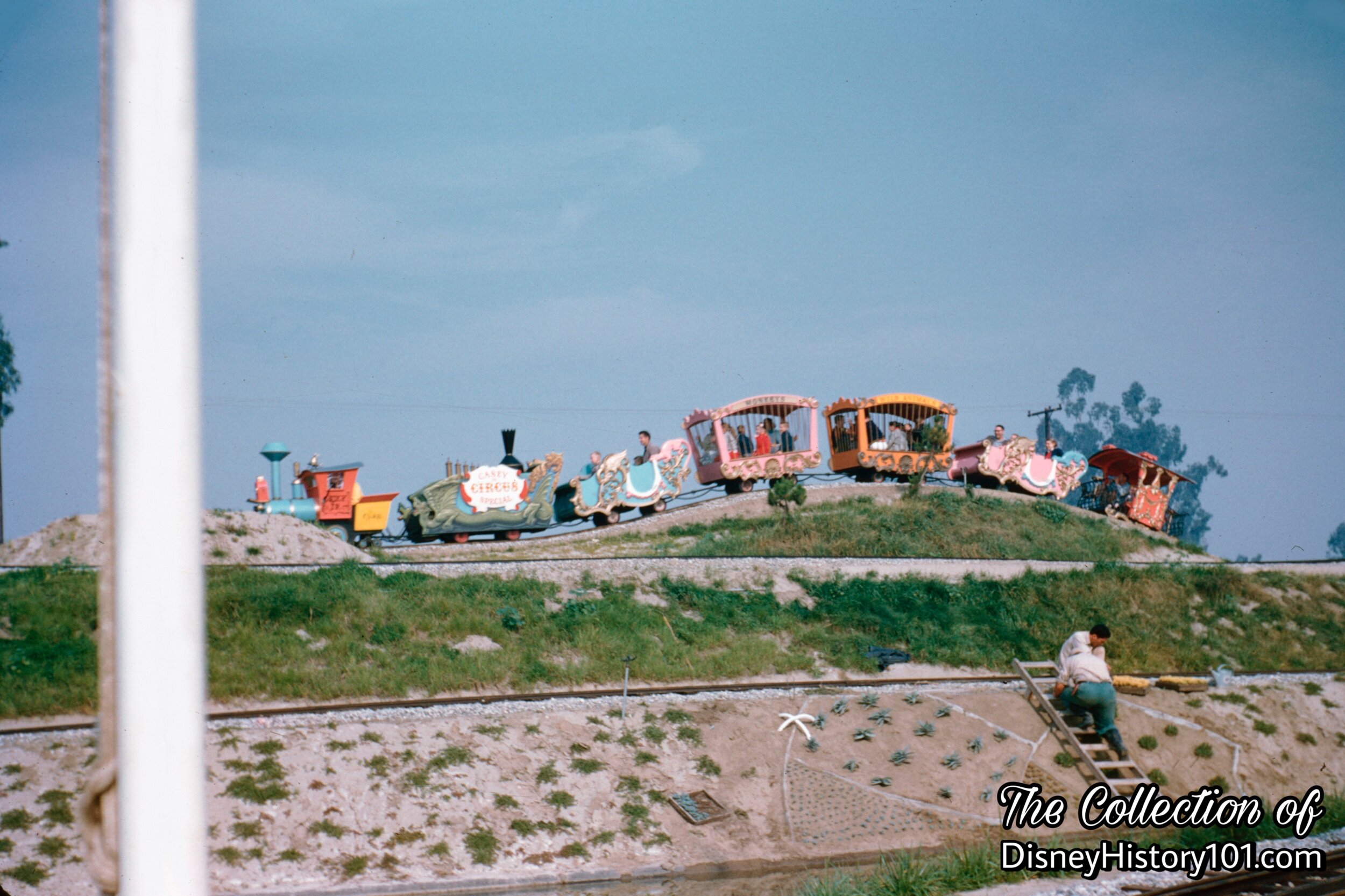
A Recently “Sewn” Lullabyland Patchwork Quilt. Many of the stitches haven't even been placed.
On the subject of trimming and scale, Ray Miller once said, “we have a show going on all the time and we have to make everything fit.”
Rocks were moved. “55er” and Landscaper Joe Delphin remembered: “The most exciting thing was the day that we sank a canal boat. We had too big a boulder in it and the boat sank... and went down like we had been torpedoed. I almost froze trying to get the boat out before the big bosses came!”
All of the surrounding plants would also need to fall within the appropriate proportion to the scale being used in Storybook Land. As to the scale of the Storybookland area, “Disneyland Dictionary” and “Disneyland Particulars” divulged that it “is 1 inch to the foot - and so the plants, as well as their leaves and flowers, even the blades of grasses are as fine as can be obtained.”
The recently hired Disneyland Director of Landscape Design, Bill Evans (of Evans and Reeves), would oversee the miniature landscaping for Storybook Land. The first thing to be done, was to select “plants whose leaf size was but one-quarter to one-half inch.” [“Walt Disney Disneyland,” page 42, printed by Officine Grafiche Arnoldo Mondadori - Verona; first published 1964] According to Dave Smith (Chief Archivist Emeritus of the Walt Disney Archives), it was decided to “weed out” (or, not make use of) “bonsai tress, because they would have required constant care and were very expensive.” [Disney Facts Revealed by Dave Smith, 2016]
And so, the banks were landscaped with carefully selected, and “one-inch-to-one-foot” scaled-down vegetation from all over the world. For instance,“they pruned and shaped a three-foot-tall Japanese Boxwood with a gnarled trunk to represent the oak tree where Alice entered the Rabbit Hole. They uprooted a 100-year-old grapevine turned it upside down and made it appear like the ‘terribly tortured old snag’ in front of Ratty’s waterfront home near Toad Hall,” according to “Walt Disney Disneyland,” page 46, printed by Officine Grafiche Arnoldo Mondadori - Verona; first published 1964. Rare dwarf Australian trees, Italian Cypress, juncus grass, myrtle, and Irish moss was planted for ground cover to create the miniature English garden setting for The Wind in the Willows.
“But the most difficult task the faced was in finding live trees that would not grow any more for the forest surrounding the home of the Seven Dwarfs,” according to the same aforementioned author of “Walt Disney Disneyland,” page 46 [printed by Officine Grafiche Arnoldo Mondadori - Verona; first published 1964.] According to Vacationland magazine (Summer, 1979, page 10) : “In [Van Damme Beach State Park in] Northern California, landscapers discovered a Pygmy forest of [100-year-old] pine trees for the Storybook Land home if the Seven Dwarfs.” (As a sidelight, by 2019, one of the oldest living trees in Disneyland was part of this 3 to 12 foot Pygmy Pine grove from near Mendocino, in Northern California. These pygmy trees were growing right among 60 to 80 foot tall versions of the same species.) The understanding came that they “had rooted in a limestone shelf, and consequently have a growth rate so slow that it is nearly impossible to measure,” according to the author of “Walt Disney Disneyland.” These trees were then planted “in soil that closely matches the nearly sterile conditions of that limestone shelf.” Dave Smith [in the aforementioned Disney Facts Revealed by Dave Smith, 2016], added that these pygmy lodgepole pine trees “were confined in their original containers to help retain their diminutive size and received periodic pruning and shearing.”
So while growth retardant chemicals was utilized to control the height of trees in Storybookland later on, initially small plants were selected.
Pictured above, work begins on the largest floral in the realm of Storybook Land - that of the Lullabyland Patchwork Quilt on the hillside of the former Canals of the World! The Giant’s Patchwork Quilt wasn’t completed until September of 1955.
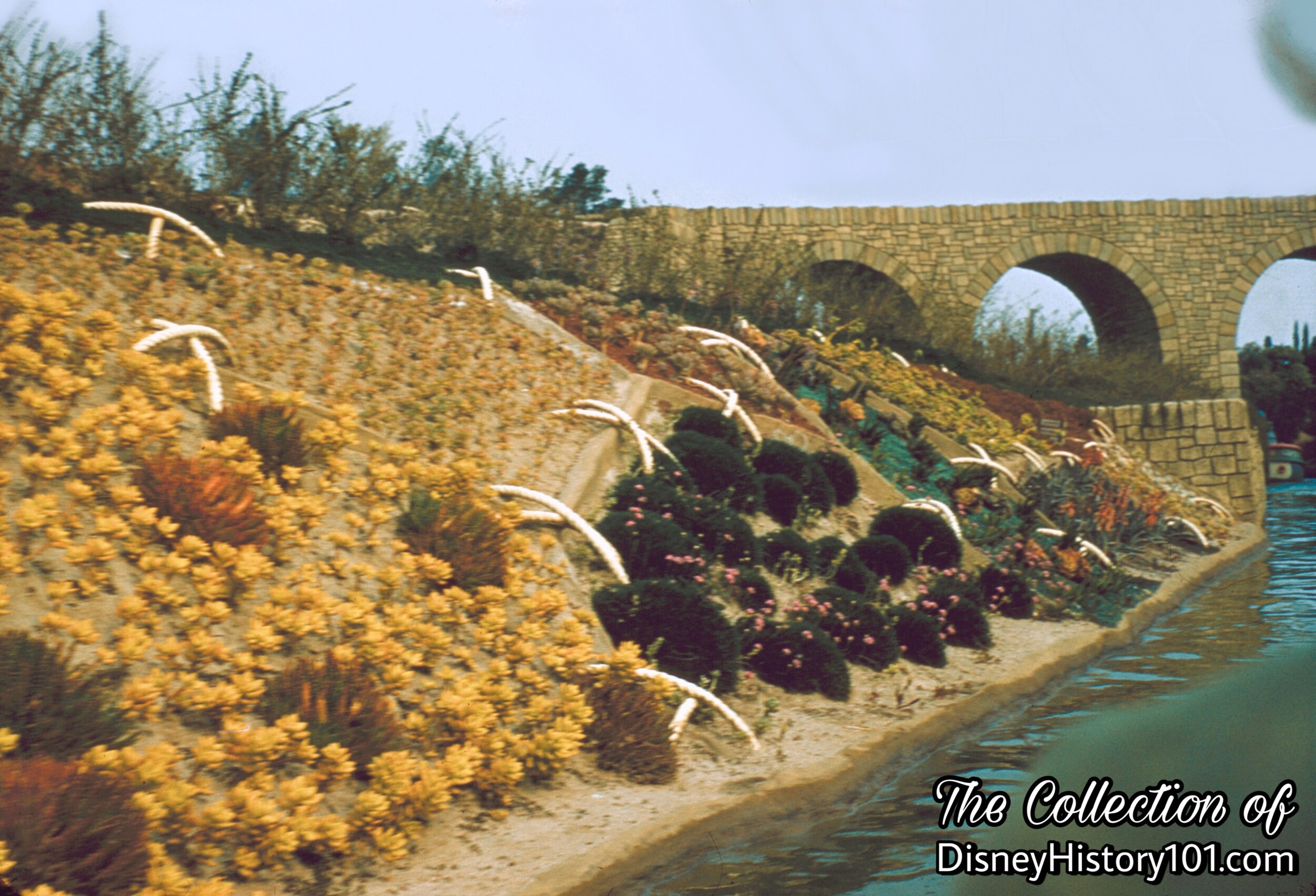
A Recently “Sewn” Lullabyland Patchwork Quilt
In addition, the landscape had many water features, including Disneyland’s smallest waterfall at a mere six feet tall!
All of these progressive “Show Quality” enhancing details were actualized in about six month’s time. Reports of the ride development and previews of Storybook Land were published in The Disneyland News (February, 1956 ; pages 1 & 9), The Disneyland News (June, 1956 ; page 5).
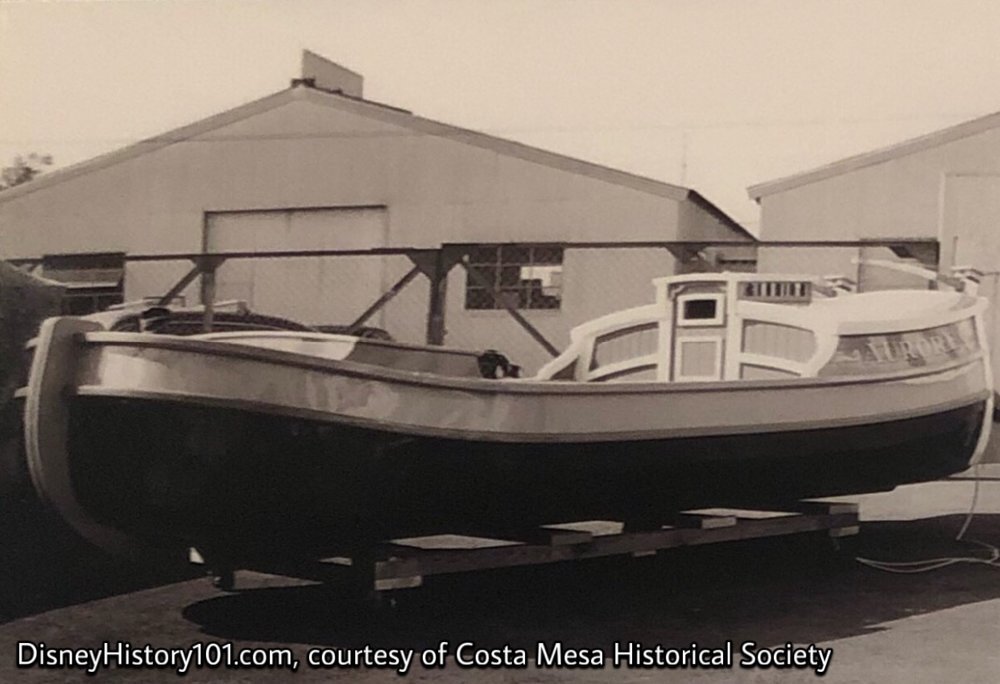
"Aurora" Canal Boat (with colors applied) at Bob Dorris Boatworks in Newport Beach, (c. 1955)
“Maintaining the Show and Embellishing the Story”
Bob Thomas (of Associated Press) revealed that “the Canal Boats of the World Ride…will be made to look like canal boats of different countries.” Five boats (similar in style; with a 14-guest capacity) were added to the original eight for a total of thirteen in the fleet (though the Disneyland Dictionary published 1959 mentions twelve boats)! This time, all the boats were renamed after characters featured in Walt Disney’s animated feature-length films, including Alice, Aurora, Cinderella, Daisy, Faline, Fauna, Flora, Katrina, Merryweather, Snow White, Tinkerbell, and Wendy. These were not added all at once (e.g. in 1959, there were twelve boats). Bob Dorris’ Dutch-style canal boats were originally powered by noisy gasoline outboard motors, which made it difficult to hear the spiels of the storytellers. These motors were swapped for quieter, battery-powered General Electric motors by 1959. This helped Guests to better hear the appropriate musical background (on tape) within each setting. The batteries were charged overnight in a backstage storage area each night.
As for the “canals,” they measured a length of 1,000 ft., a width of 25 ft.; and a depth of 4 ft., and contained 1,000,000 gallons of water. The canals were resurfaced with gunfire to hold their 465,000 gallons of water. The bare “muddy” banks were delicately re-landscaped, and lined with stunted miniature trees and flora.
And those international flags were replaced with “a miniature world of Fairy Tales”! All together, the “ride structure” (passageways and sets) of this amusing adventure was appraised at a value between $249,500 and $272,900, while the equipment was valued between $62,200 and $74,500.
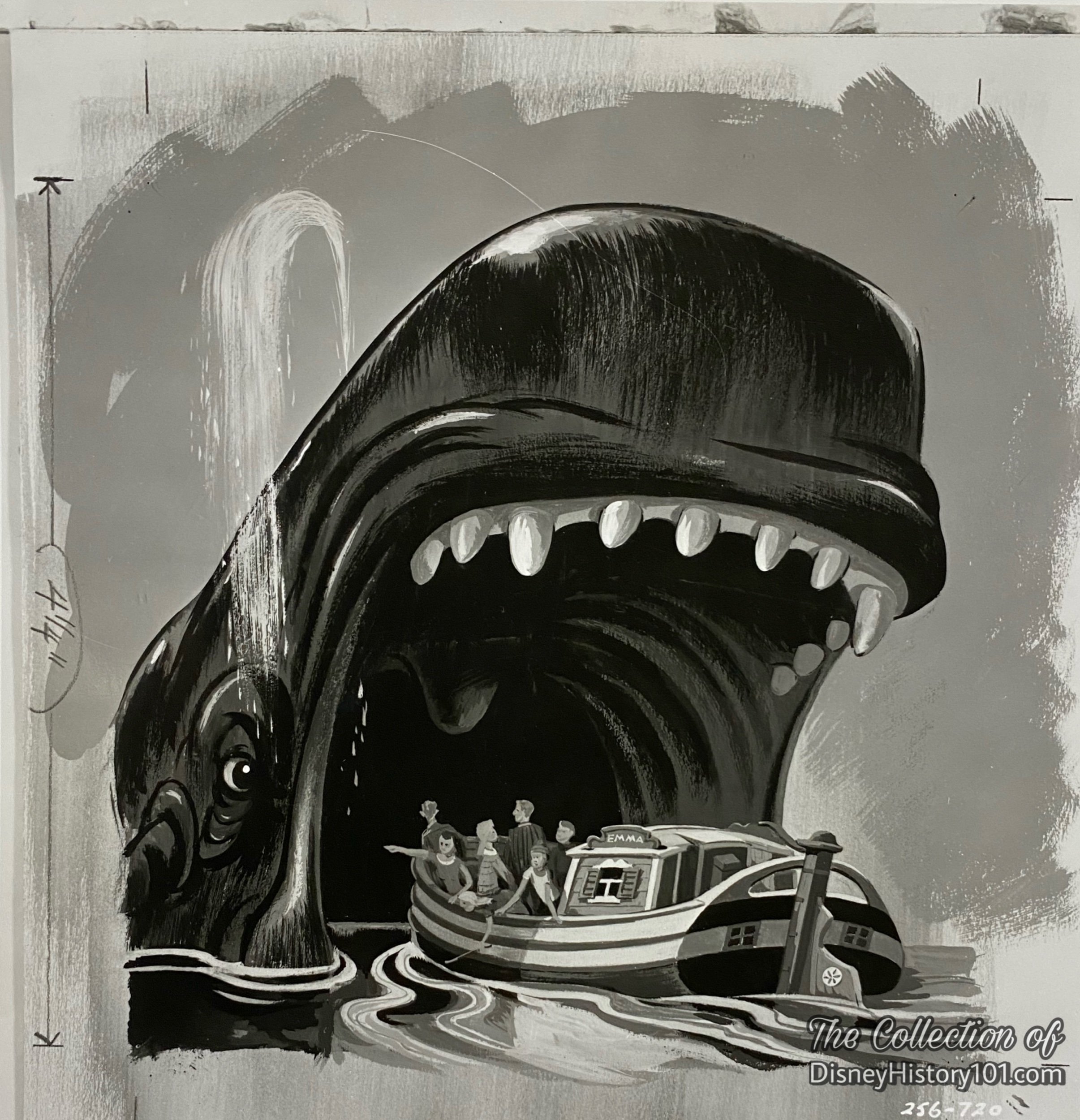
Storybook Land poster concept by Bjorn Aronson; Photo Credit © Walt Disney Productions.
All art work, posters, etc. created by the Walt Disney Studios. Artist Bjorn Aronson was tasked with creating the memorable imagery of a boat called “Emma” being engulfed by Monstro the Whale.
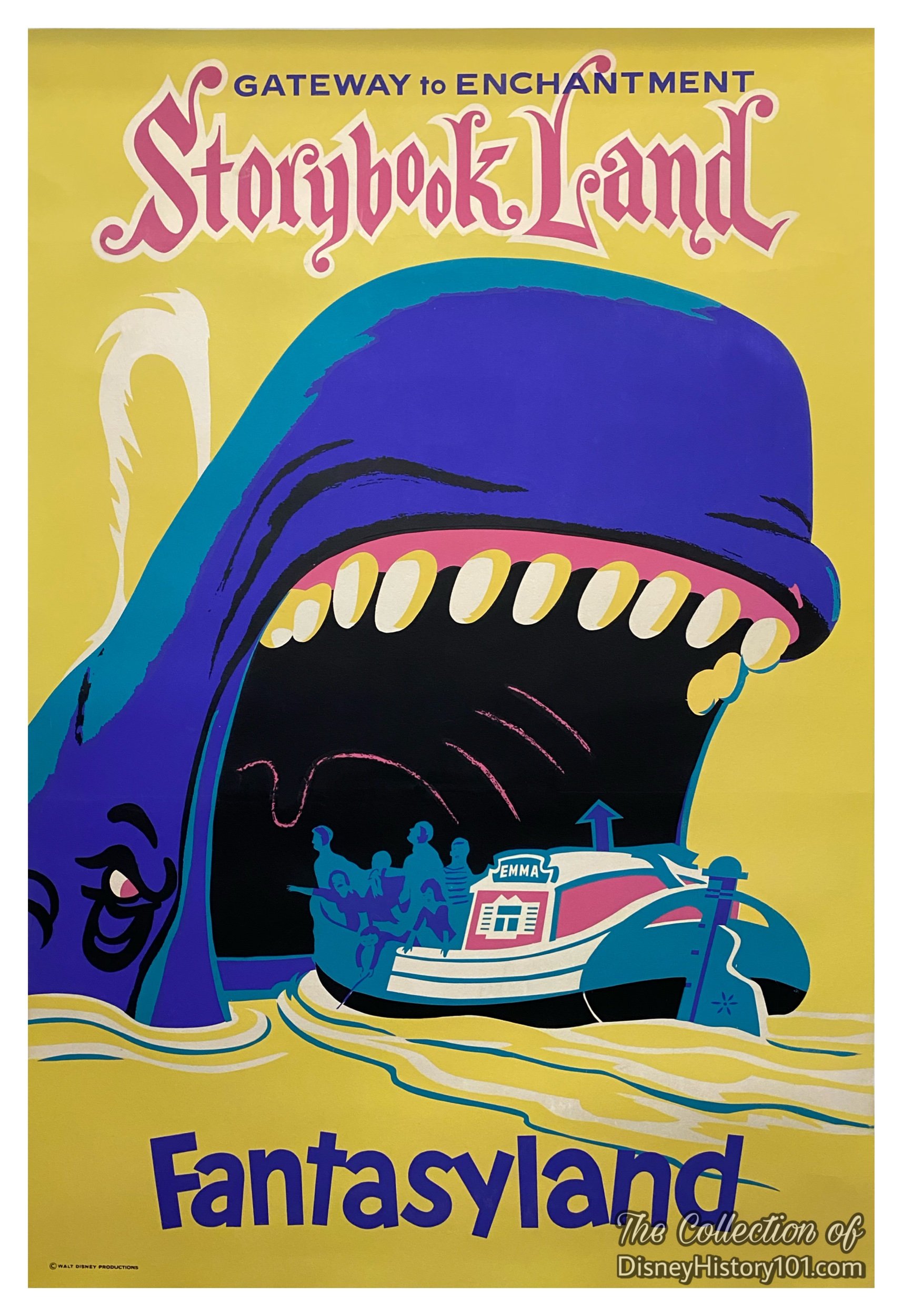
Storybook Land poster by Bjorn Aronson, 1955.
During this era, Monstro inspired another adventure at Disneyland. By 1964, the character of the 15th hole of The Magic Kingdom Golf Course of the Disneyland Hotel Golf Centre was themed after Monstro.
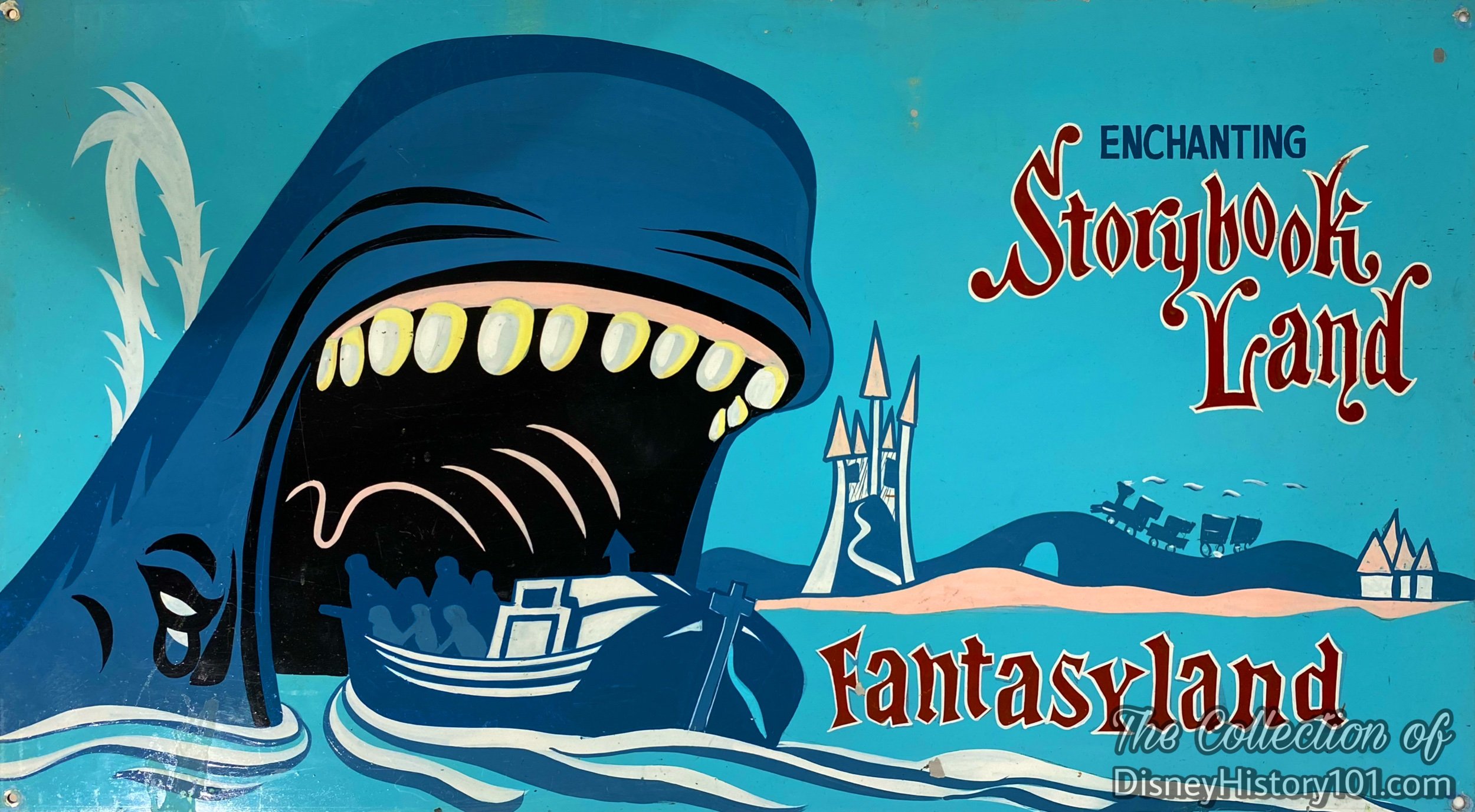
Omnibus panels promoted the enchanting Fantasyland adventure.
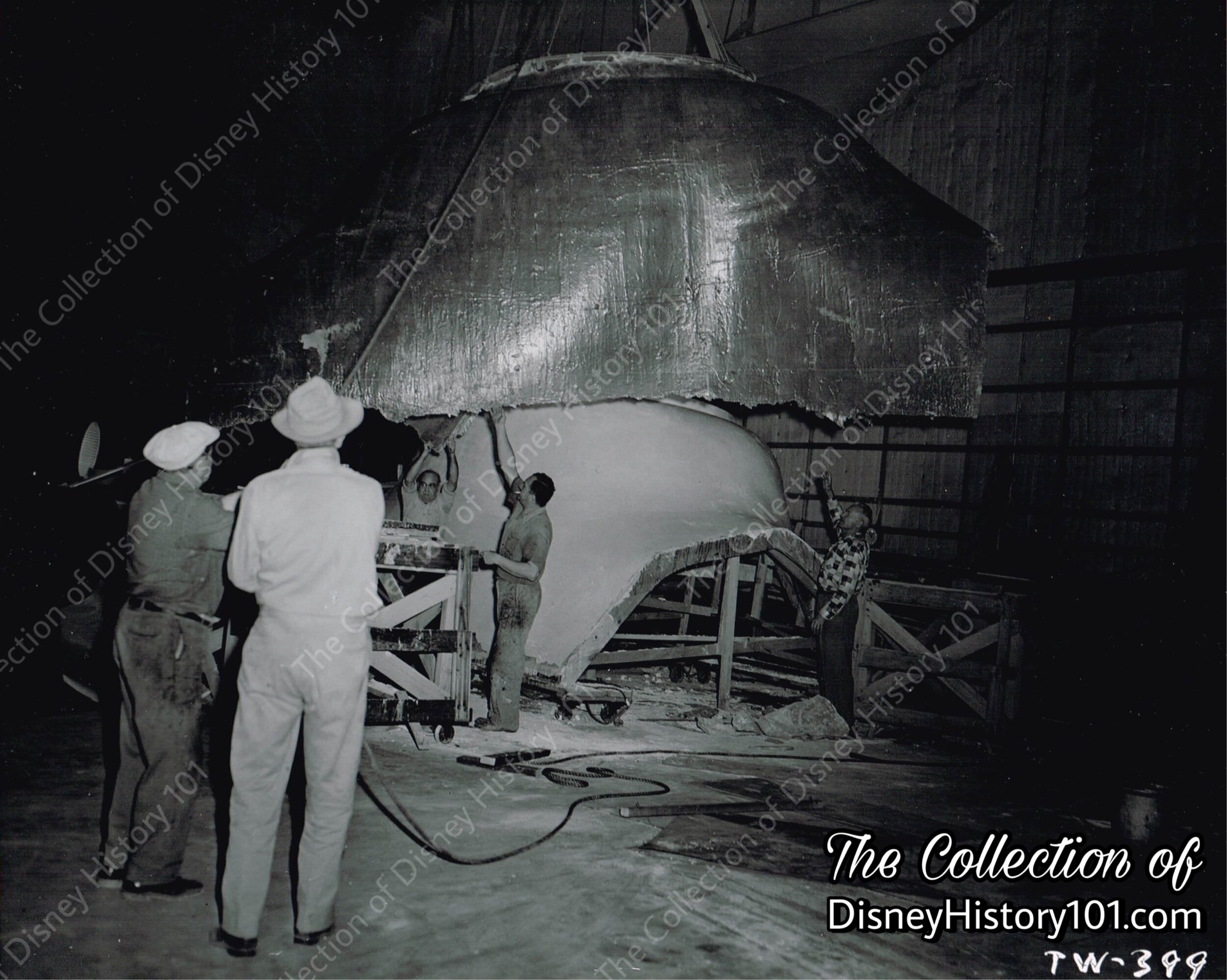
Construction of a section of Monstro the Whale (Storybook Land's Largest Permanent Resident) at Walt Disney Studios Press Photo ; Photo Credit © Walt Disney Productions.
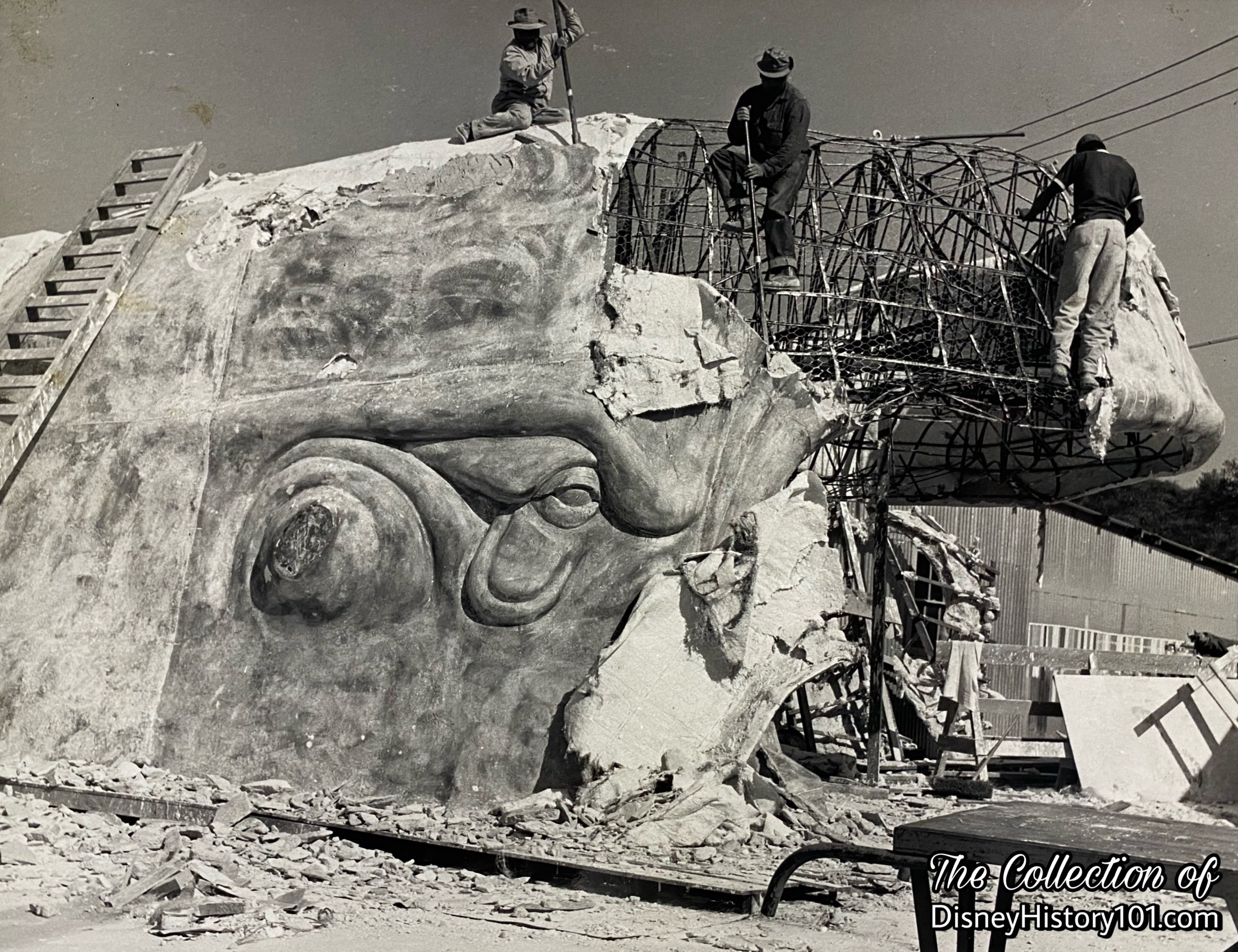
Construction of a section of Monstro the Whale (Storybook Land's Largest Permanent Resident) at Disneyland Press Photo ; Photo Credit © Walt Disney Productions.
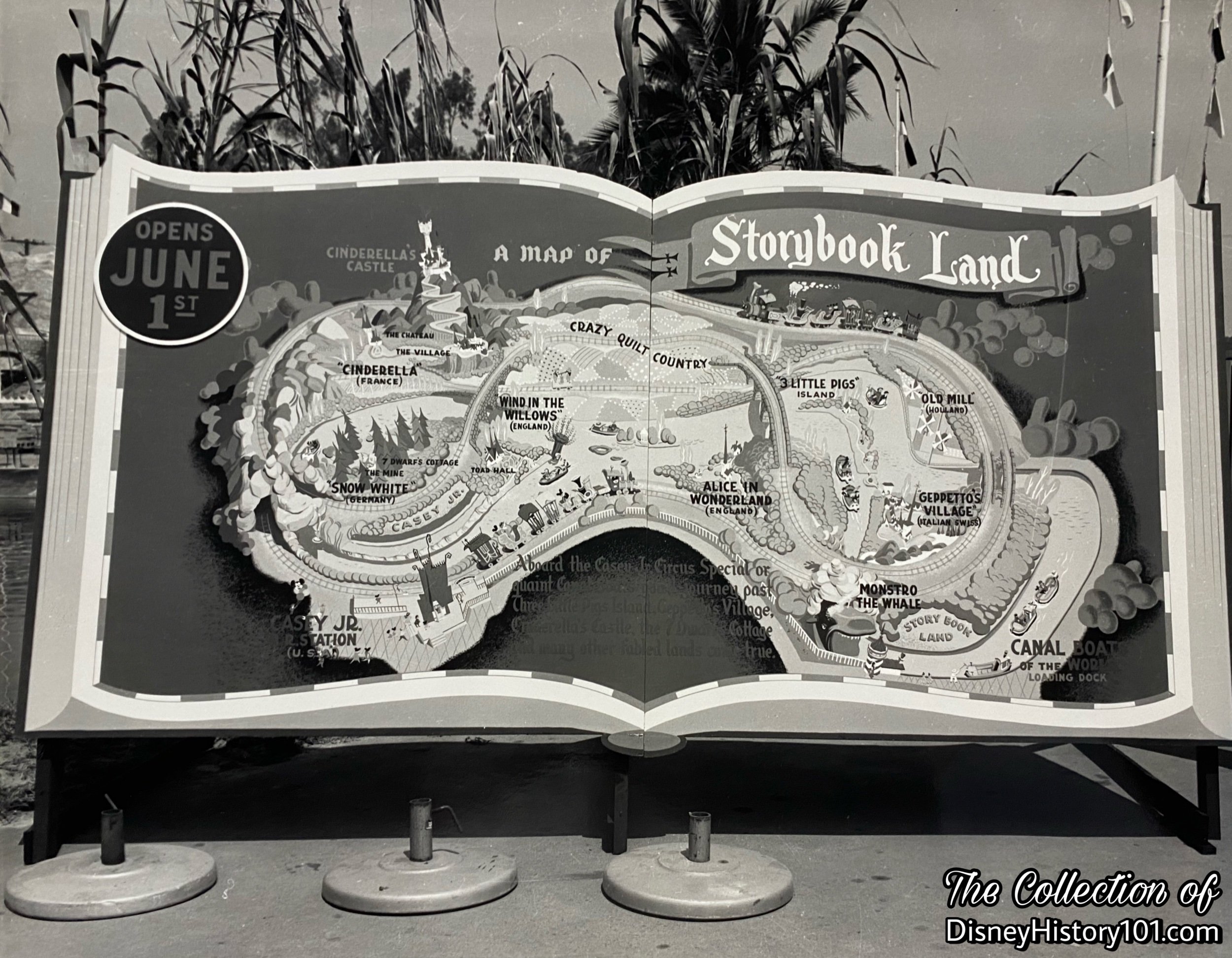
Photo Credit © Walt Disney Productions.
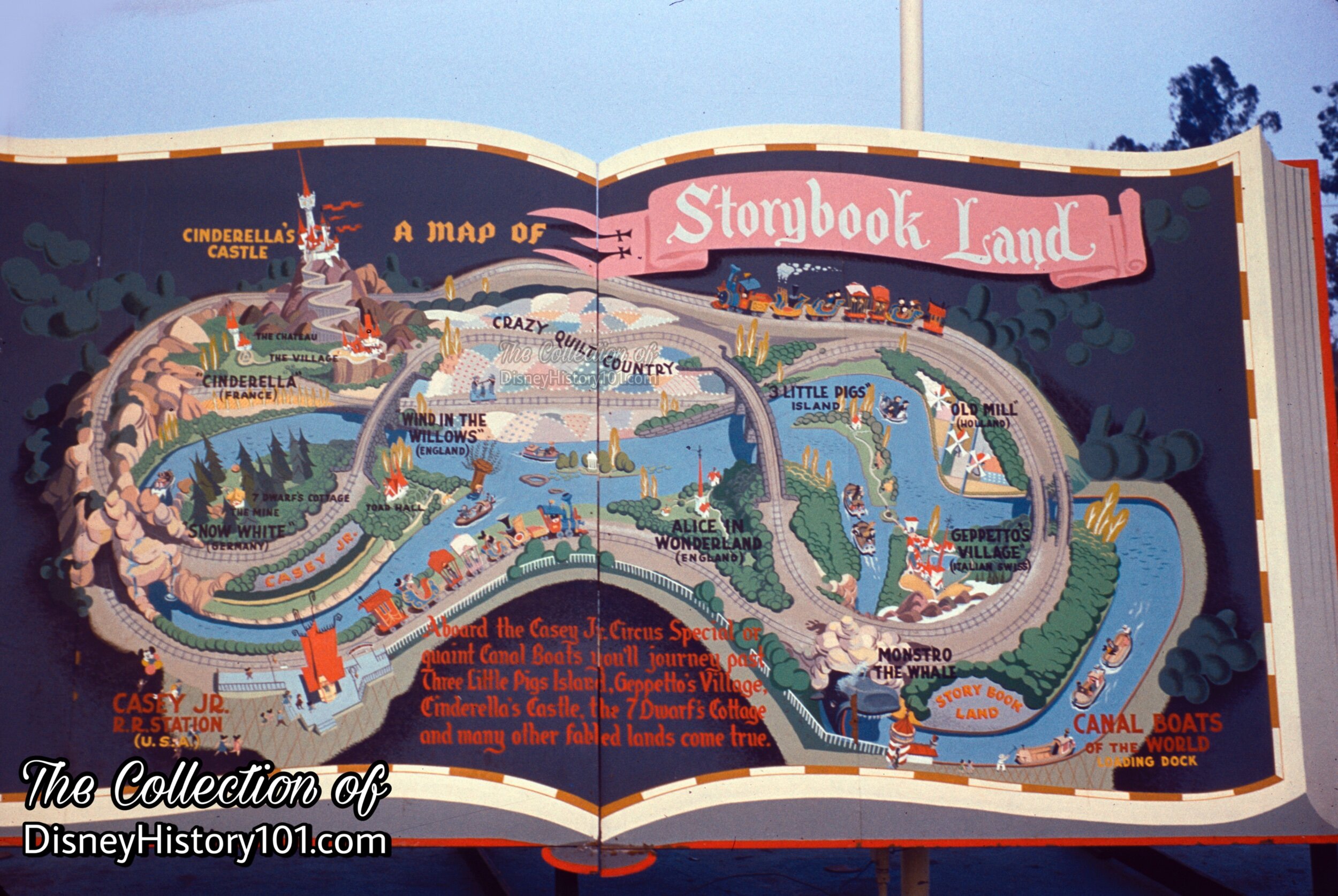
“A Map of Storybook Land,” 1956.
“Here you leave today and enter the world of… Fantasy”
“New Pages For The Disneyland Story” were soon to be added to the Park, “pages” holding stories in which guests would participate. The settings were recognizable, many of them beloved Academy Award winning short films and feature films (like “Three Little Pigs,” 1933; “The Old Mill,” 1937, “Pinocchio,” 1940). According to “The Disneyland News” (Vol. 1, No. 12 ; June of 1956), “Friday, June 15, two of the new attractions unveiled as Tom Sawyer Island and Storybook Land will be opened to the public for the first time… Walt’s three-dimensional re-creation of the world of folklore - Storybook Land - will have its Press Opening on Monday, June 18. Participants will include numerous film celebrities with their children and out of the greatest stories of folklore.” At least one of the Canal Boats (bound to embark on its maiden voyage through this “kingdom within a kingdom”) received a royal christening by a bottle of milk, courtesy of the lovely Ruth Marie Peterson (National Dairy Princess). That very Canal Boat carried Mouseketeers (Bobby, Darlene, and Sharon) who served as official Storybook Land Hosts and Pilots to children of celebrities.
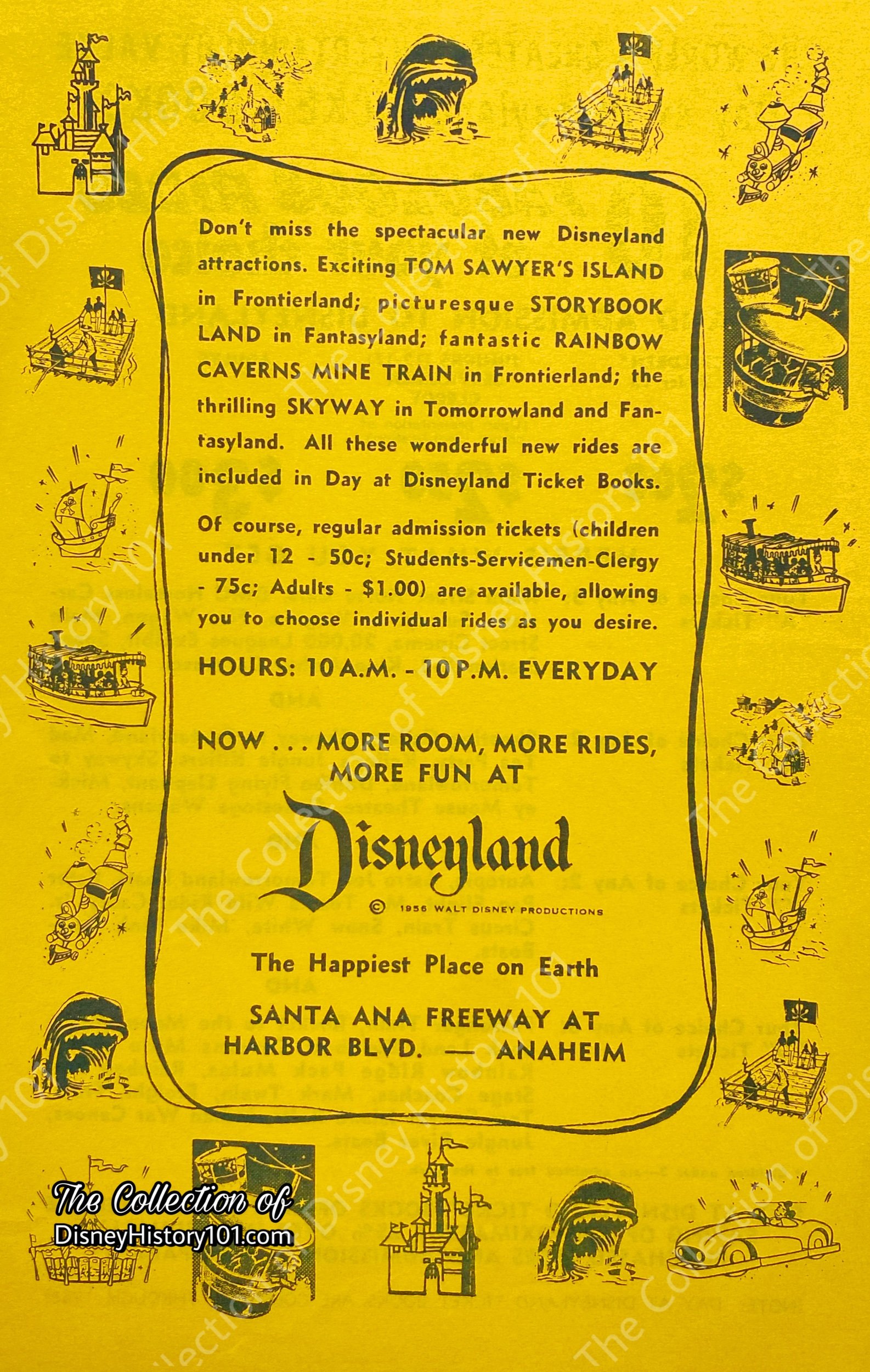
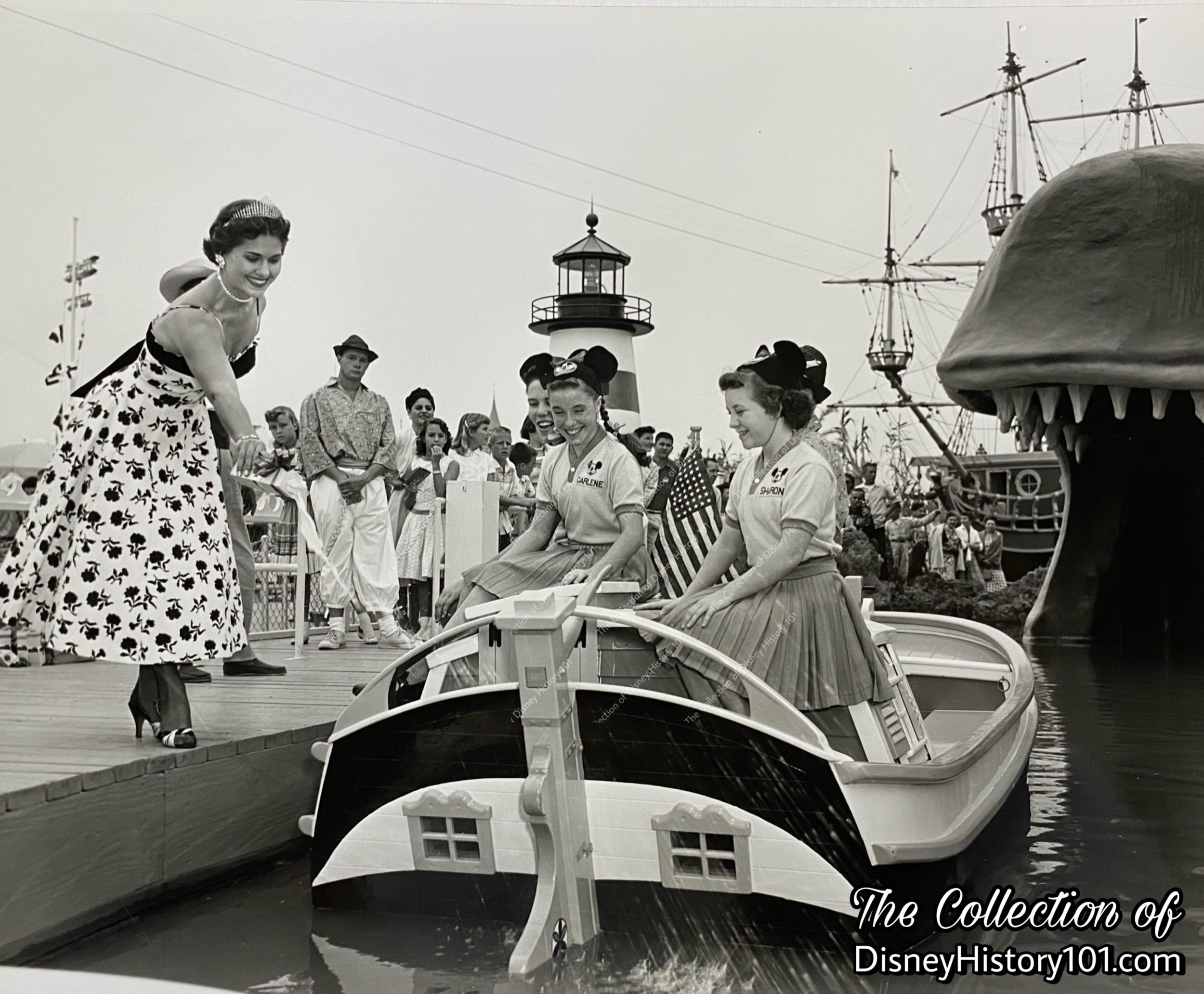
A press release photo depicts the Mouseketeers embarking on a tour of Storybook Land; ©️ Walt Disney Productions.
While this new and exciting attraction for 1956 helped carry total Disneyland investments to $18,500,000, Storybook Land (and its Canal Boats) was also one of several exciting attractions that carried many a guest, increasing ride capacity that year. By the release of the “Disneyland 1st Anniversary Souvenir Pictorial,” it was reported that “new rides have added some 40 percent to the Park’s ride capacity,” listing “Storybook Land” among the contributors. Disneyland had grown from 27 original rides and amusements to 37, and from 11 free shows and exhibits to 17. Owning to this, one day in August of 1956 saw a peak total of “197,547 individual rides” enjoyed by Guests (according to a letter from Walt to Ward Kimball, dated January 23, 1957). In fact, this increased capacity likely contributed to the five-millionth guest arriving in October.
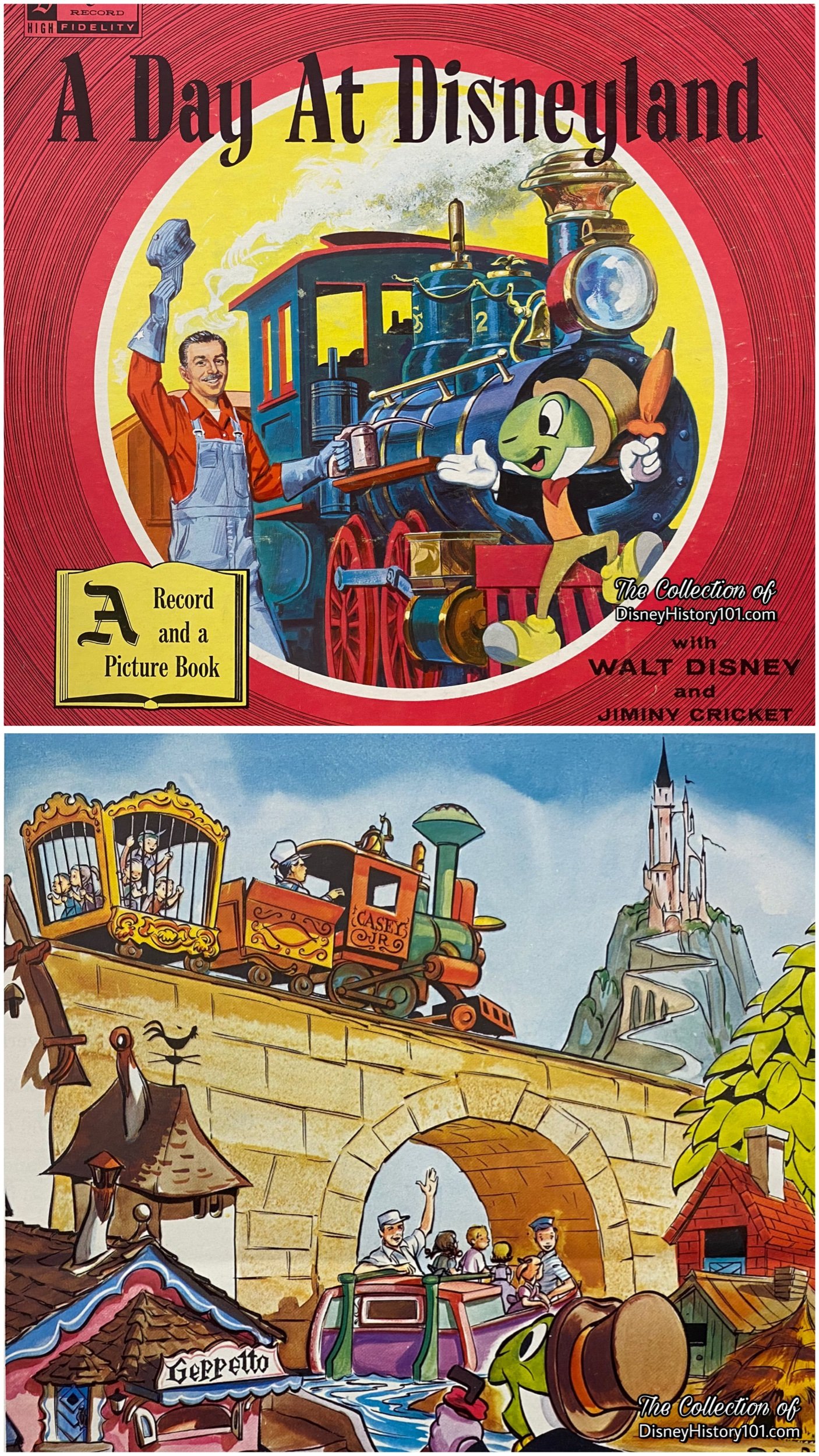
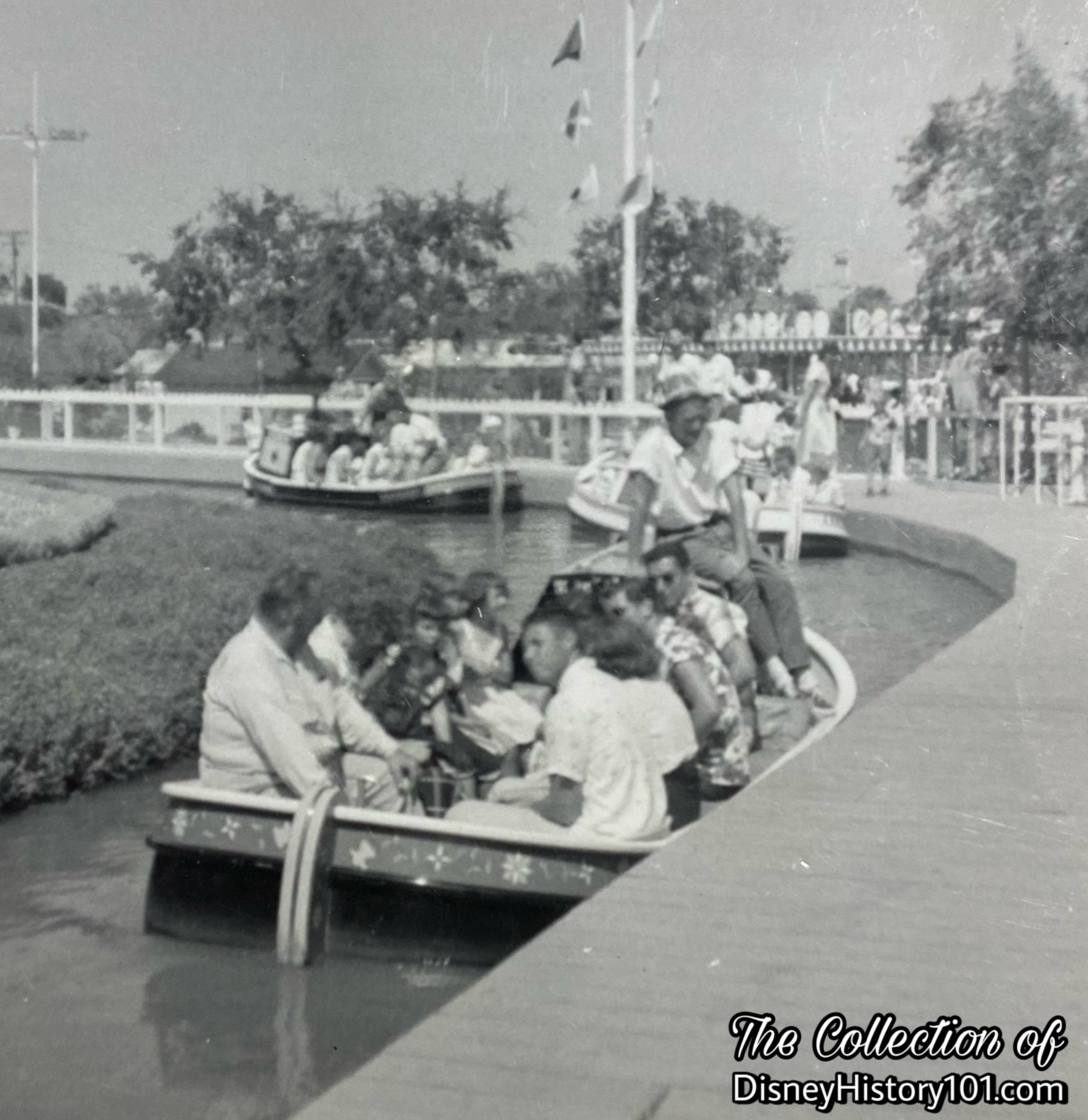
A Storybook Land Attractions Host; September, 1958.
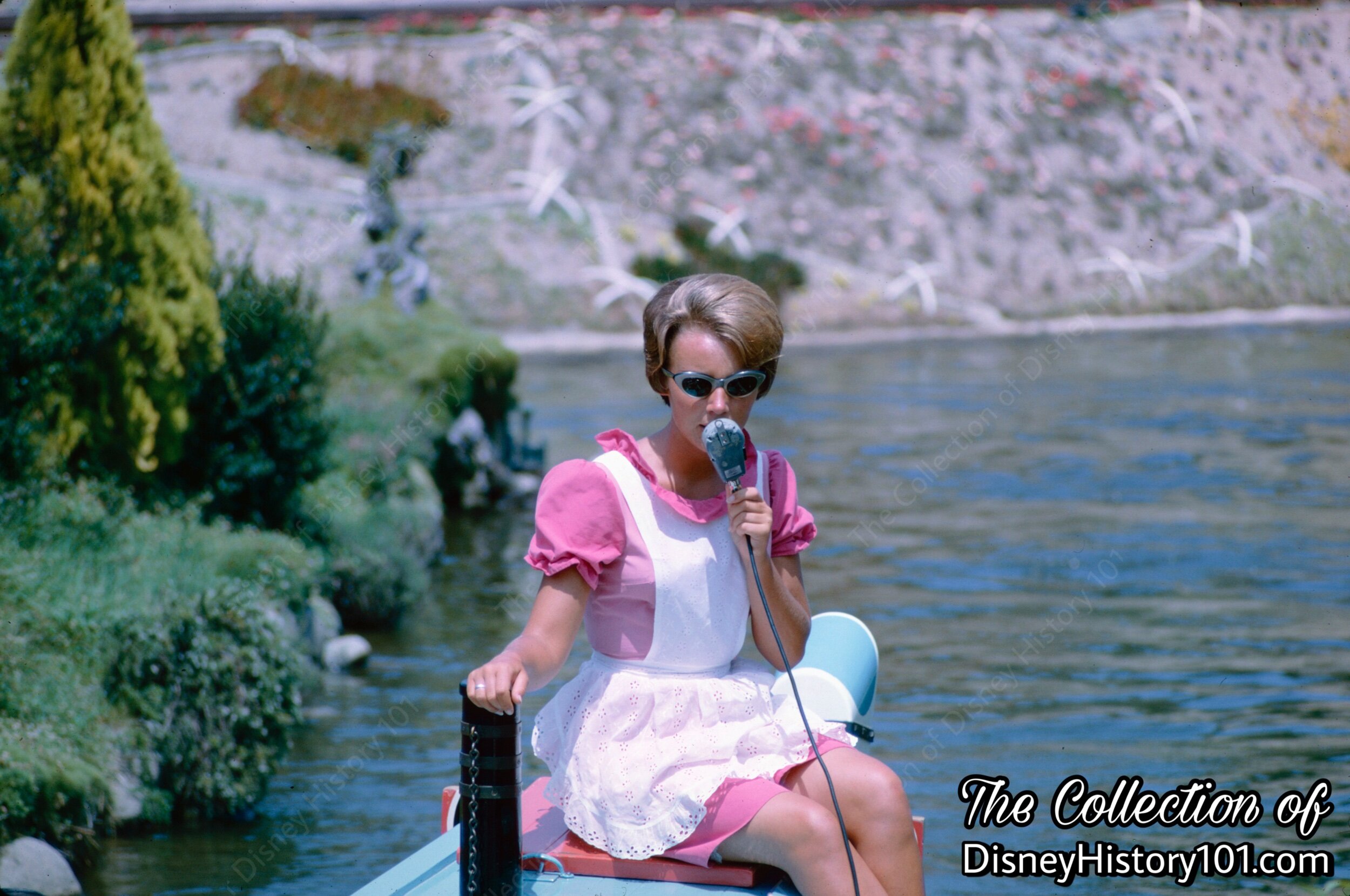
“The magic begins” with a Storybook Land Canal Boat Attractions Hostess, 1963.
Walt (and company) have always recognized that casting is essential to the success of any story being told whether in feature-length and short film format, or at Walt Disney’s Disneyland. With that in mind, the most important element of Storybook Land is the Attractions Hostess “Skipperette” (and Host) that accompanies up to 14 guests along on their 7-minute journey and narrates the scenes. Without the Cast Member’s supporting role it would be most difficult to maintain the magic of the miniature land for each boat load of guests. Storybook Land Attractions Hosts & Hostesses have been known to tell the story of Storybook Land even more than 40 times in one day. This spiel (narrative spoken live) was carried out with a certain effective and efficient “performance excellence.” One notable Storybook Land Attractions Host who did so was John Catone (who was also Tomorrowland’s first Space Man). He was known to deliver “a hilarious spiel on Storybookland, especially in Italian dialect at Gepetto’s Village,” according to Backstage (published Summer, 1965).
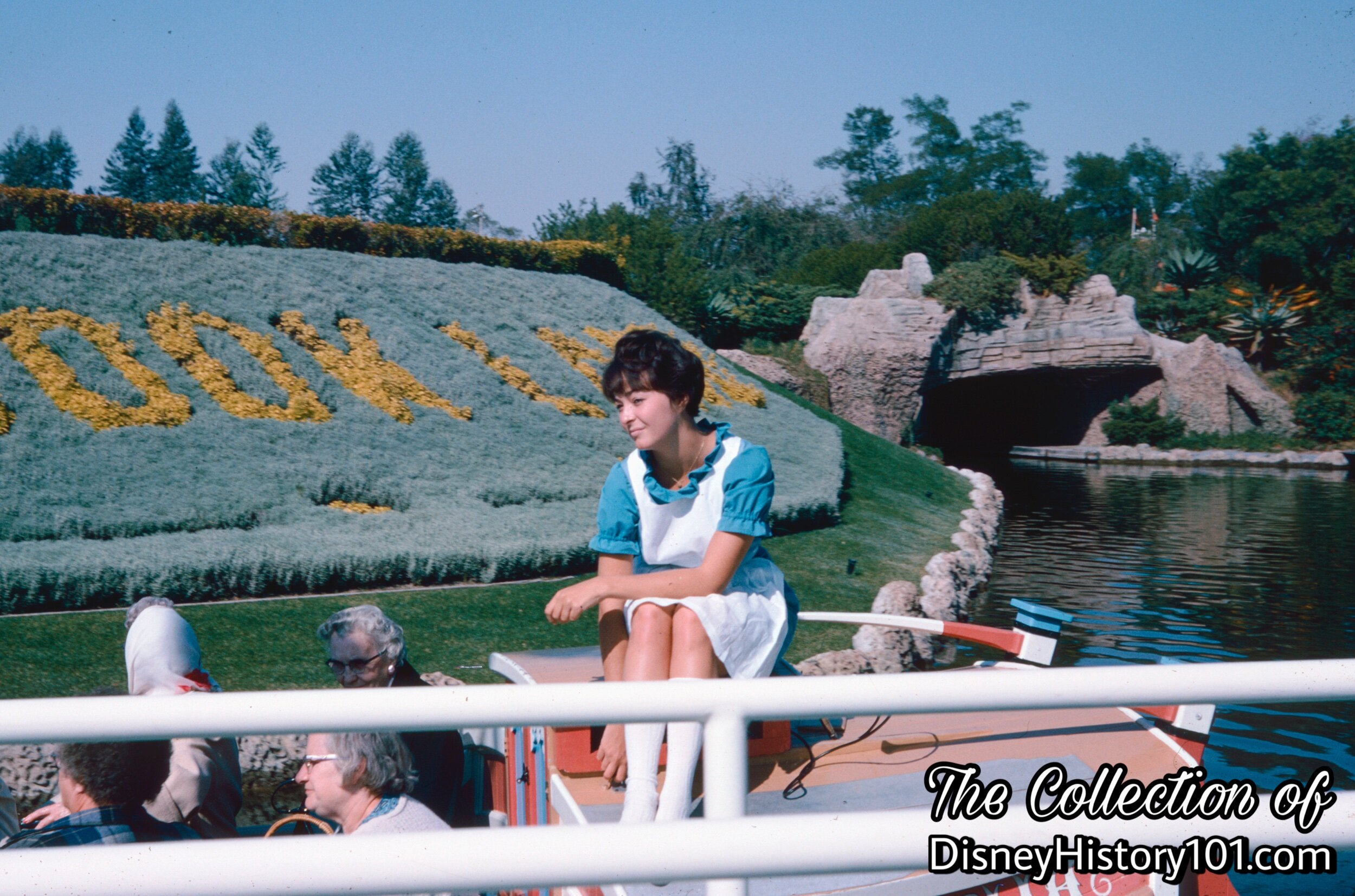
Storybook Land Canal Boat Attractions Hostess Sharon O'neill cross-utilized during a peak holiday season, Late 1963.
During the first summer, the Attractions Hosts (or “Pilots”) were all male (as evident in the theatrical film Disneyland U.S.A., released by Buena Vista Film Distribution, December 20, 1956). This was once deemed necessary due to the fact that the boats were not equipped with reverse gears, and were manually pulled to the Backstage Storage Area by battery cables each night. This work was considered too strenuous for the female Cast Members at the time. But eventually, reverse gears were added to the boats, thus altering the male host “requirement.”
By the Spring of 1966 (and the time of Foreman Jim Patton and Attractions Host John Catone), some of the Storybook Land operators were still predominantly male, though there were undoubtedly quite a few women Pilots (like Cherill Oram, Kathy Hanson, Mary Hopkins, and Peggy Fariss). Sometime around December of 1965, Backstage Disneyland magazine (Vol.4, No.4) shared the following entertaining anecdote verifying Storybook Land Hostesses :
“Jim Patton on Storybook, extolls the beauty of the canal girls who grace his little boats. He also mused that for some reason, the young gentlemen like very much to gain employment too on this attraction. He said that some guests thought that it was the Jungle Cruise and would ask when was he going to shoot the hippos? One of his pretty proteges, Kathy Bender, is now Snow White.”
So, it is of notable mention that during the canoe race of 1965, in a test of physical skill and coordination, Storybooklanders took second place.
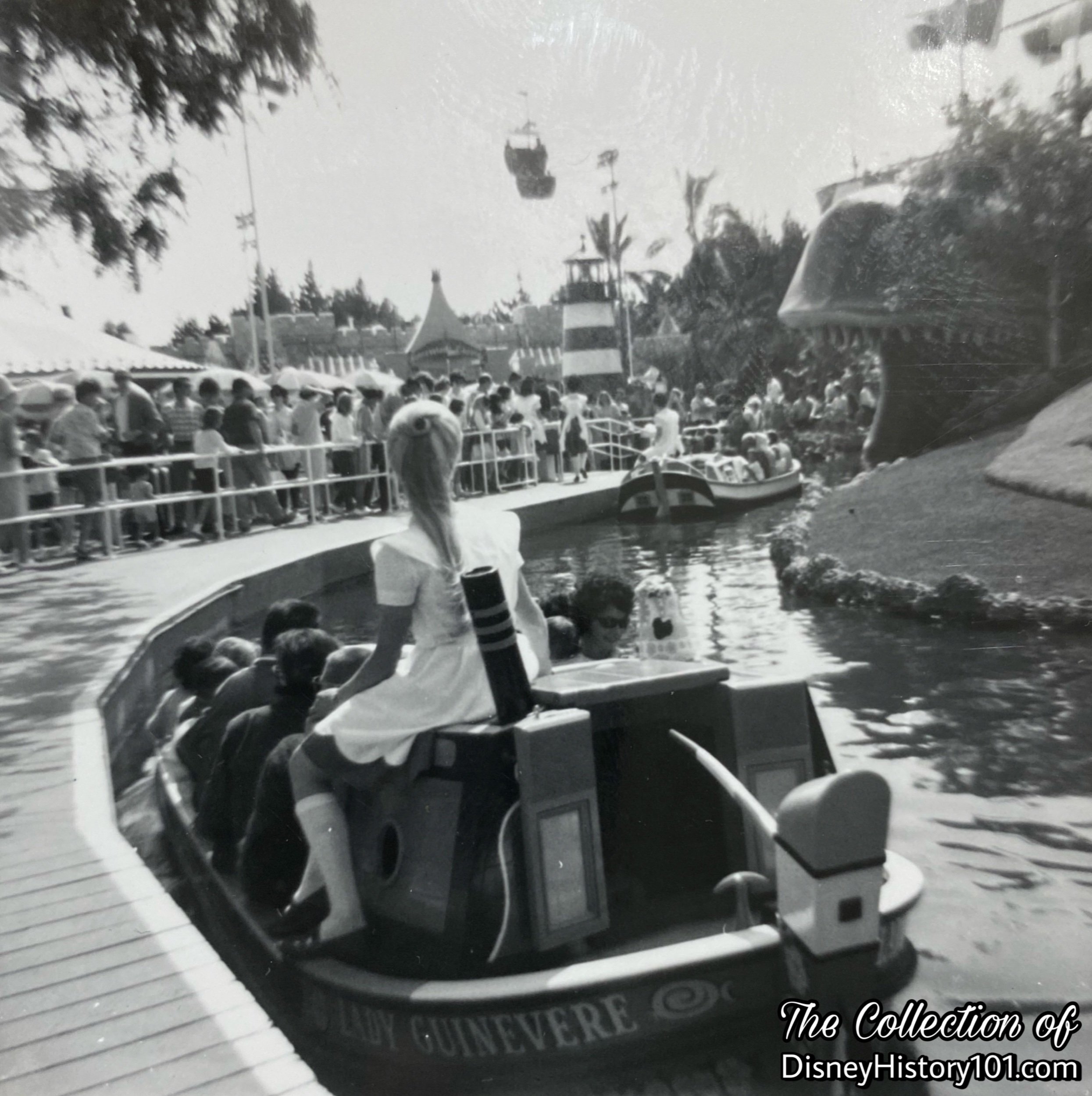
Storybook Land Canal Boat Attractions Hostess abord the Lady Guinevere; July 1966.
While these comments were made in a rather “tongue-in-cheek” fashion typical of early employee newsletters, these Pilots were more than just a “pretty protege.” Some, like the aforementioned Peggy Fariss (future Walt Disney Imagineering Executive of Creative Development) began her 50-year Disney career with a part-time summer job with the Storybook Land Canal Boats. Many other “Canal Girls” (like Kathy Bender and Marcia Henderson) would carry the tradition of Storyteller in Storybook Land. Pictured above, is Sharon O’neill (Disneyland Security Department Clerk) who temporarily (and memorably) was cross-utilized, to operate the Storybook Land Canal Boats during the 1963 Disneyland Christmas Party. There is much story to tell regarding this magical supporting Cast, as our next “sidelight” will show.
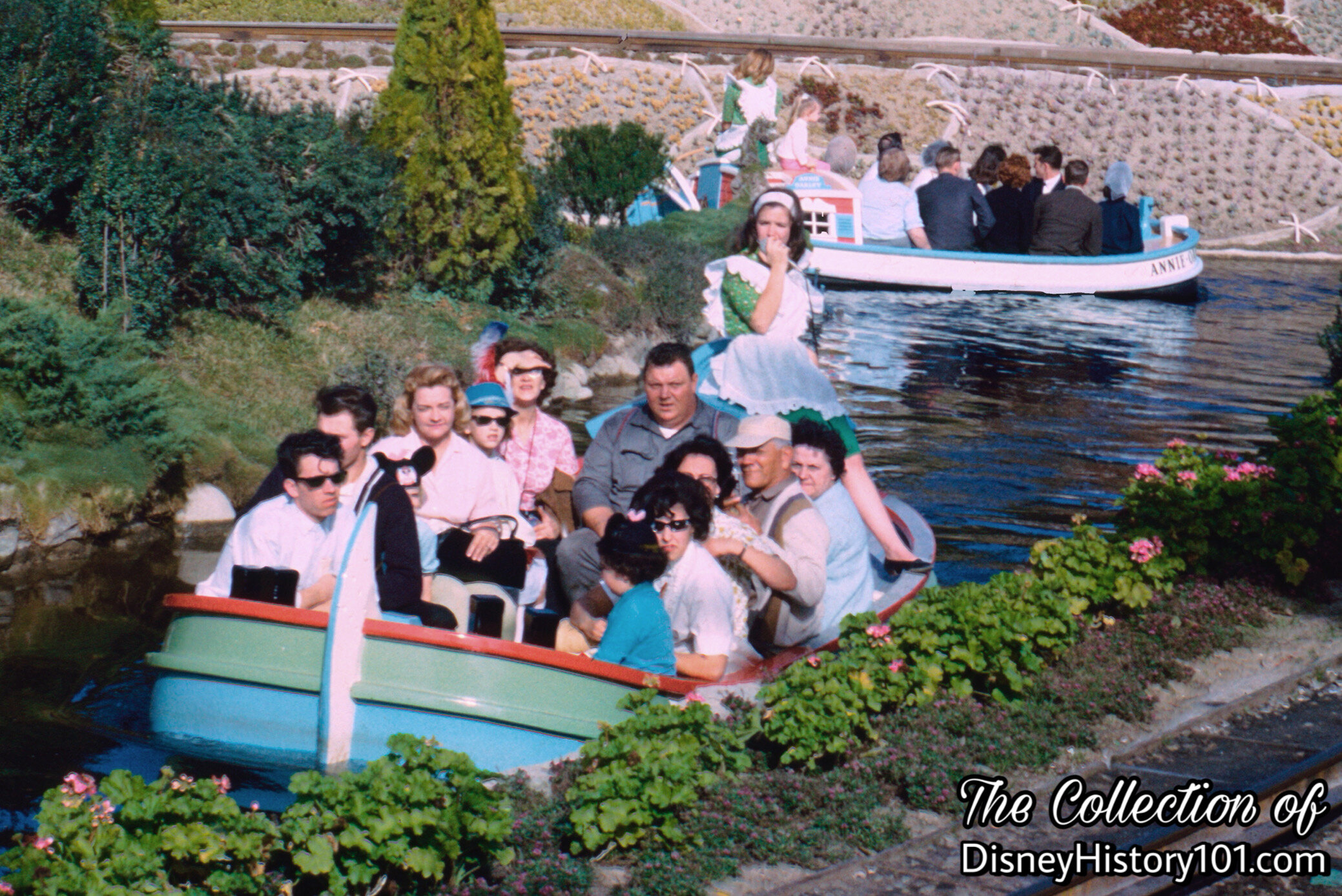
Storybook Land Canal Boats
You may note (in the background) a young guest sitting next to the Hostess). This reminds me of a story. Back in 1978, “a young visitor to the Storybook Land attraction let her curiosity get the best of her and fell out of the boat while it was in motion. Attraction Hostess Cathie Misamore, immediately alert to the incident, dived into the water where she swam out to the child and pulled the three-year-old to safety. Thanks to Cathie’s quick thinking, no one was injured.” This “sidelight” is certainly a testament to the fact that your Storybook Land Hostesses were more than fantastic storytellers - they were persons of valor!
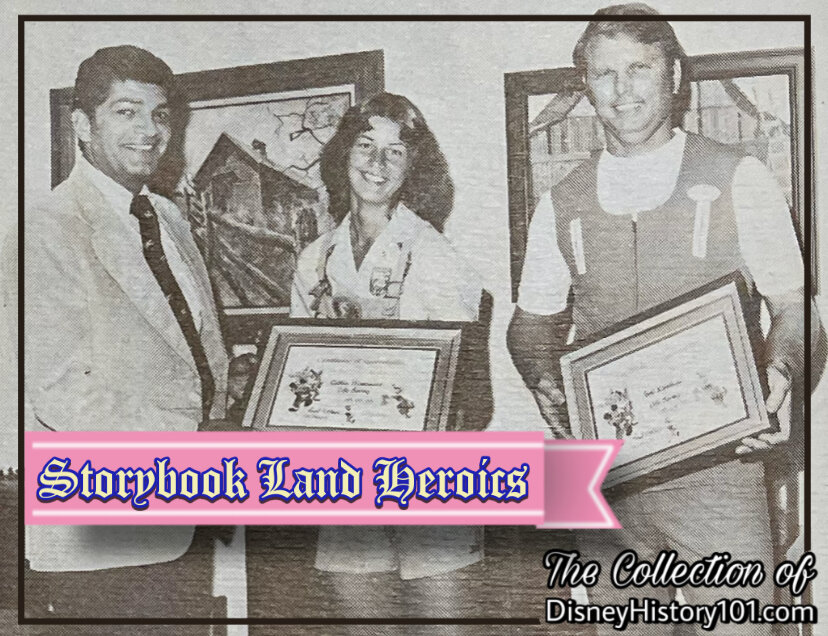
Disneyland Line Magazine (August 10, 1978) Excerpt
If I asked you to call to mind a Storybook Land heroine, who would you think of? Perhaps you first think of Snow White, or Cinderella, or Alice, or maybe Cathie. “Wait a minute! Who’s Cathie?,” you may ask. Well, Cathie was something special - both a Storyteller and an empathetic, true-life Storybook Land Heroine! While the Disneyland Line Magazine article "Cast Members Reach Out For Life" (published for August 10, 1978) summed up her story, I figured that we could reach out to her, and have her recount just what occurred.
“I remember it well. I was only a casual/seasonal cast member in the spring of 1978 when this happened, and had been working just a few months at Disneyland. I was on my first trip of my shift of Storybook Land and was right where the boat passes in front of the Casey Jr Circus Train Loading Station. It was still daylight, but the sun was setting, so I could see everything pretty well.
Out of the corner of my eye, I saw what I thought was a splash, and a woman jumped up and started screaming about her baby! With the current of the water and the boat moving forward, the little girl was maybe 2 years old, and was quickly behind the boat and getting further away. She never resurfaced but had curled up into a ball and was floating just below the surface. I jumped off the back of my boat and swam as fast as I could to her, pulling her head up above the water and putting her arms around my neck.
A guy who was working on Casey Jr. jumped half way into the water while holding onto the ledge and held me hold on. Some men who were guests in the park jumped the safety gate, crossed the RR tracks and pulled us all up out of the water. The little girl was just fine - thank God! Her mom was helped off the boat and up onto the dock, and Security and a nurse came and took them to First Aid. The guy from Casey Jr. and I went for costume changes and came back to work like nothing happened. I was lucky to be on that boat as I was Certified Red Cross Lifeguard. The girl… couldn’t swim. That’s how I got a Life Saving Award from Disney.”
This account reminds us of the words of Aesop: “No act of Kindness, no matter how small, is ever wasted.”
As a “sidelight,” I must mention that some time around this incident, the “I Have an Idea” Program (est. 1978) would come to yield many ideas that would influence and shape the efficiency and safety of how things were run. For instance, Mike Goodwin had the idea to “install a safety cable in the Storybook Land attraction.” [Disneyland Line, March 1st, 1979]
And so, with the knowledge that our Storybook Land Hostess is both a master storyteller and inherently brave, we are ready for anything that awaits us on our journey!
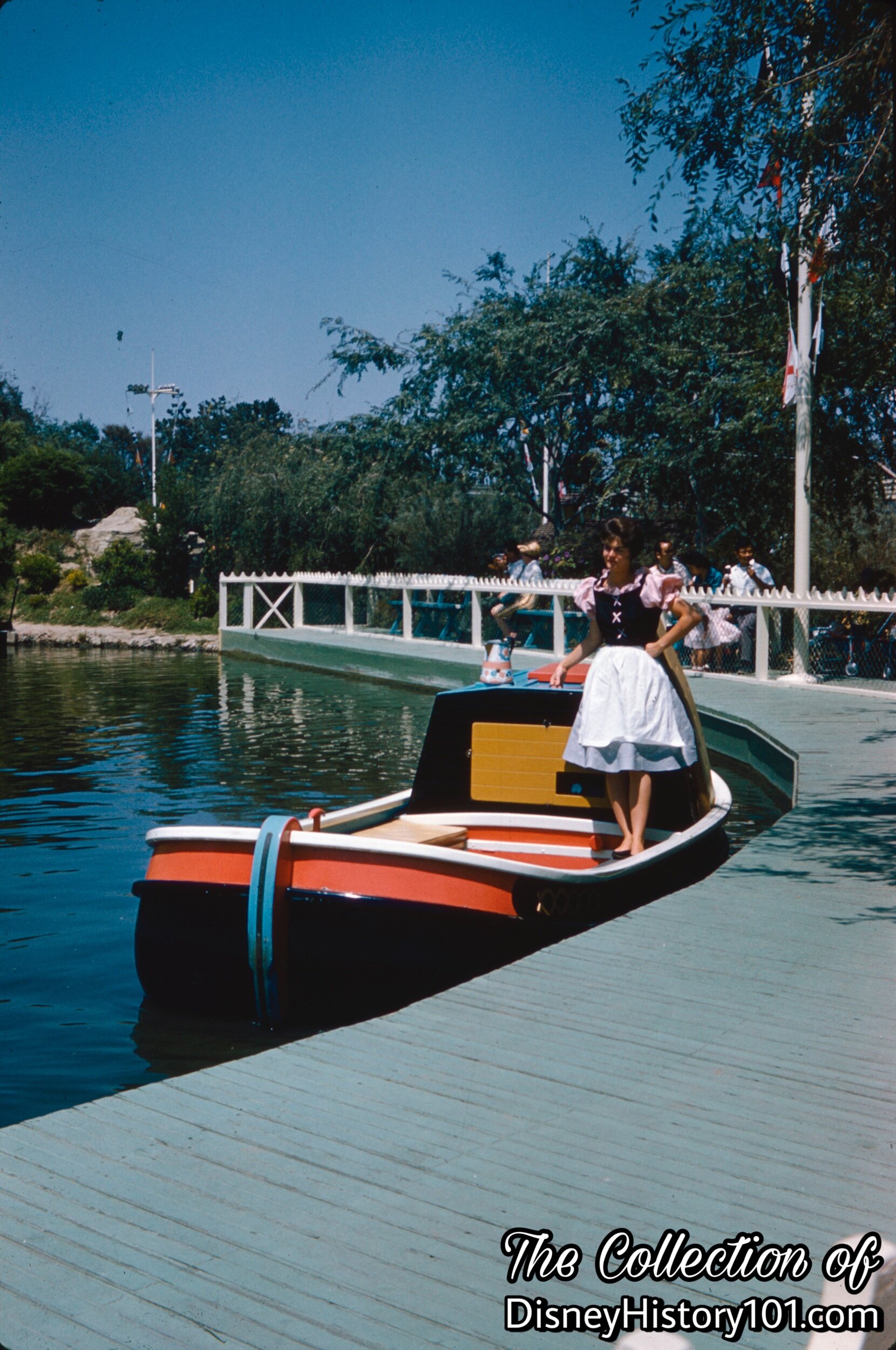
Storybook Land Canal Boat, Hostess and Dock
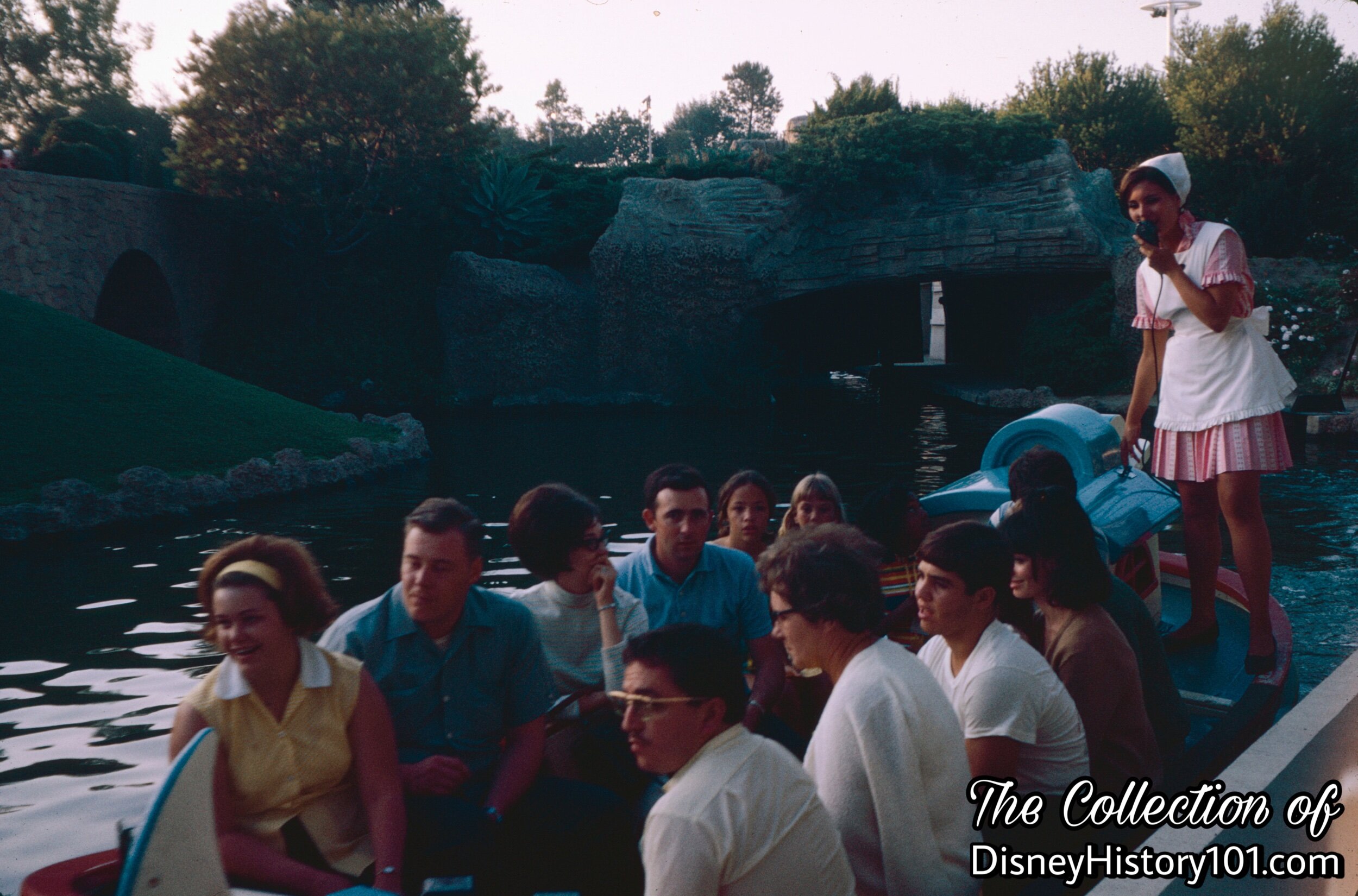
Storybook Land Dock
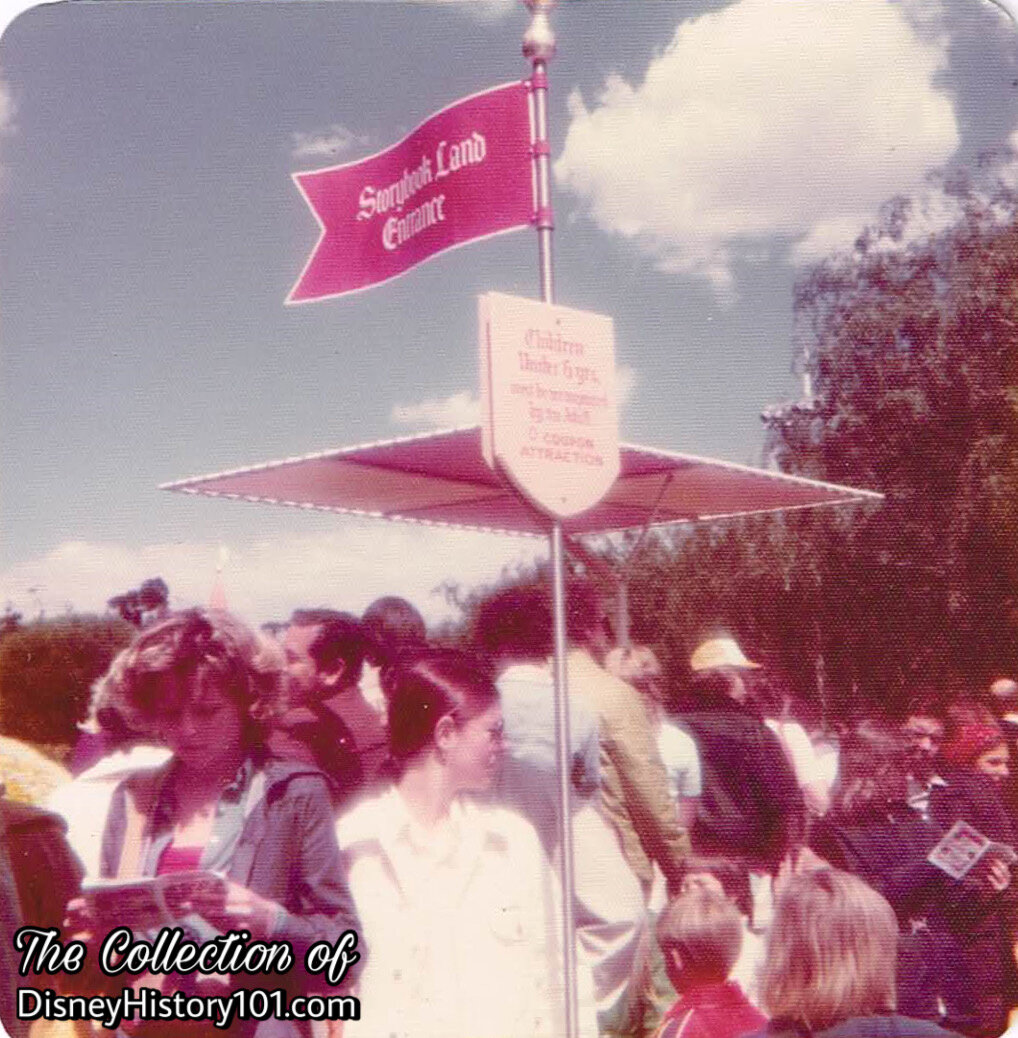
Storybook Land Entrance
Now that you know most of the story, I invite you to “please, step this way,” as we explore Storybook Land with a little “live narration” (courtesy of a few former Canal Boat Operators), and a few fun facts along the way!
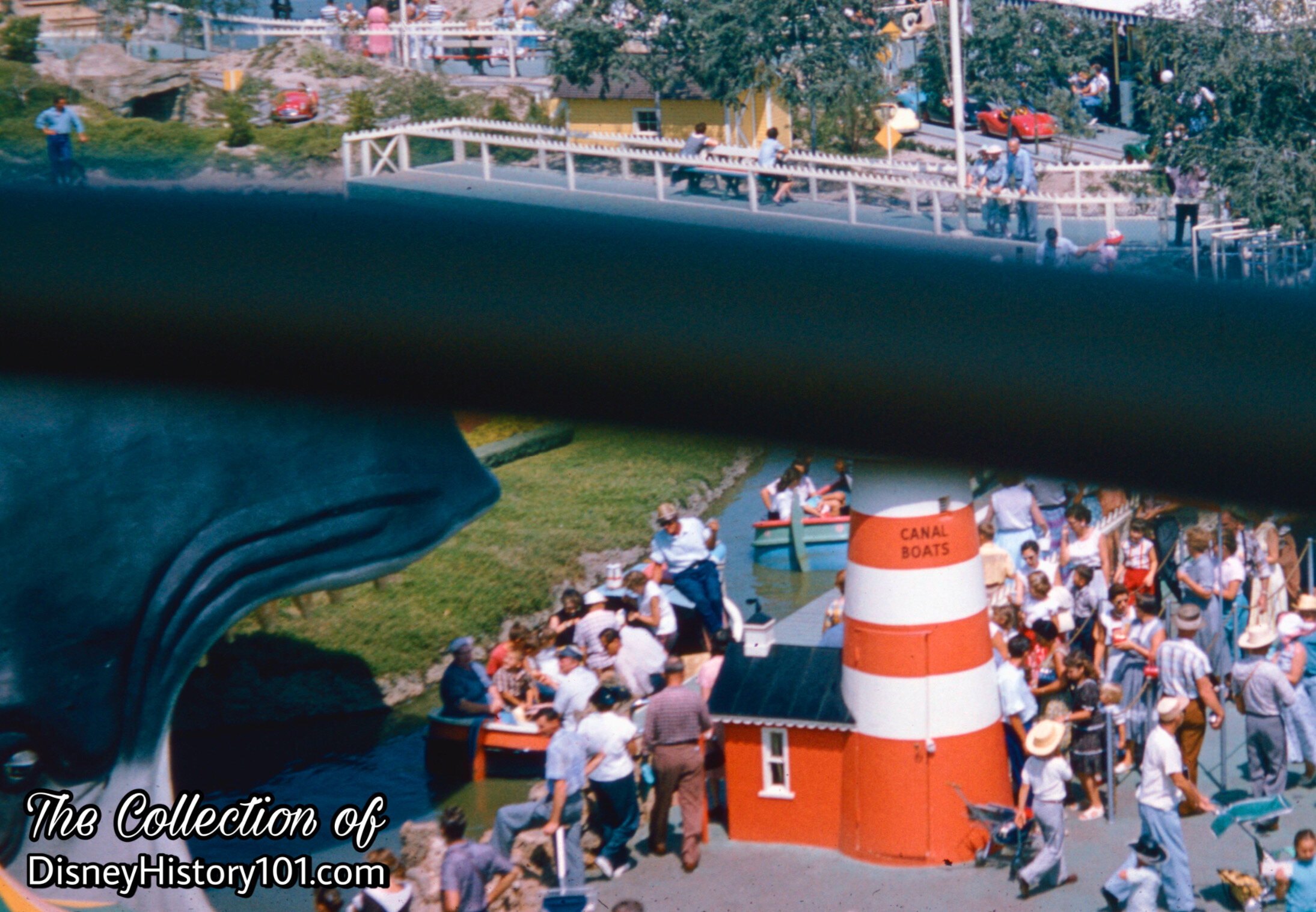
Guests wait in an orderly fashion (queue) to board Storybook Land "Canal Boats" near the Lighthouse Ticket Booth & Monstro.
Notice that the Storybook Land Canal Boats Lighthouse Ticket Kiosk reads “Canal Boats” in the previous and next few “Vintage Views”. In time, the “Canal Boats” title on the lighthouse was replaced with the words “Storybook Land” to better reflect the name and theme of the new attraction!
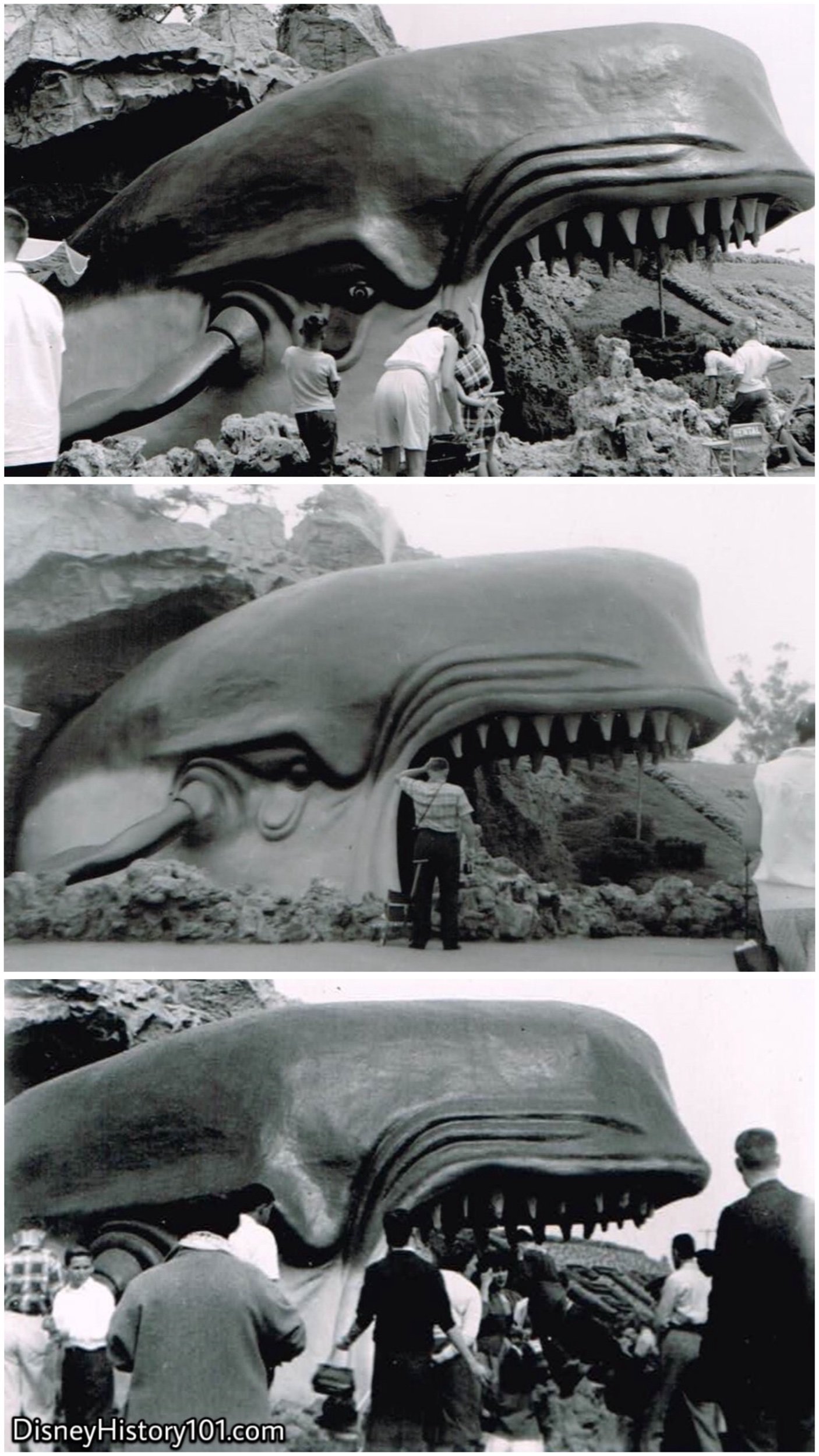
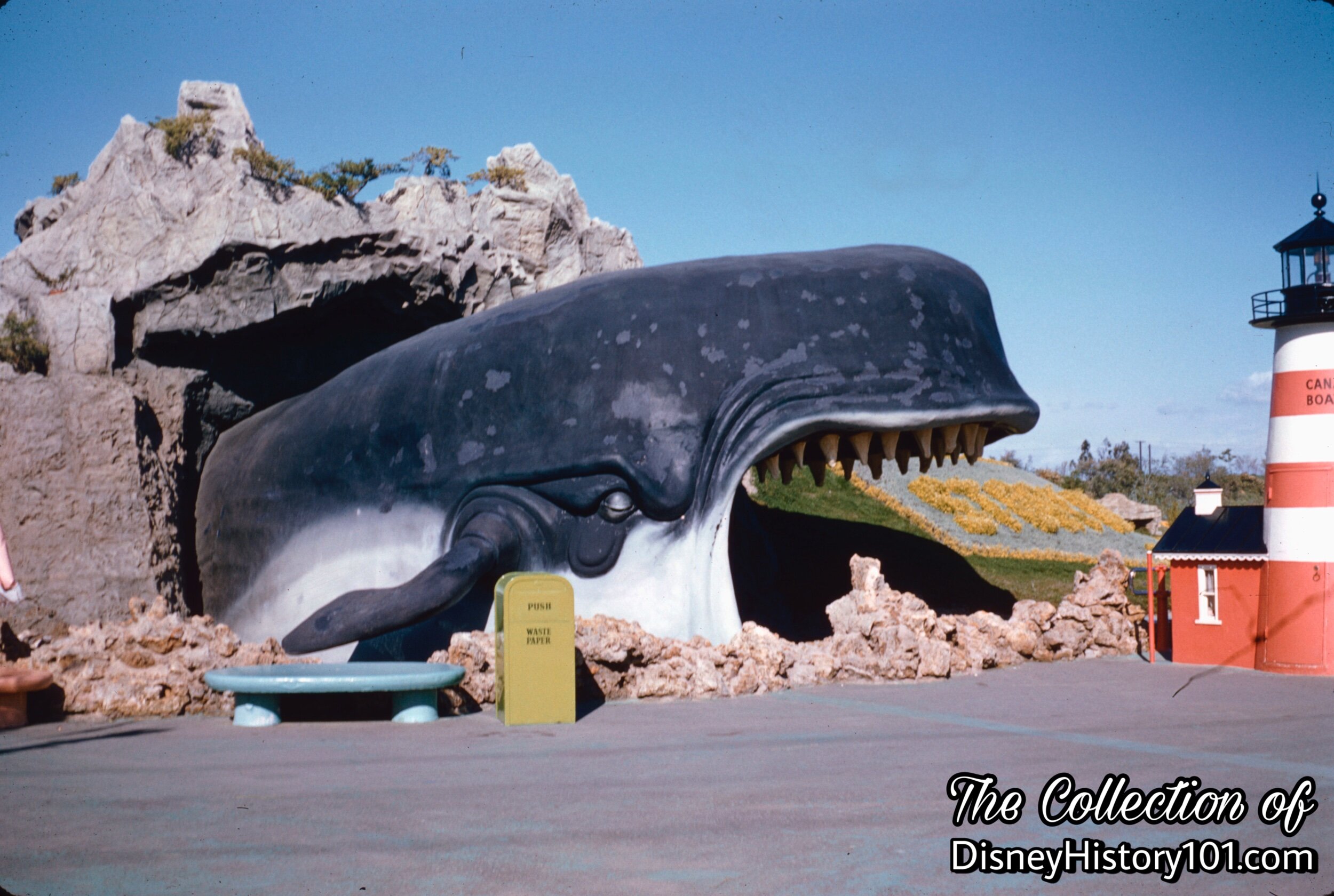
Monstro the Whale and Storybook Land Canal Boats Lighthouse Ticket Kiosk
One c.1957 Disneyland Holiday magazine article once described how “Monstro the Whale, once the terror of the deep in the story of ’Pinocchio’ has acquired a new and vastly different role at Disneyland - that of a friendly ’host’ to one of the Magic Kingdom’s favorite attractions Storybook Land.”
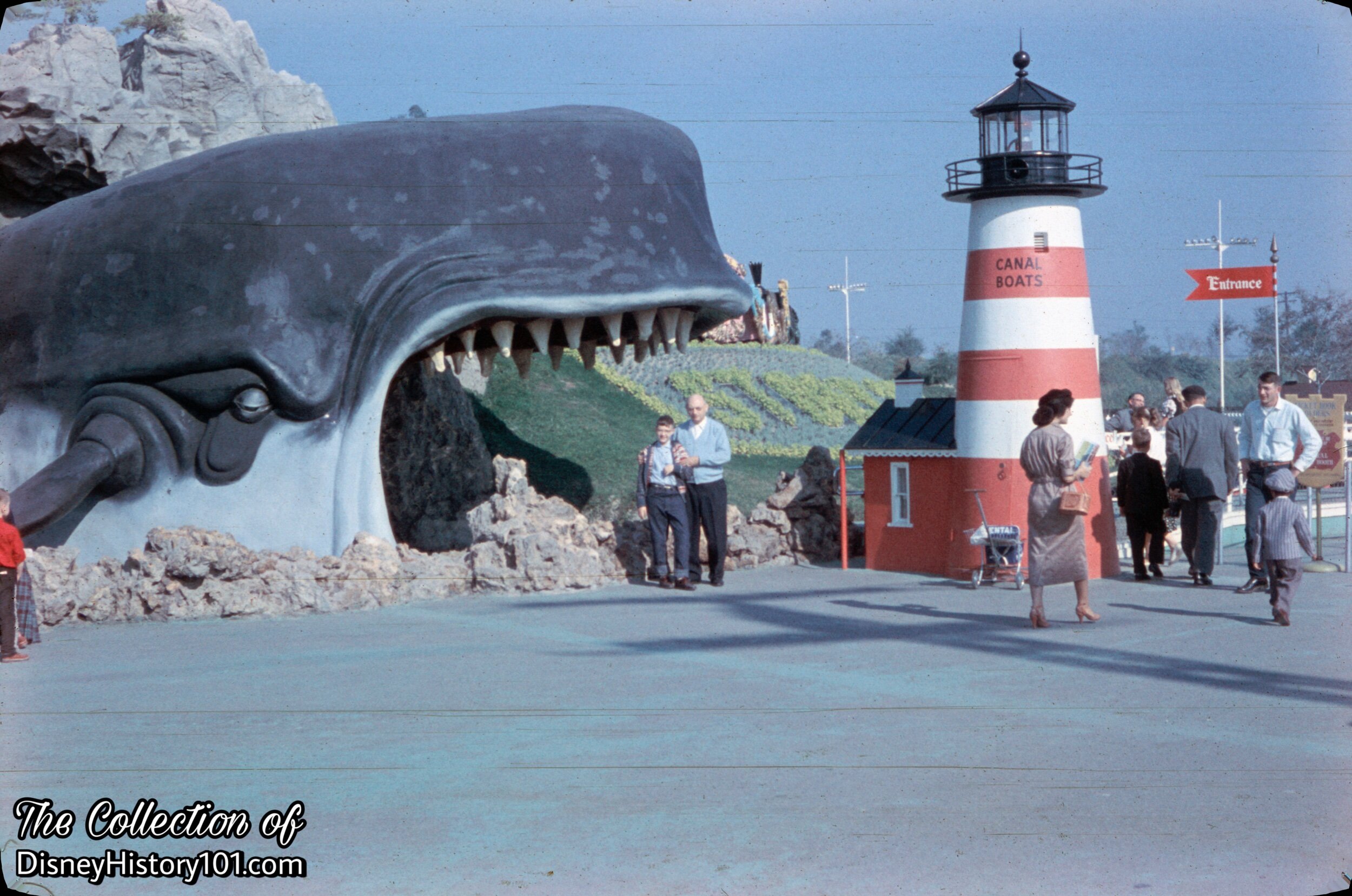
Storybook Land "Canal Boats" Lighthouse Ticket Booth & Monstro
Mario D’Amore remembered “working on the Canal Boats one day, when Walt came by. Right away he noticed that the old whale was not spouting water and he wanted to know why? I told him that the wind was blowing water all over the Casey Jr.’s railroad tracks, and we had shut it off and Walt replied ‘ISPENT A LOT OF MONEY ON THAT SPOUTING WHALE AND I WANT IT GOING!’”
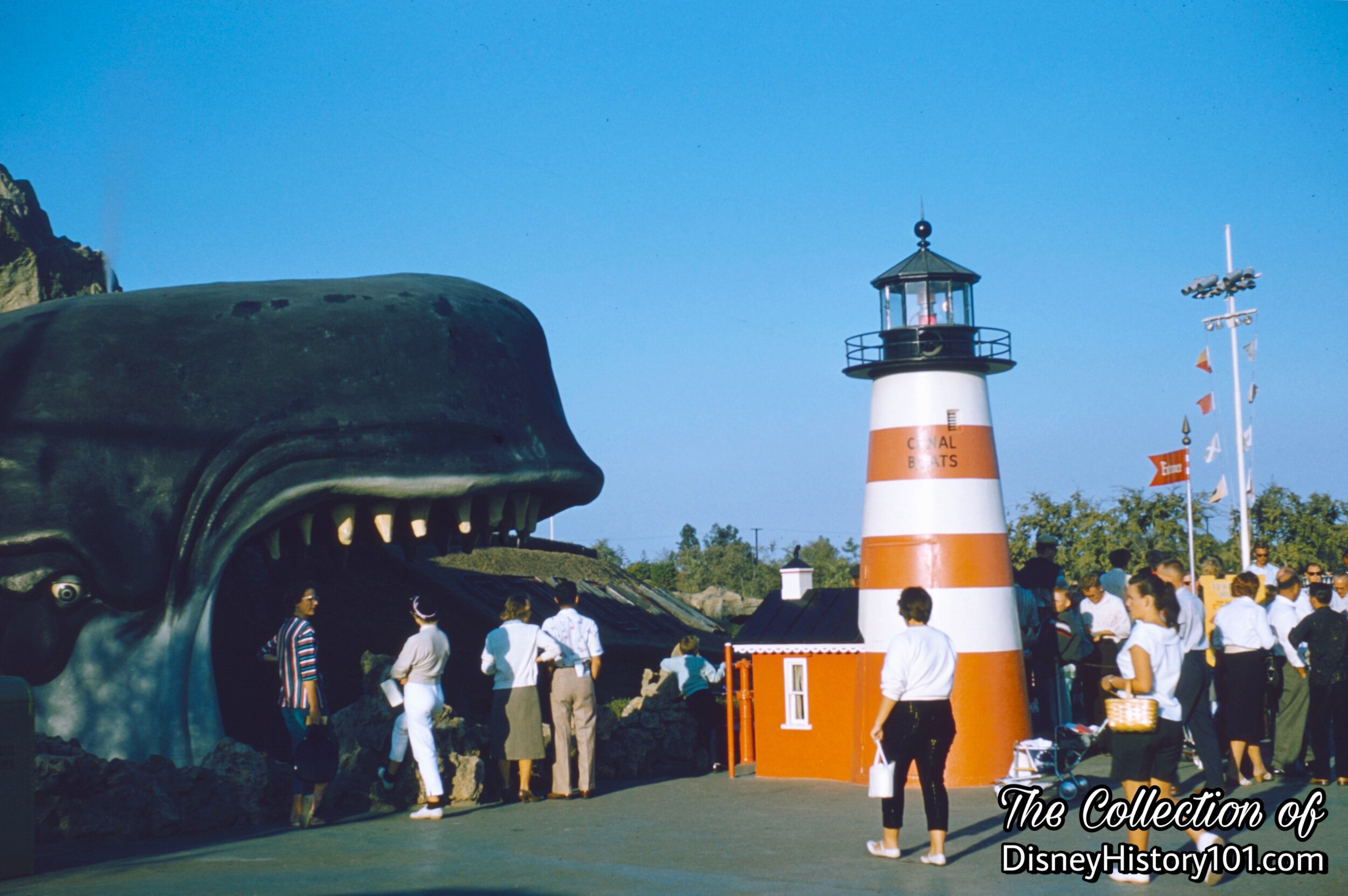
Storybook Land "Canal Boats" Lighthouse Ticket Booth & Monstro
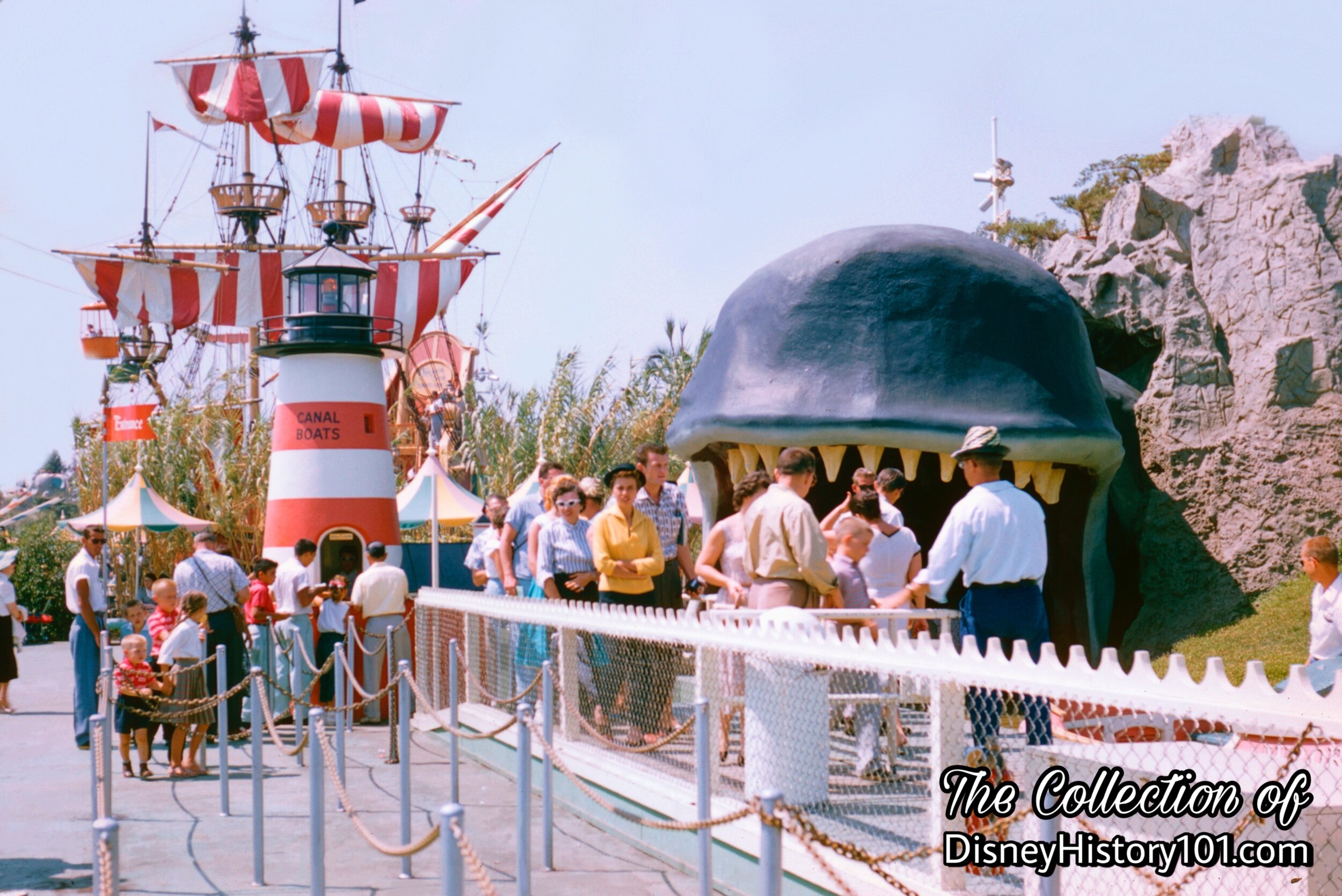
Monstro the Whale, Guest Control queue area, and Storybook Land Loading Dock

Storybook Land "Canal Boats" Lighthouse Ticket Booth & Monstro
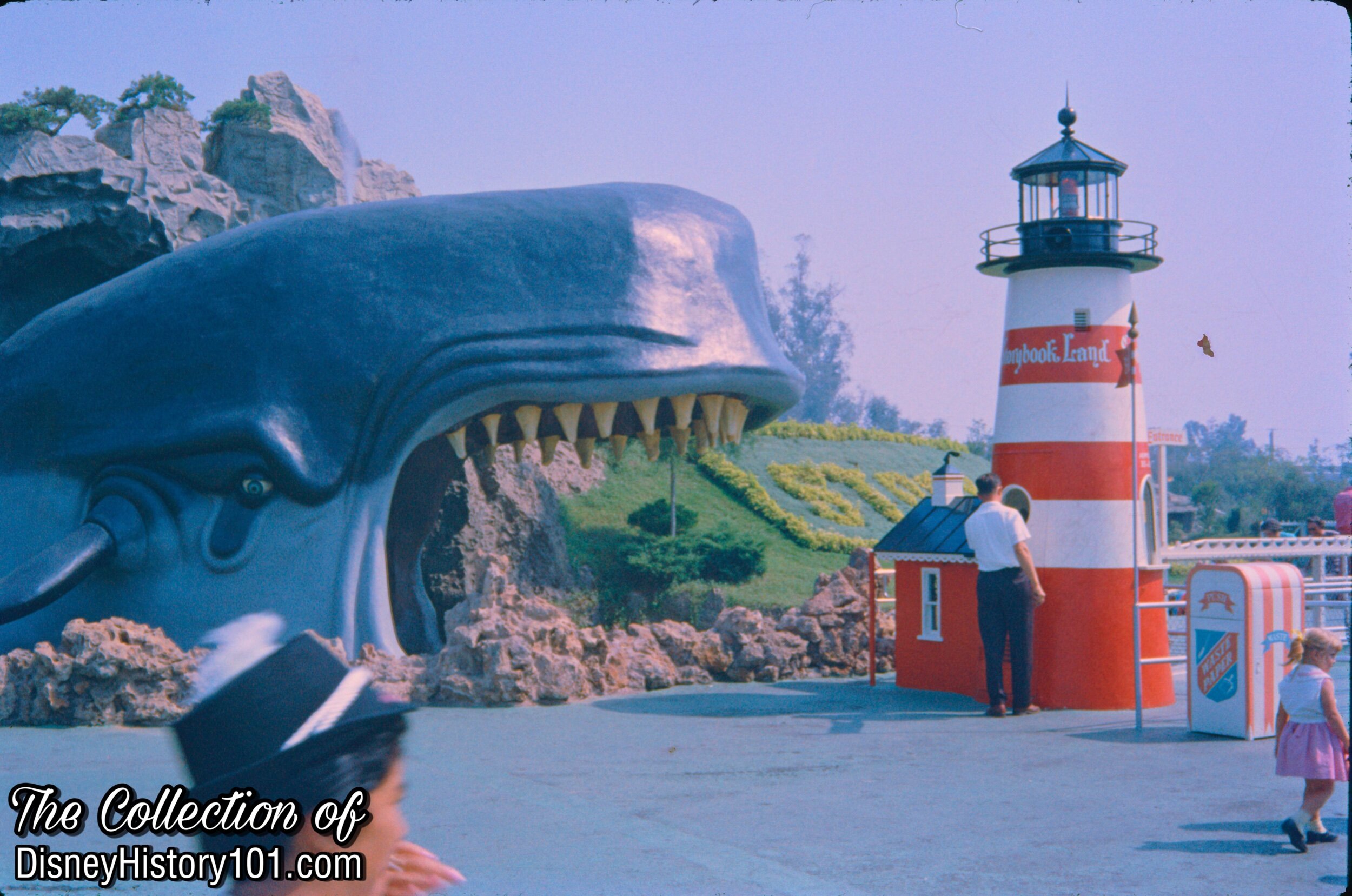
Storybook Land Lighthouse Ticket Booth & Monstro, 1959
You may recall the days when Monstro the Whale blew water from his spout in his attempt to dislodge himself from the seaside rocks.
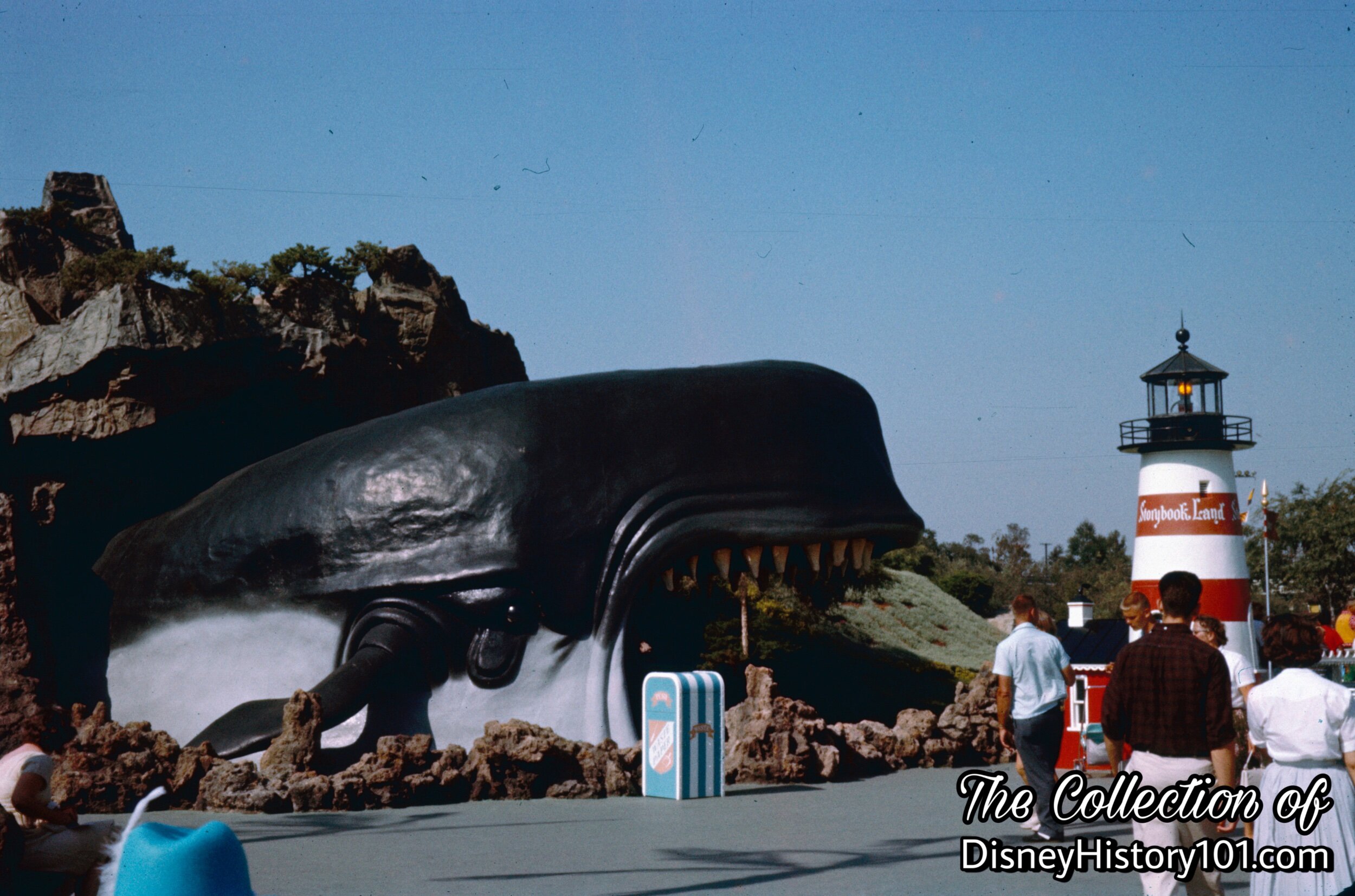
Storybook Land Lighthouse Ticket Booth
In those days, the bright orange beacon light atop the Lighthouse Ticket Booth would flash night or day.
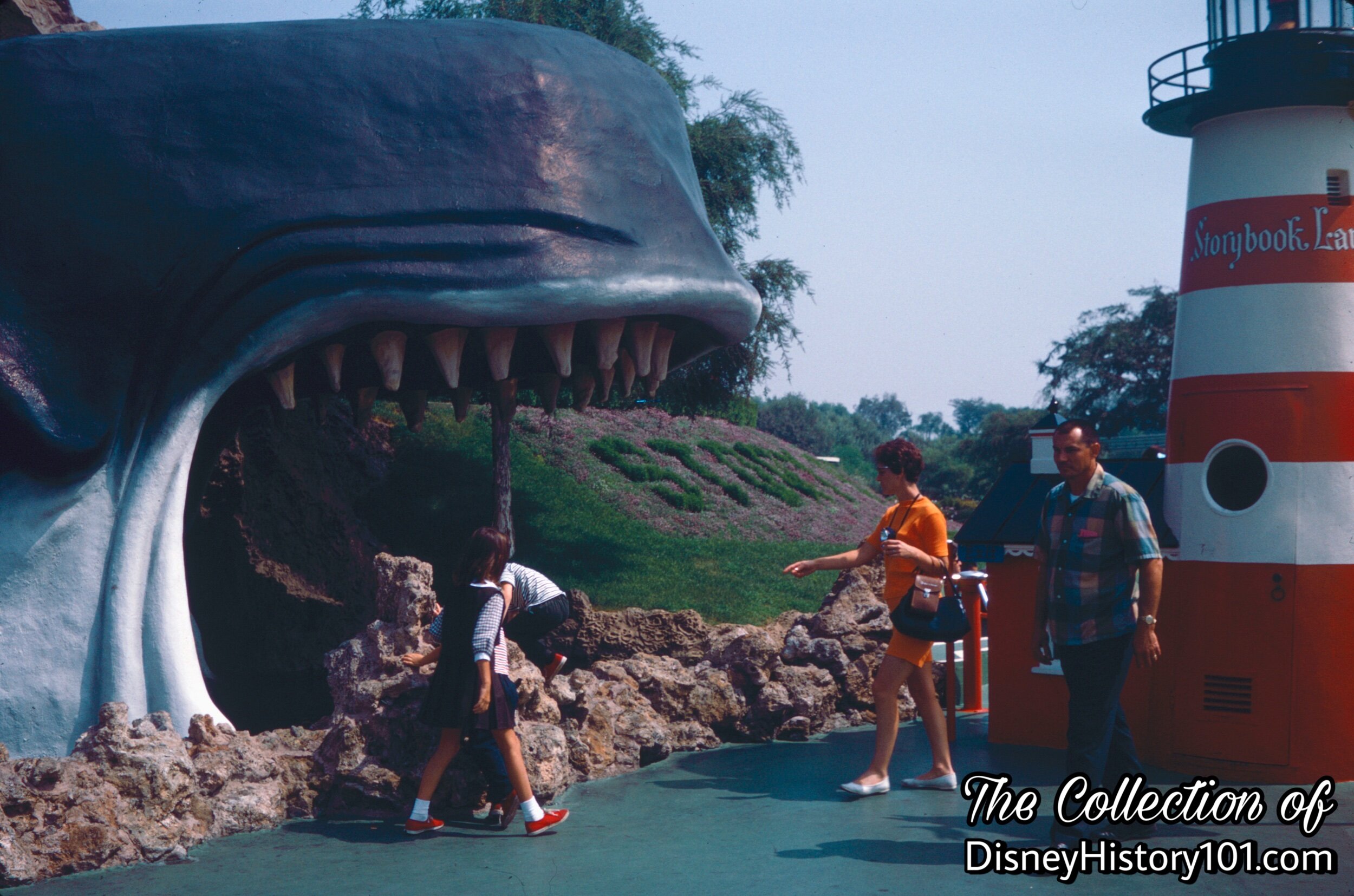
Storybook Land Lighthouse Ticket Booth, 1967
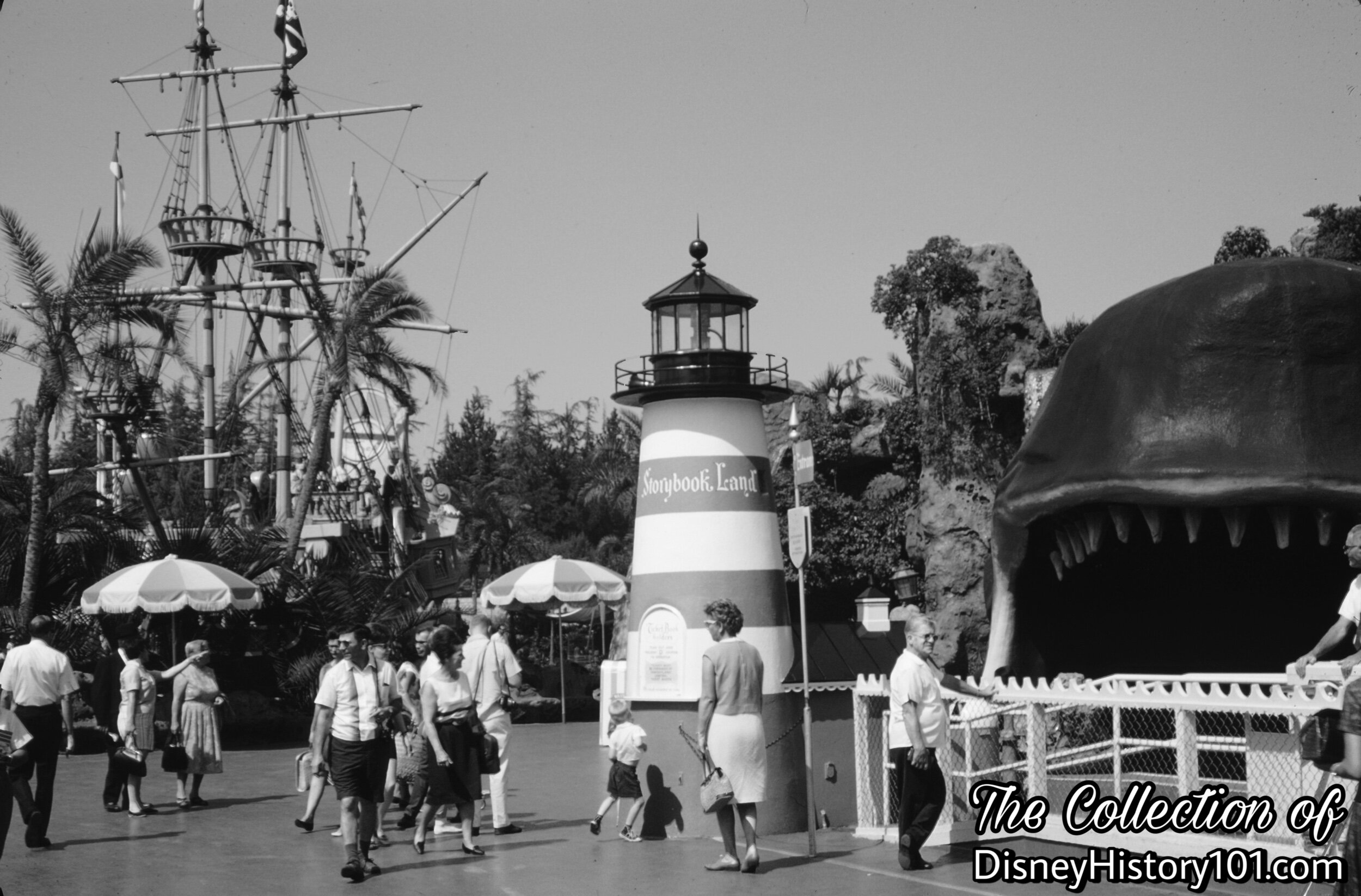
Storybook Land Lighthouse Ticket Booth
Guests originally entered the queue here, near Monstro the Whale.
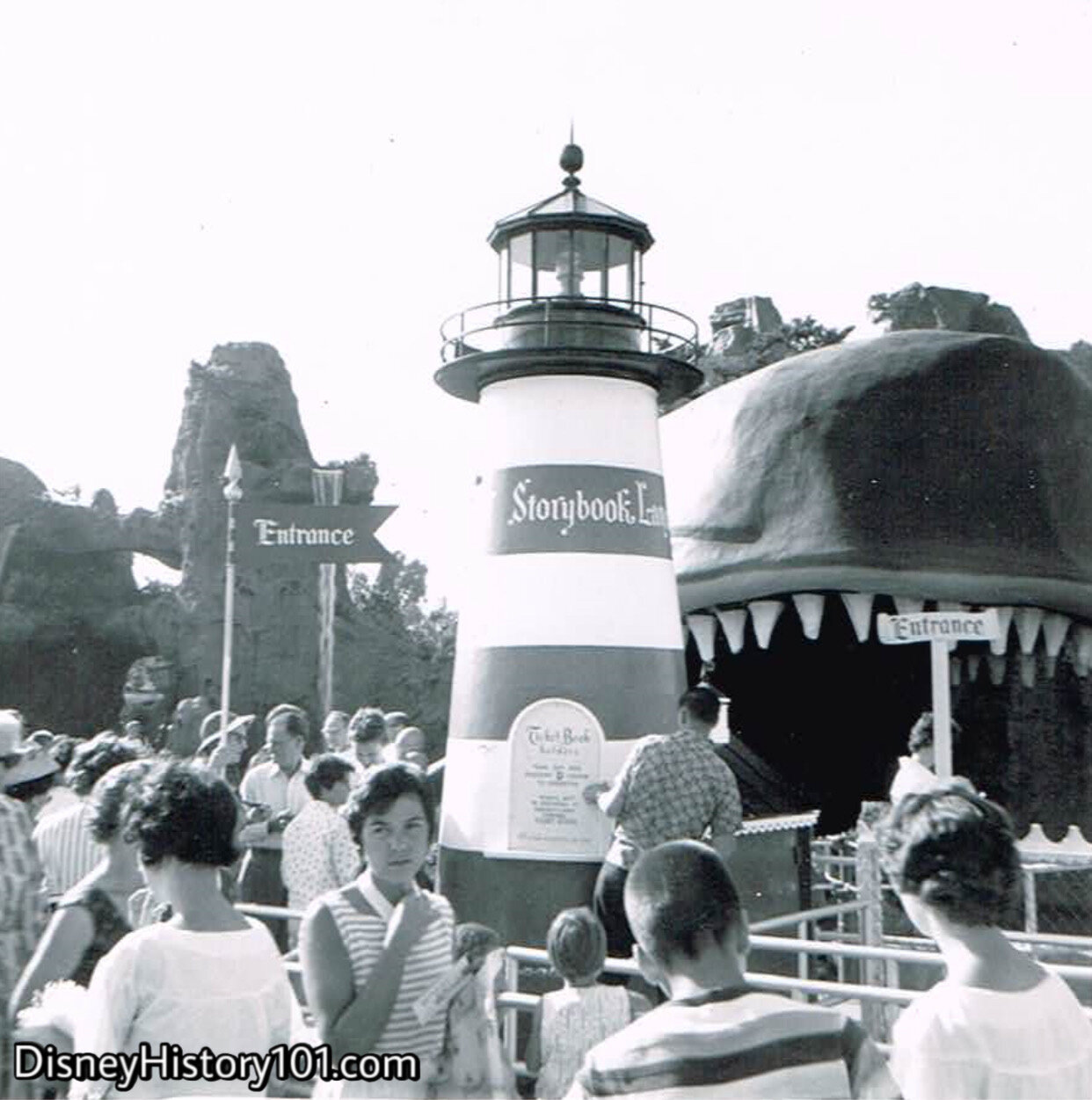
Storybook Land Lighthouse Ticket Booth, Guest Control queue area, and Monstro the Whale
During Disneyland’s early years, attractions had their own adjacent Ticket Booths. Storybook Land tickets were purchased through the lighthouse ticket booth.
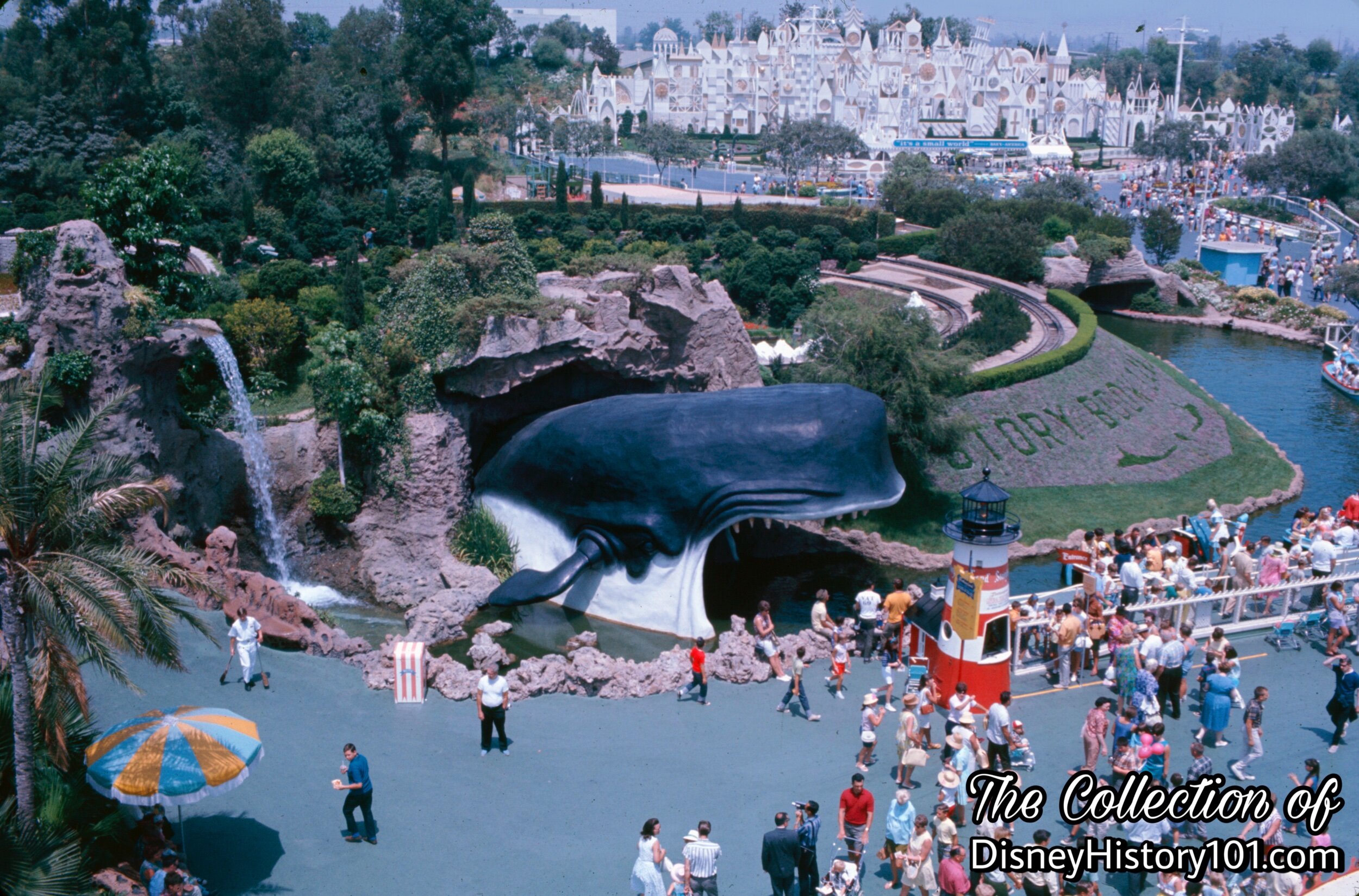
(1967)
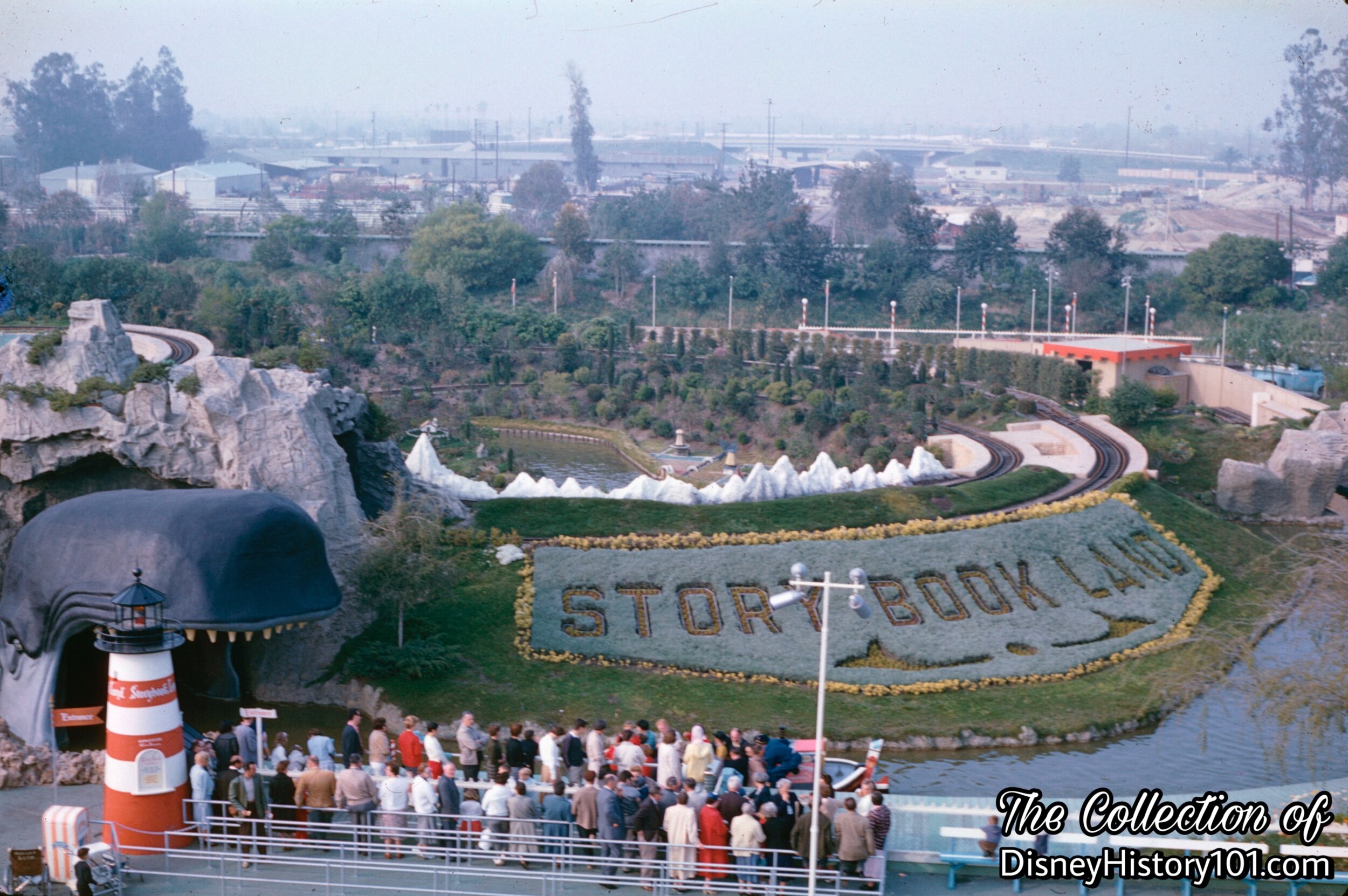
(1960)
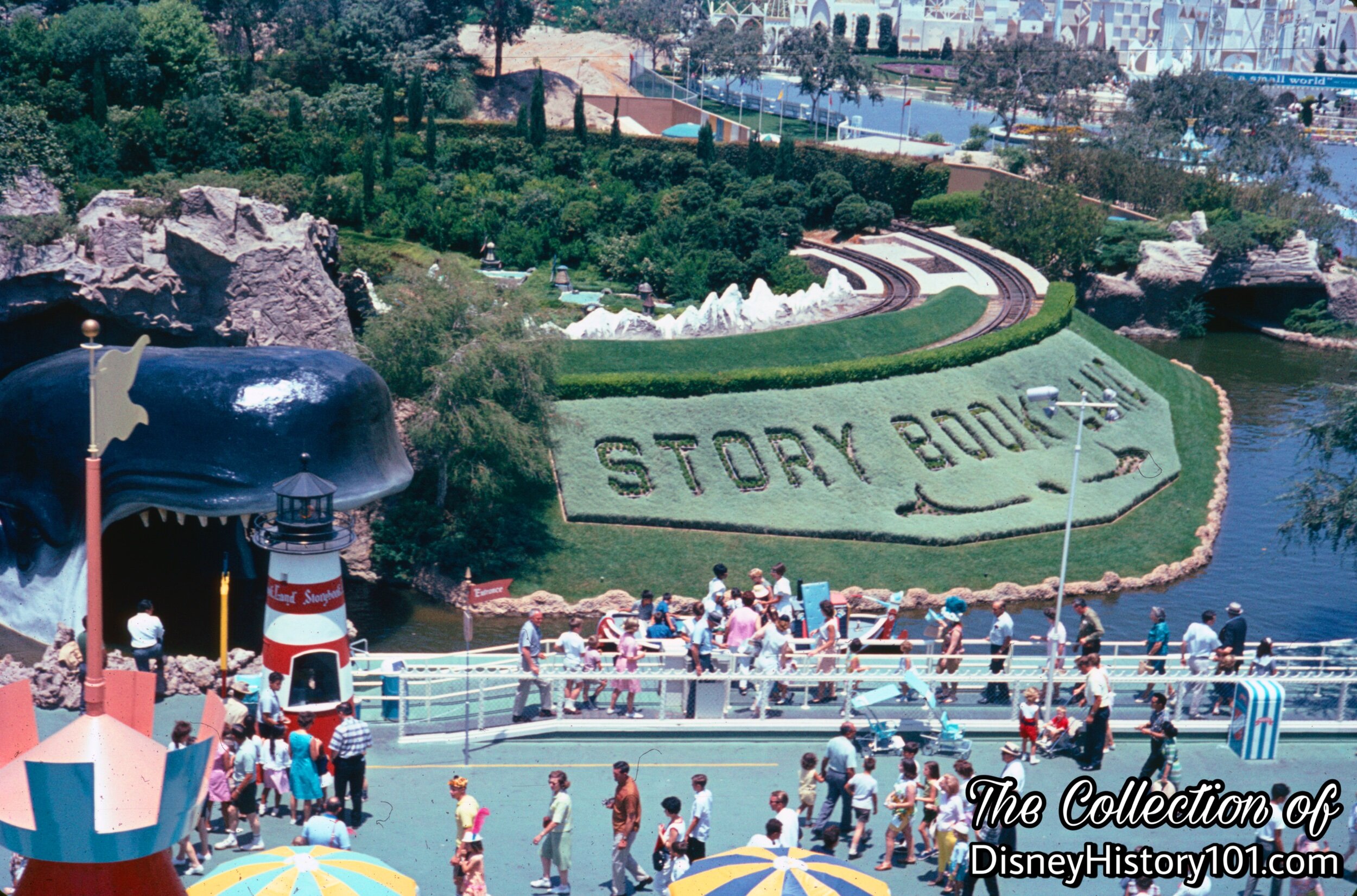
(1966)

1978
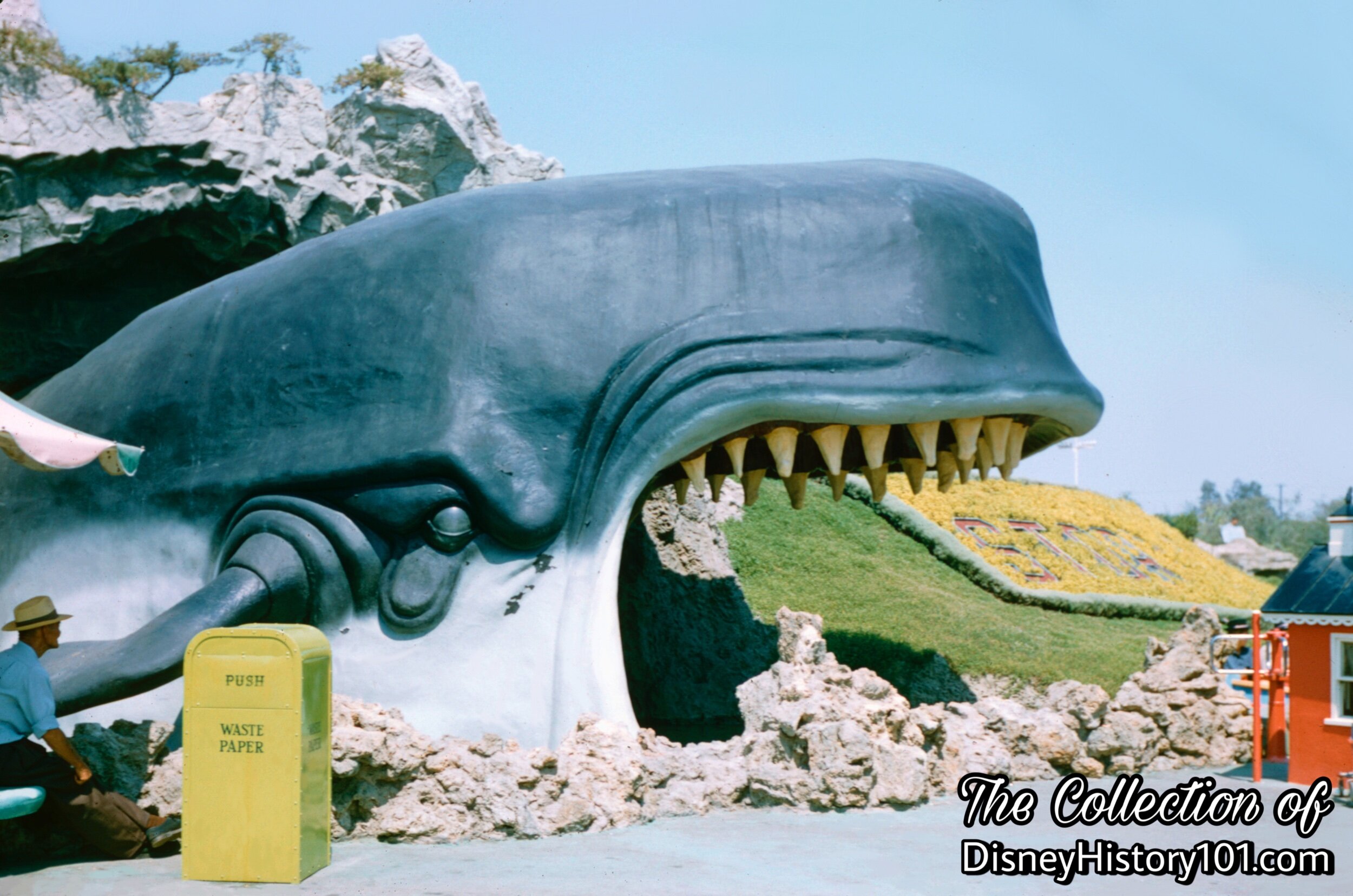
Monstro the Whale
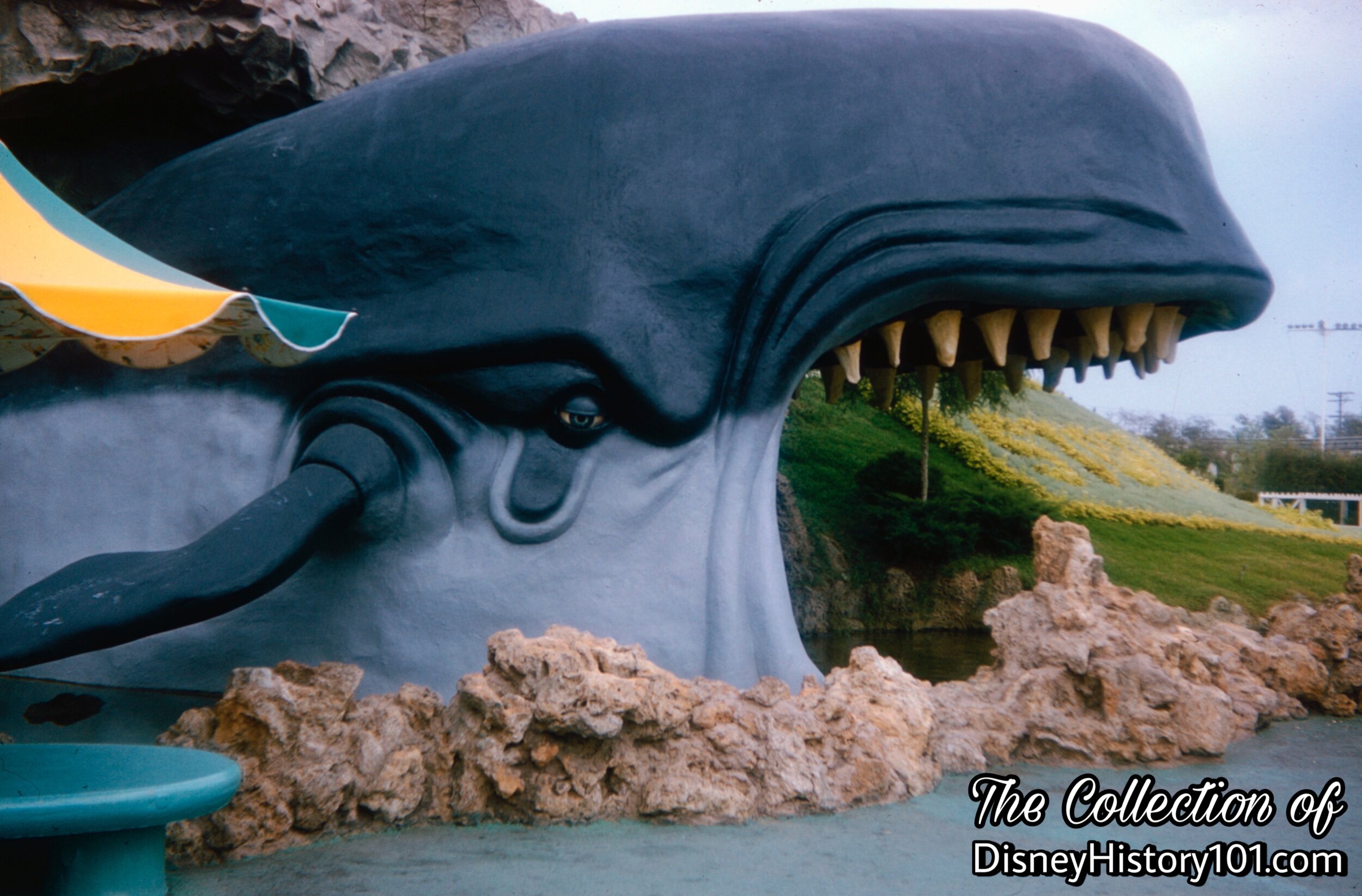
Monster the Whale
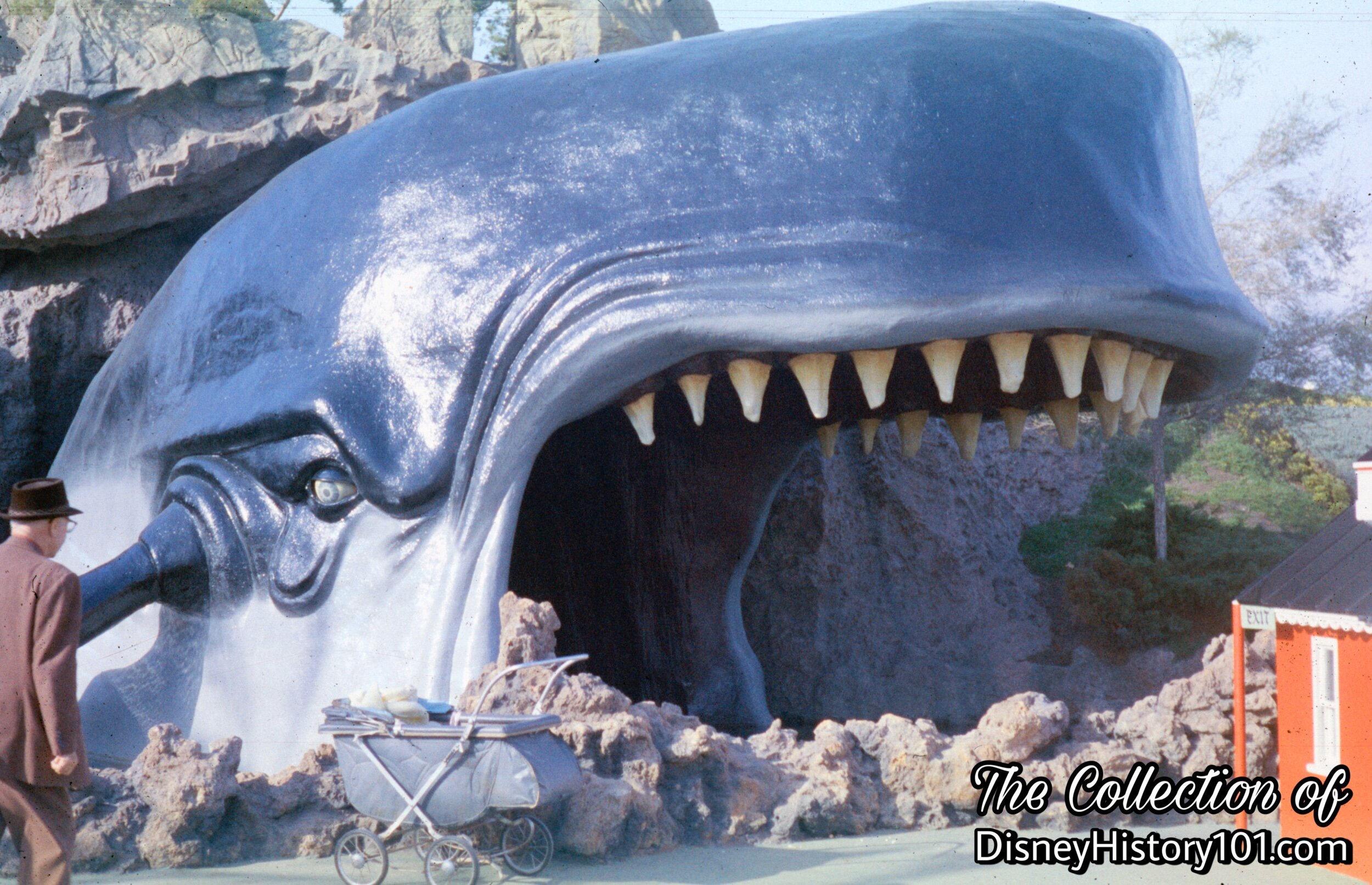
Monstro the Whale
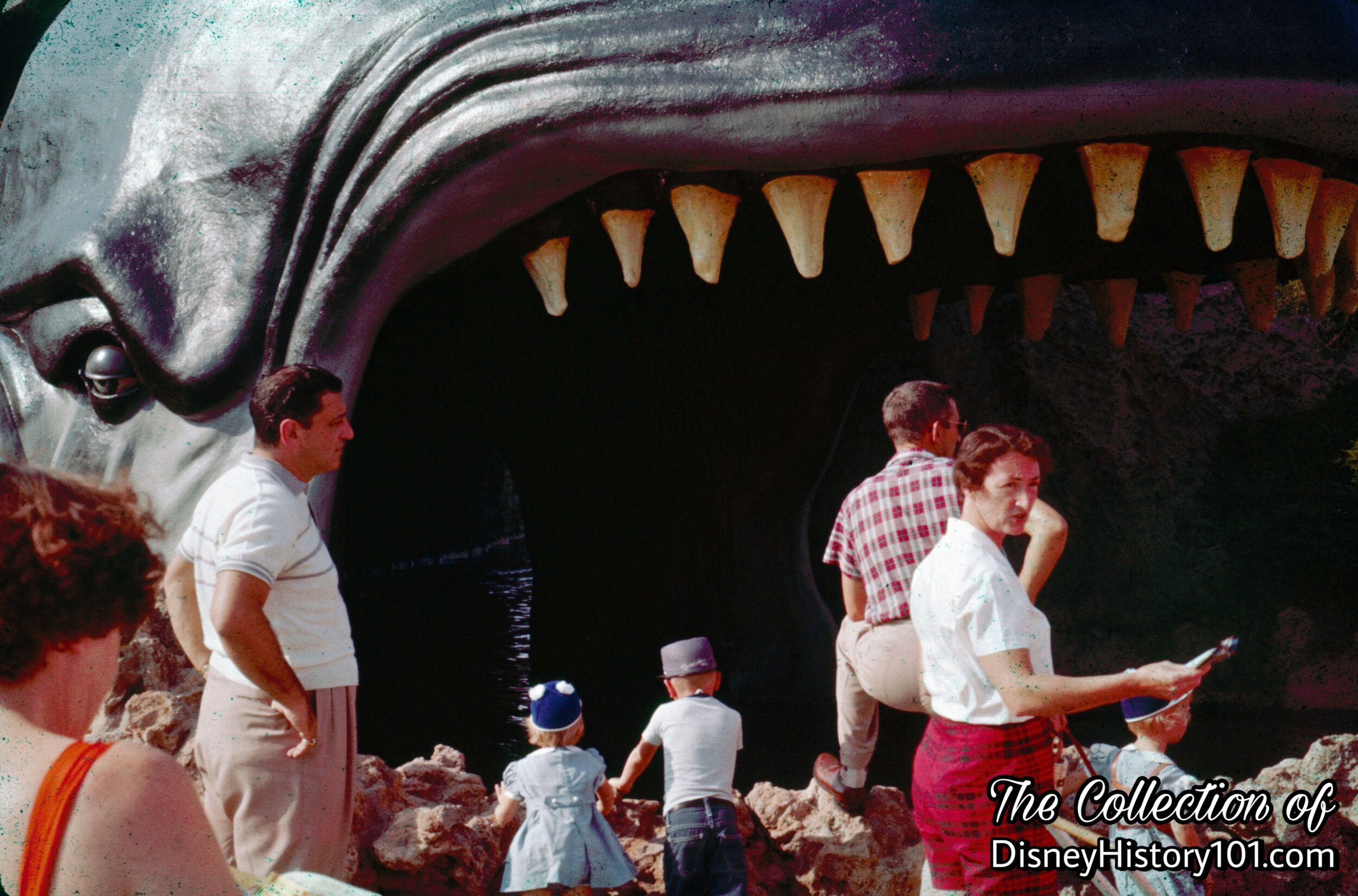
Guests Stare Into the Gaping Jaws of Monstro the Whale
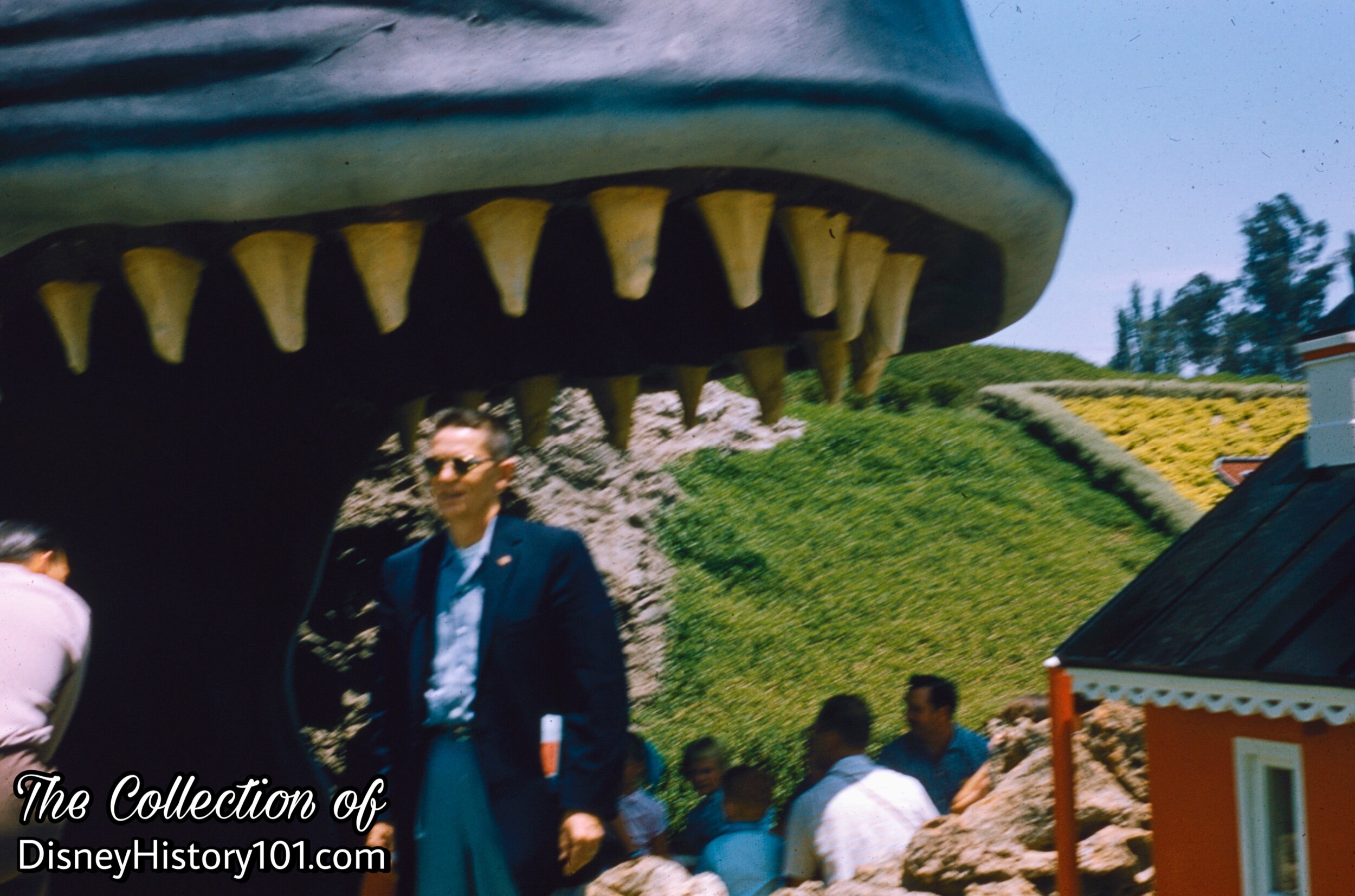
Monstro the Whale
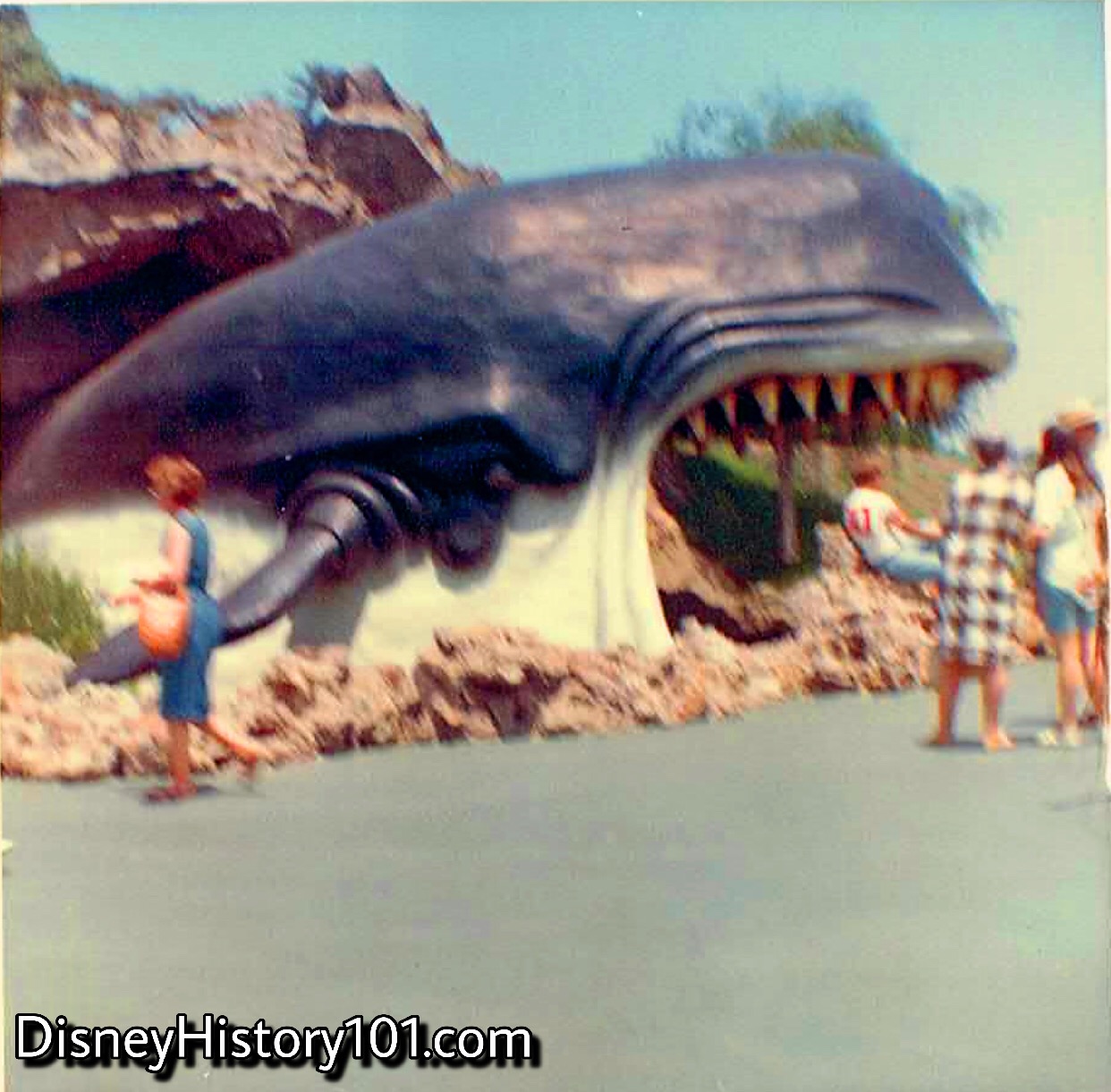
Monstro the Whale, 1967
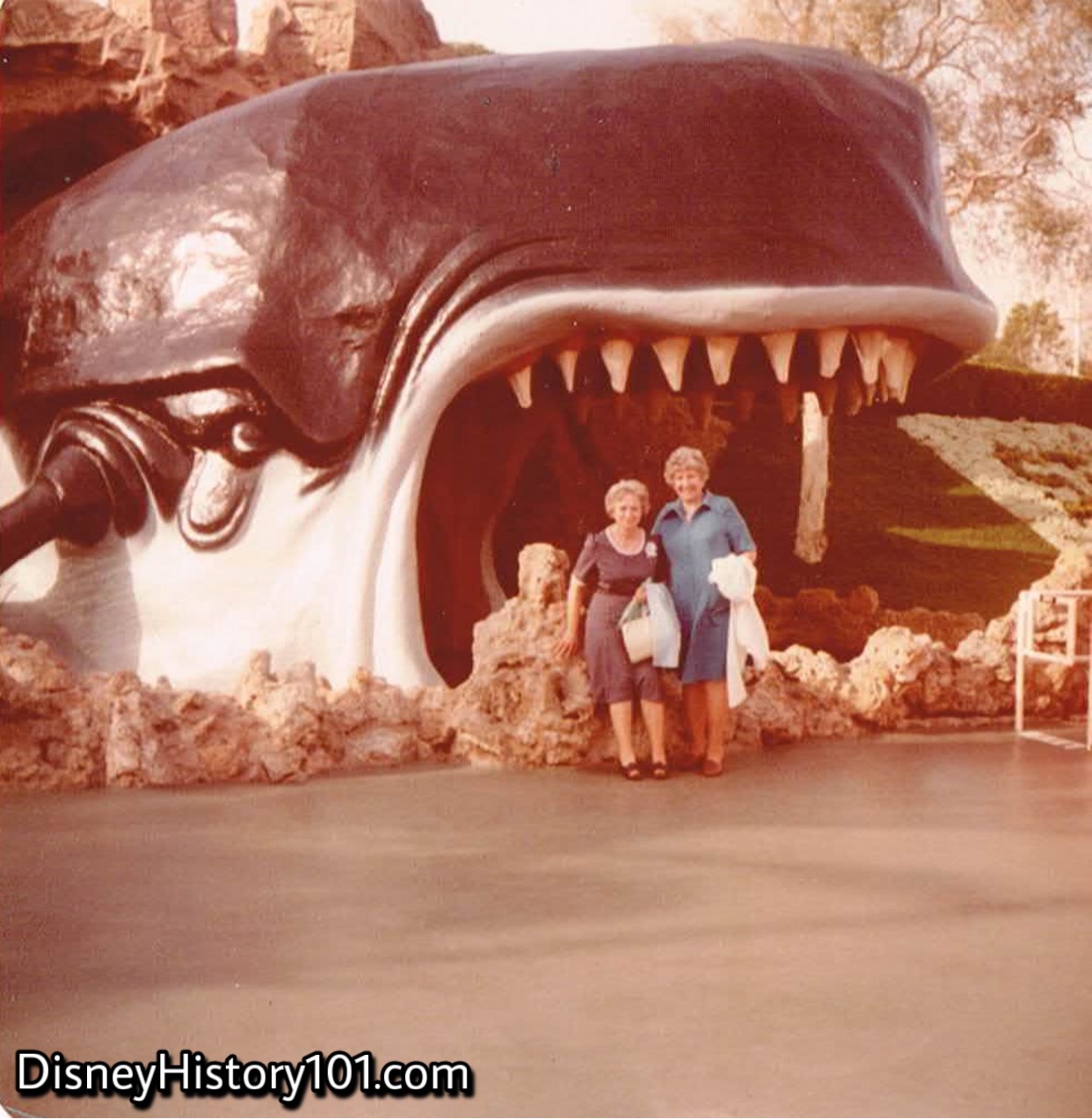
Monstro the Whale
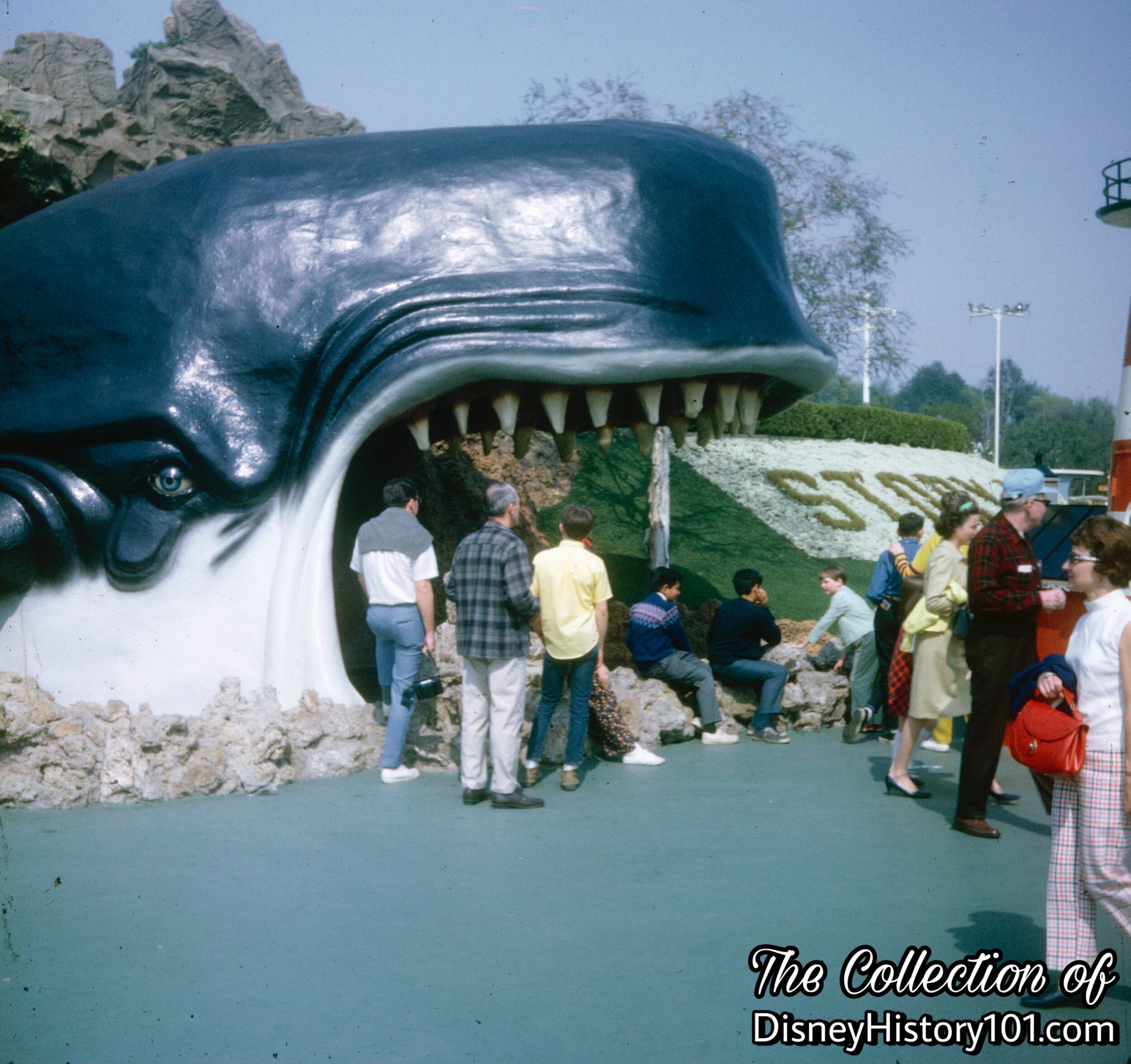
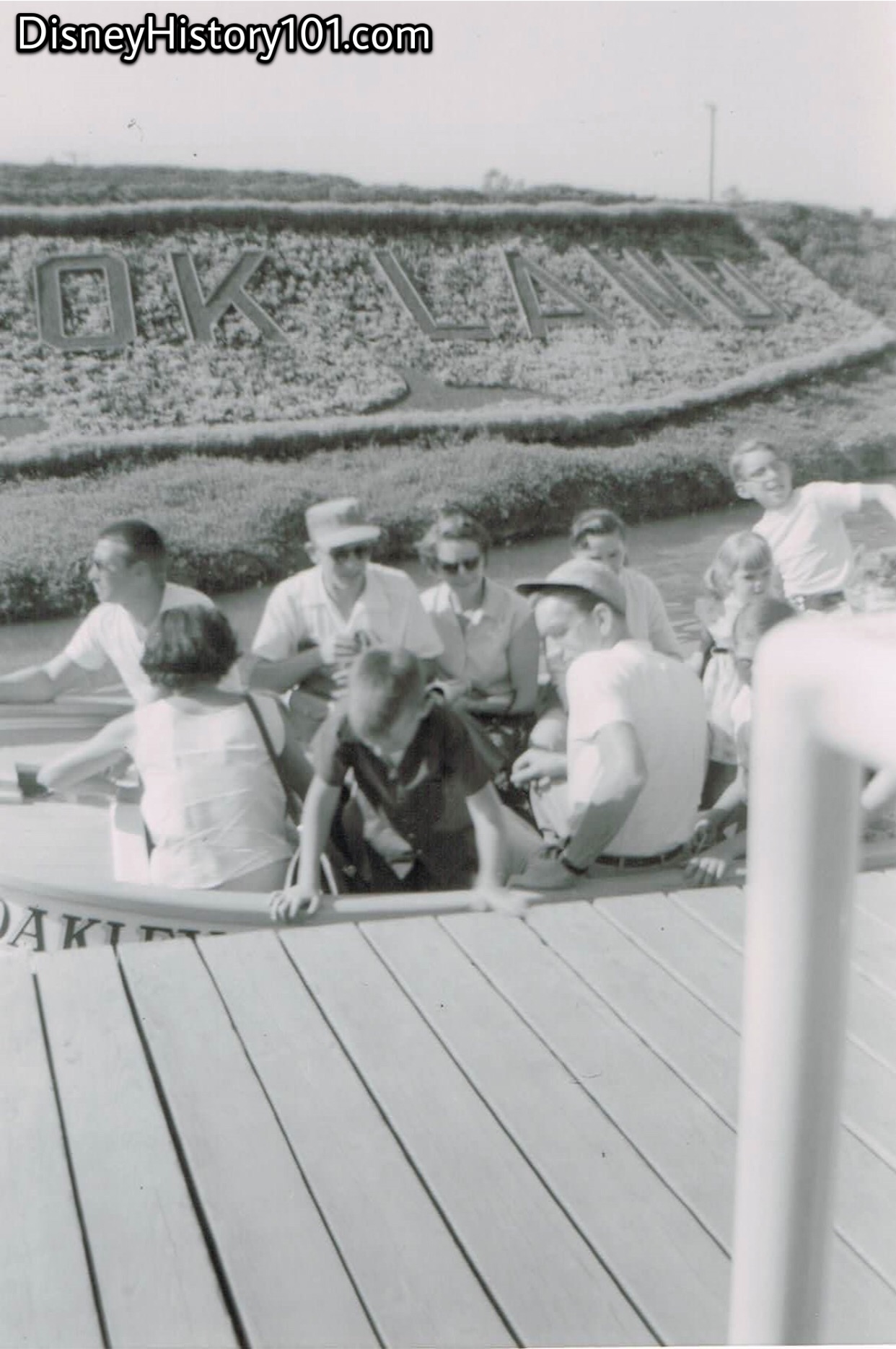
Storybook Land Canal Boat Dock
Just across the Loading Dock, we notice the freshly laid flowers of the Storybook Land letters on the hillside in the background.

Storybook Land Loading and Unloading Dock and Katrina
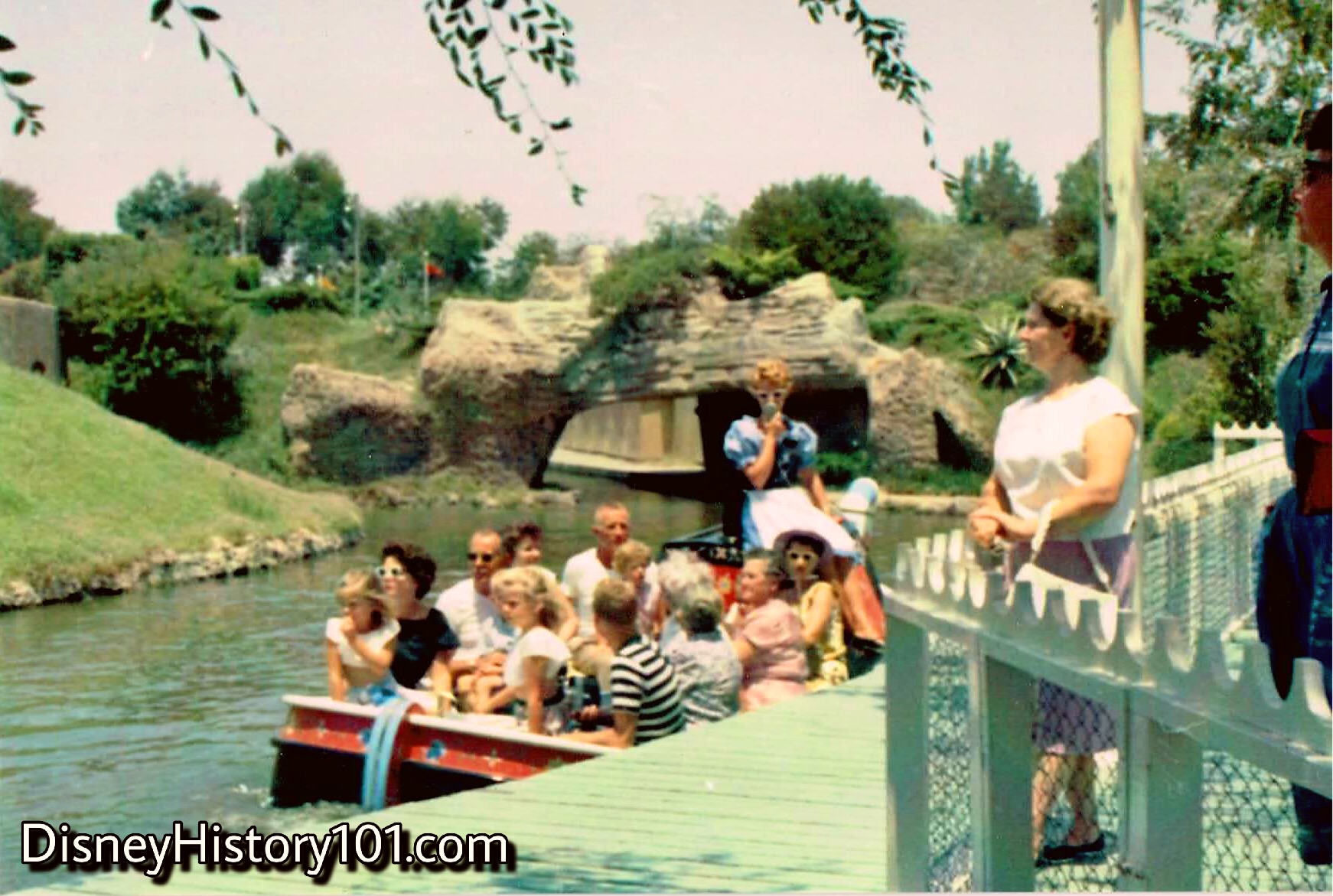
Storybook Land Canal Boat Dock
After the Midget Autopia was removed (in order to widen the thoroughfare leading to its a small world), the Storybook Land Loading Dock was moved in its place.
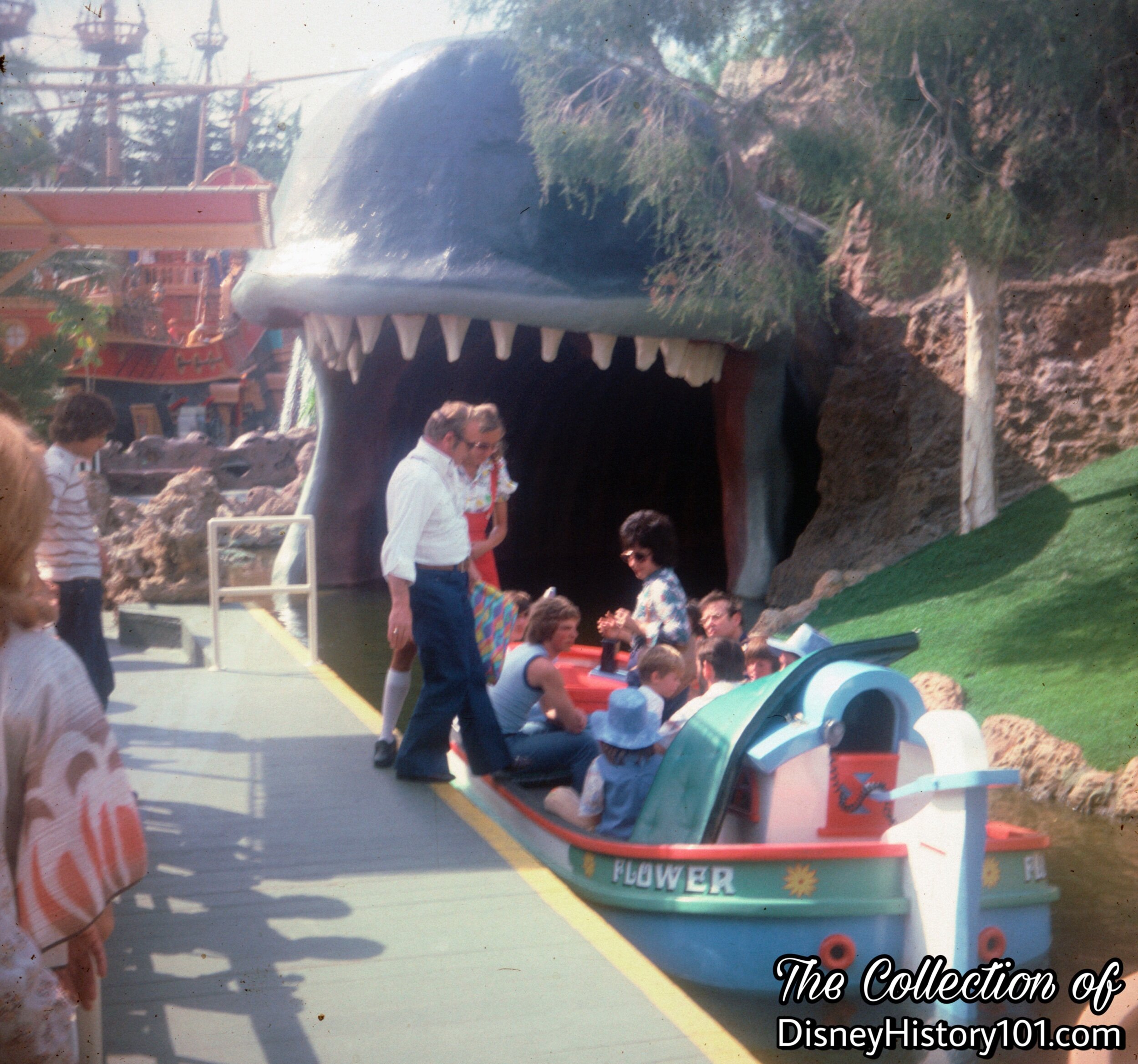
A Hostess assists a guest into the Flower Canal Boat at the Loading Dock
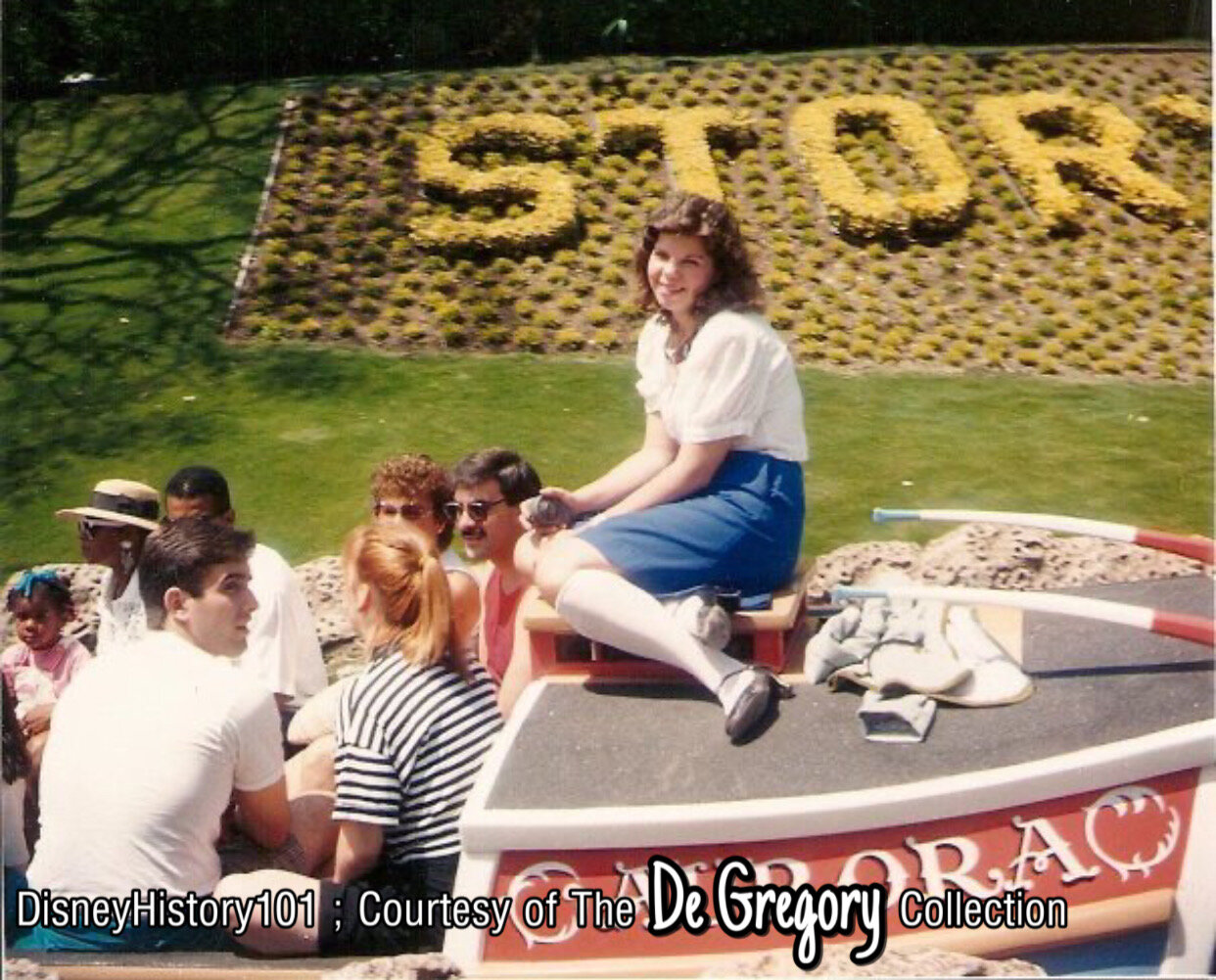
Former Storybook Land Canal Boat Hostess Desiree is ready to create a "little" happiness aboard the Aurora, mid 1980s.
This is when the Live Narration begins. According to one former Hostess, after boarding one of the gaily-colored Canal Boats, Guests hear : “Welcome to Storybook Land, everyone. My name is Desiree, and we are aboard the Aurora. Please keep your hands and arms inside the boat. Together we are going to visit the miniature world of fairy tales recreated from some of Walt Disney’s most famous motion picture classics.”
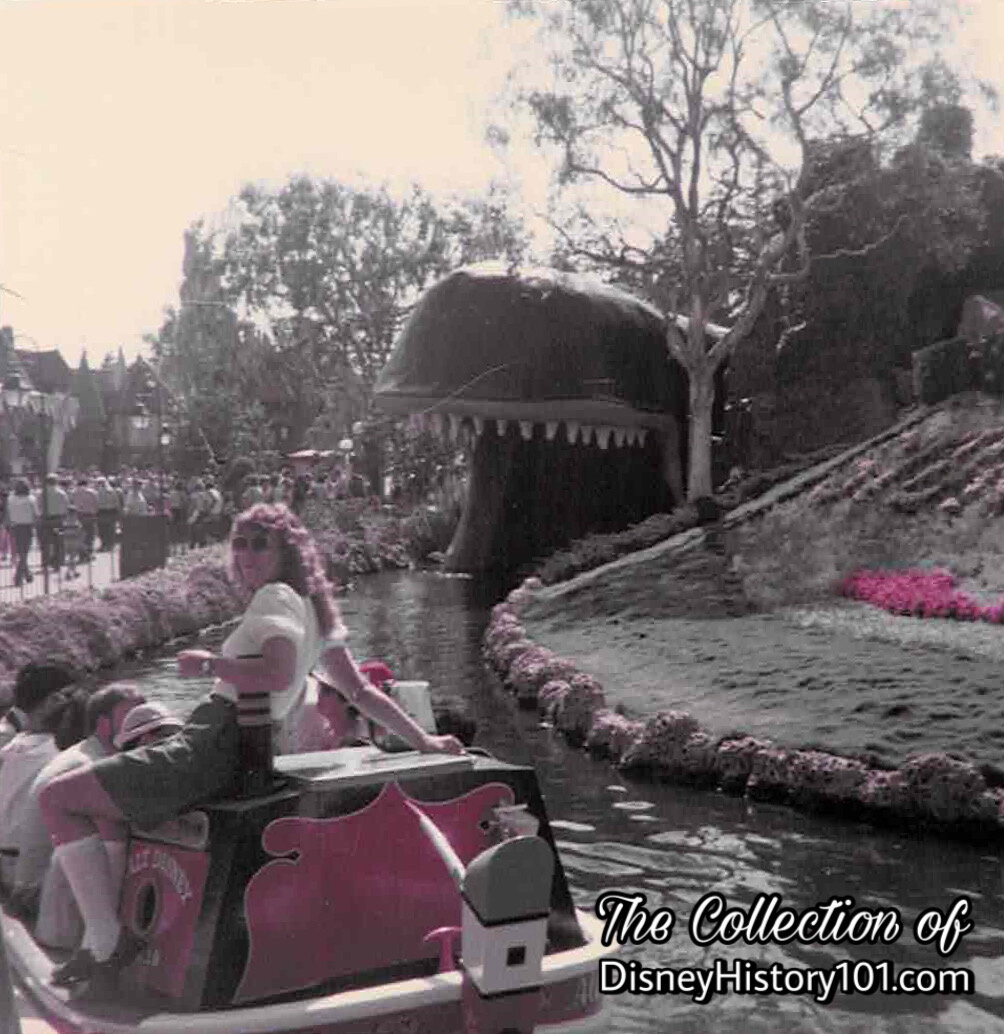
Storybook Land Canal Boat Hostess.
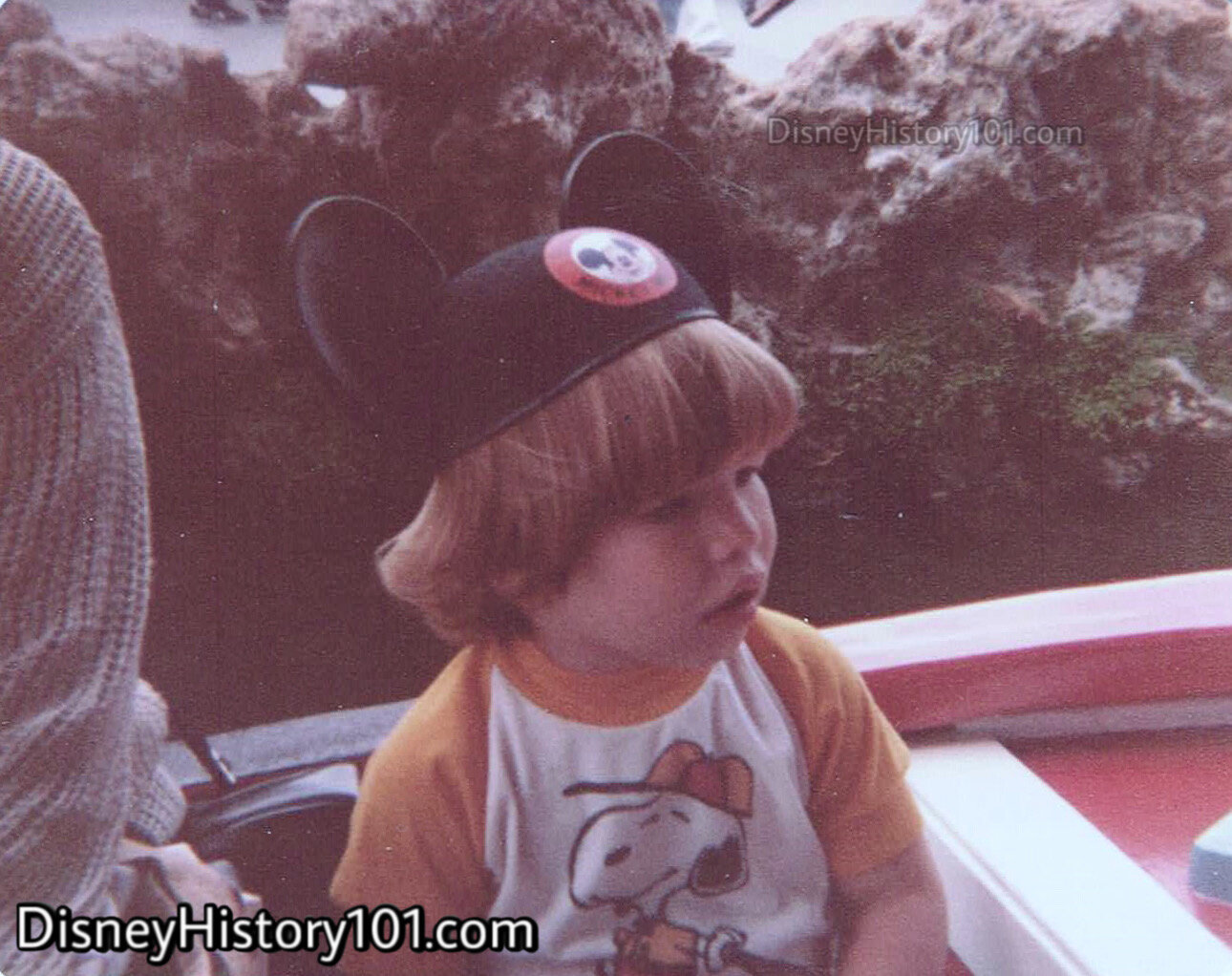
Storybook Land Canal Boat Guest, c. 1981-1982

The Storybook Land Floral Marquee, 1961
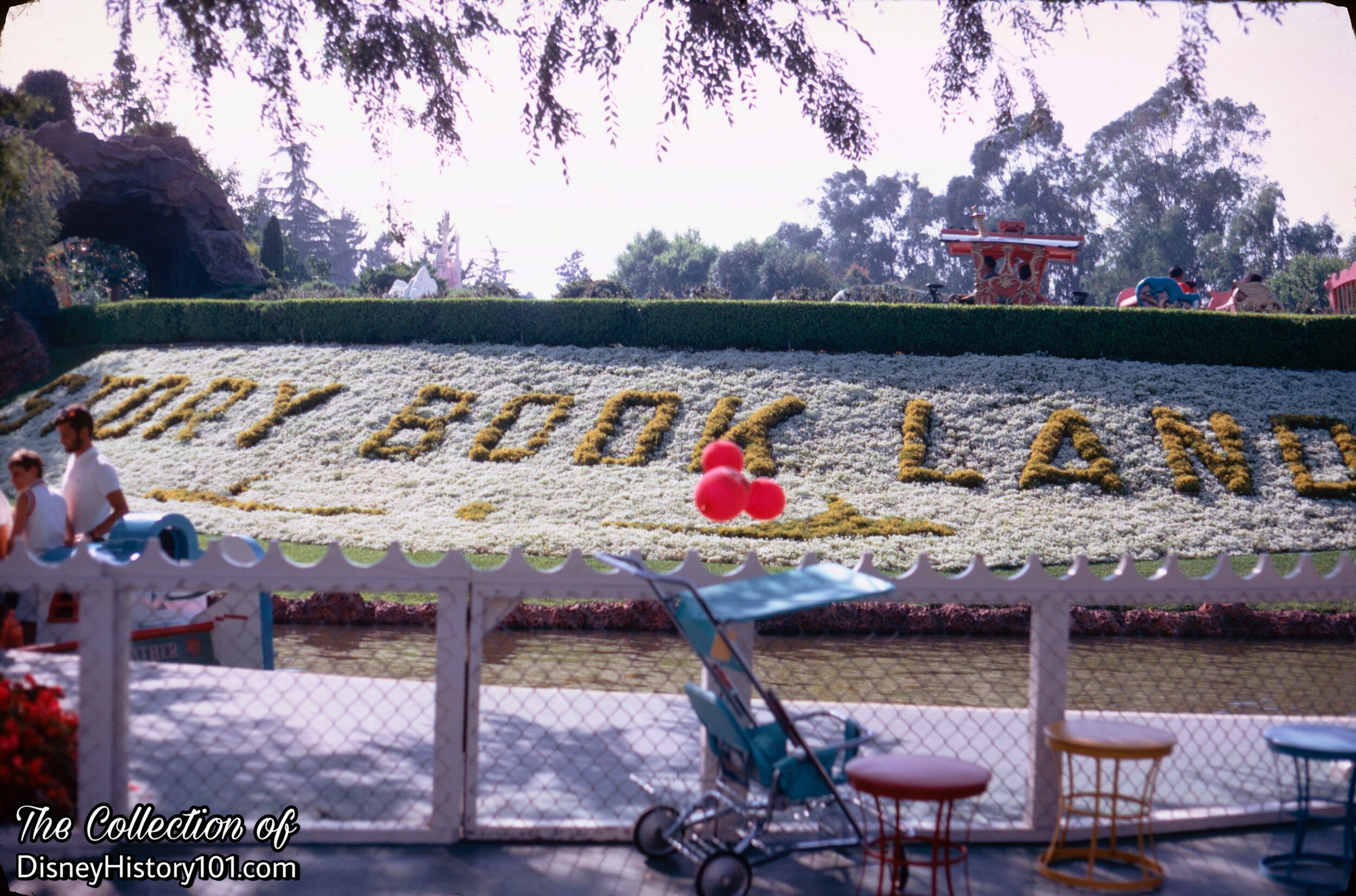
The Storybook Land Floral Marquee from the Dining Terrace, (July, 1969)
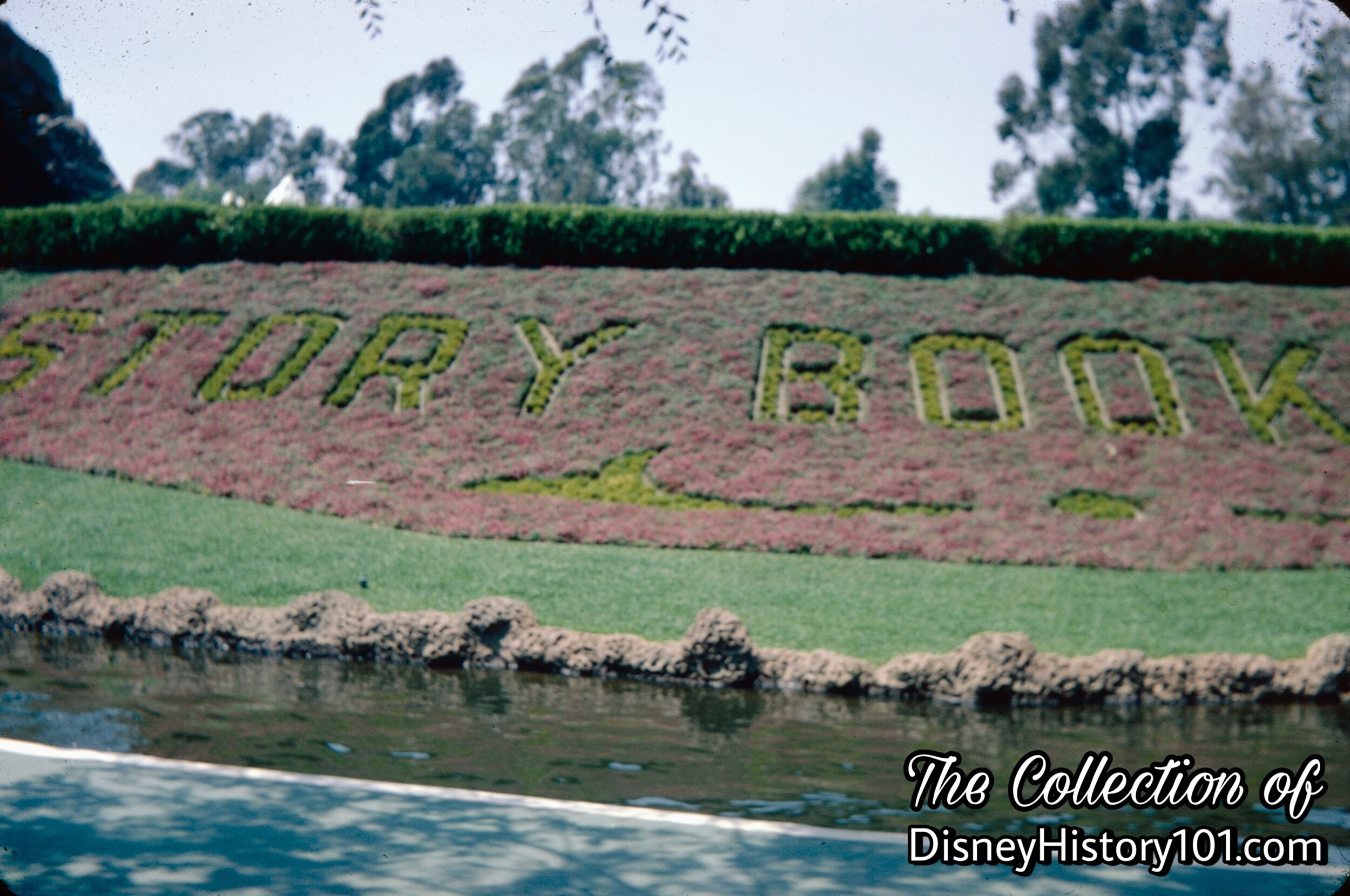
The Storybook Land Floral Marquee.
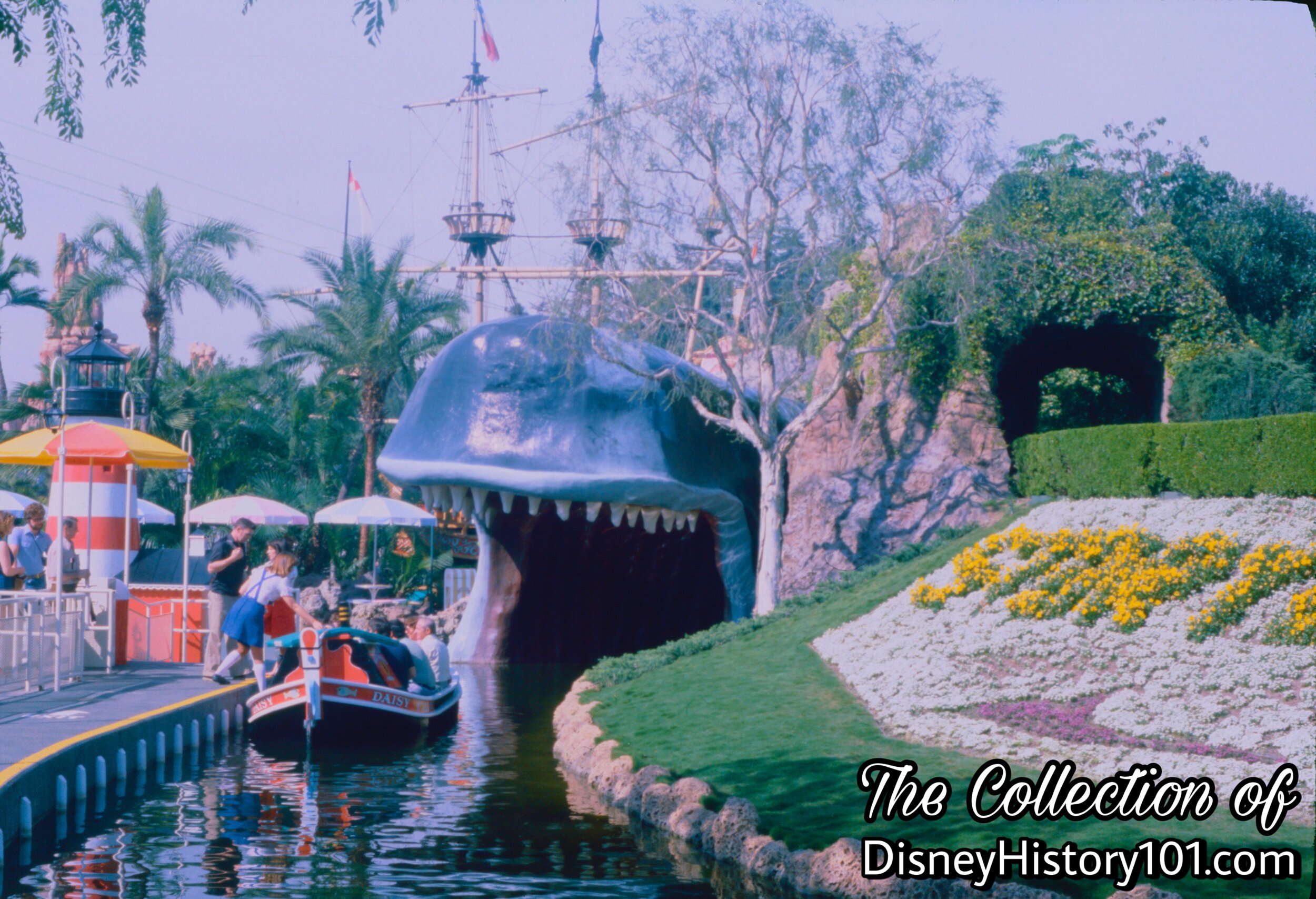
Monstro the Whale, (1980)
“To get there, though, we have to pass through Monstro, the very same whale that swallowed Pinocchio.”
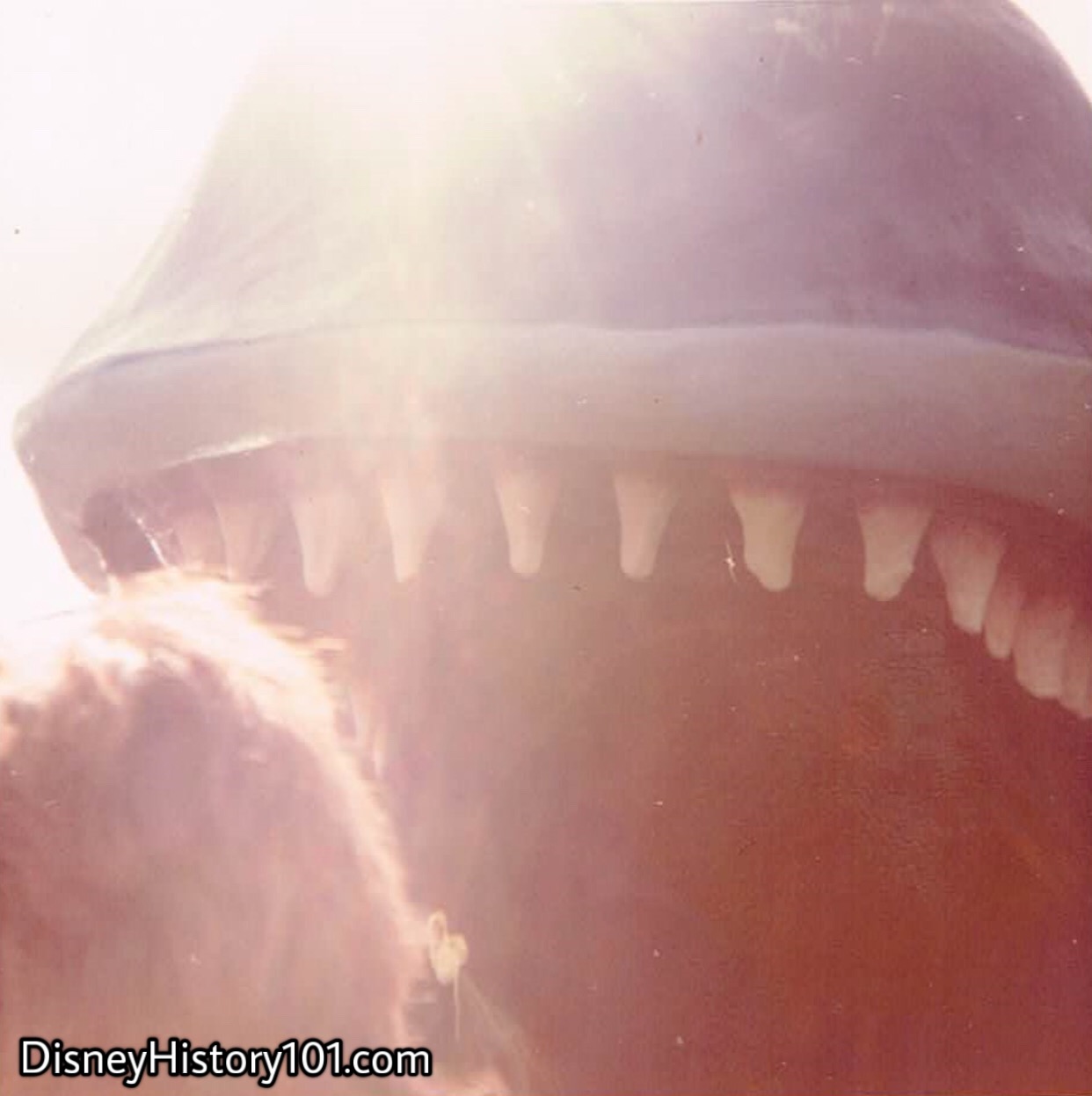
Monstro the Whale, (1972)
“Monstro the whale [“the terror of the deep”] prepares to swallow oncoming ships (and guests) whole!”
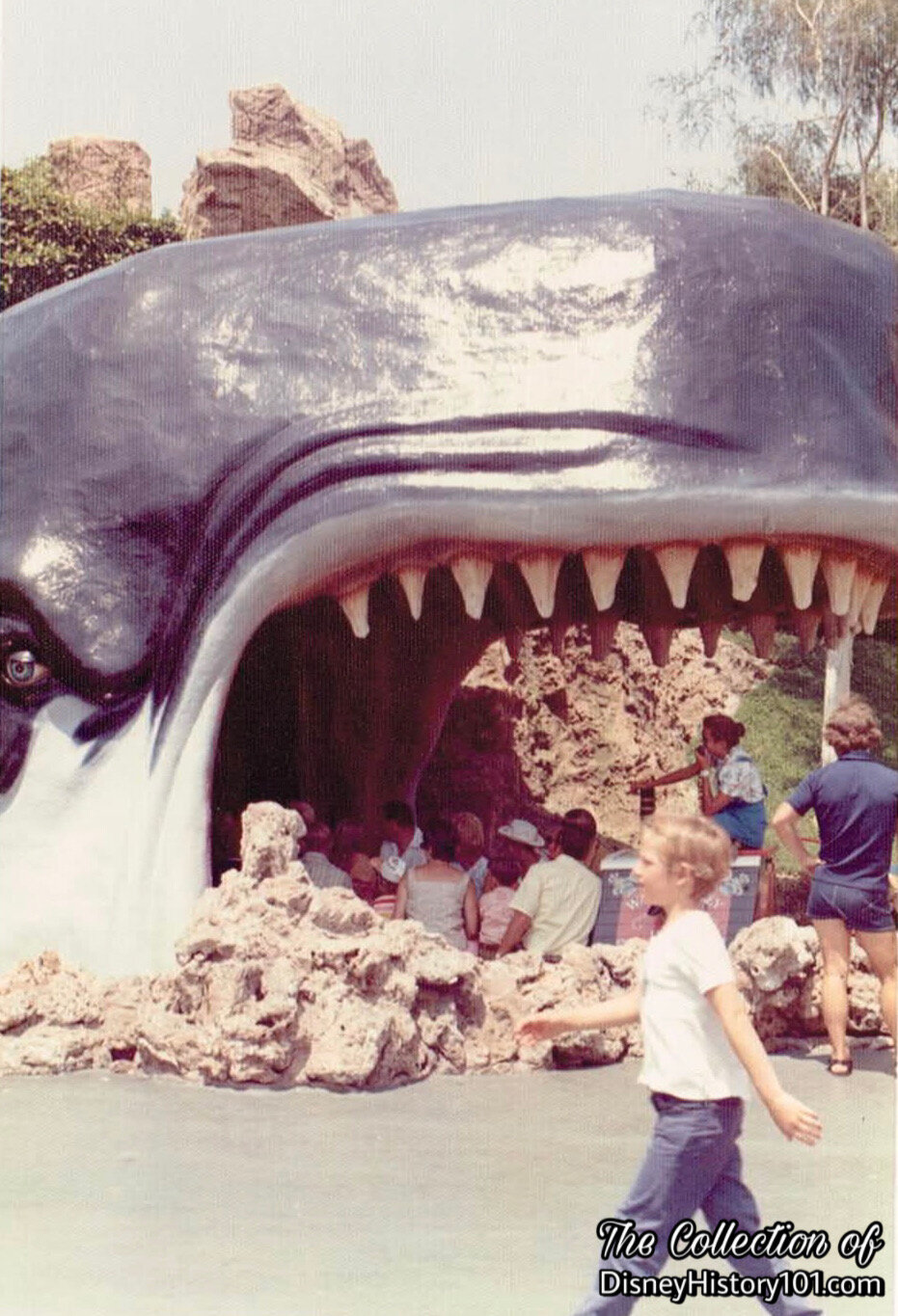
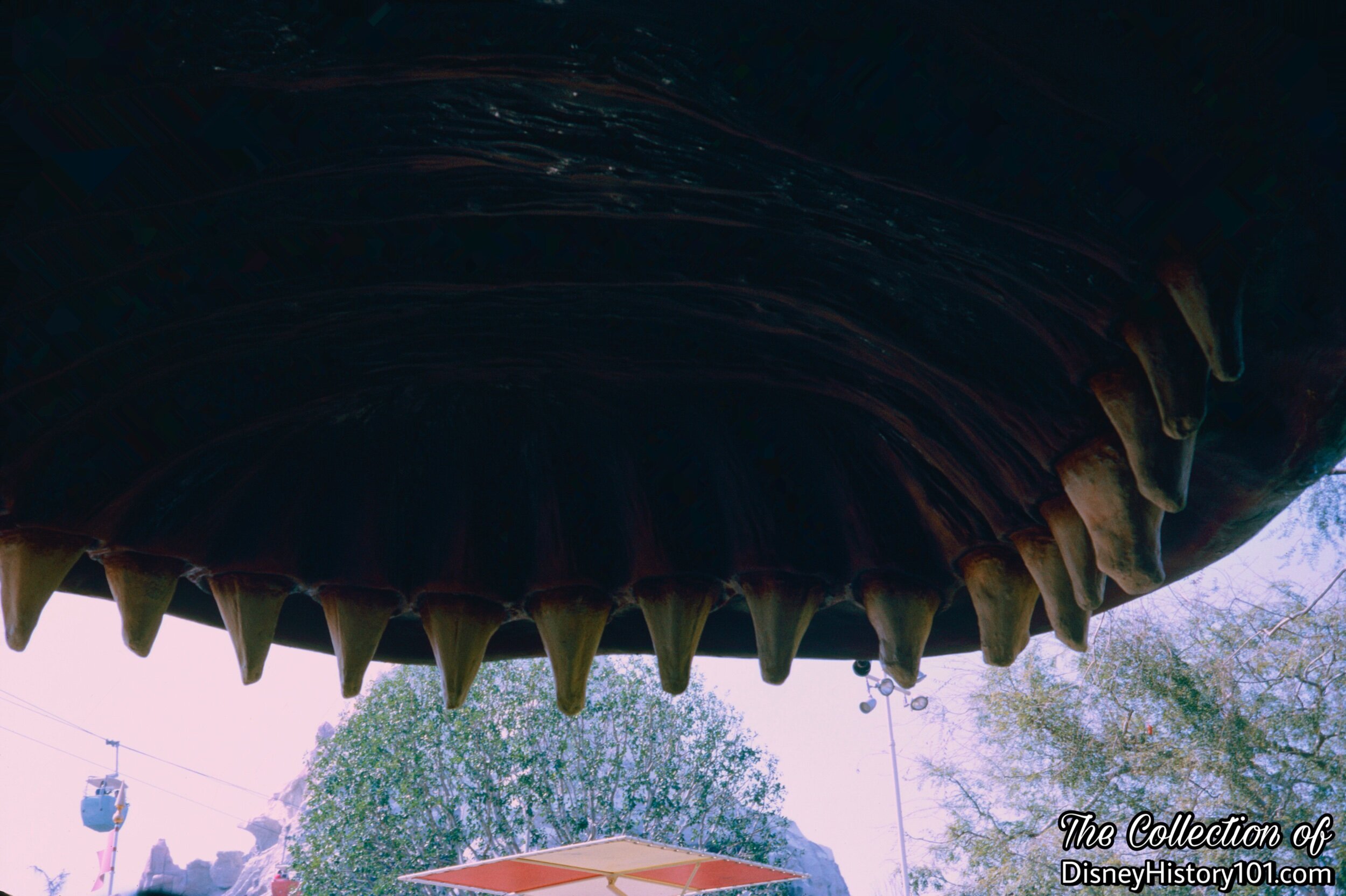
The “toothy” entrance to Monstro the Whale, (April, 1974)
“We’ve just been swallowed by Monster… the very same whale that swallowed Pinocchio. Now, you know how Pinocchio must have felt. The darkened area above us is where Pinocchio built the fire that made Monstro sneeze. And you know what happened? Monster sneezed so hard he blew his tail off! And this is how we enter Storybook Land.”

Pig Island
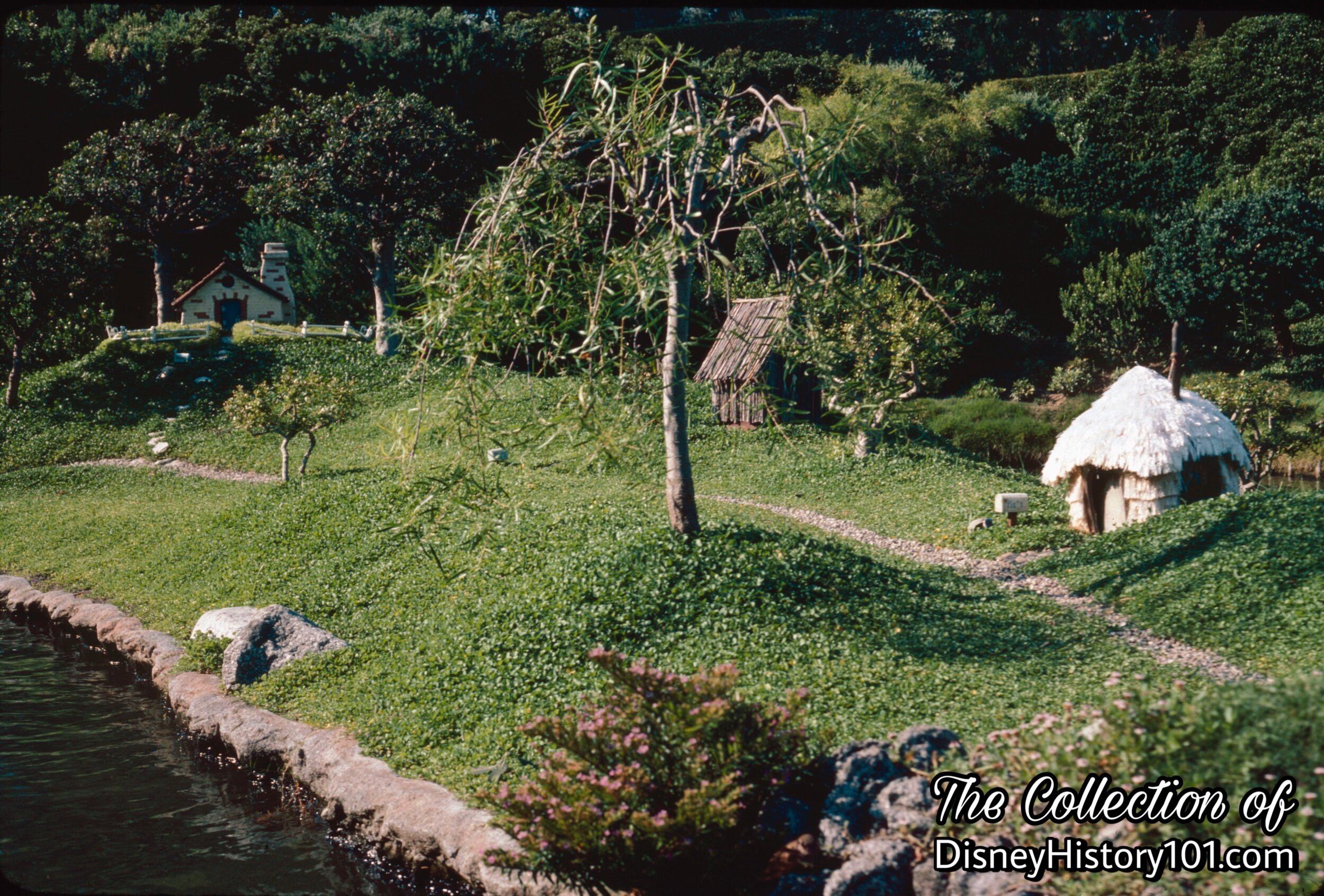
Fifer's House of Straw and Fiddler's House of Sticks
Just out of range in our preceding Vintage View : “Around the bend on your left is the Cave of the Big Bad Wolf. See his chopping block out front? On the island to the right are the houses of the Three Little Pigs… one made of straw… one of sticks…”
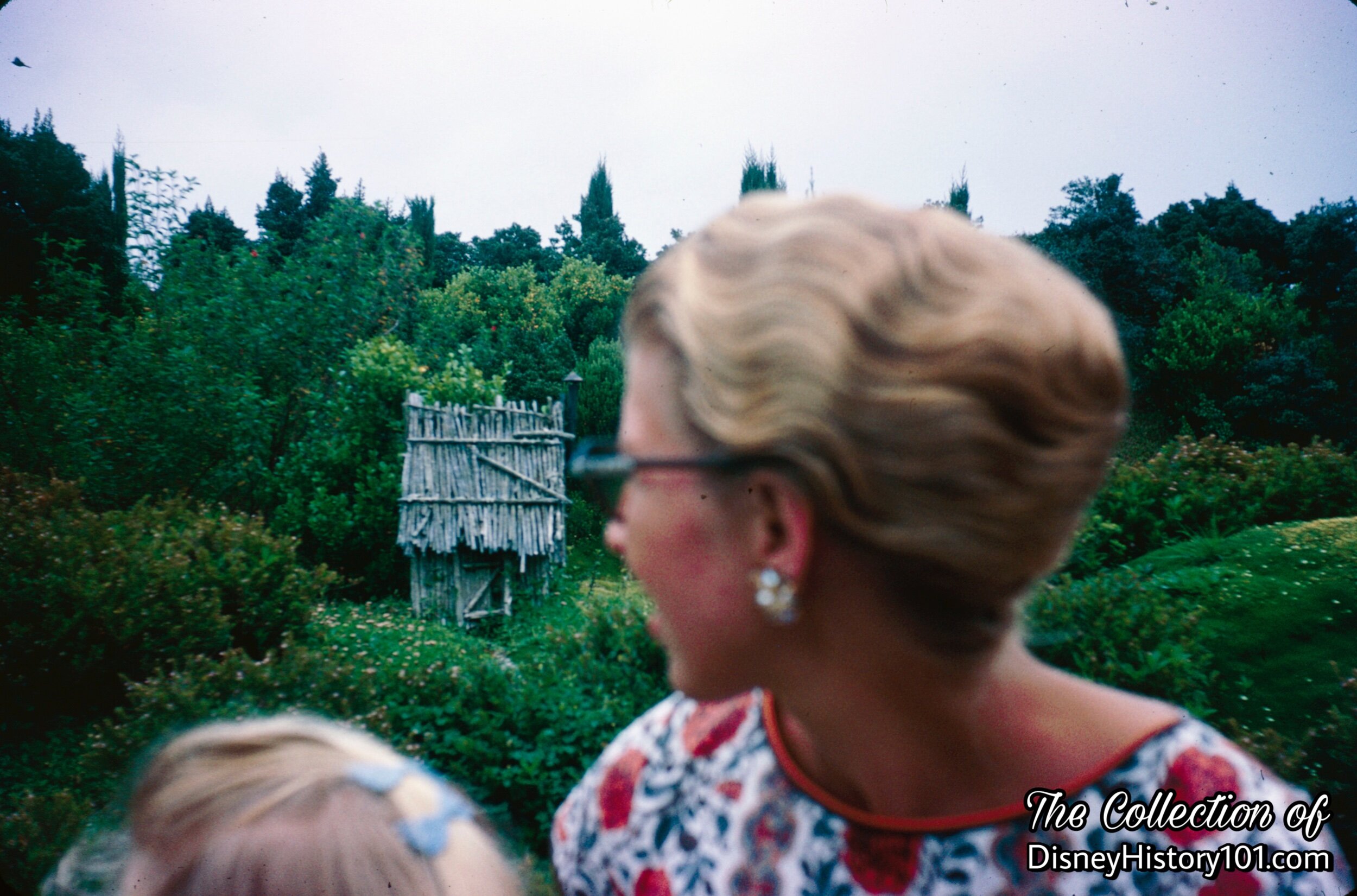
Fiddler's House of Sticks

Practical Pig's House of Bricks and Fiddler's House of Sticks
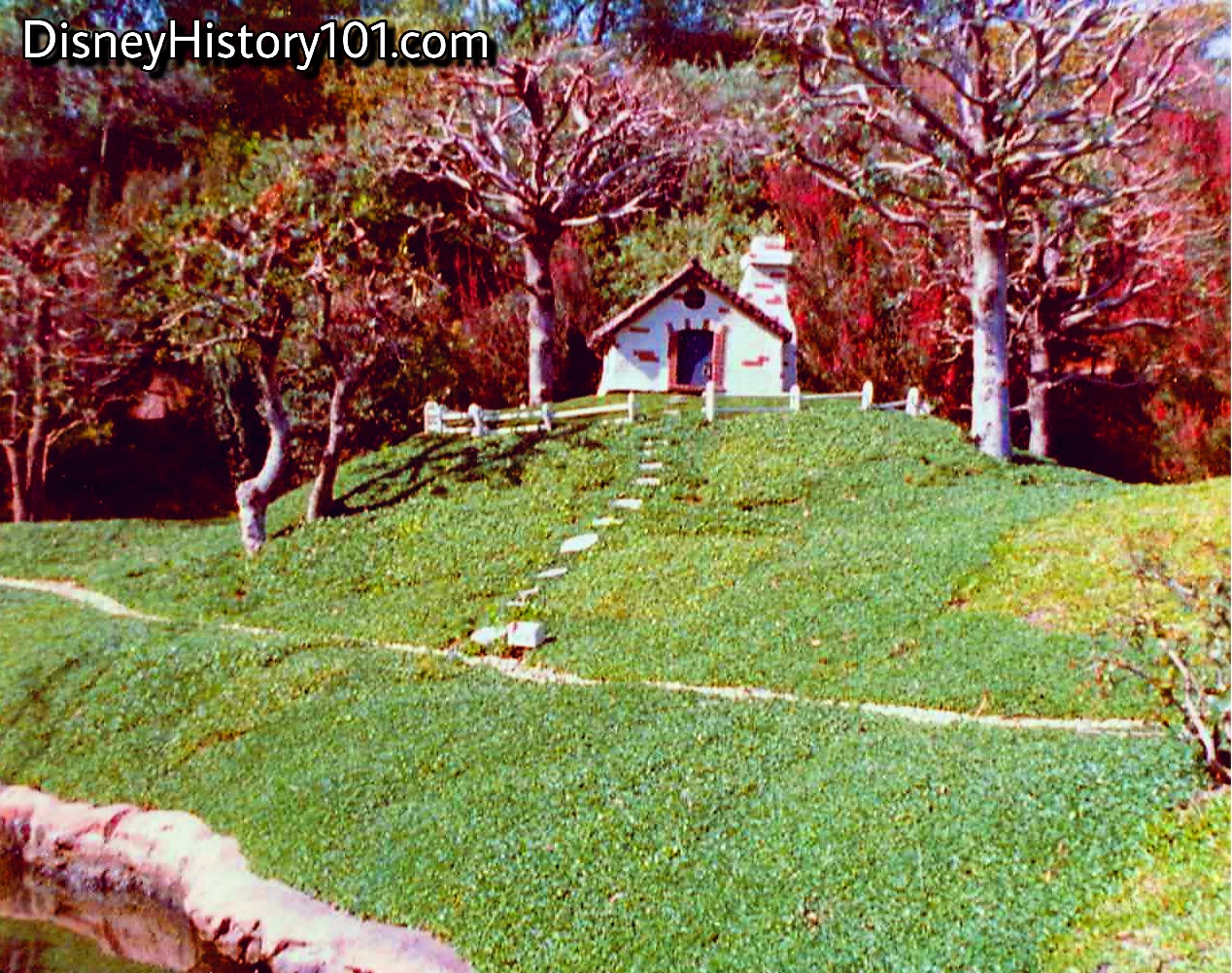
Practical Pig's House of Bricks
As we pass along “Pig Island” we come upon a forest grove of two-foot oaks, where three Little Pigs have built their houses. One Little Pig made his practical house “of wolf-proof bricks”. “Can you hear the Little Pigs singing inside?”
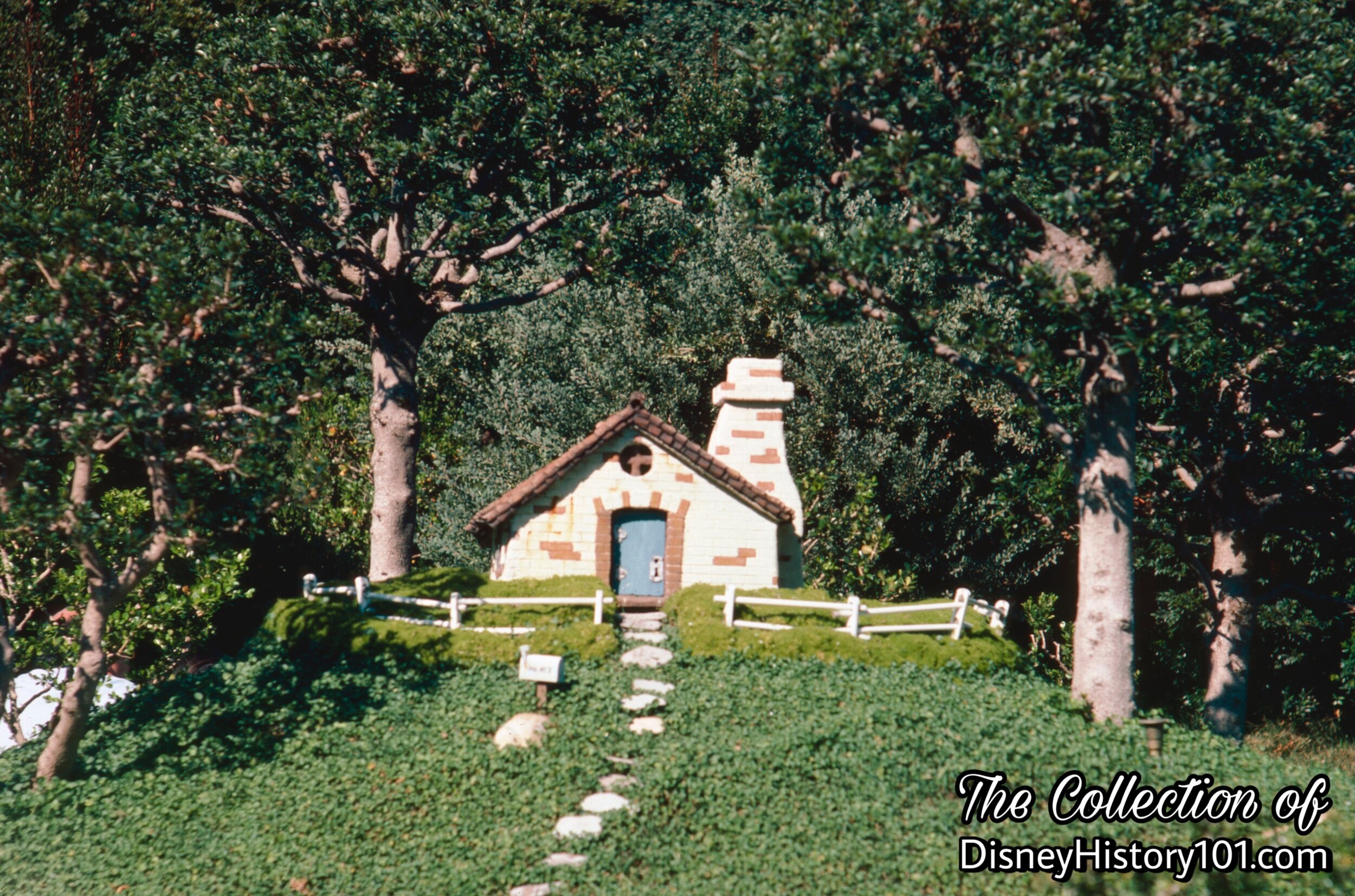
Practical Pig's House of Bricks
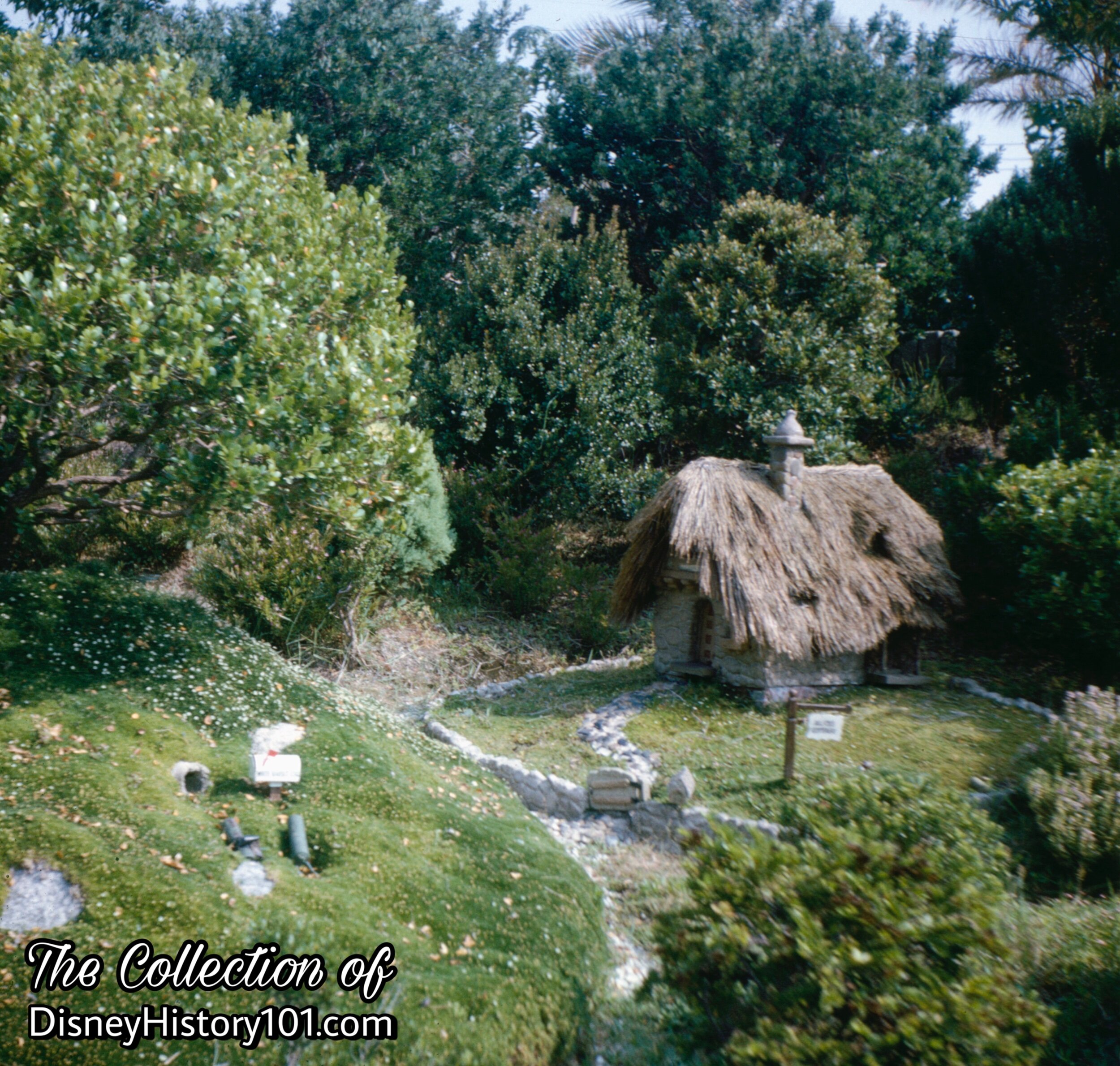
English Countryside, “Alice’s House” or Cottage, and Rabbit Hole
“On the left just beyond this bridge is the Old English village where ‘Alice-in-Wonderland’ lives… Over in the corner is Alice’s tiny cottage with thatched roof, and there beneath the tree Isi the mailbox of White Rabbit, Esquire. The little burrow beside the mailbox is where the White Rabbit Lives, and is the same one Alice fell through on her way to Wonderland.”
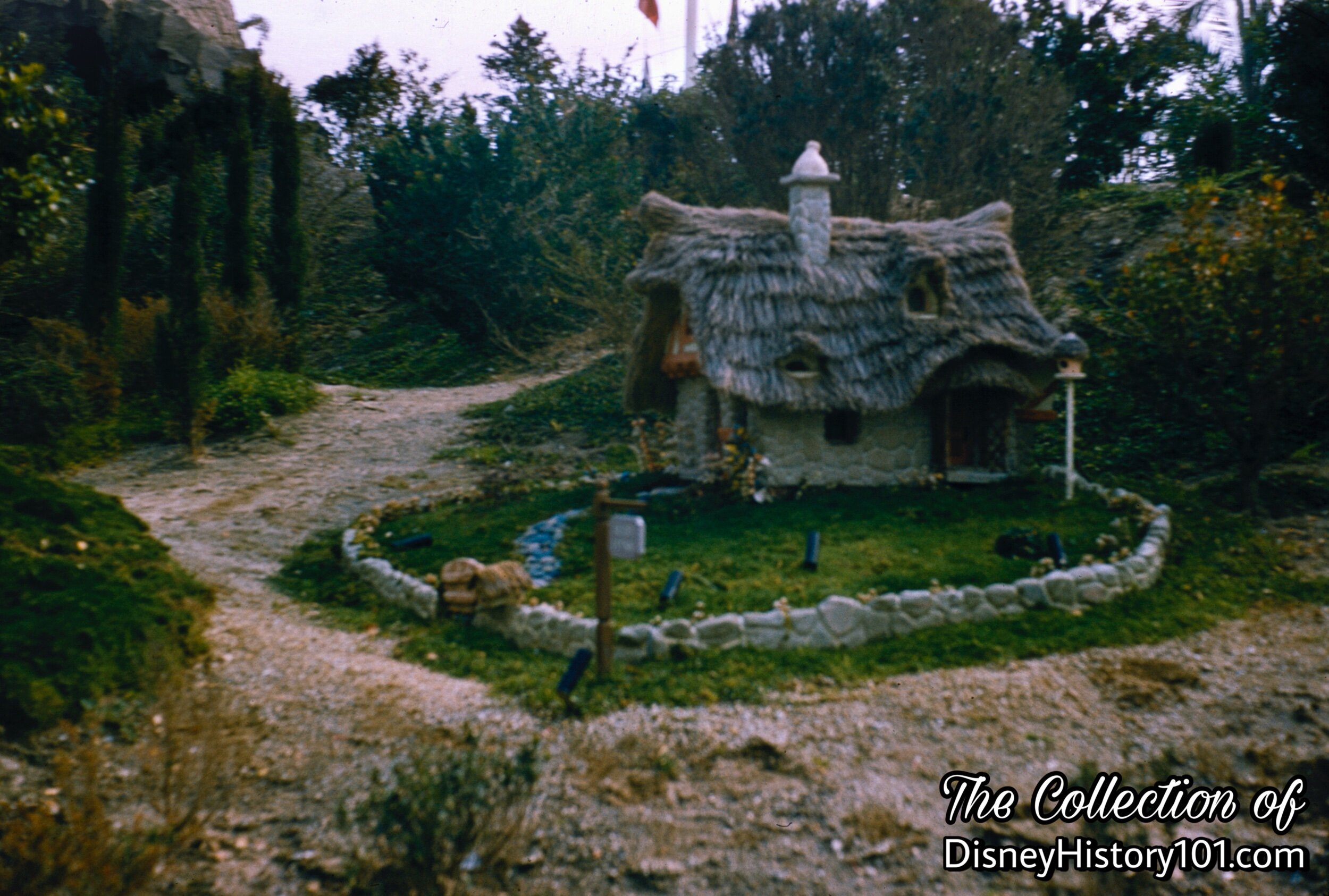
English Countryside and “Alice’s House” (or Cottage) of “Alice’s Village”
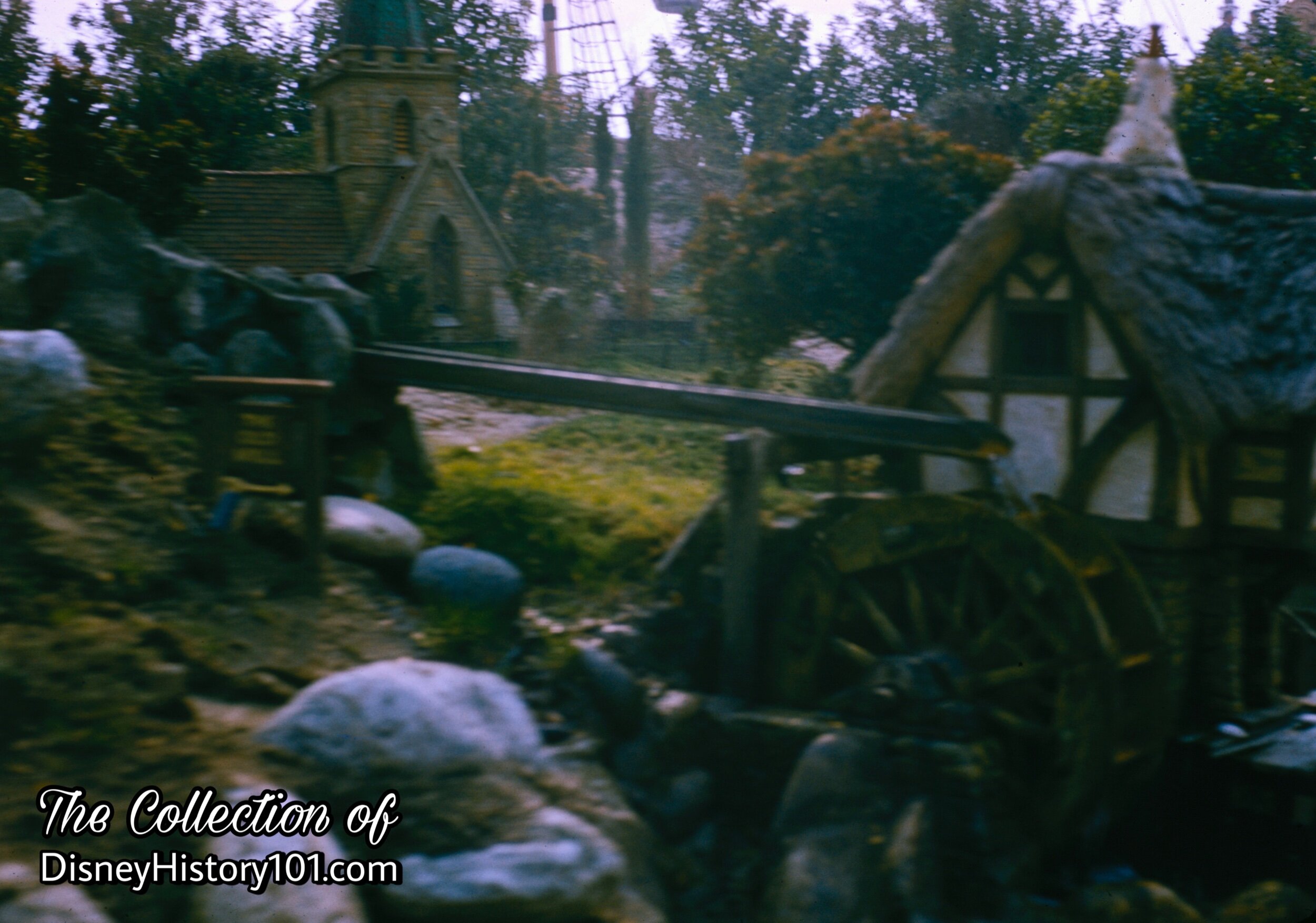
English Countryside, Mill and Church of “Alice’s Village”
“There is the Mill by the water’s edge.” Artist Stan Jolley was responsible for the elevation drawings of the “Old English Mill.” Look beyond the mill and you can see a tiny cottage. Not far away is a tiny burrow and the mailbox belonging.to White Rabbit, Esquire.
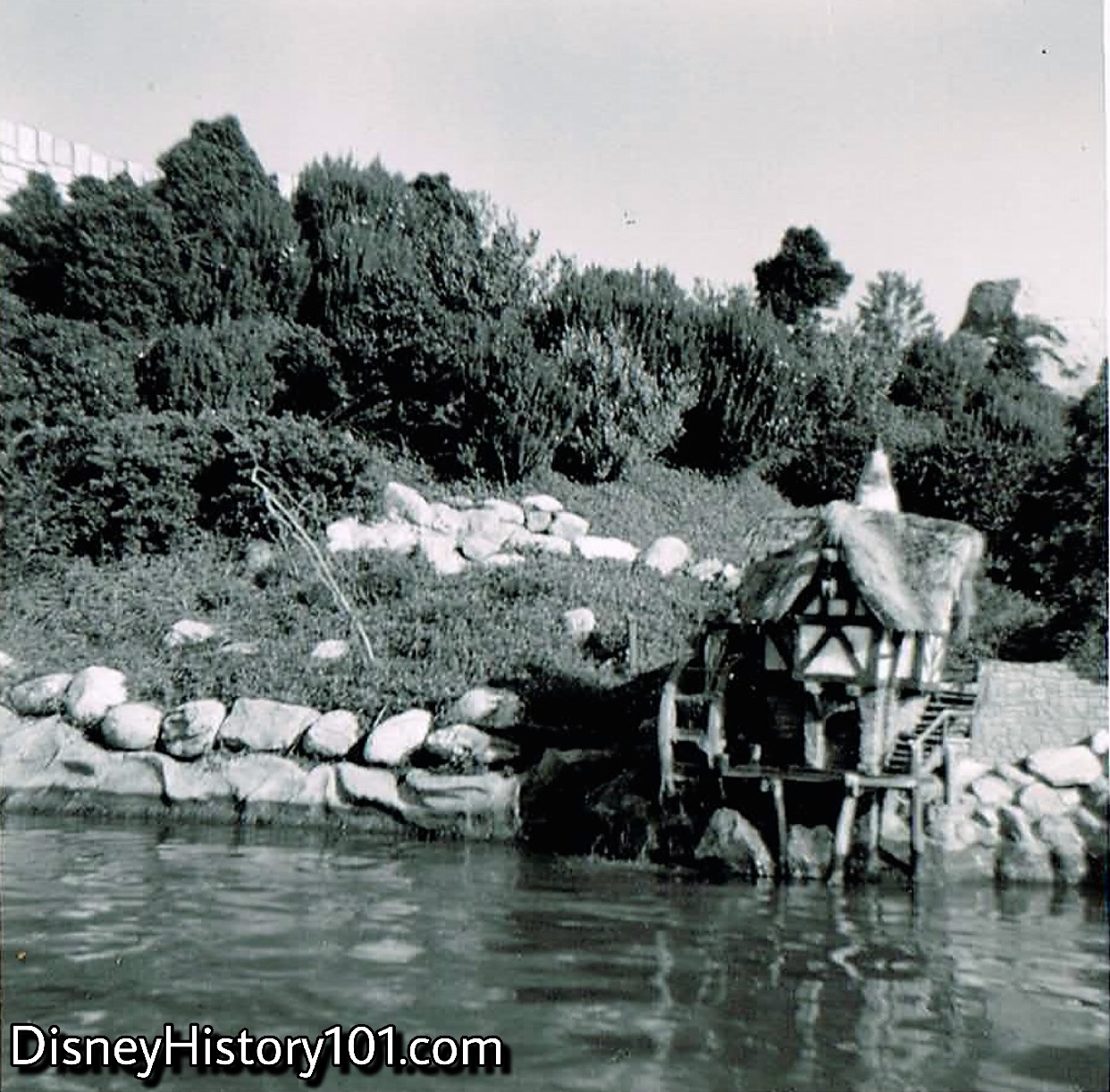
English Countryside, Mill and Church of “Alice’s Village”
By 1974, this was one of three water wheels in Disneyland - this one churned a few drops of water per minute.
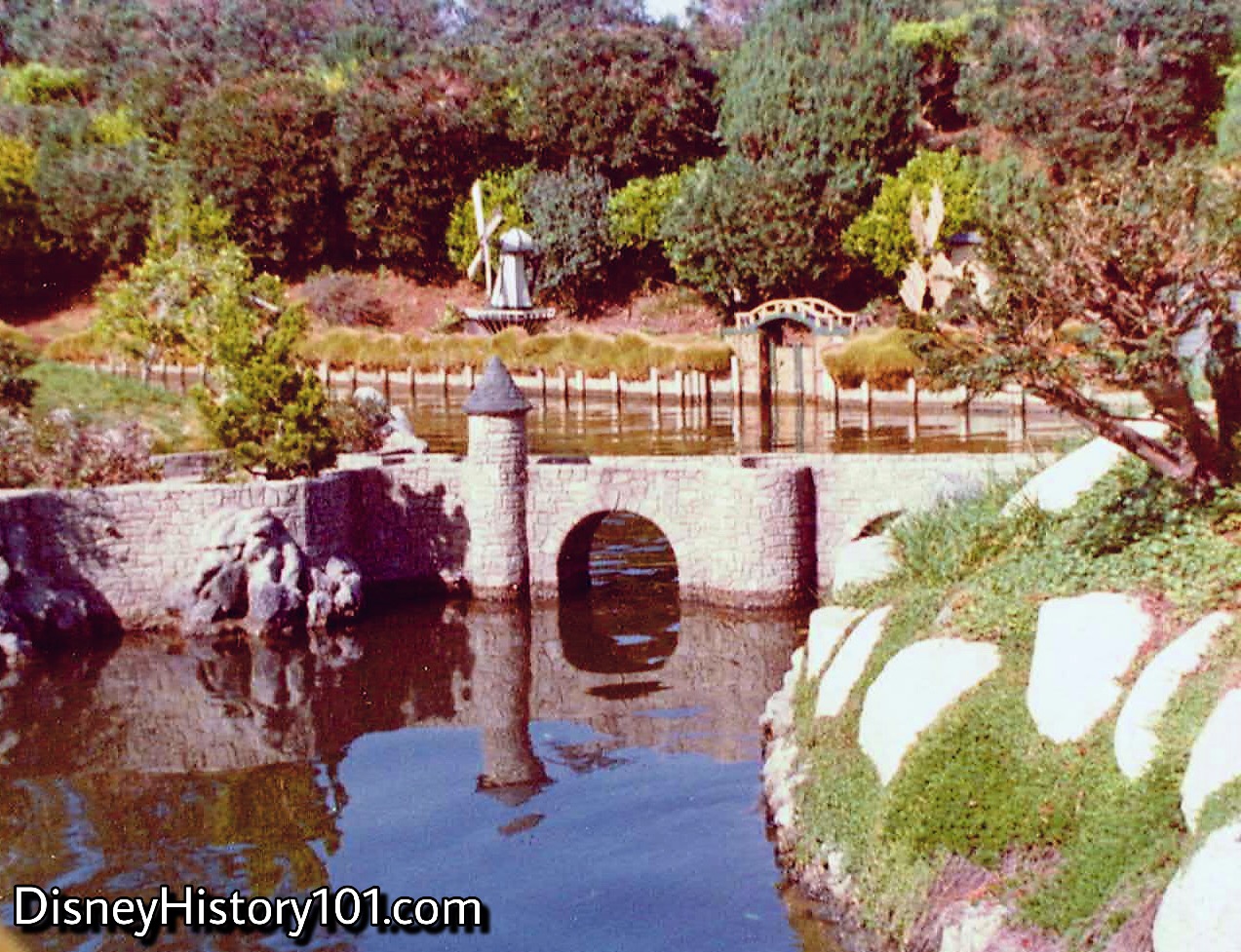
London Park
Beyond Kensington Gardens (as Disneyland Holiday magazine referred to this location), or London Park (“where Peter Pan and Tnkerbell taught John, Wendy and Michael to fly on their way to Never-Never-Land”) was a Netherlands Village, complete with square bladed windmills and dikes.
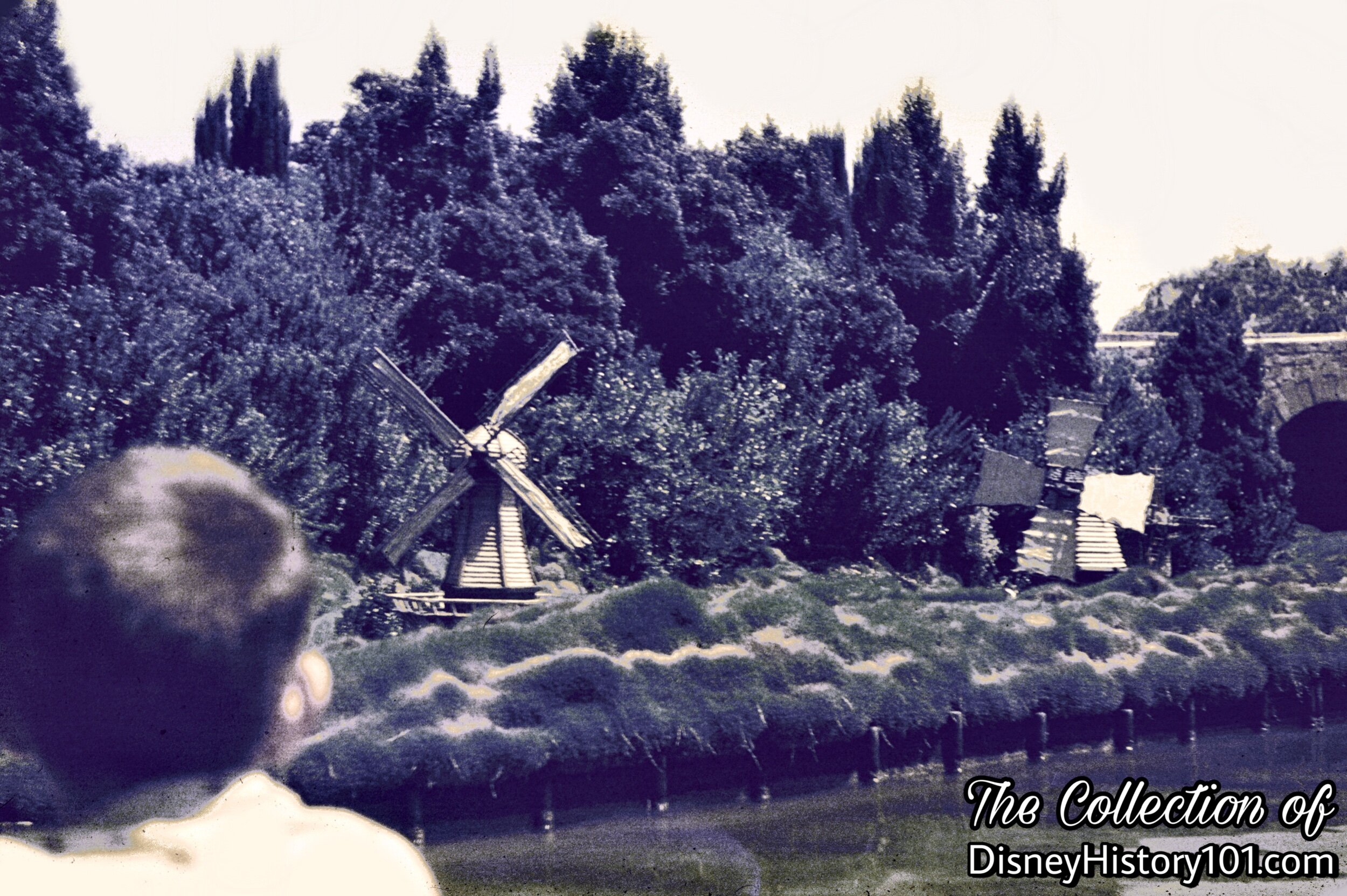
Dutch Windmills of Holland
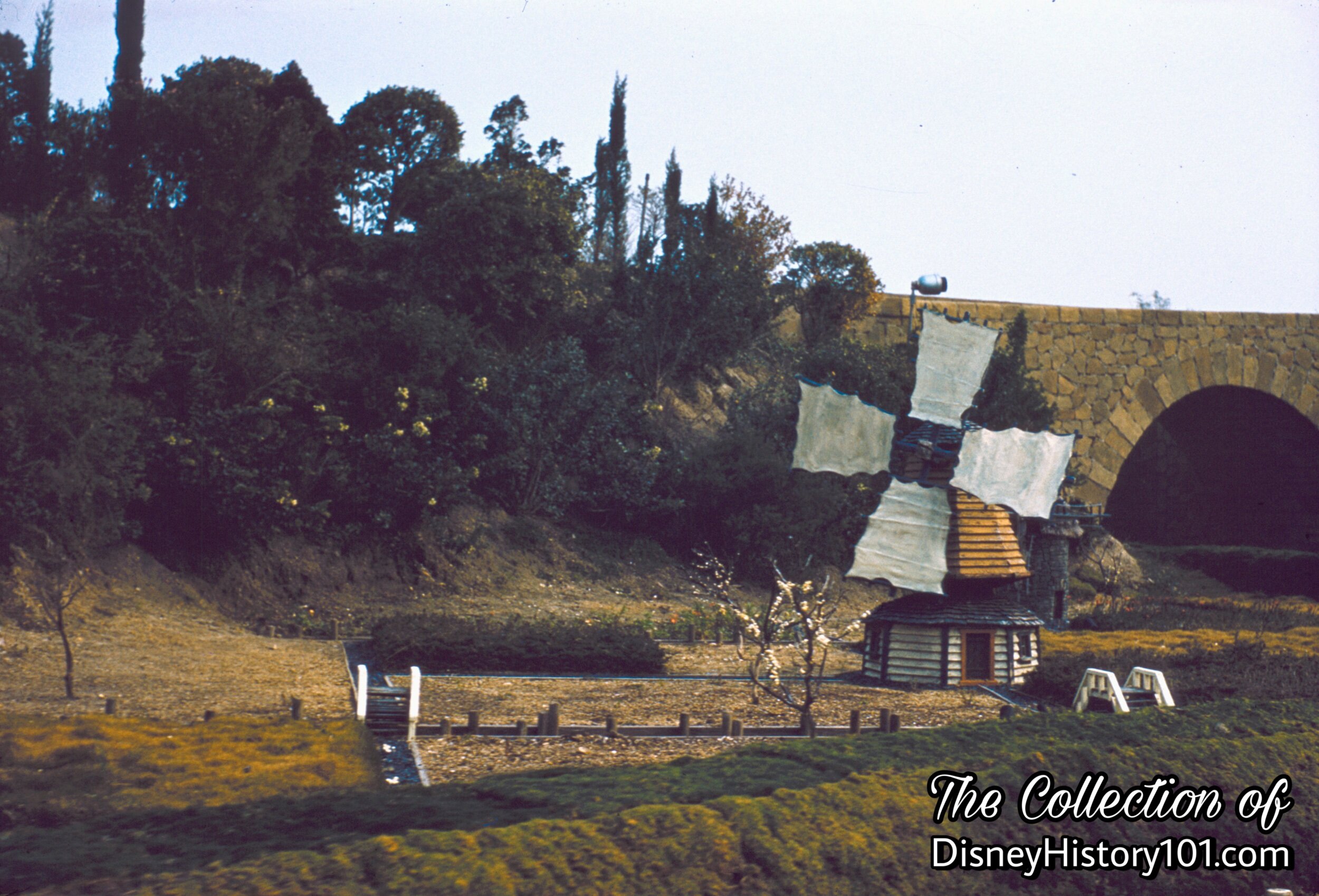
Netherlands Village
Look for the subject of the c.1937 Academy Award winning “The Old Mill.”
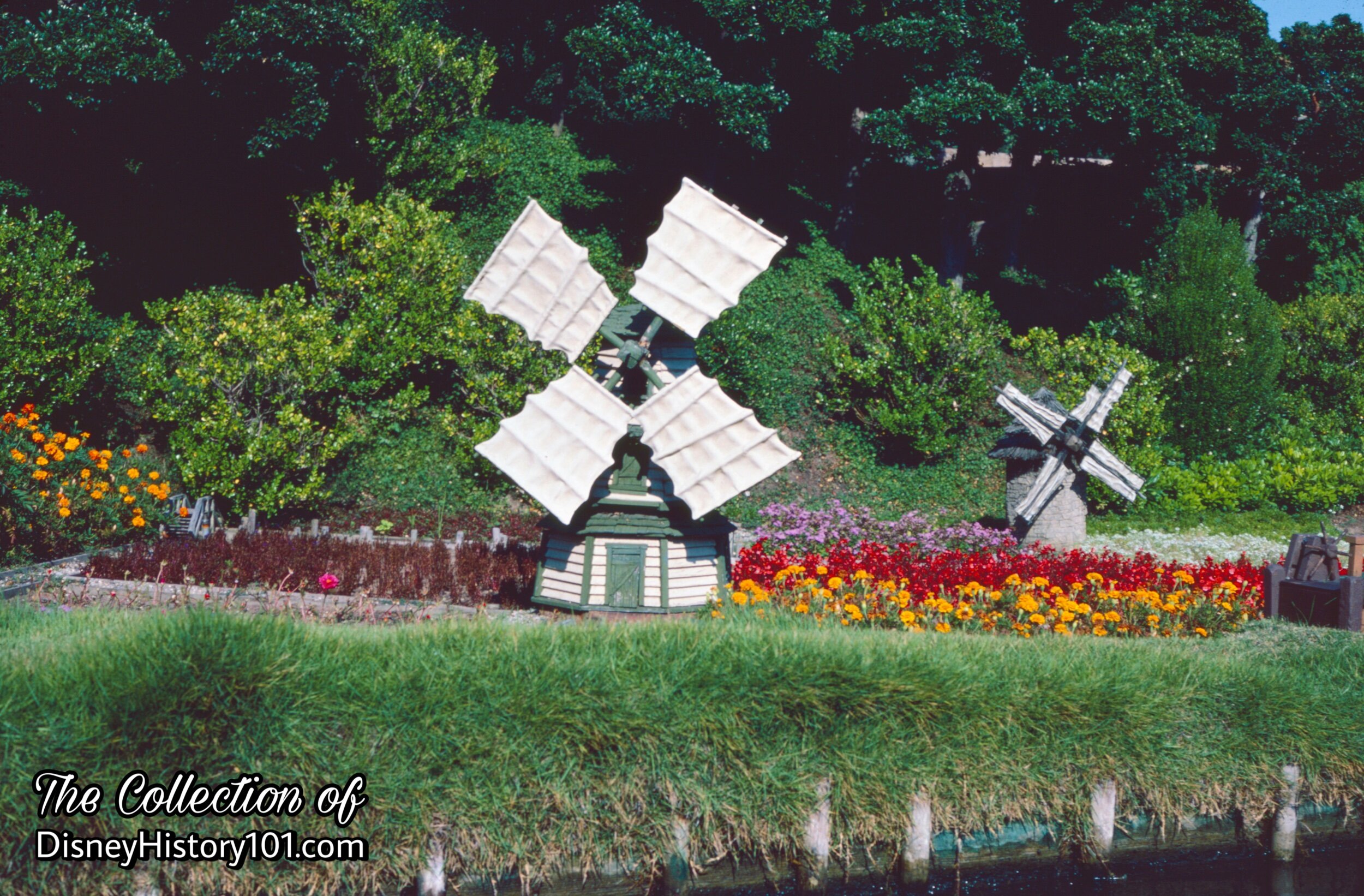
Netherlands Village

Annie Oakley Storybook Land Canal Boat, (1965)

Toad Hall and Ratty's House
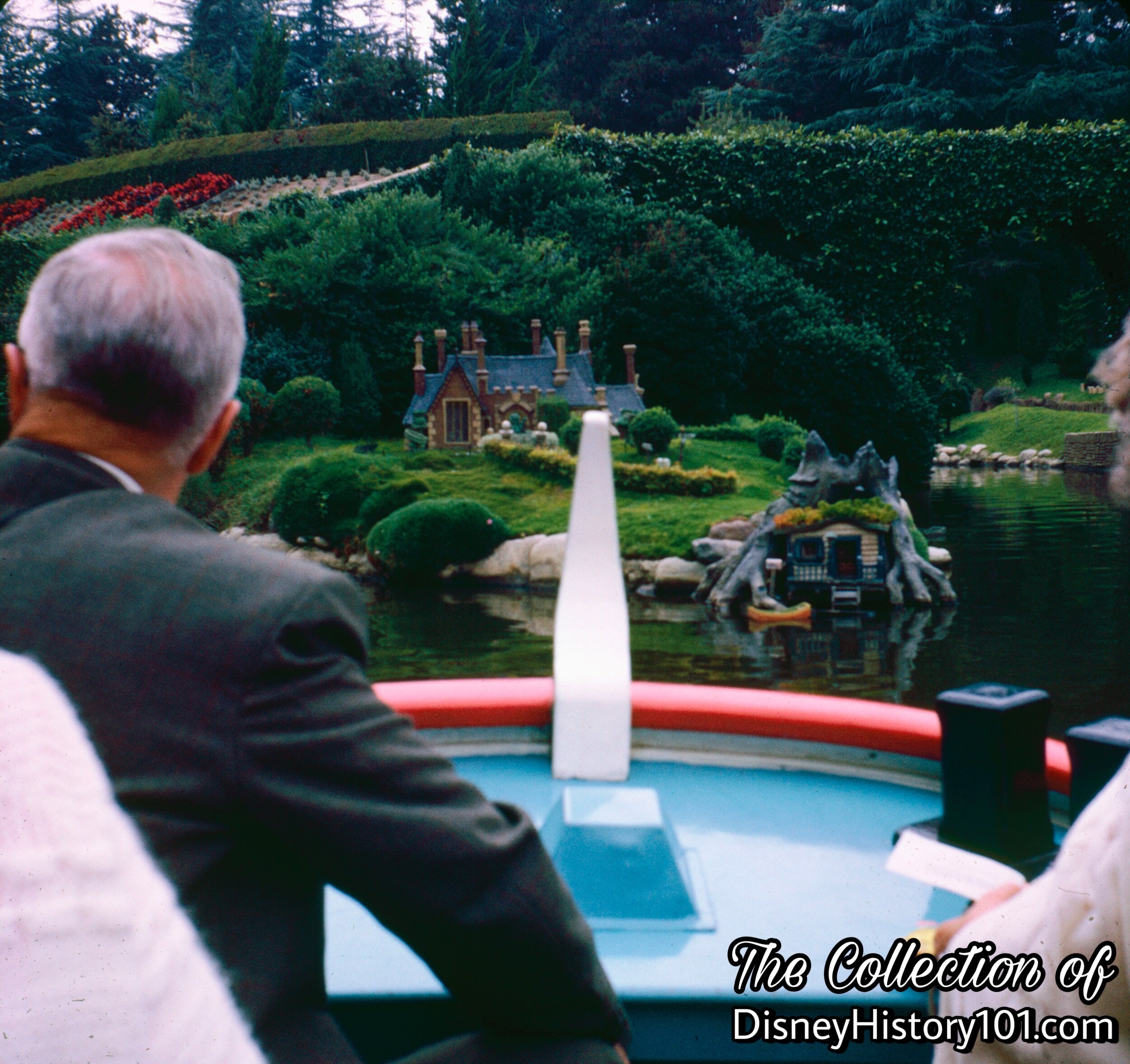
Toad Hall and Ratty's House
“Straight ahead is Toad Hall from the story ‘The Wind in the Willows.’”
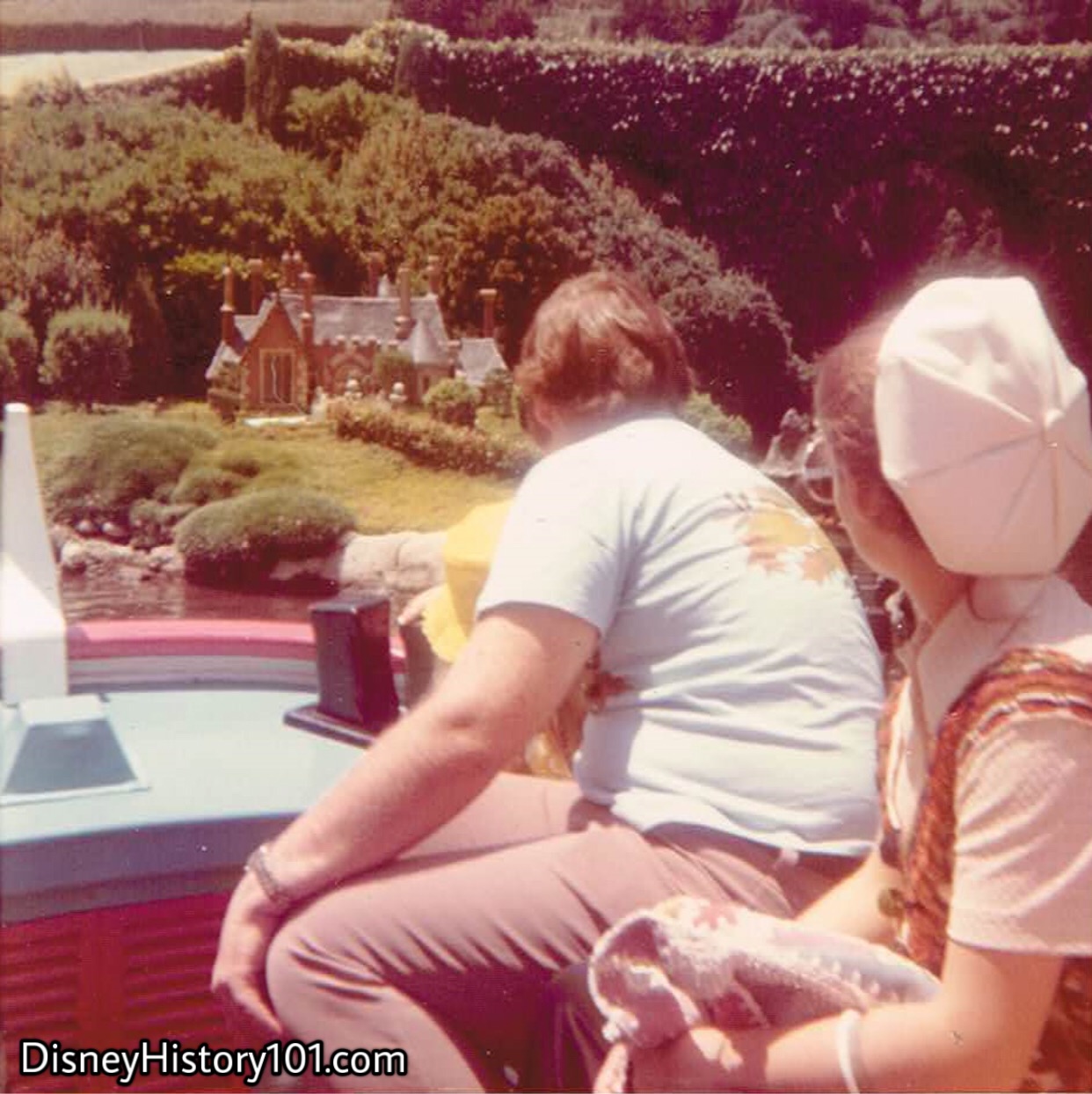
Toad Hall, (1972)
The home of J. Thaddeus Toad is set appropriately in a little, formal English garden.
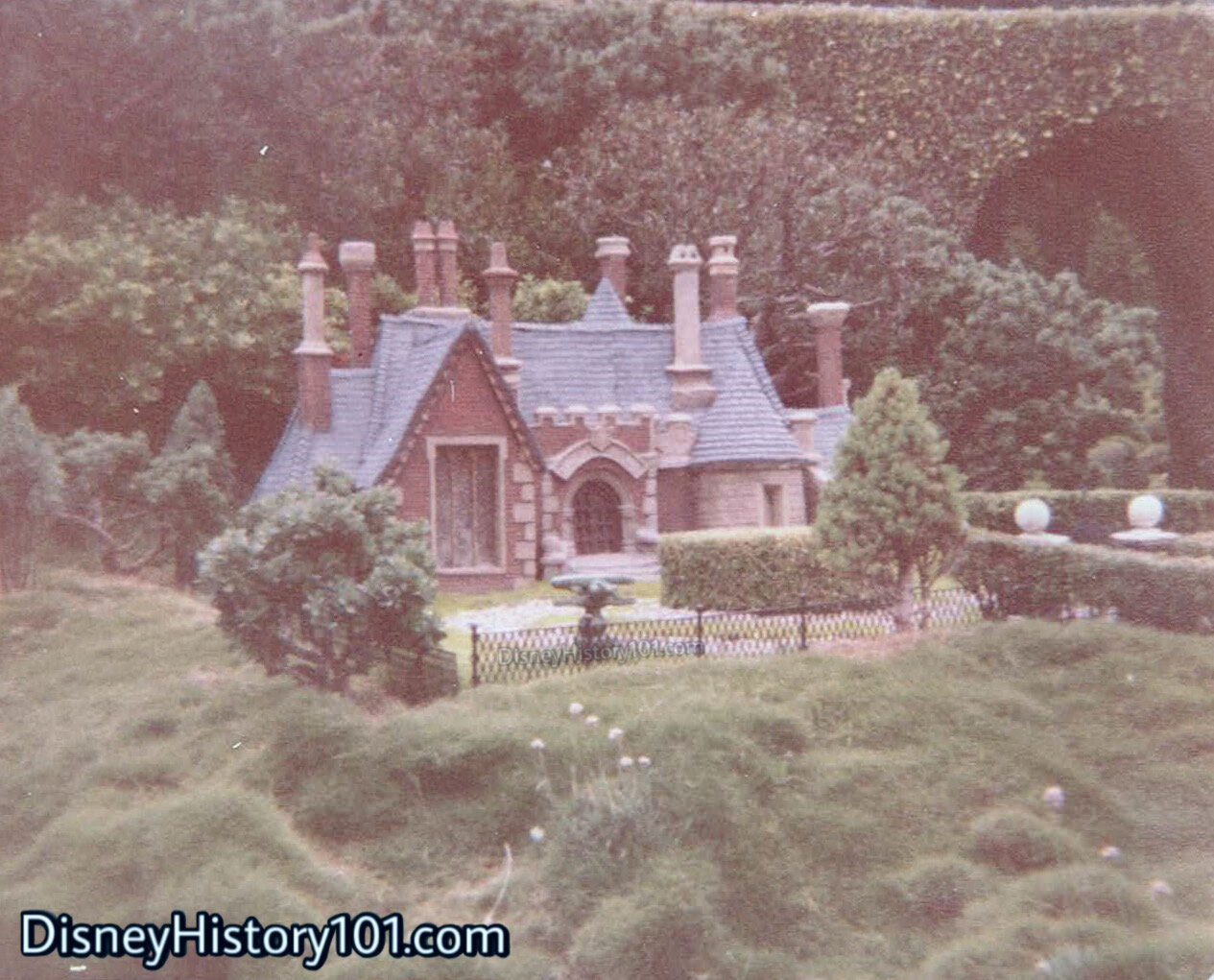
Toad Hall, (c. 1981-1982)
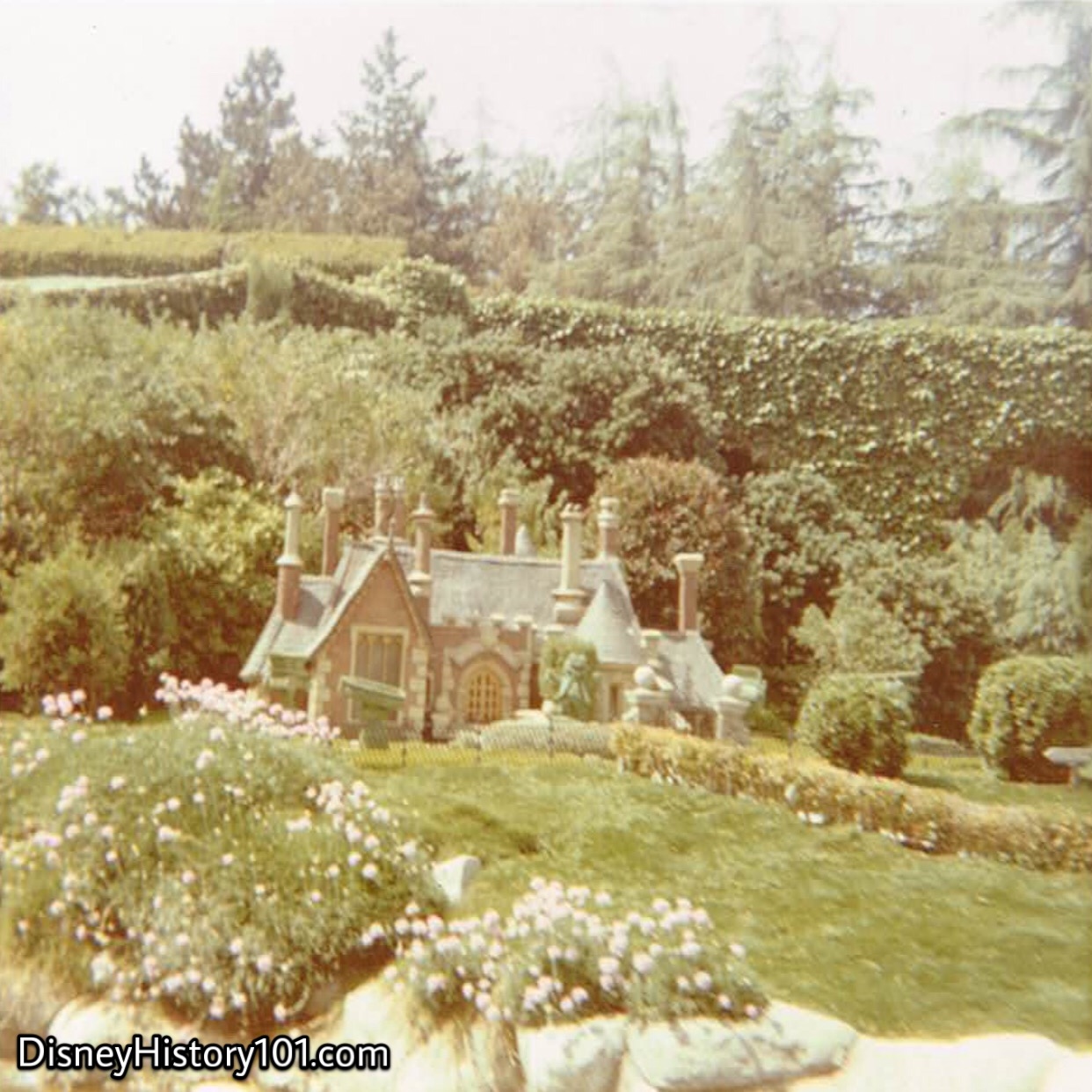
Toad Hall, (May, 1971)
Rare dwarf Australian trees, Italian Cypress, juncus grass, myrtle, and Irish moss for ground cover create the miniature English garden setting for The Wind in the Willows.

Toad Hall, (1965)
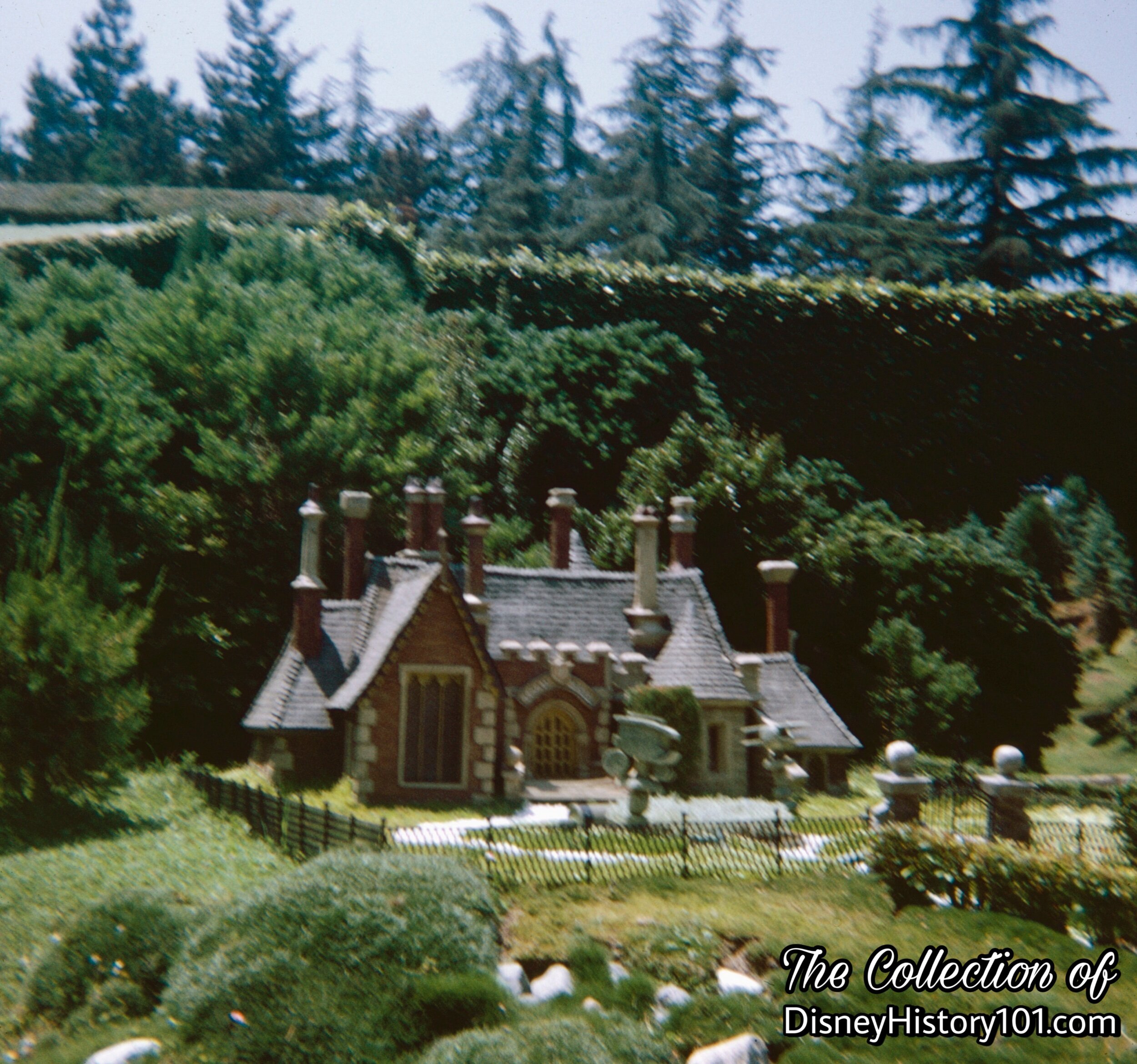
Toad Hall
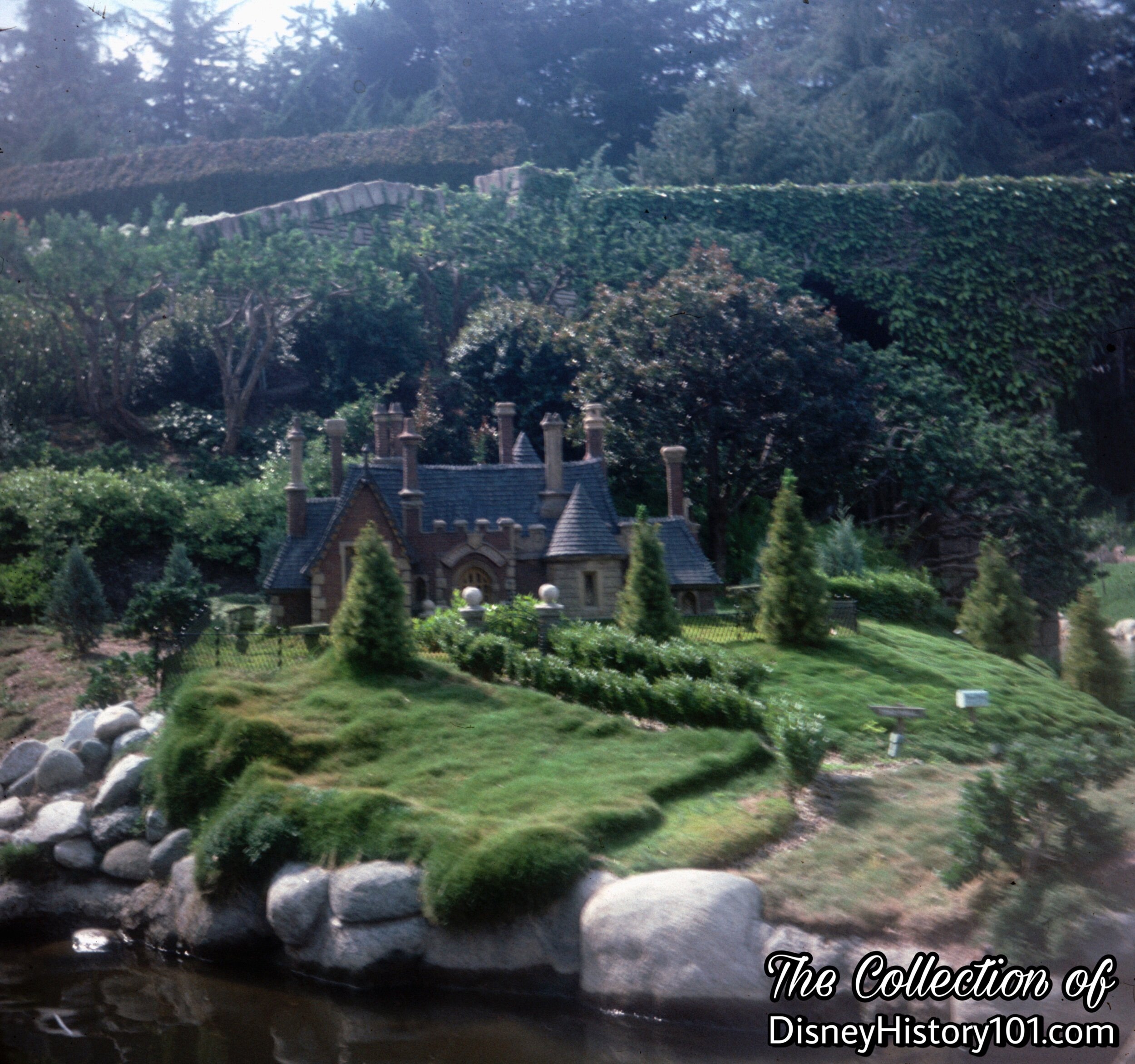
Toad Hall
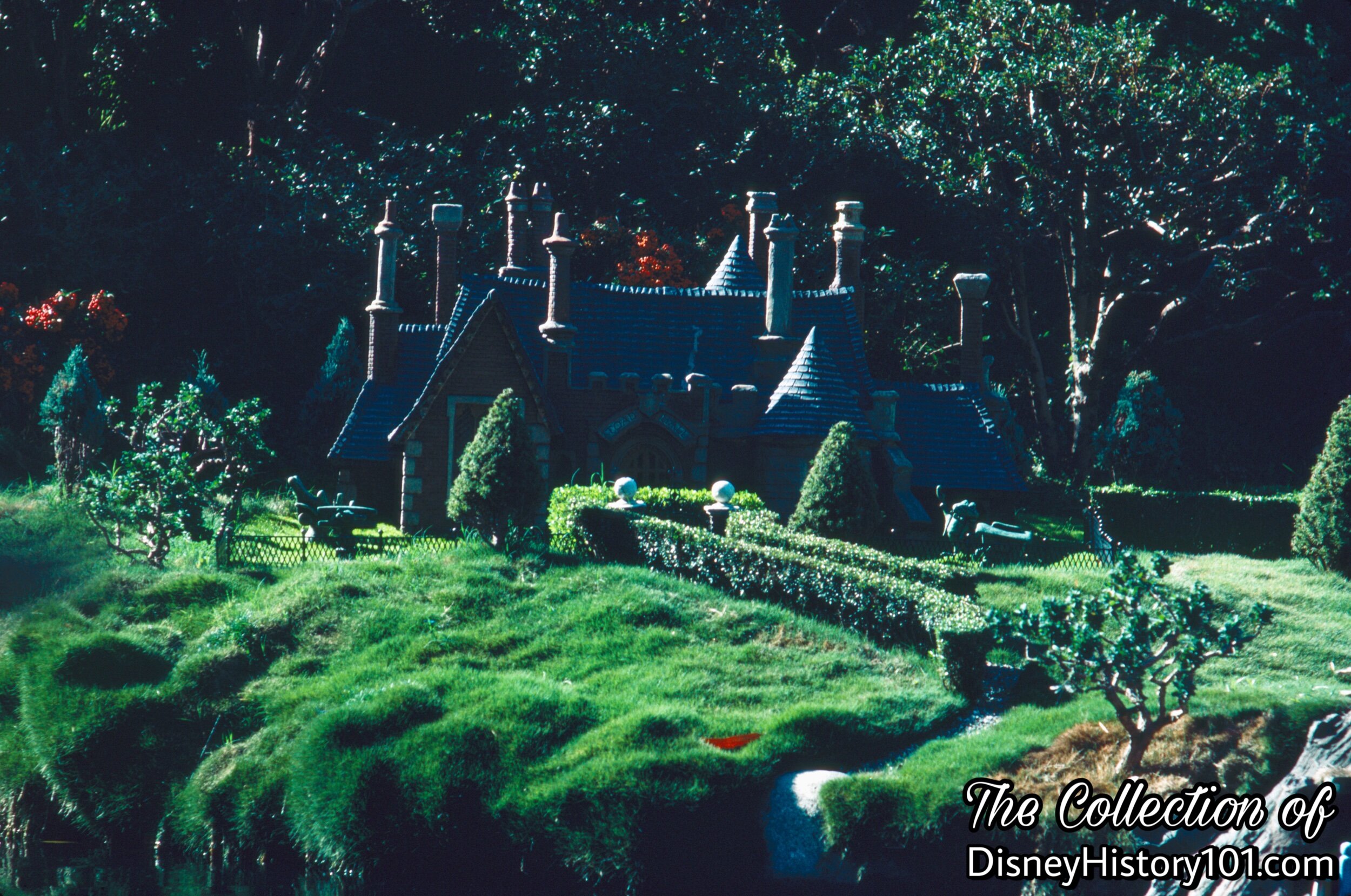
Toad Hall

Toad Hall
There are many things that have been said about those chimneys over Toad Hall, through the years. “See all those chimneys on Mr. Toad’s Roof? But did you know there’s only one fire place inside? Think how confusing that must be for Santa Claus on Christmas Eve!”
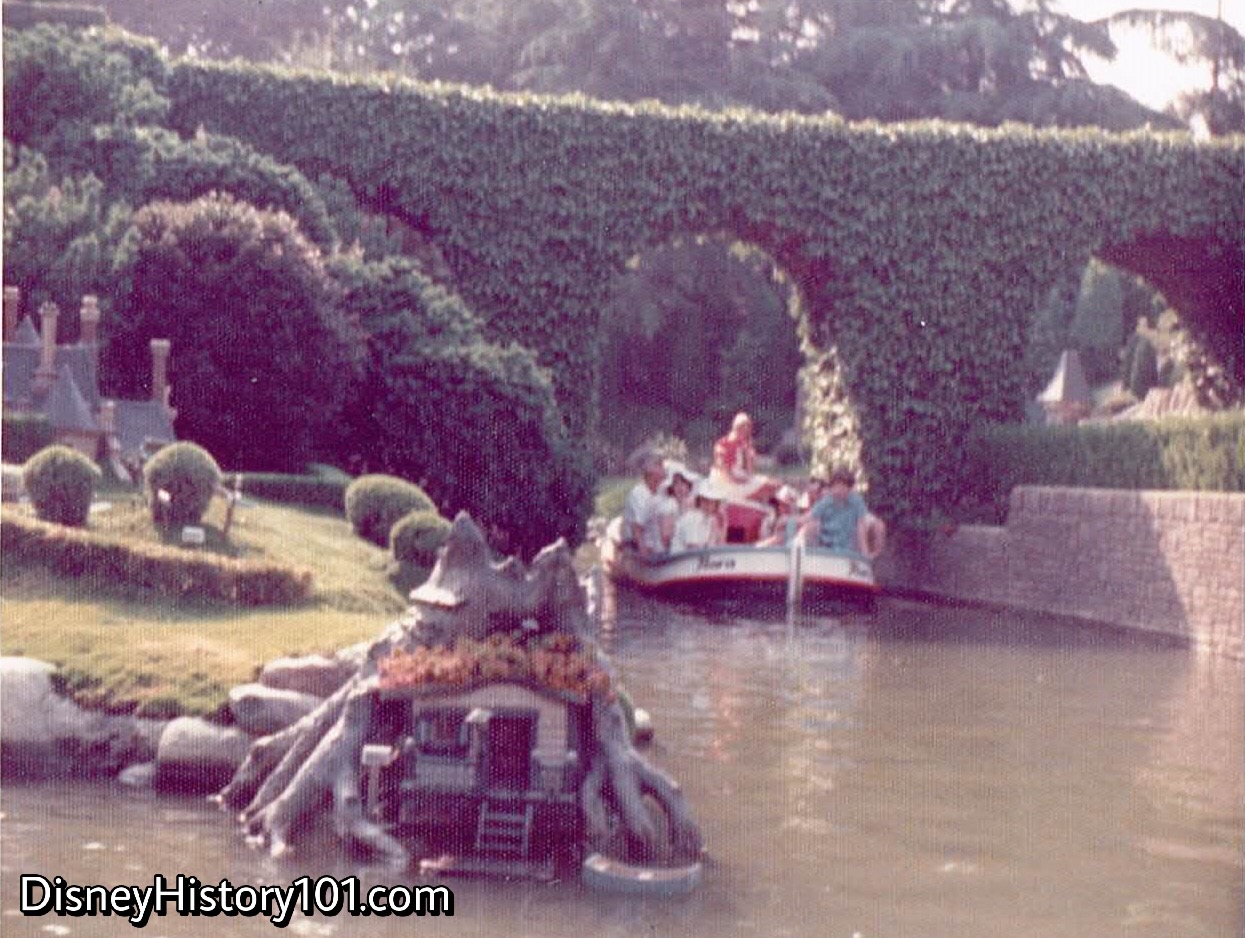
Toad Hall and Ratty's House, 1960s
“Down by the water in the stump of that old tree is Ratty’s House. Ratty is the caretaker for Mr. Toad’s mansion, and cleaning those nine chimneys sure keeps him busy.”
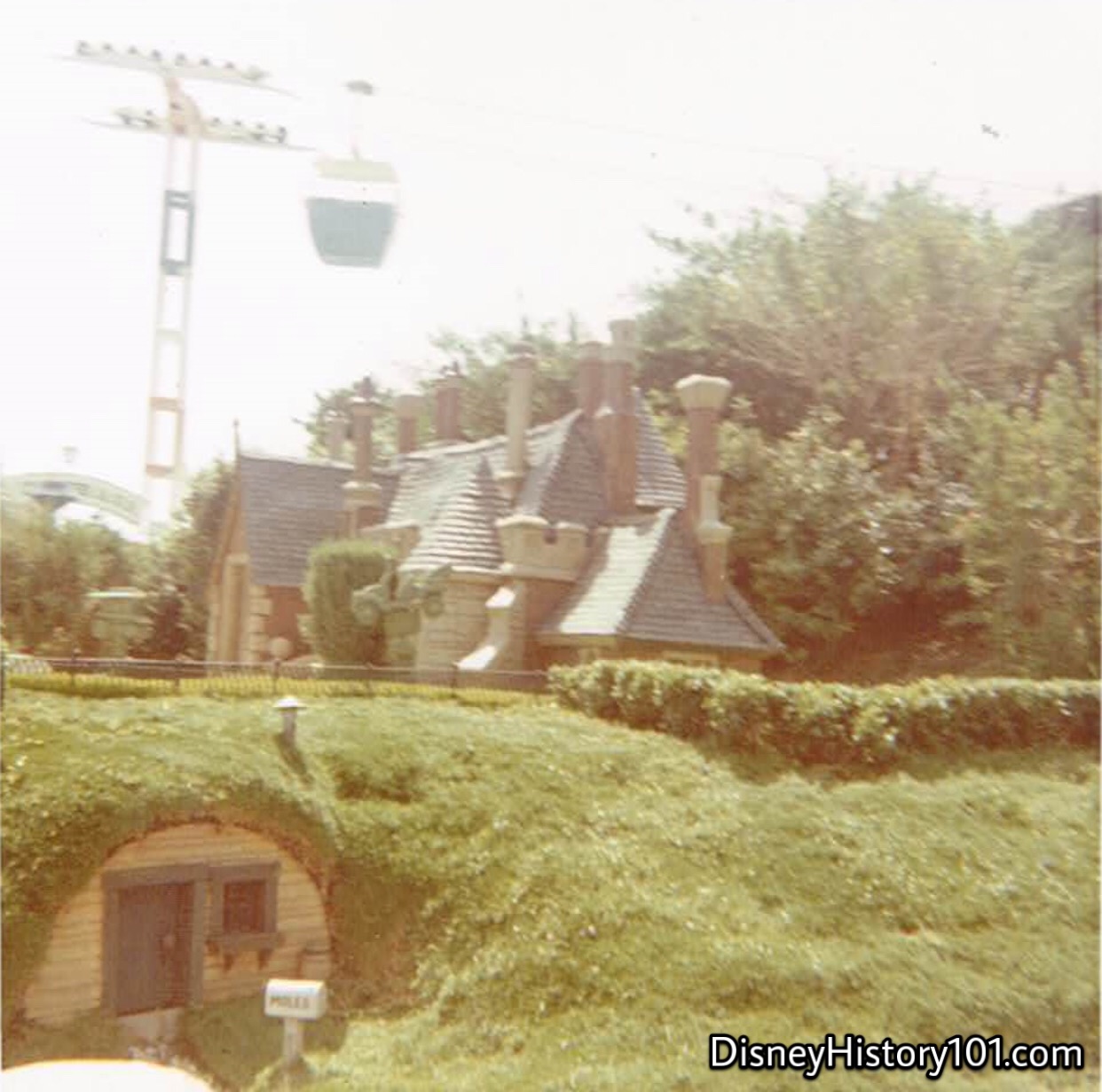
Toad Hall and Mole's House, (May, 1971)
“On the right is Mr. Toad’s house again, and just below it is the home of his closest friend, Mr. Mole, with his little boat parked out front.”
Years later, Toad Hall and the rest of his neighborhood would be relocated to make room for the entire City of Agrabah.
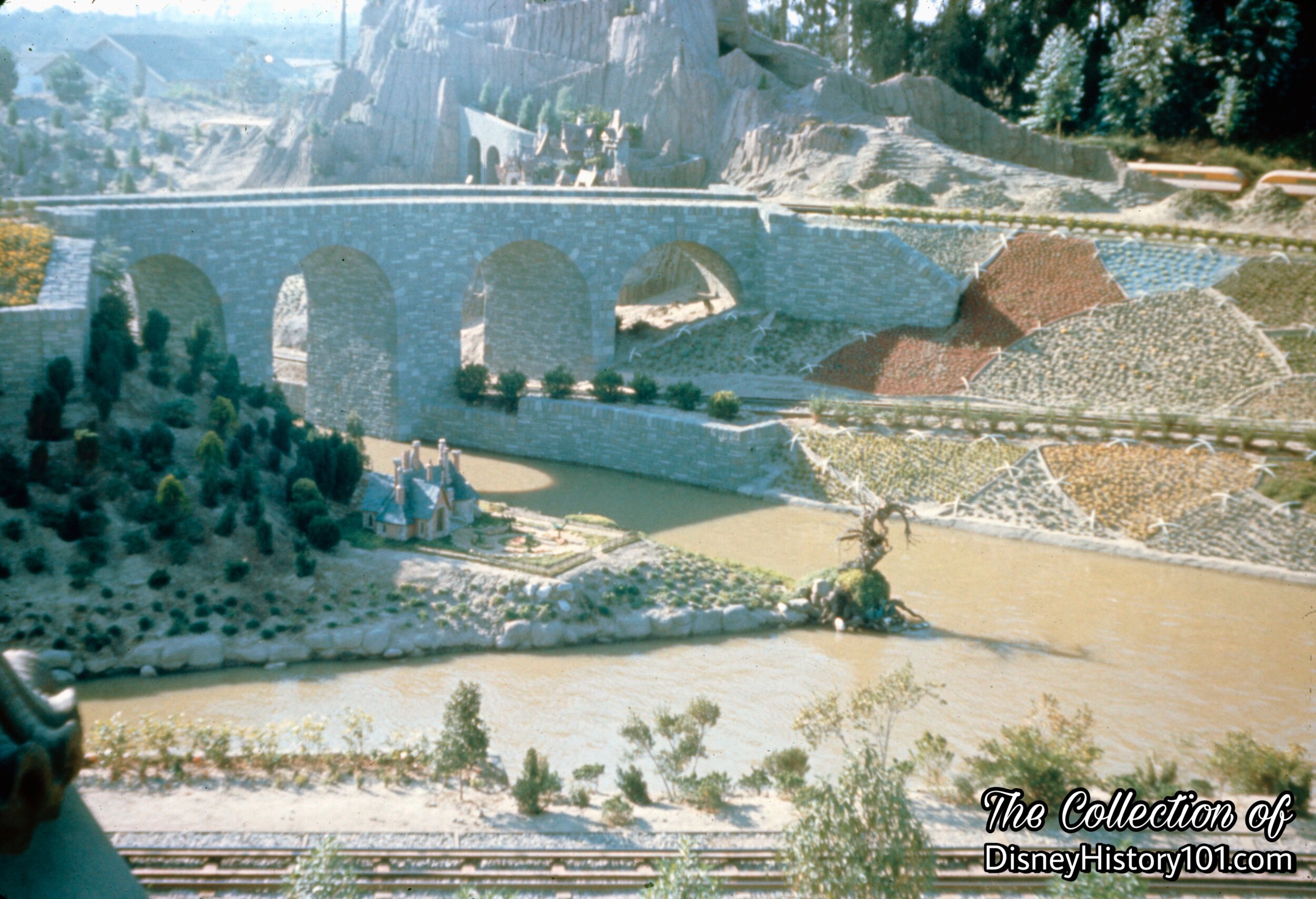
Toad Hall and Ratty's House
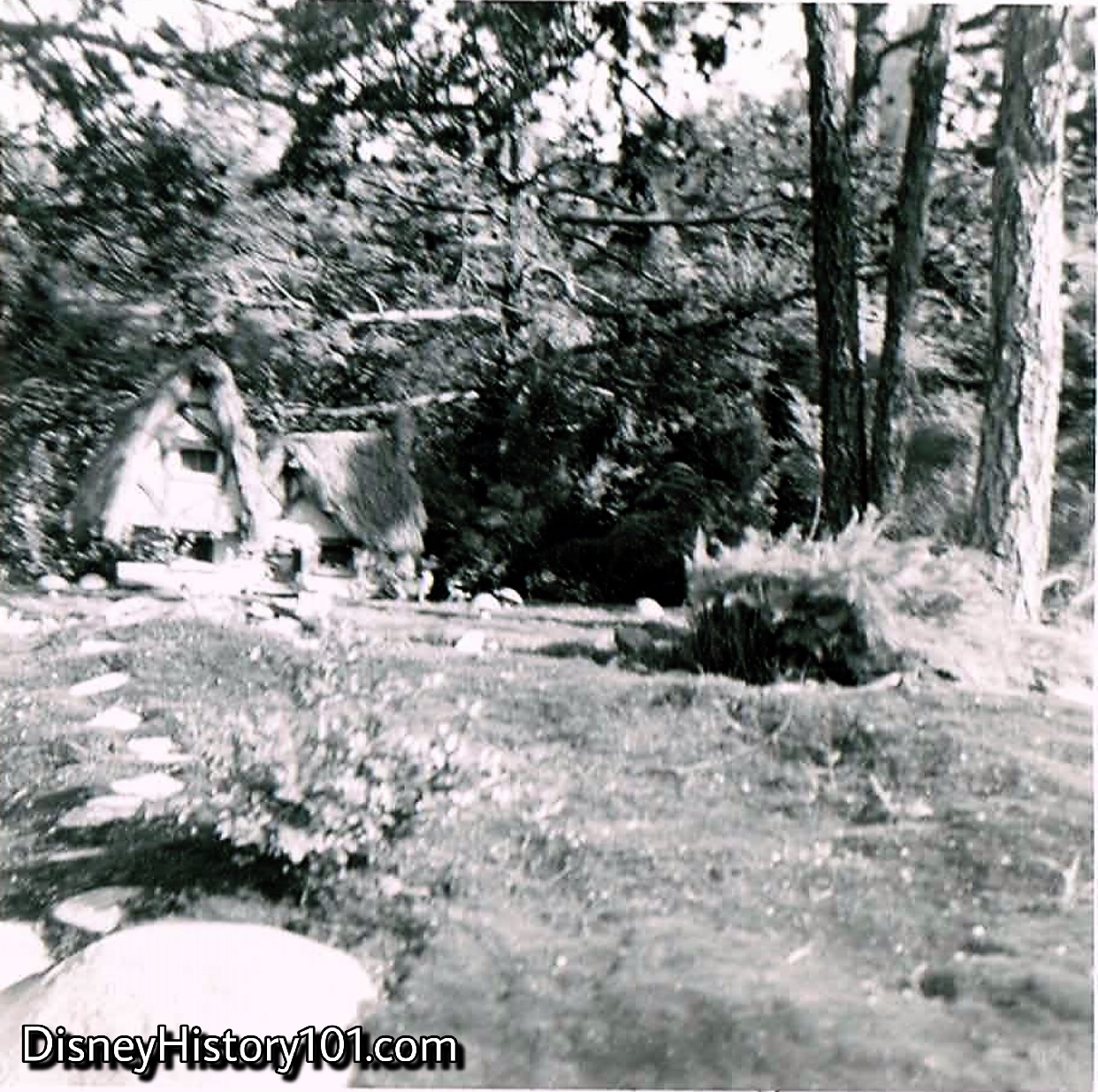
Seven Dwarf's Cottage and Black Forest of Germany
Over the seven hills, past the seven waterfalls, and beyond a shadowy cave “is the Black Forest [of Germany] from the story of Snow White and the Seven Dwarfs. This is the same cave the wicked witch went through when she was looking for Snow White. As we come around the bend, on our right is the cottage where Snow White and the Seven Dwarfs live. Back through the trees is the jewel mine where the Seven Dwarfs work all day.”
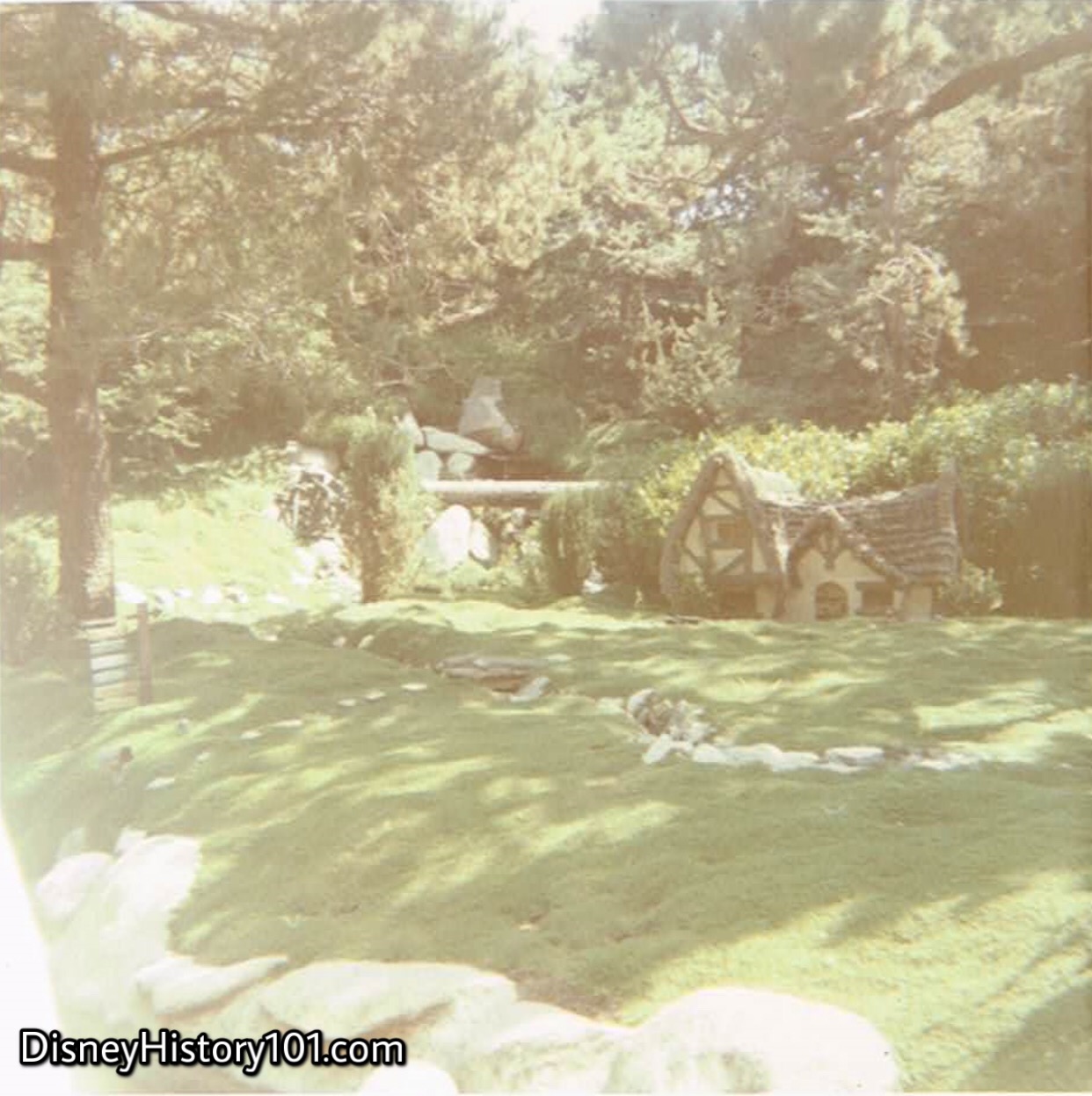
Seven Dwarf's Cottage, (May, 1971)
According to Vacationland magazine (Summer, 1979, page 10) : “On the state of Disneyland, all bulldings and landscaping use the principle of ‘forced perspective’ to give the illusion of height and distance required by an art director to correlate with the theme of an area. In [Van Damme Beach State Park in] Northern California, landscapers discovered a Pygmy forest of [100-year-old] pine trees for the Storybook Land home if the Seven Dwarfs. [Due to a subterranean shelf of limestone] these trees have only grown about one inch per year since they were planted in 1956. A perfect example of ‘forced perspective’.”

Seven Dwarf's Cottage, (1960s)
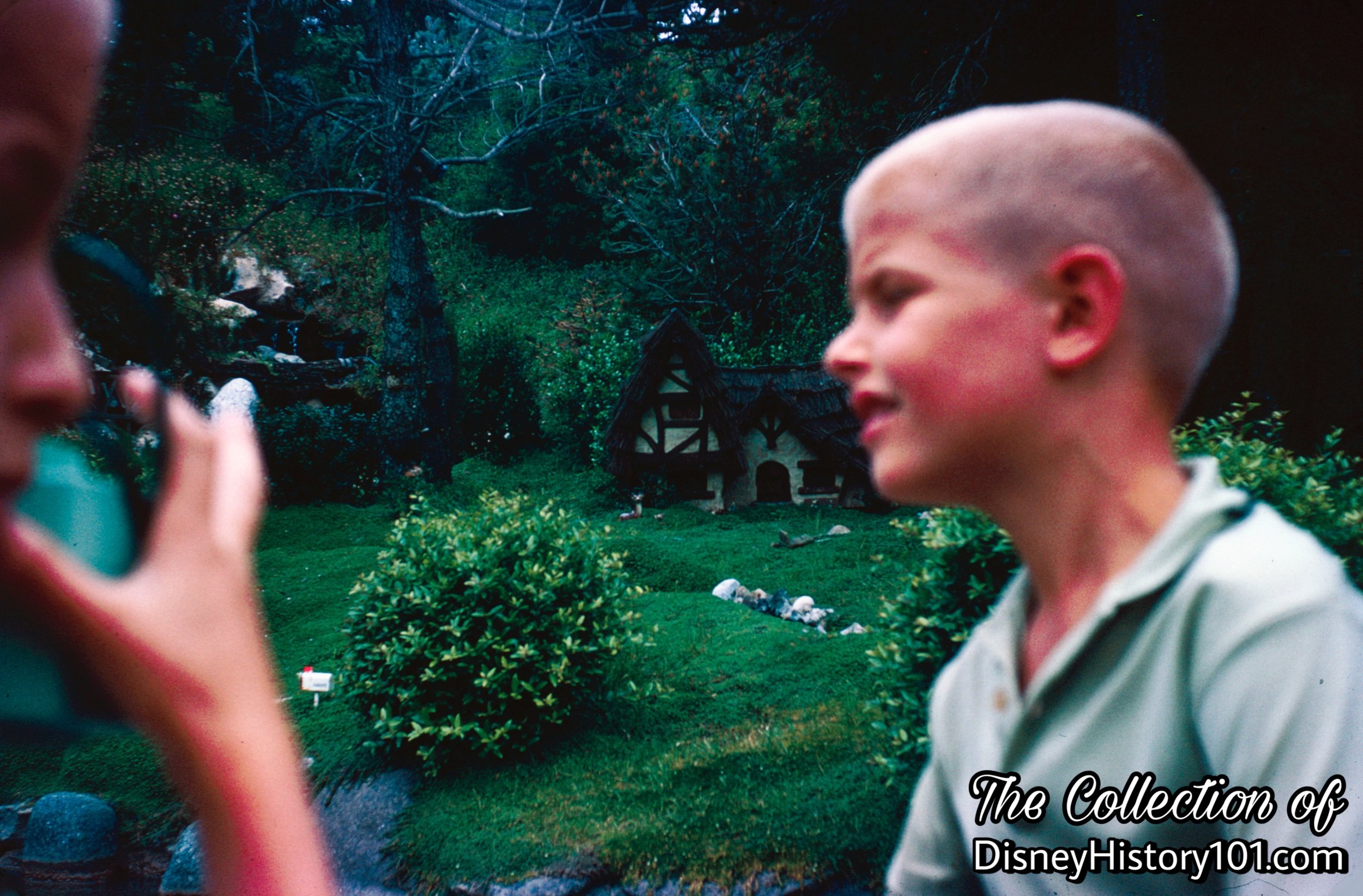
Seven Dwarf's Cottage
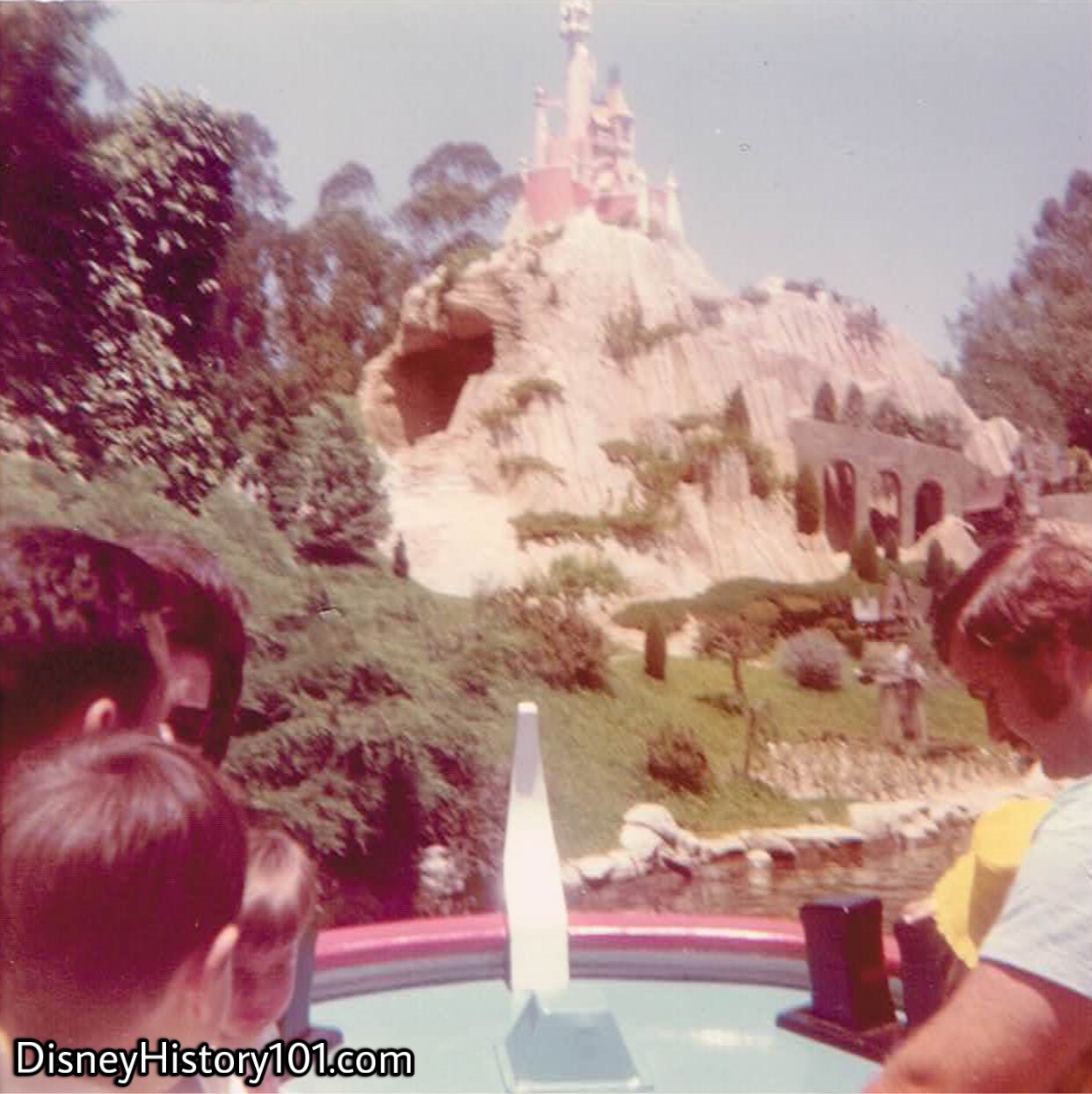
French Village & Cinderella Castle and Chateau, 1972
As we move further through “the land of fairy tales” or, “Le Pays des Contes de Fées” (as they say in France), we arrive in the French Countryside of Central France. High above the sleepy town, rise the stately spires of a castle!
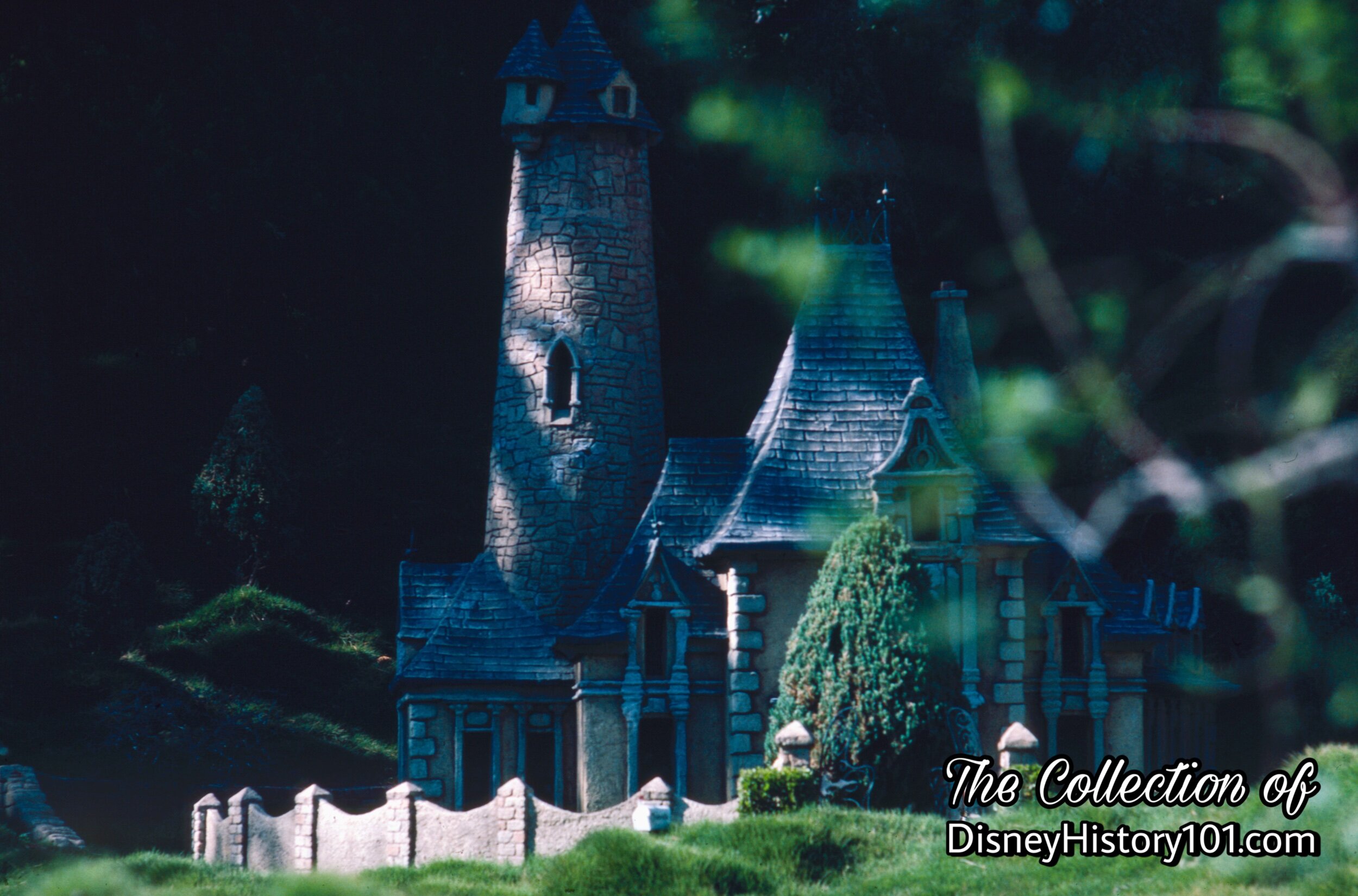
Before we approach the French Village we note an unidentified house.
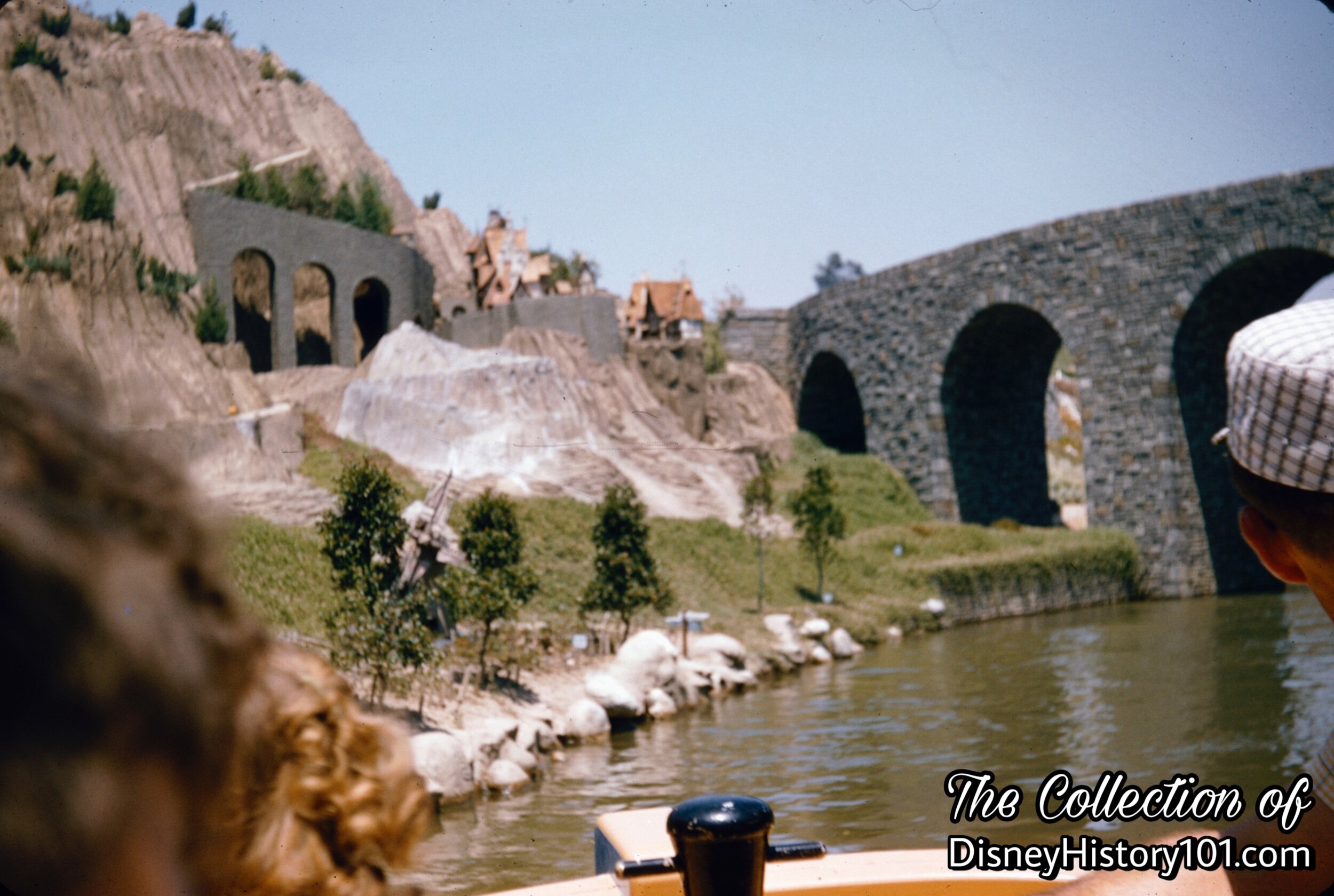
French Village
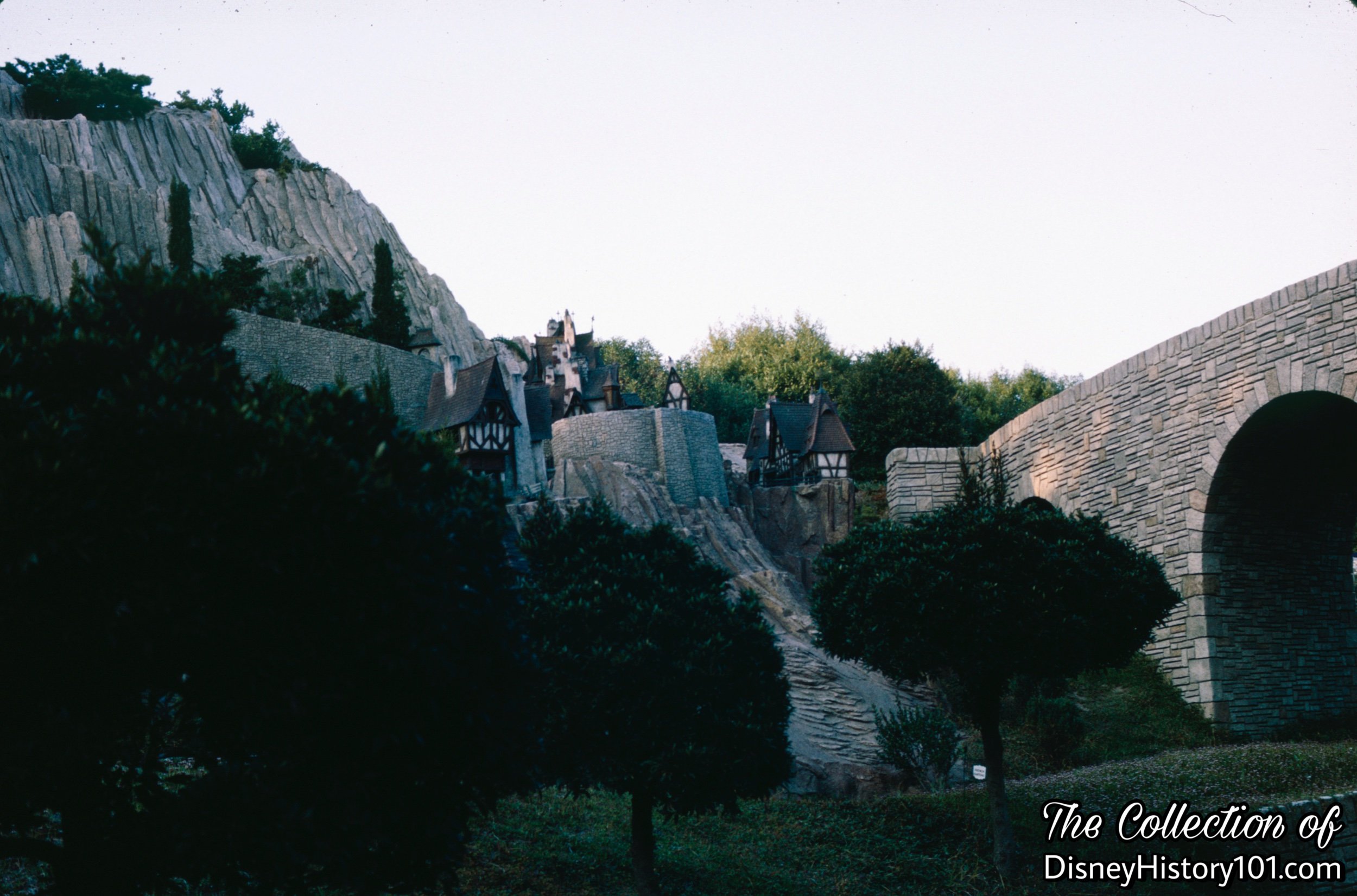
French Village
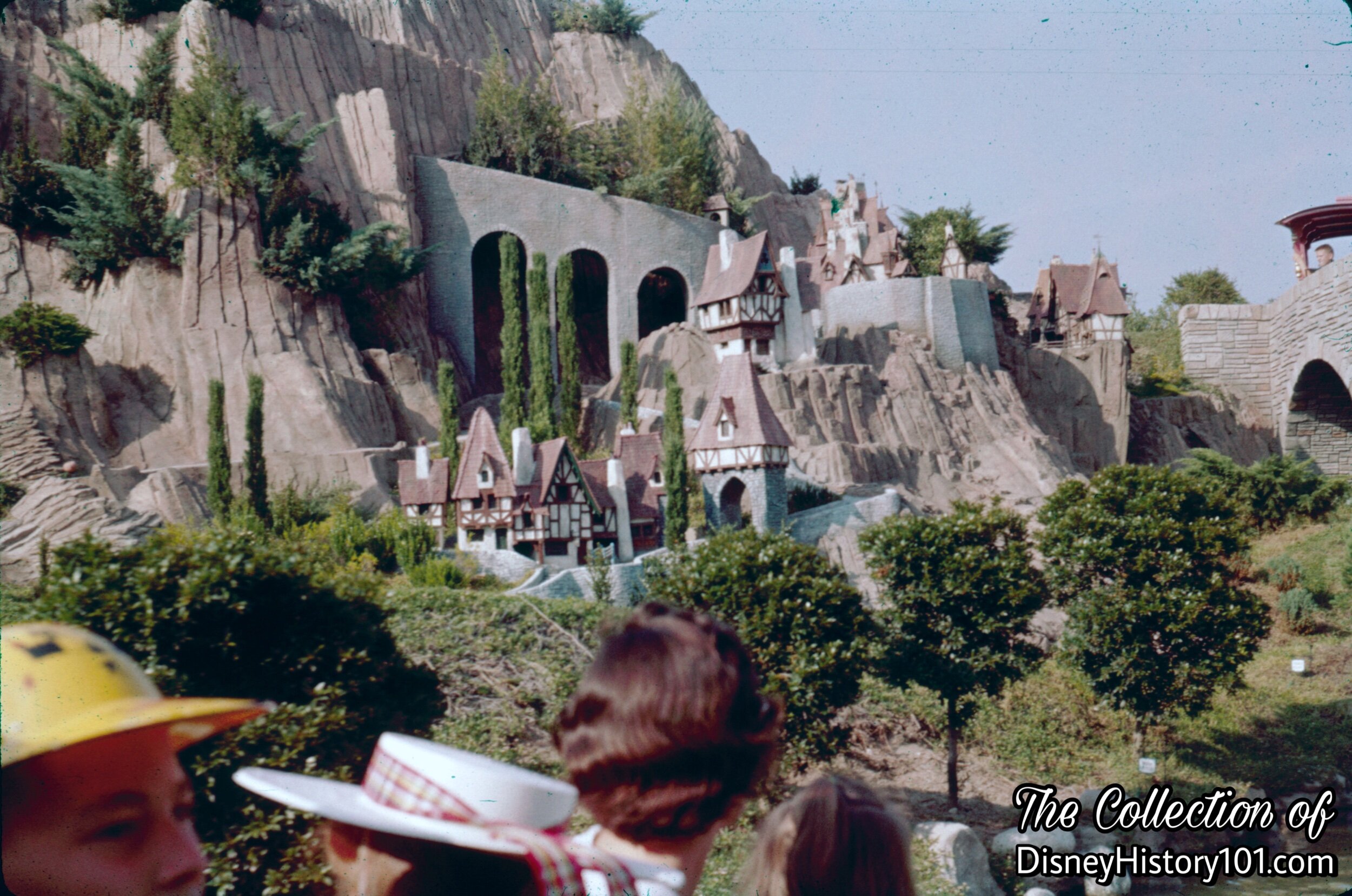
French Village, (August, 1959)
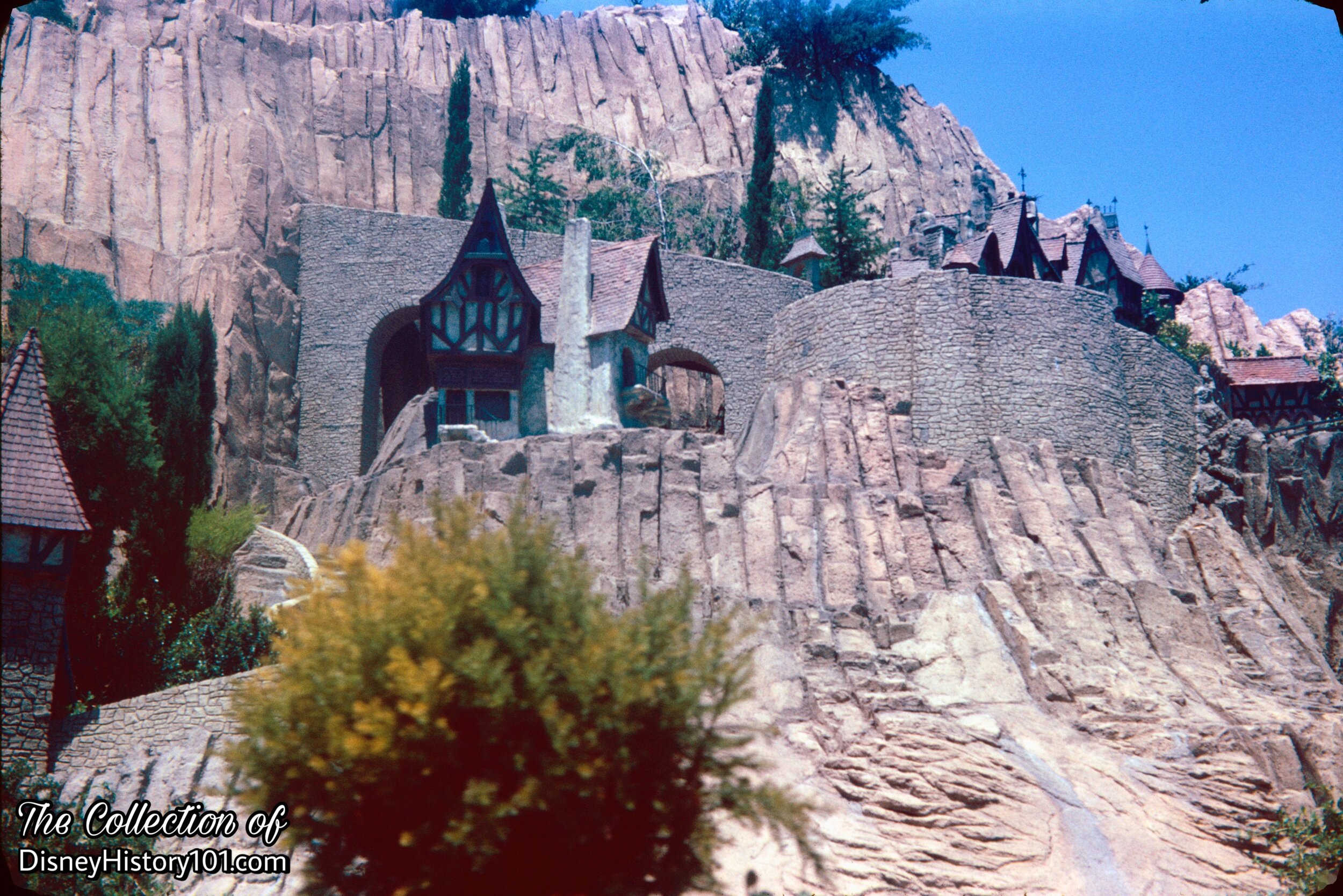
French Village, (August, 1962)
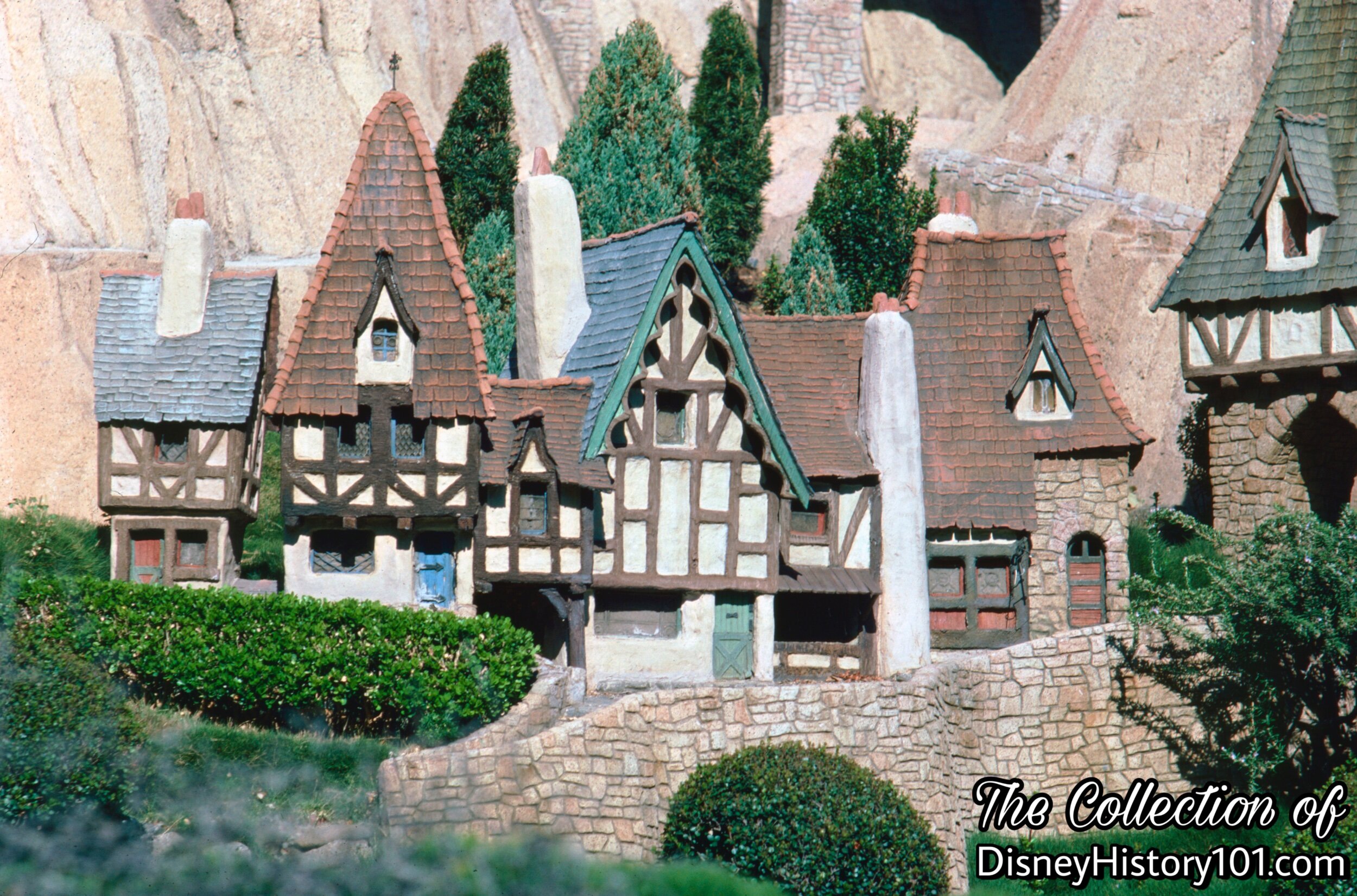
French Village, (1980)
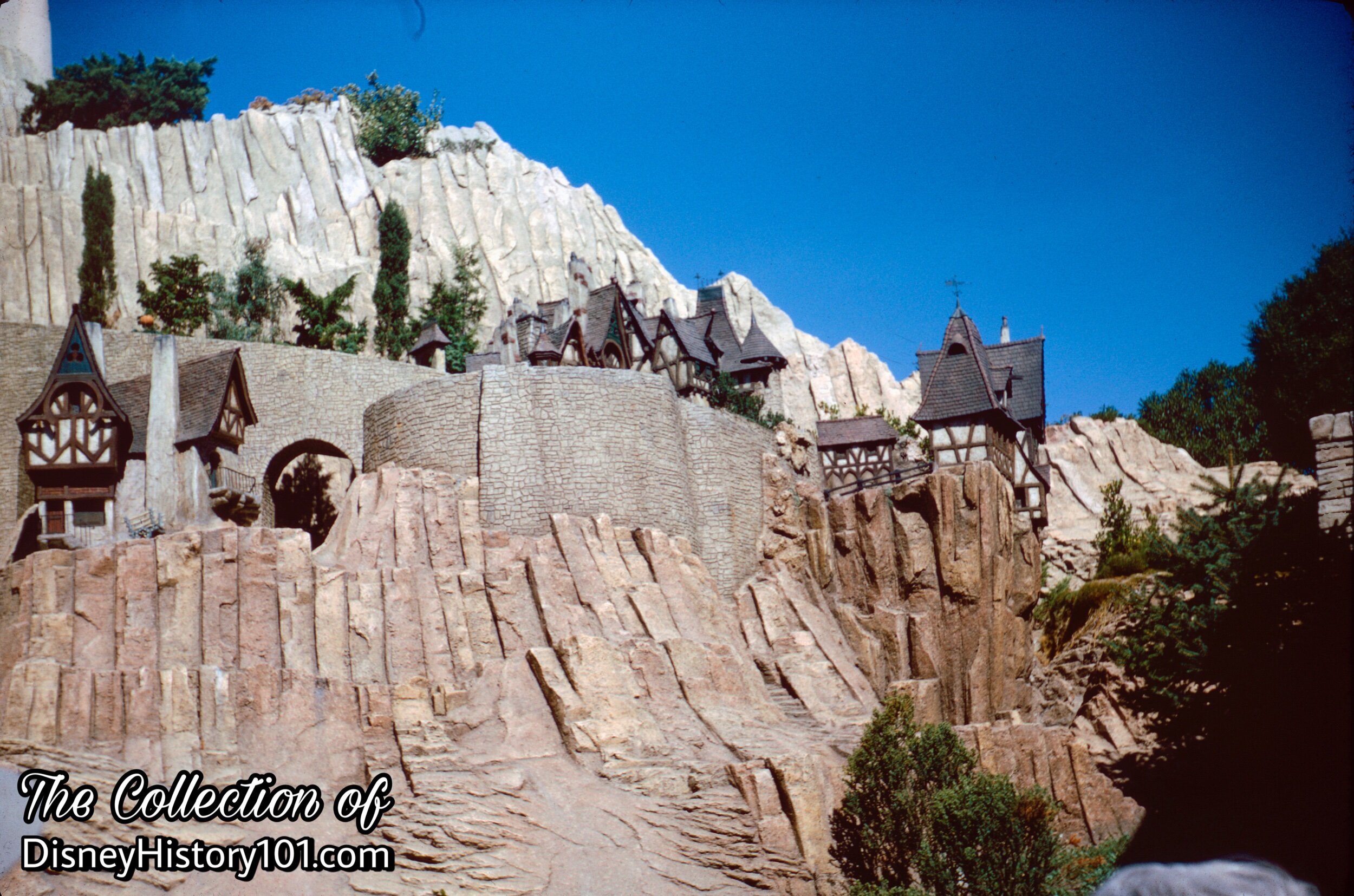
French Village
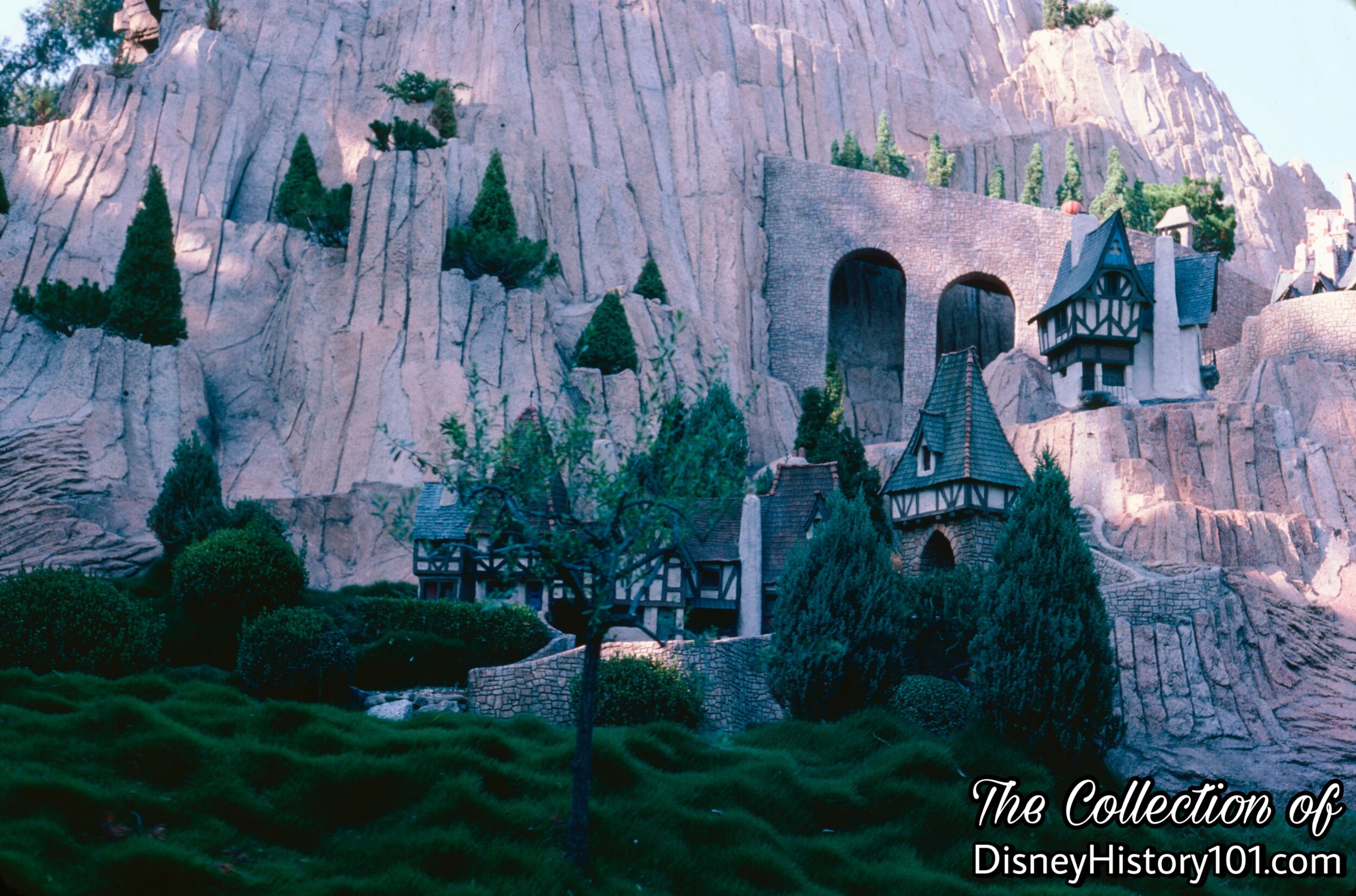
French Village
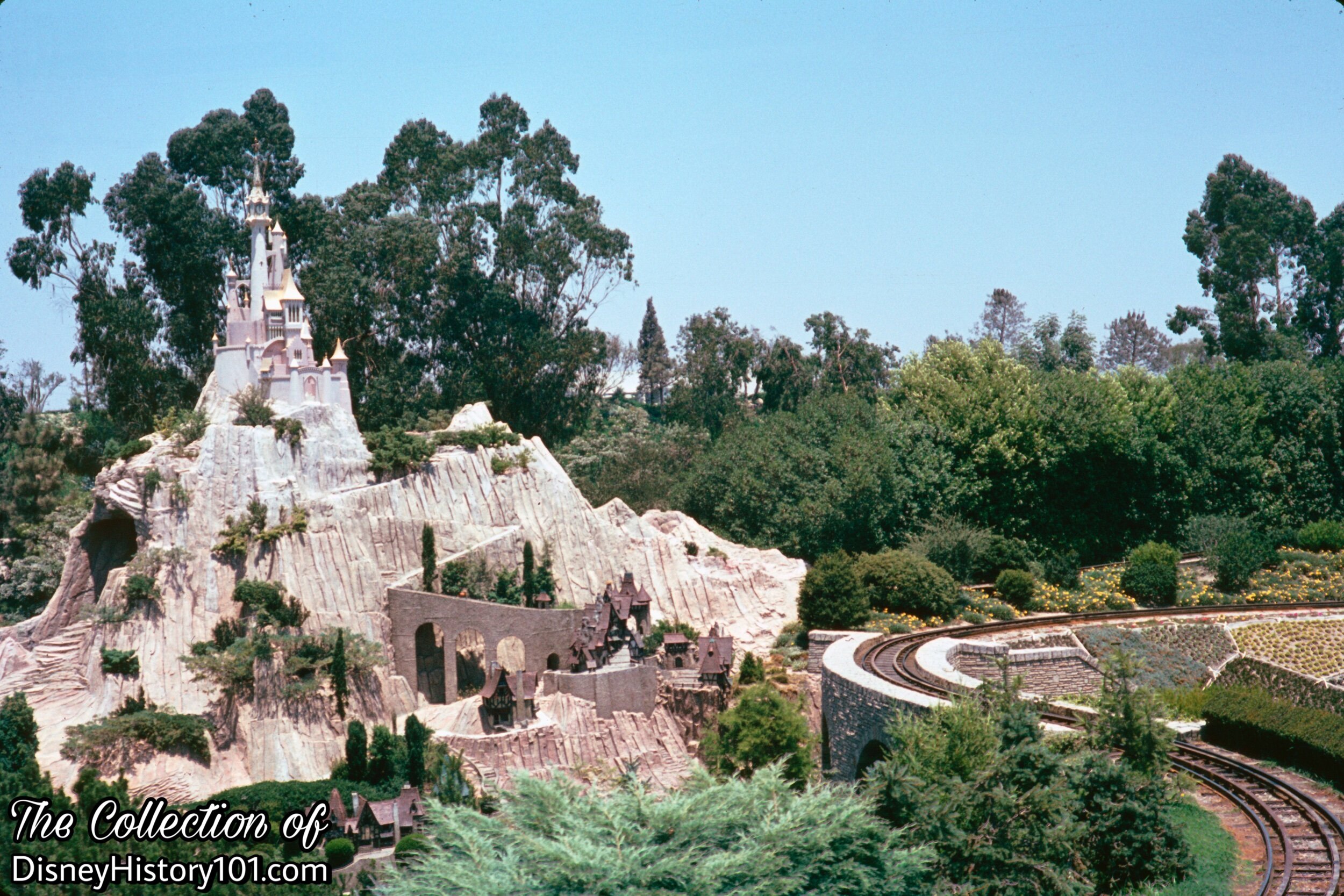
French Village & Castle, 1966
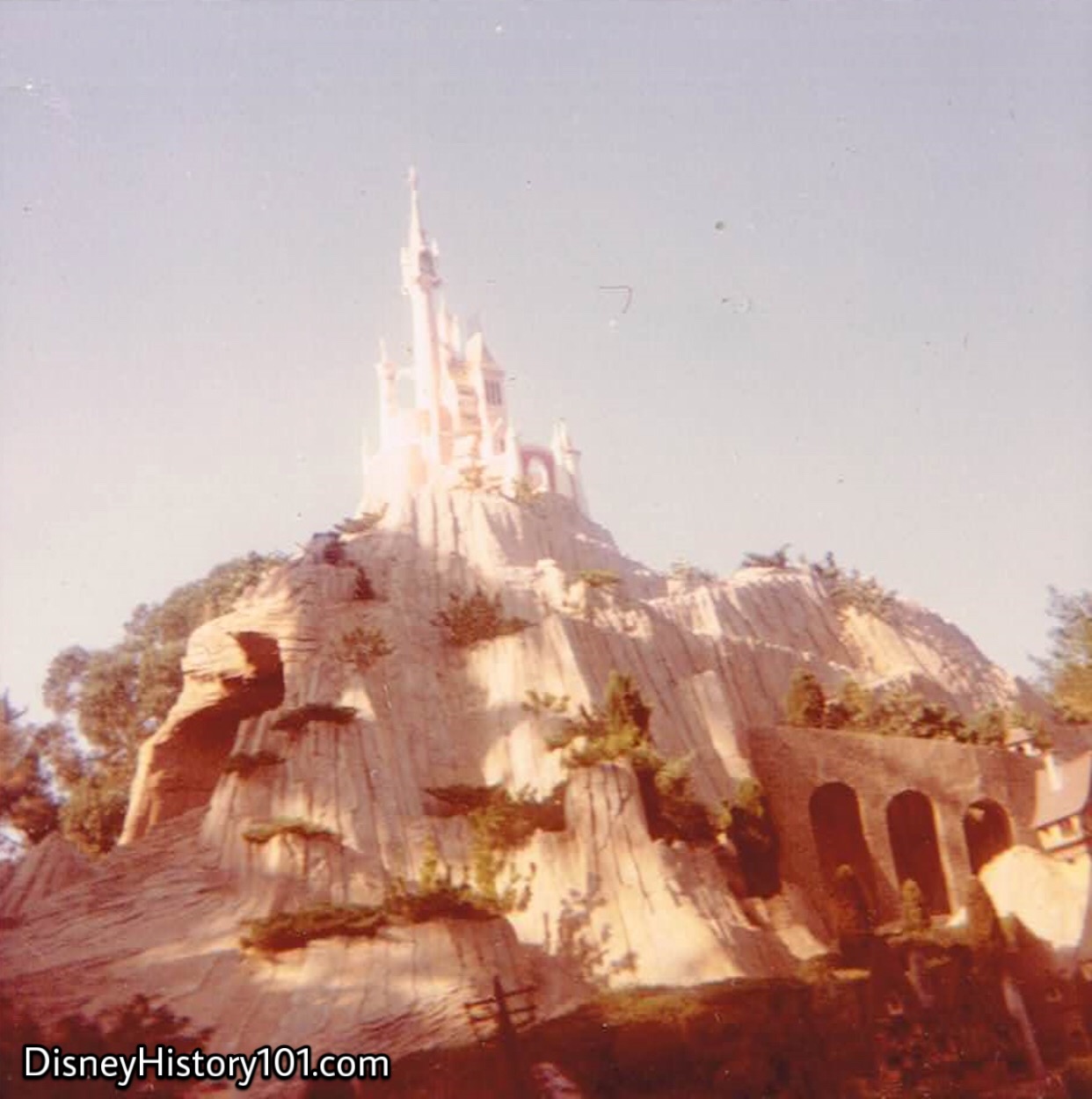
French Village & Castle
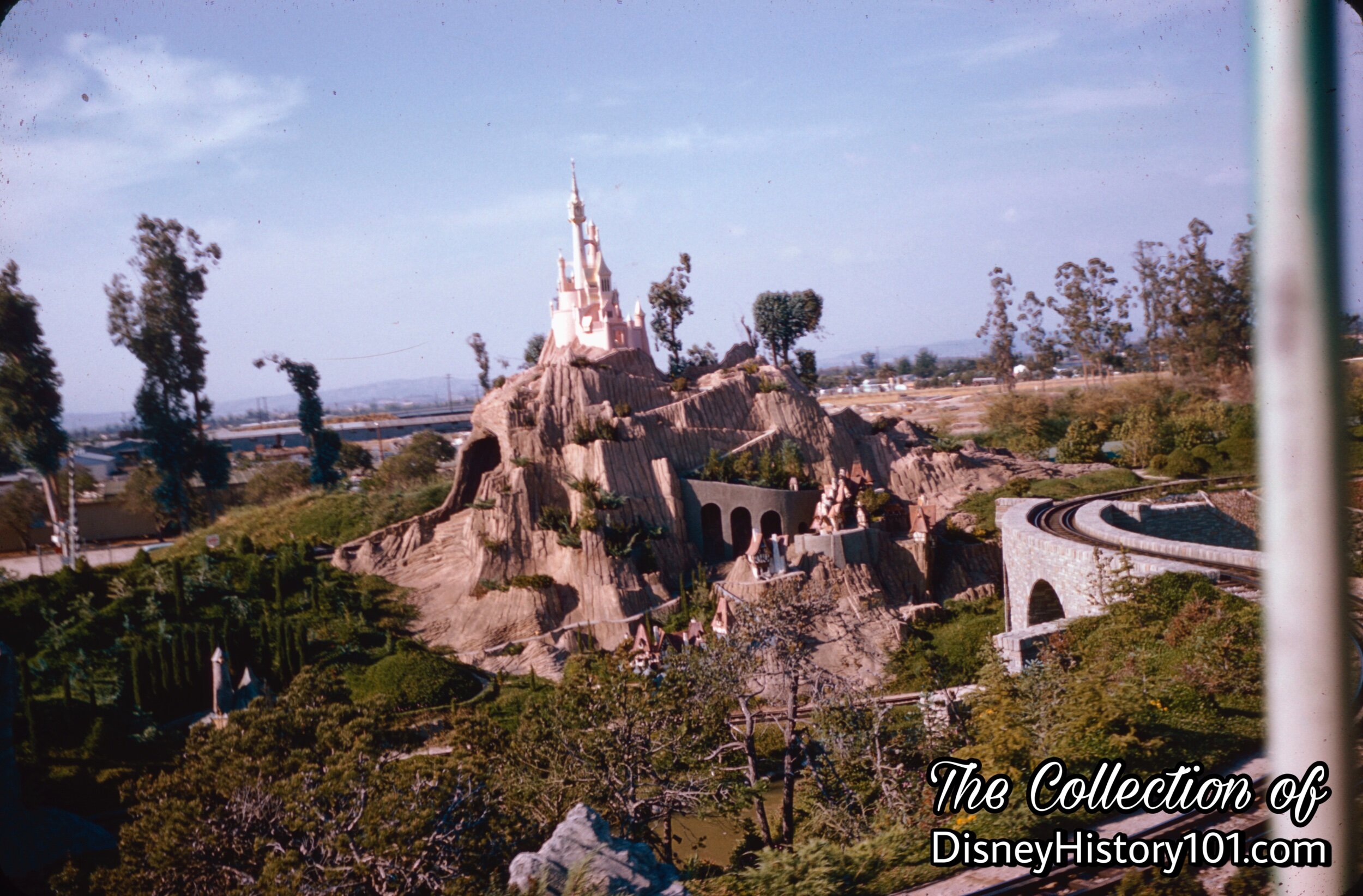
French Village & Castle
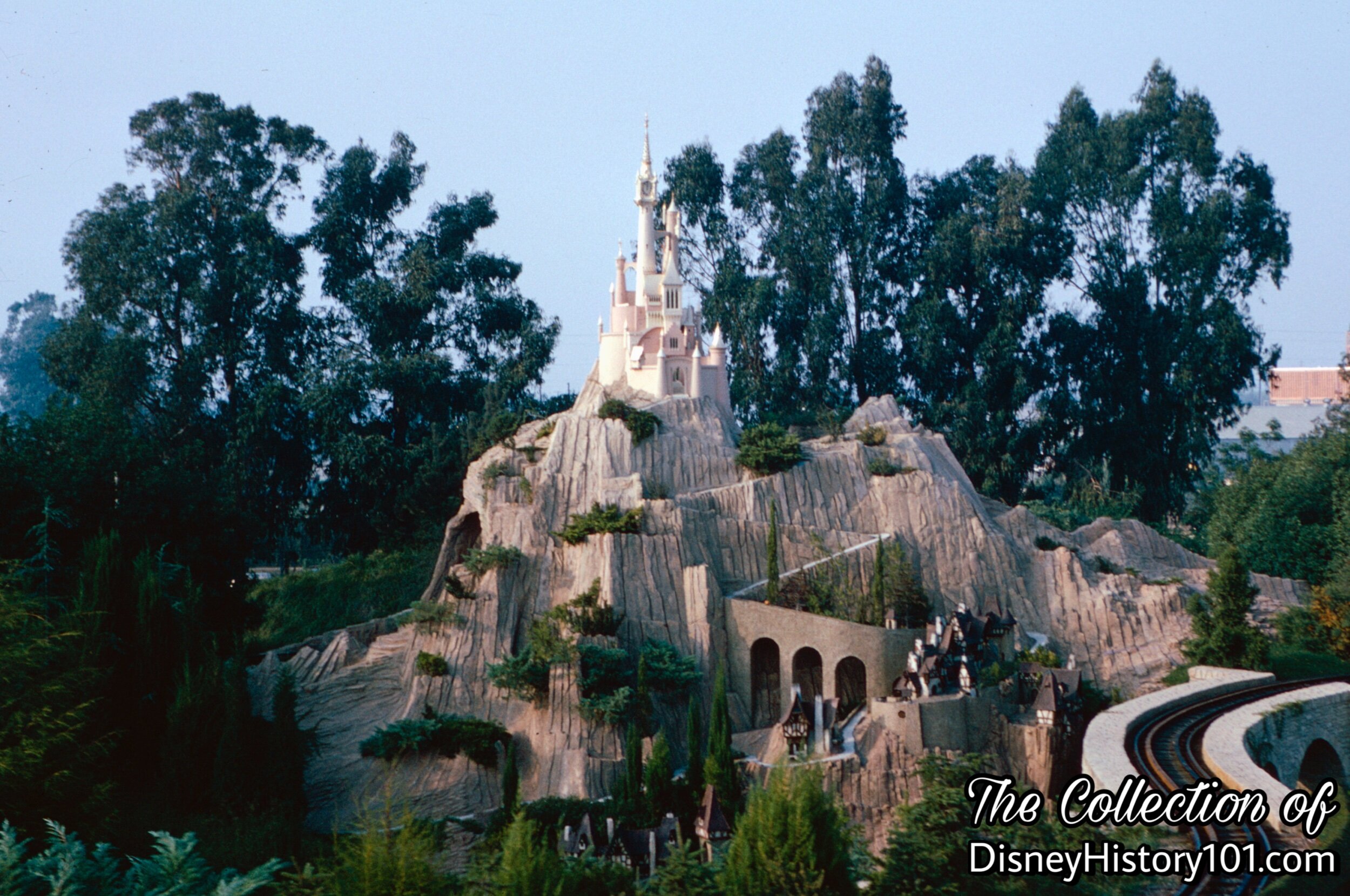
French Village & Castle, (September, 1963)

French Village & Castle, (1966)
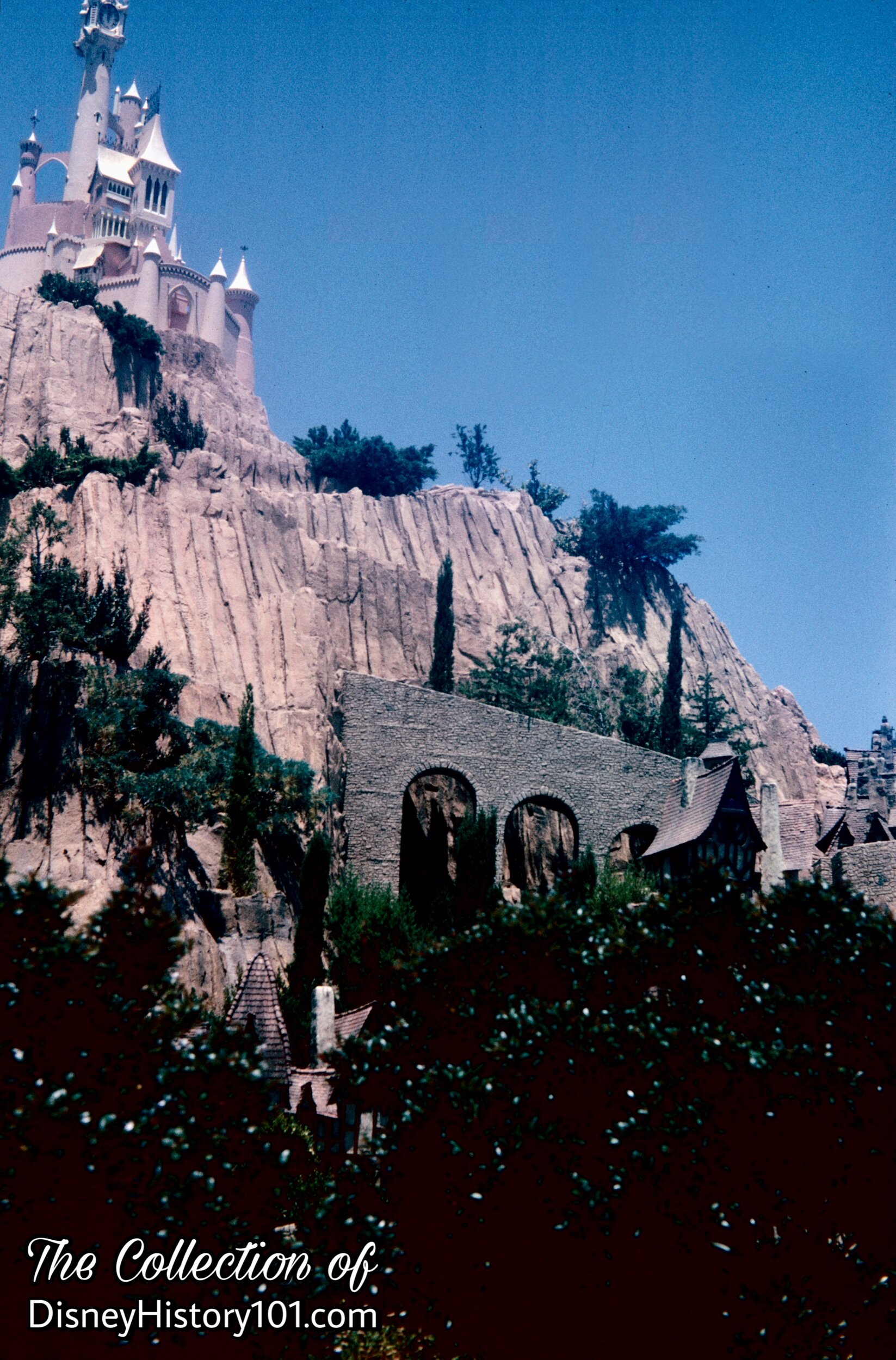
French Village & Castle, (August, 1962)
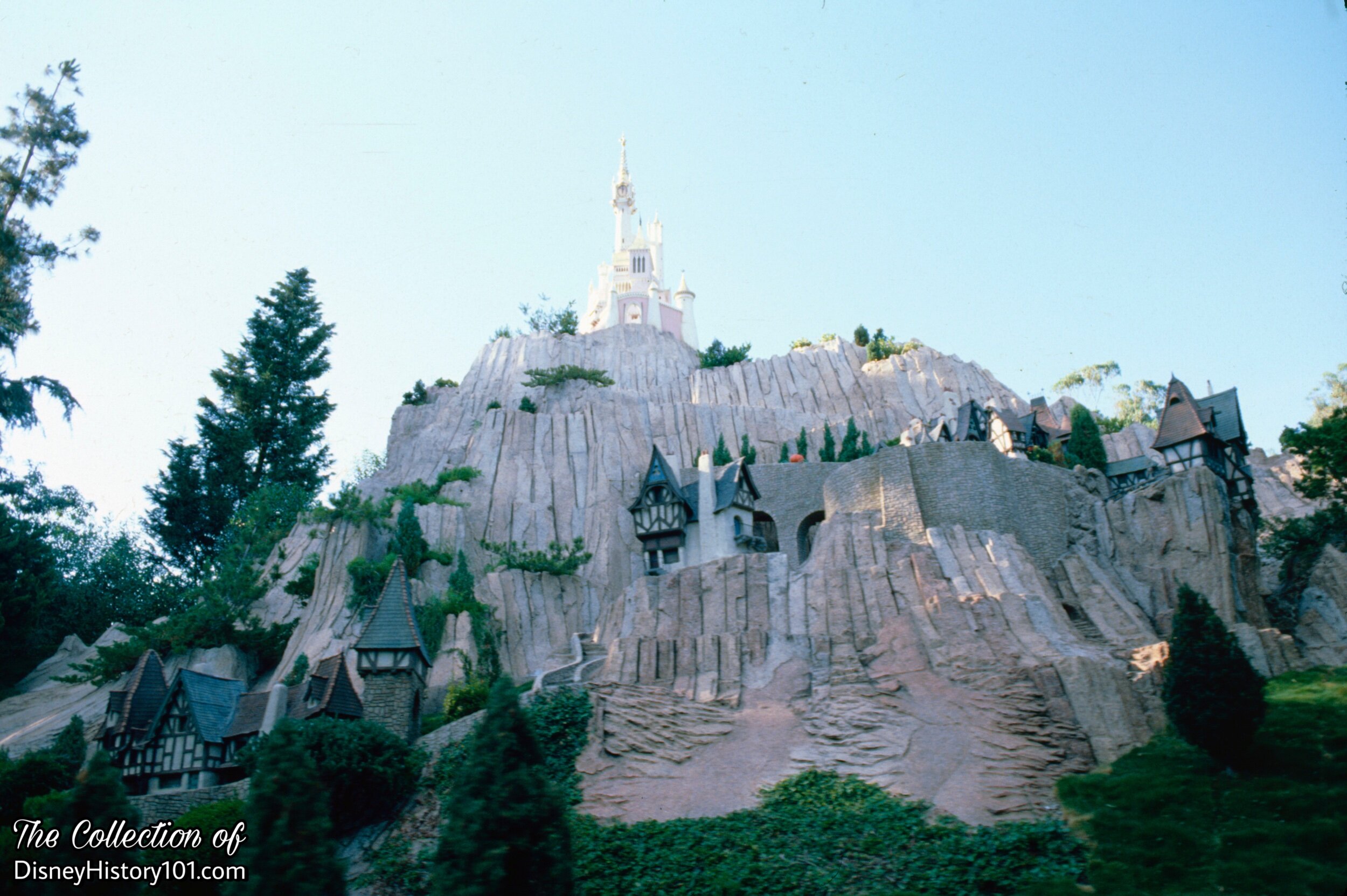
French Village & Castle, (July, 1979)
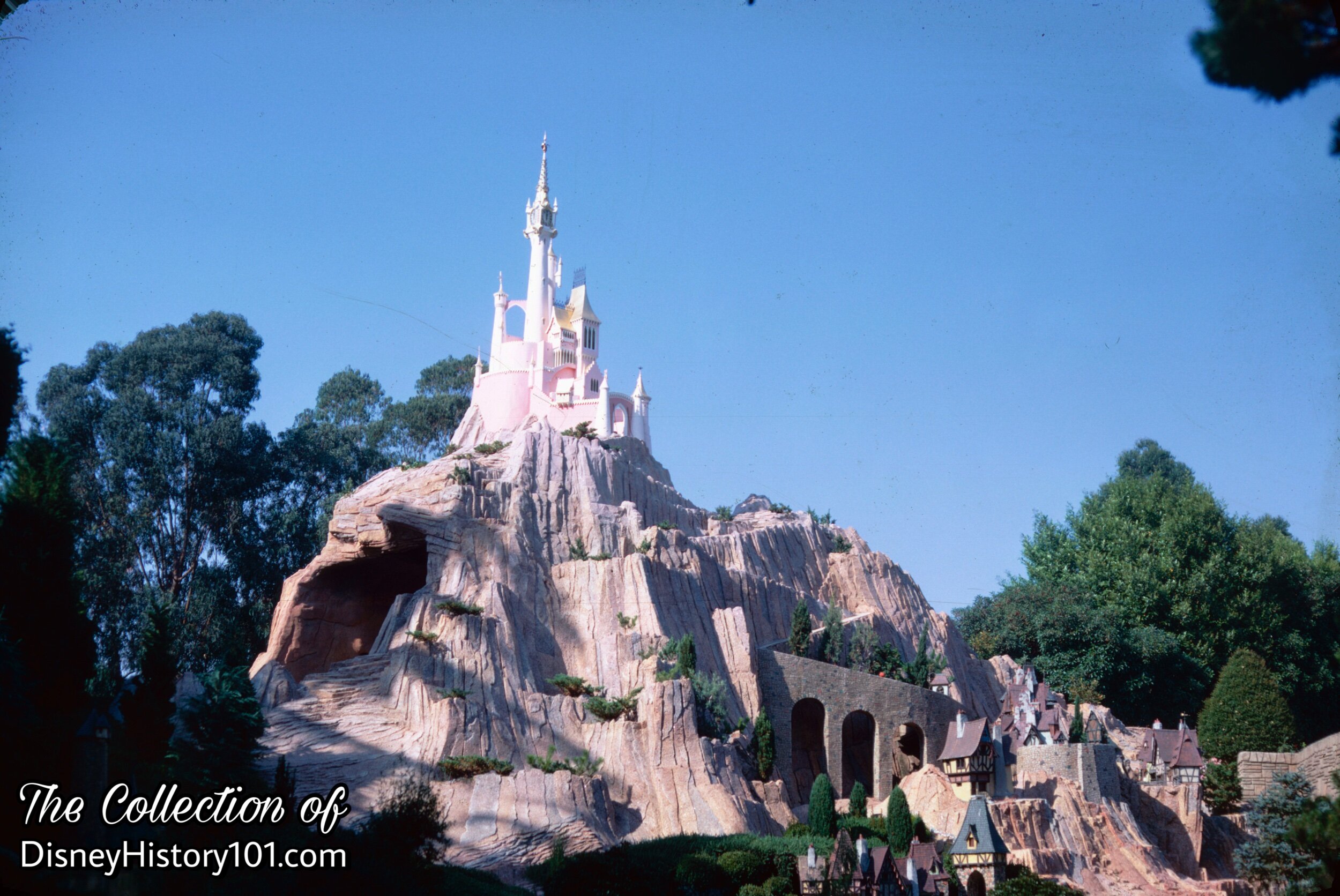
French Village & Castle, (July, 1969)
Cinderella’s Castle sits atop the highest point of Storybook Land!
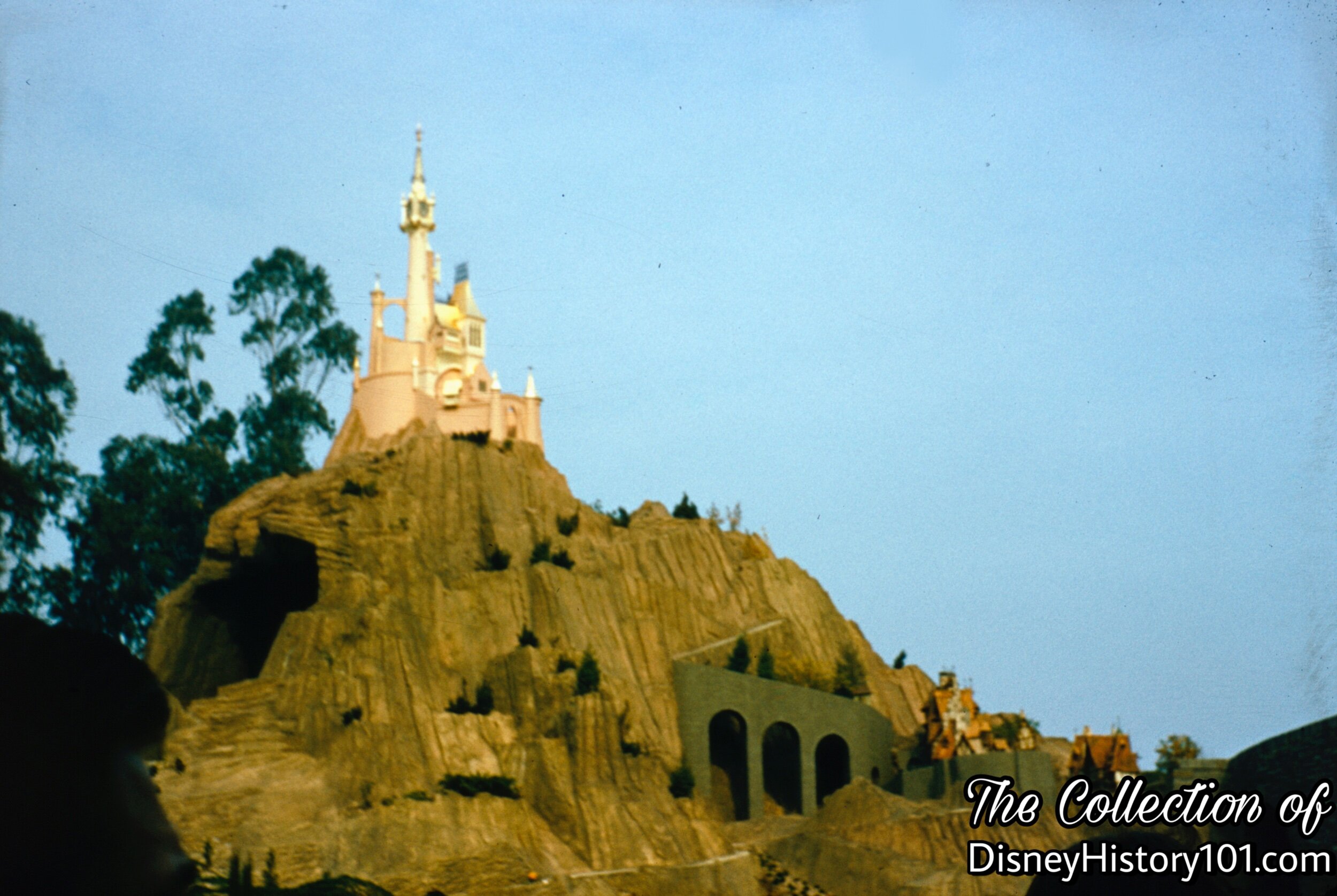
French Village & Castle
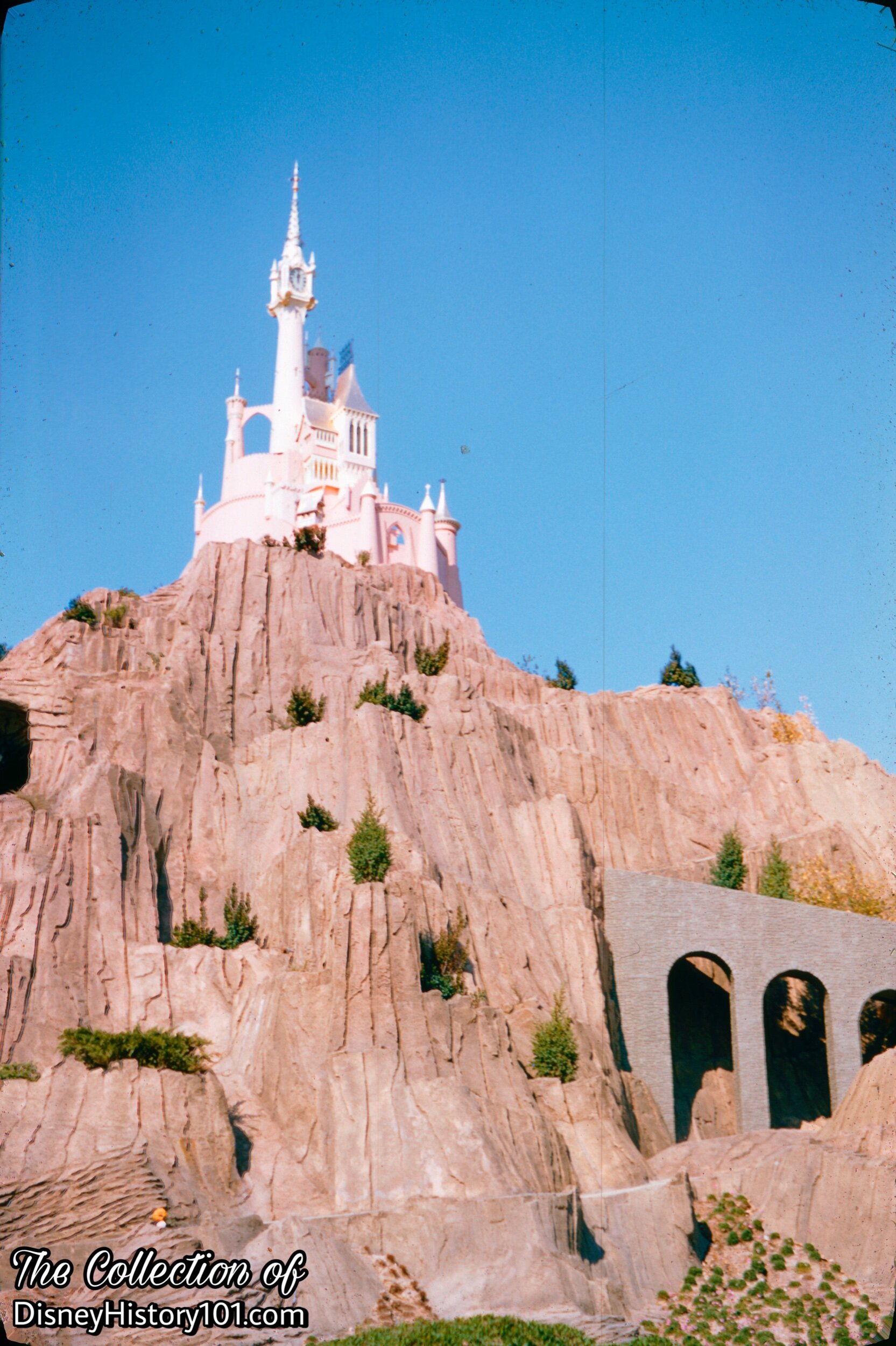
French Village & Castle, 1957
A chateau (not pictured) is “where Cinderella lived with her wicked stepmother and two evil stepsisters. The castle on the hill is where she went to the ball, and halfway down the hill you can see the pumpkin that was once Cinderella’s carriage.” The narrator of “Disneyland U.S.A.” (released December 20, 1956) tells this story a little differently : “Once upon a time, Cinderella followed the winding road to meet her Prince Charming in this castle, where they lived happily ever after”.
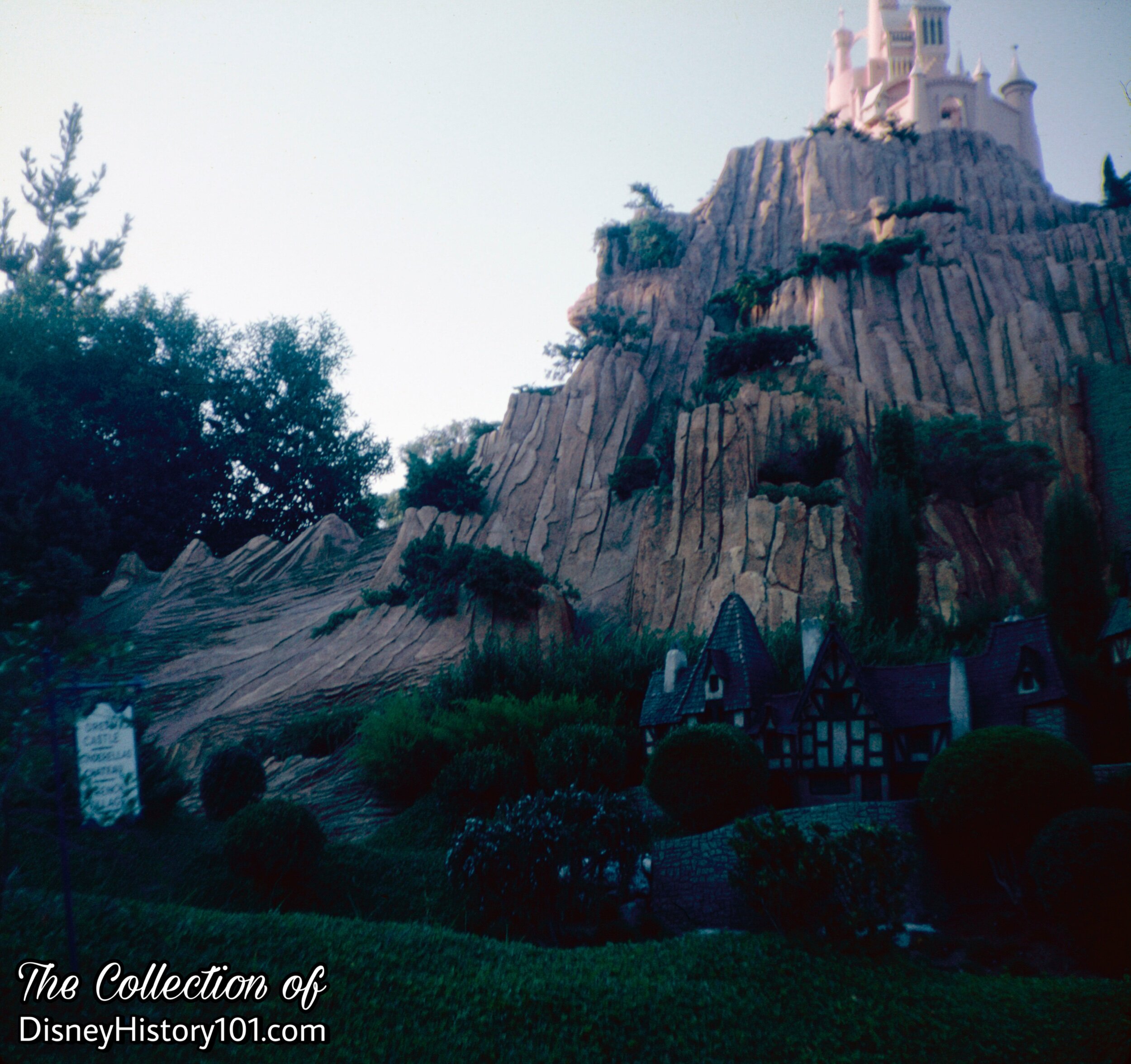
French Village
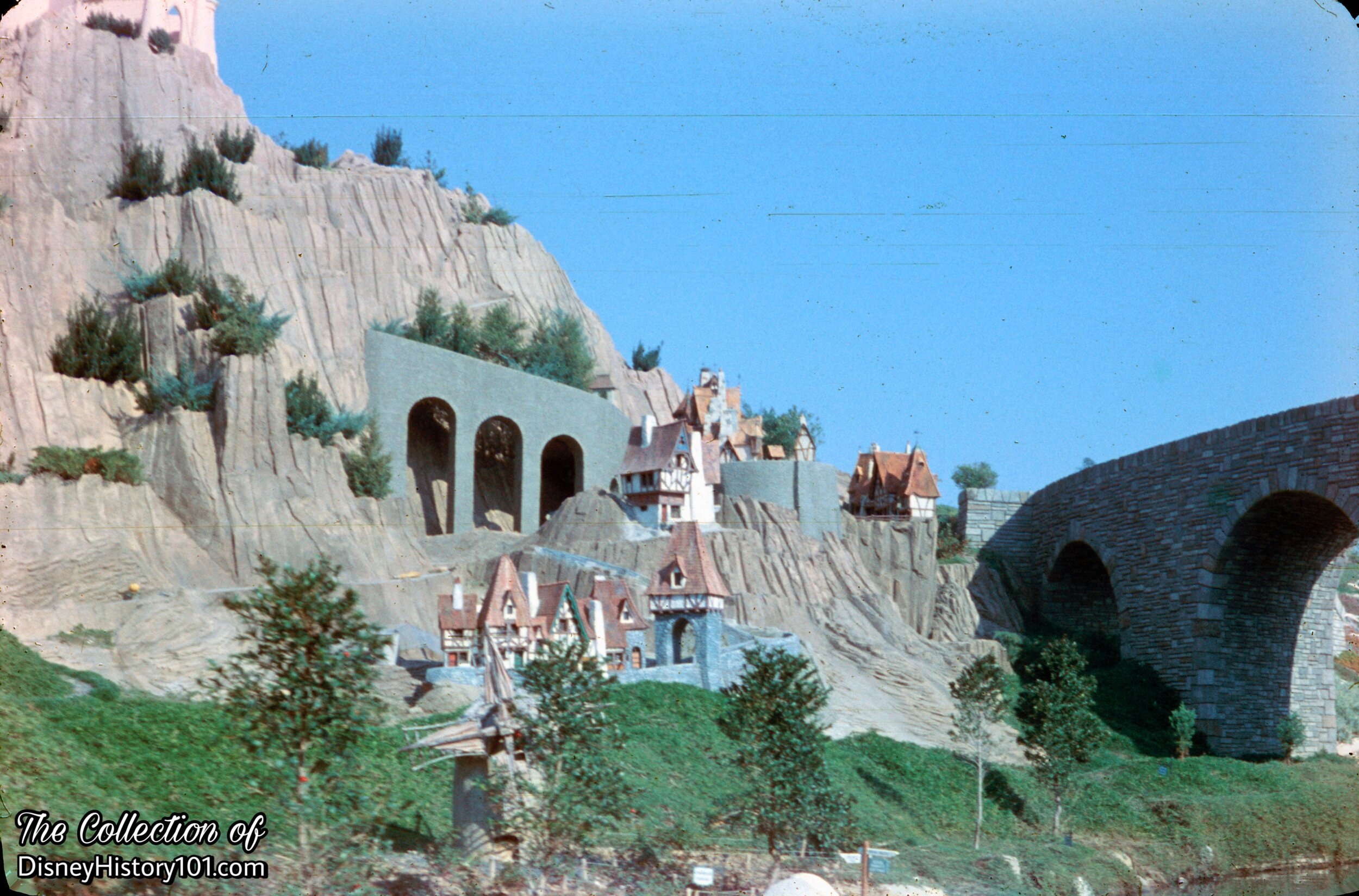
French Village
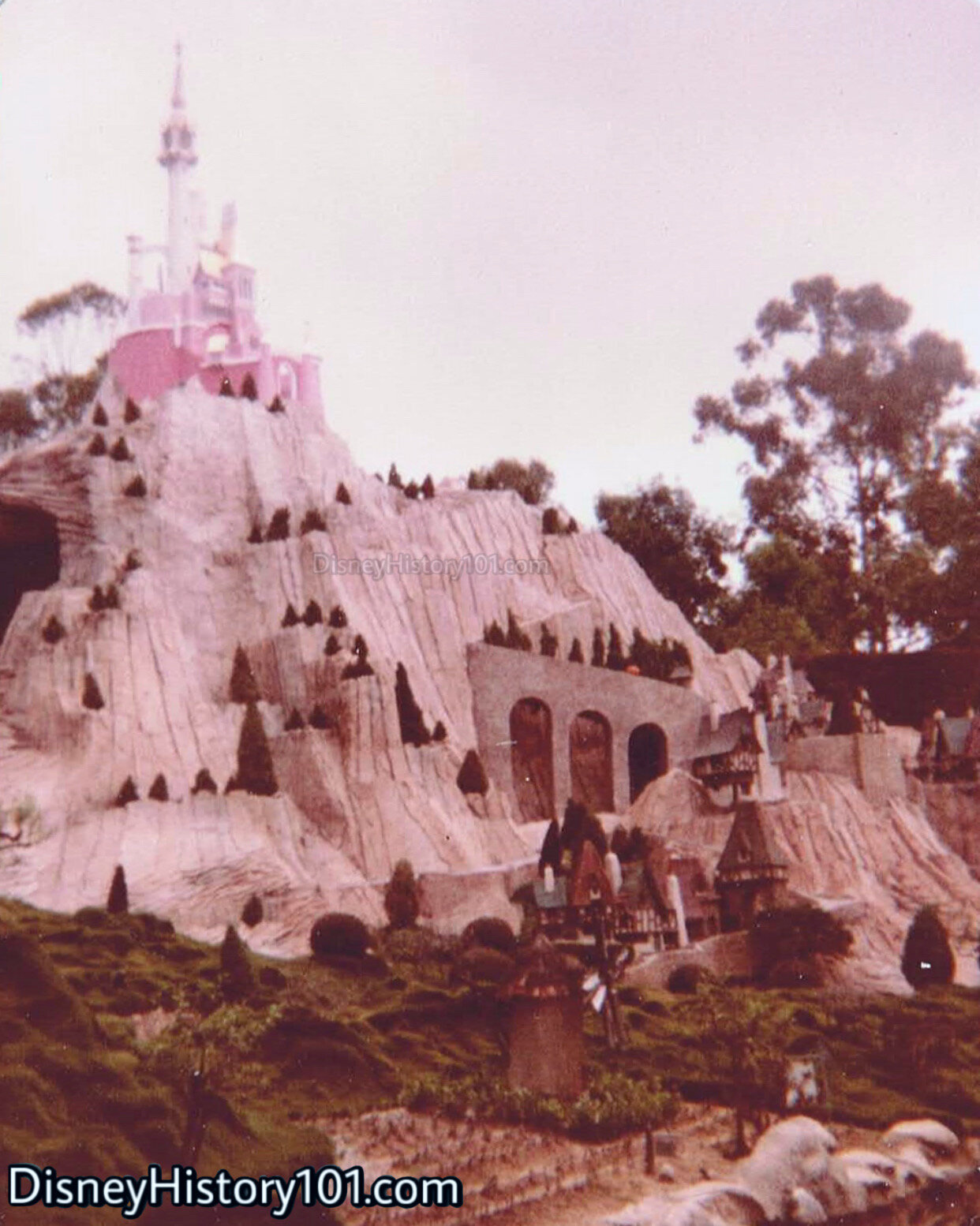
French Village & Castle, c. 1981-1982
The “French Village (below) is where Prince Charming came looking for the girl who lost the glass slipper.”
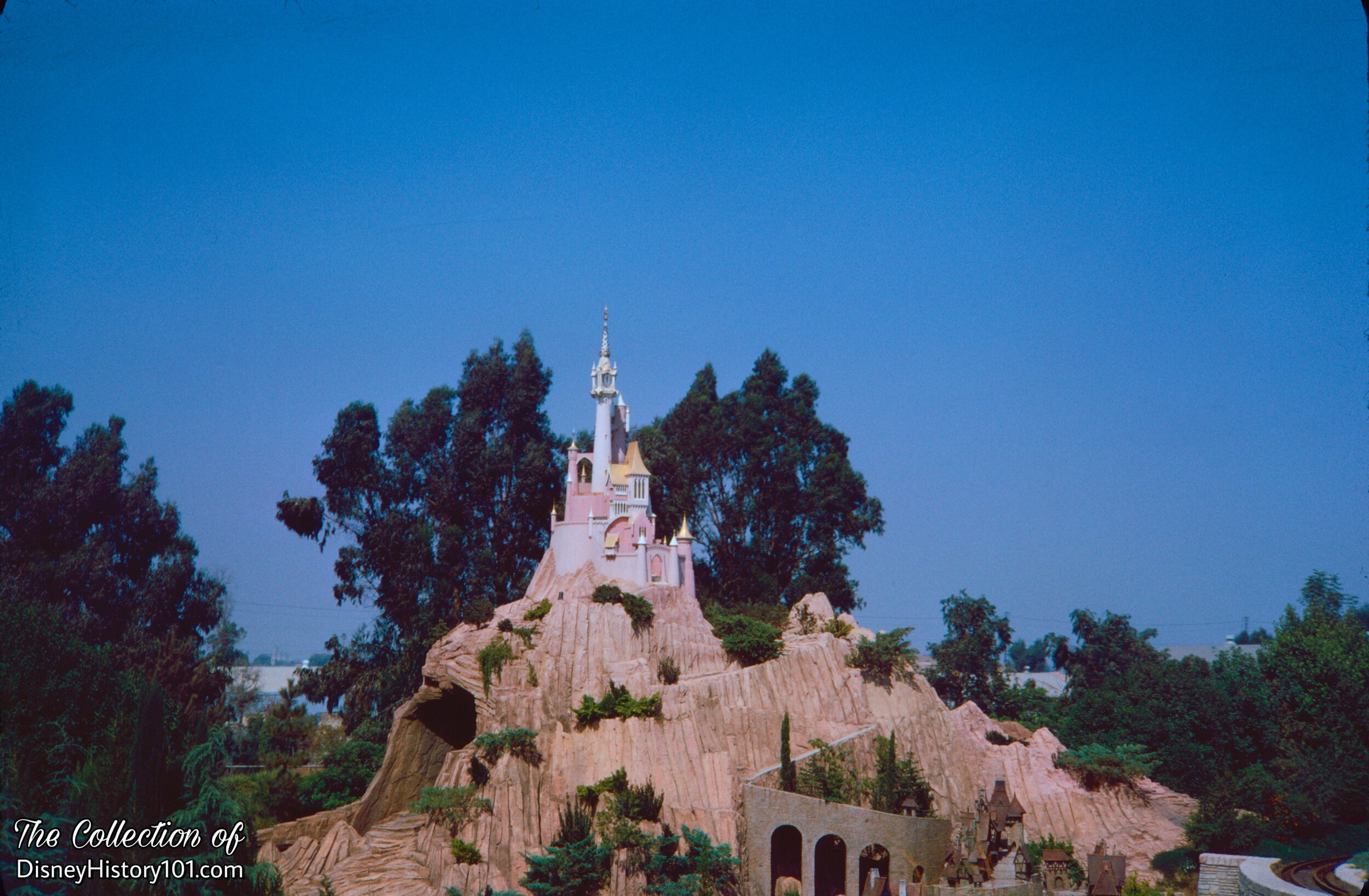
French Village & Castle, (September, 1962)
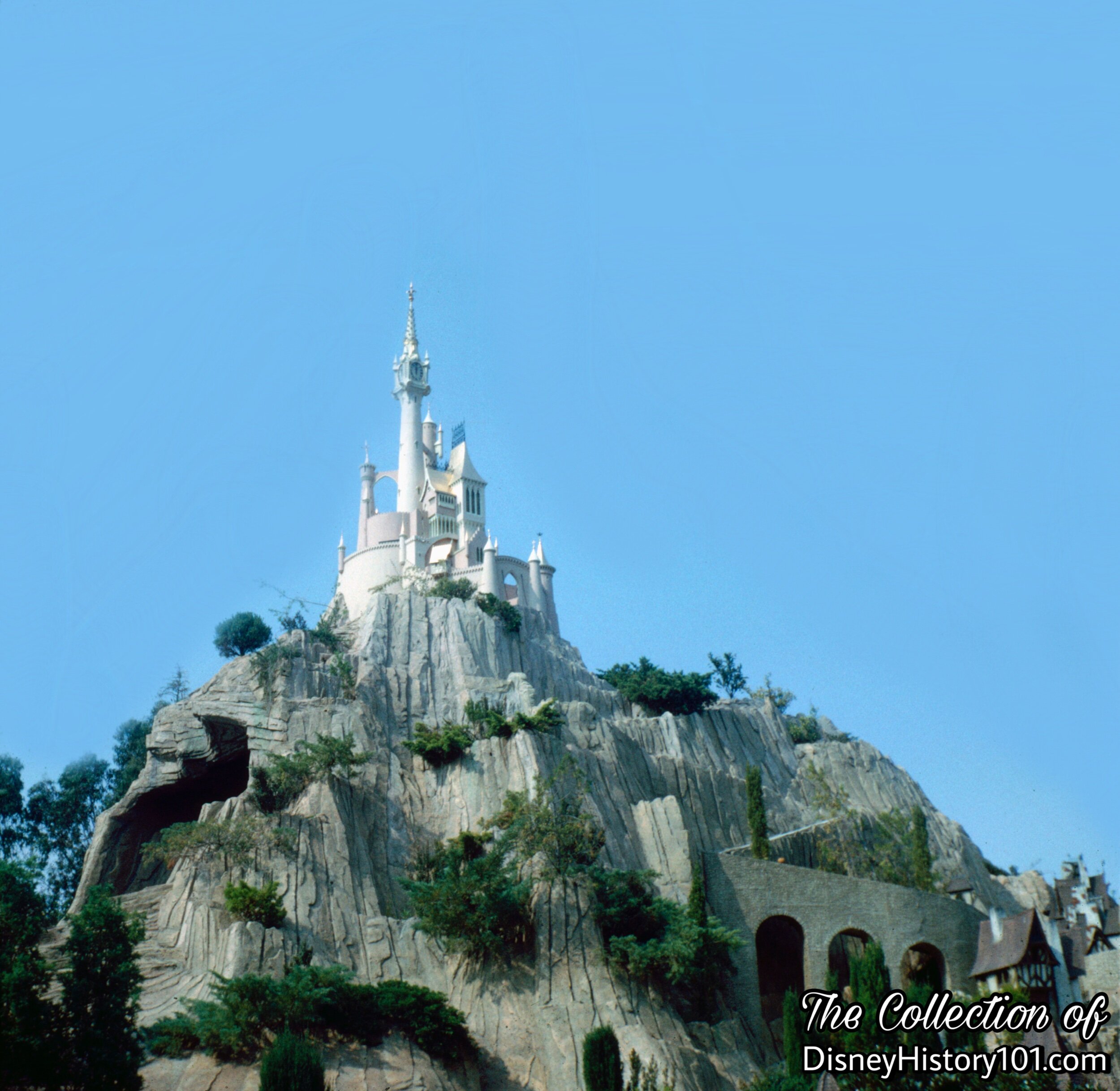
French Village
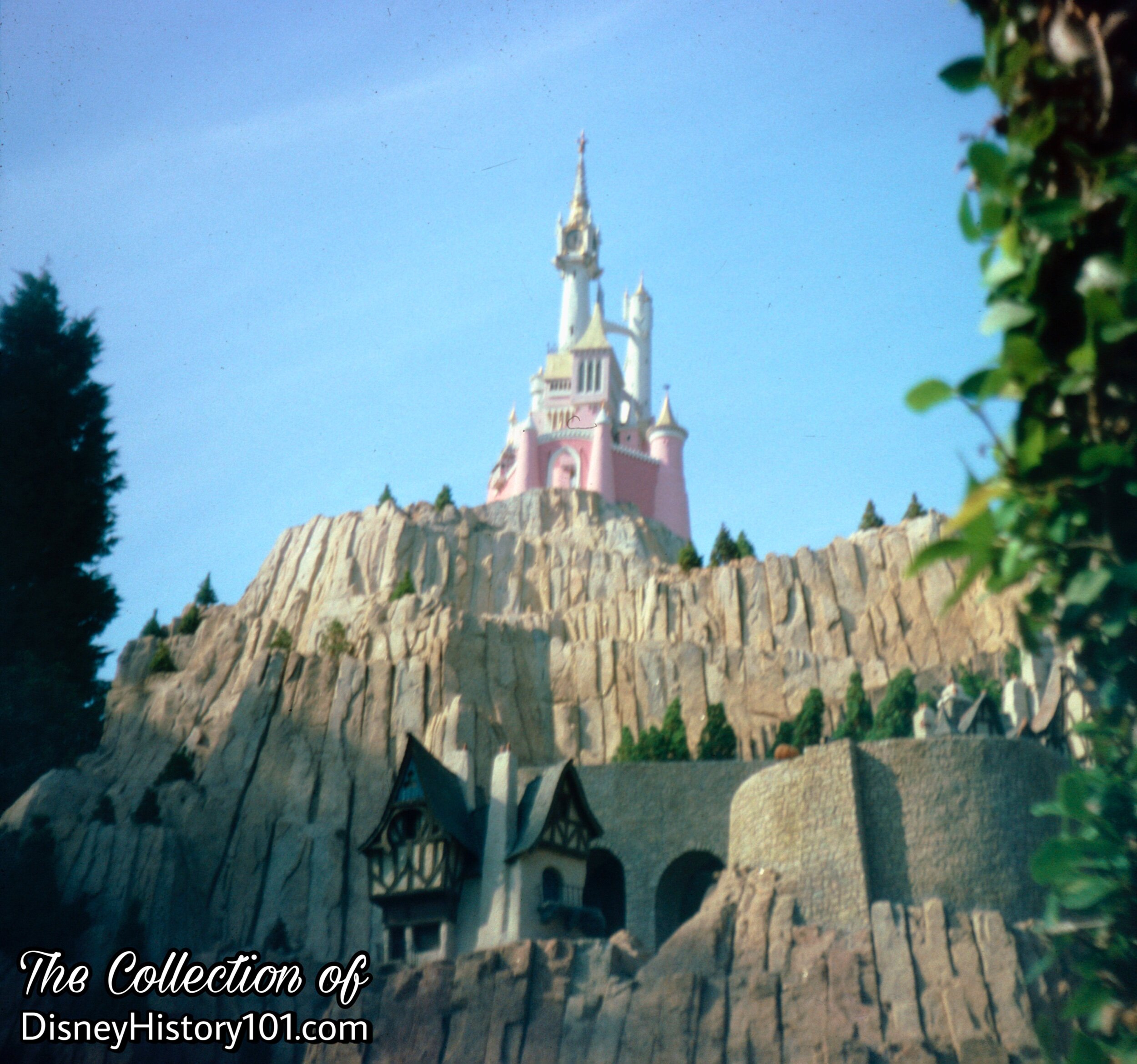
French Village & Castle, (June, 1984)
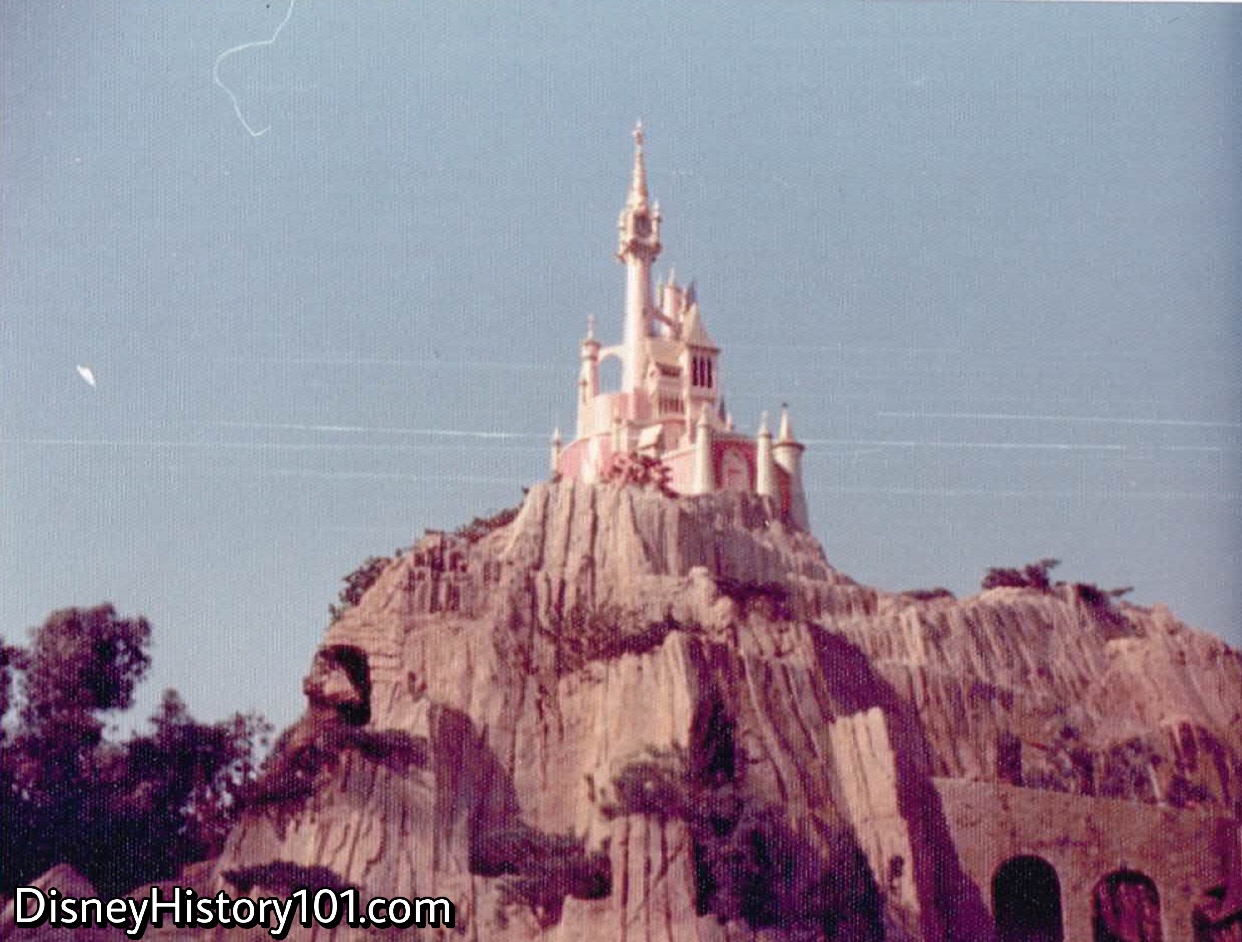
French Village & Castle, 1960s.

French Village & Castle
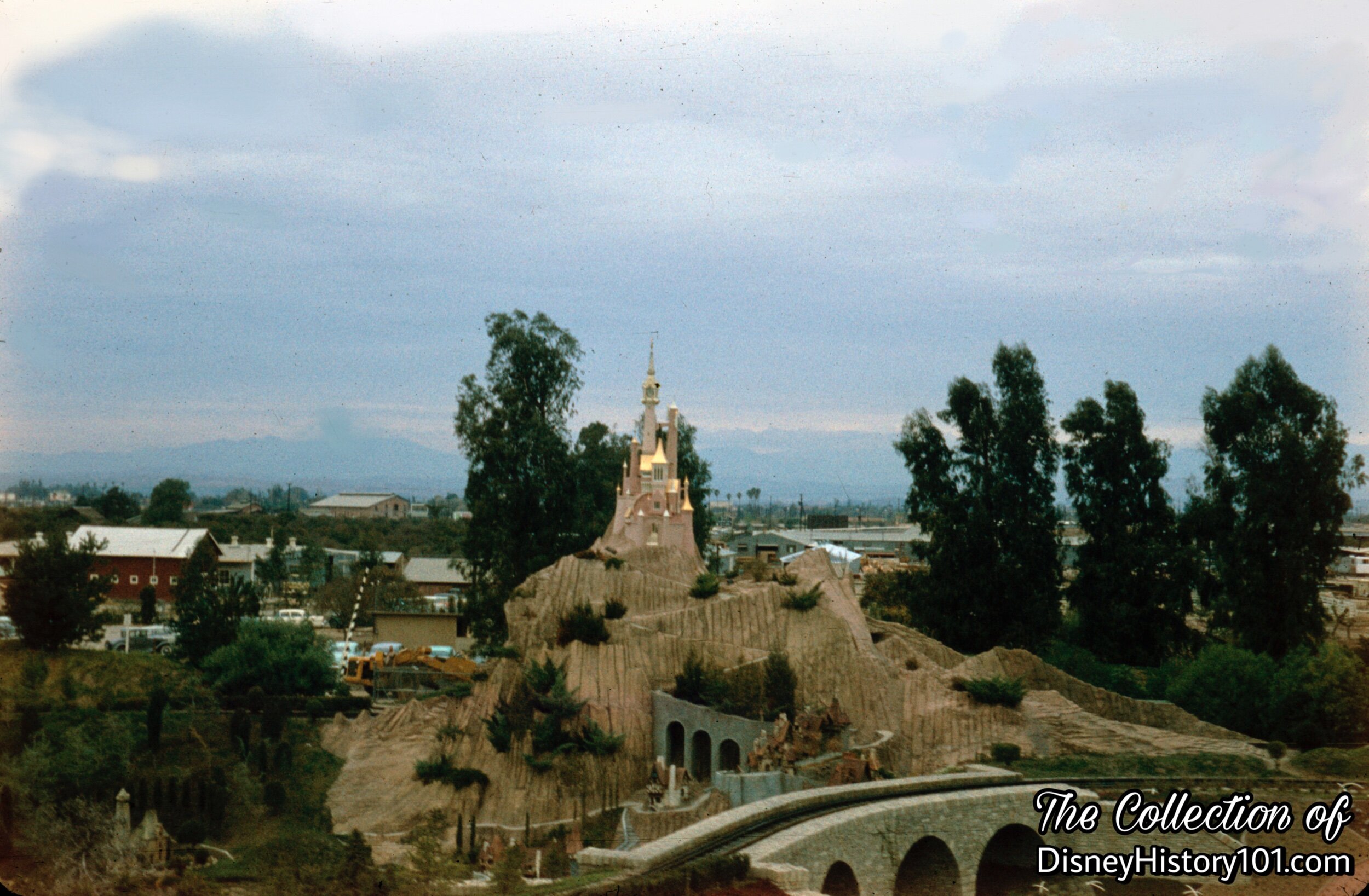
French Village & Castle
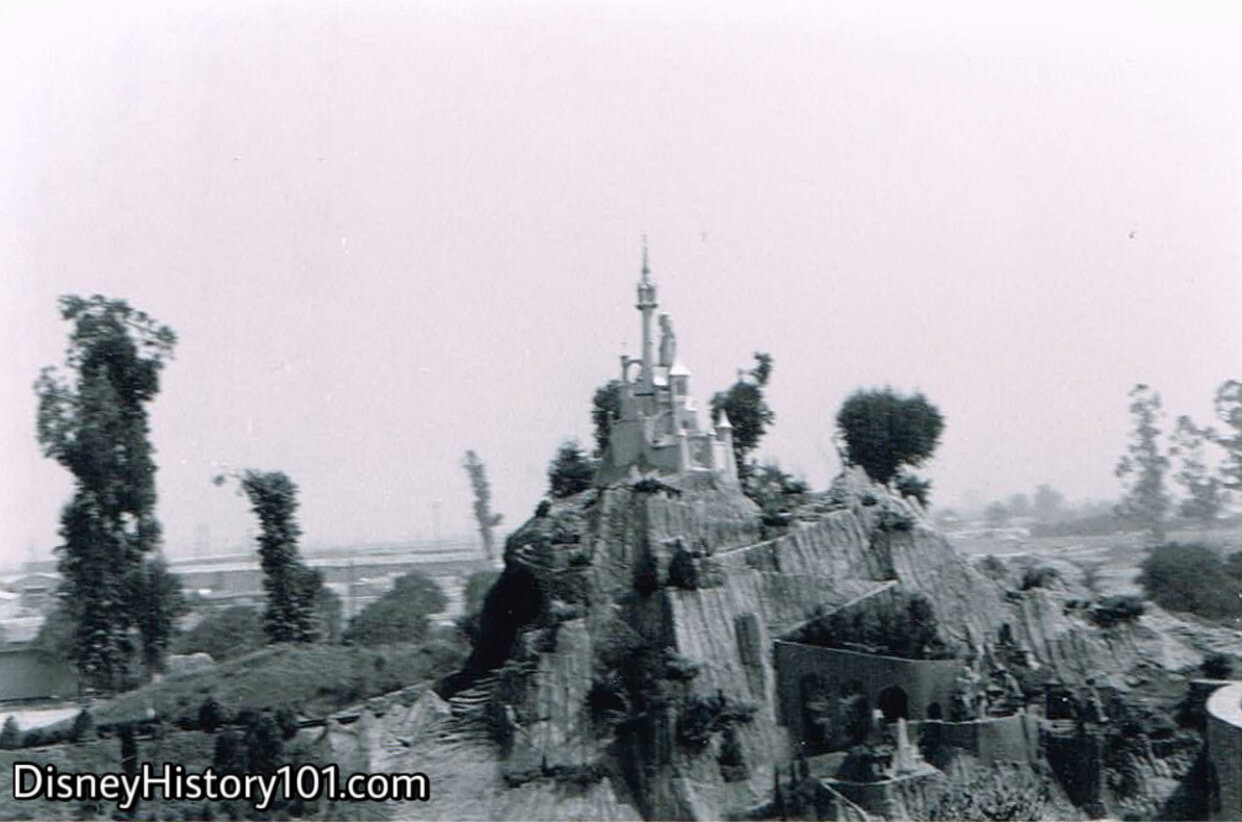
French Village & Castle

French Village & Castle (and the faraway land of the Pony Farm), 1960
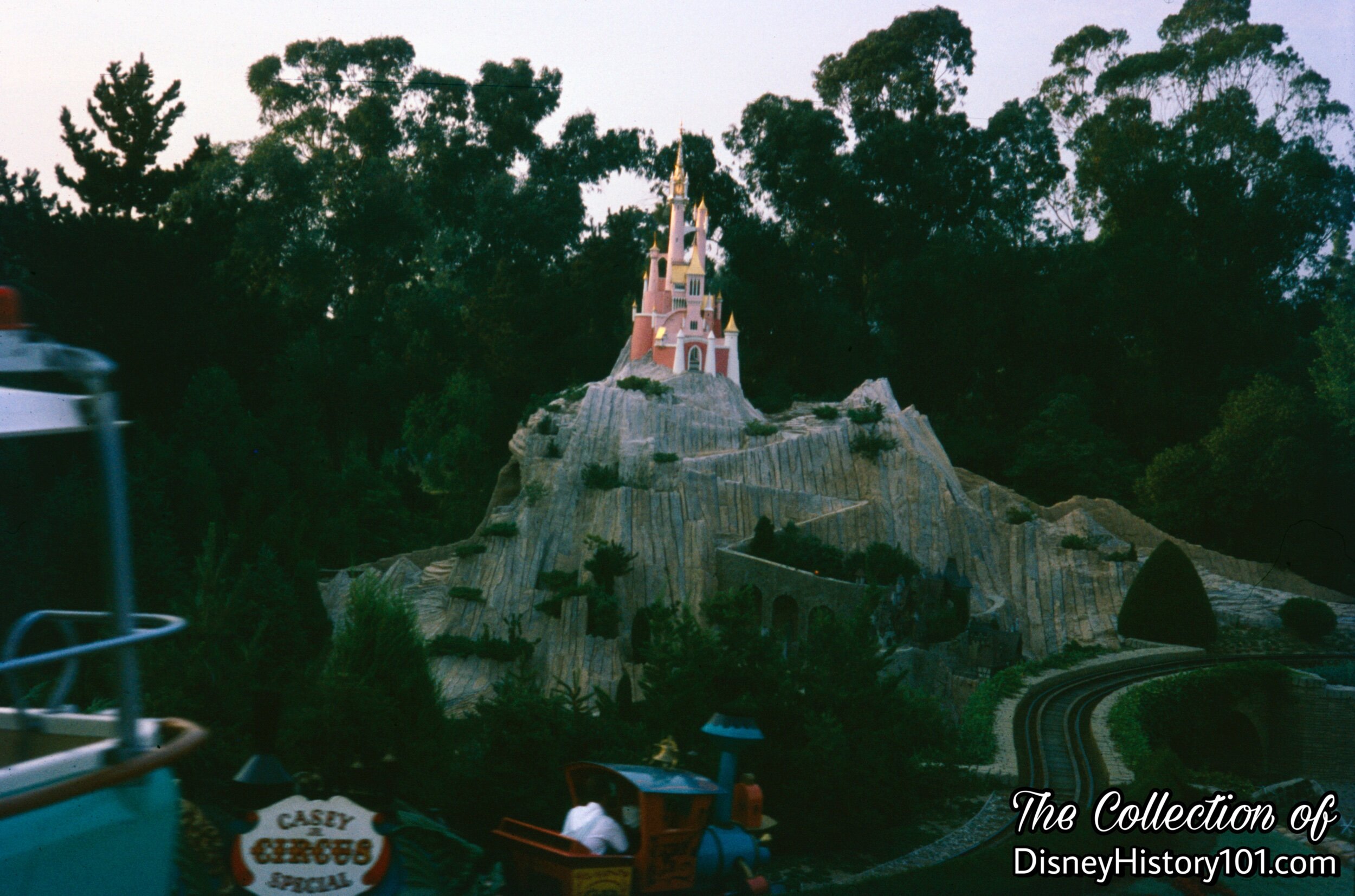
French Village & Castle
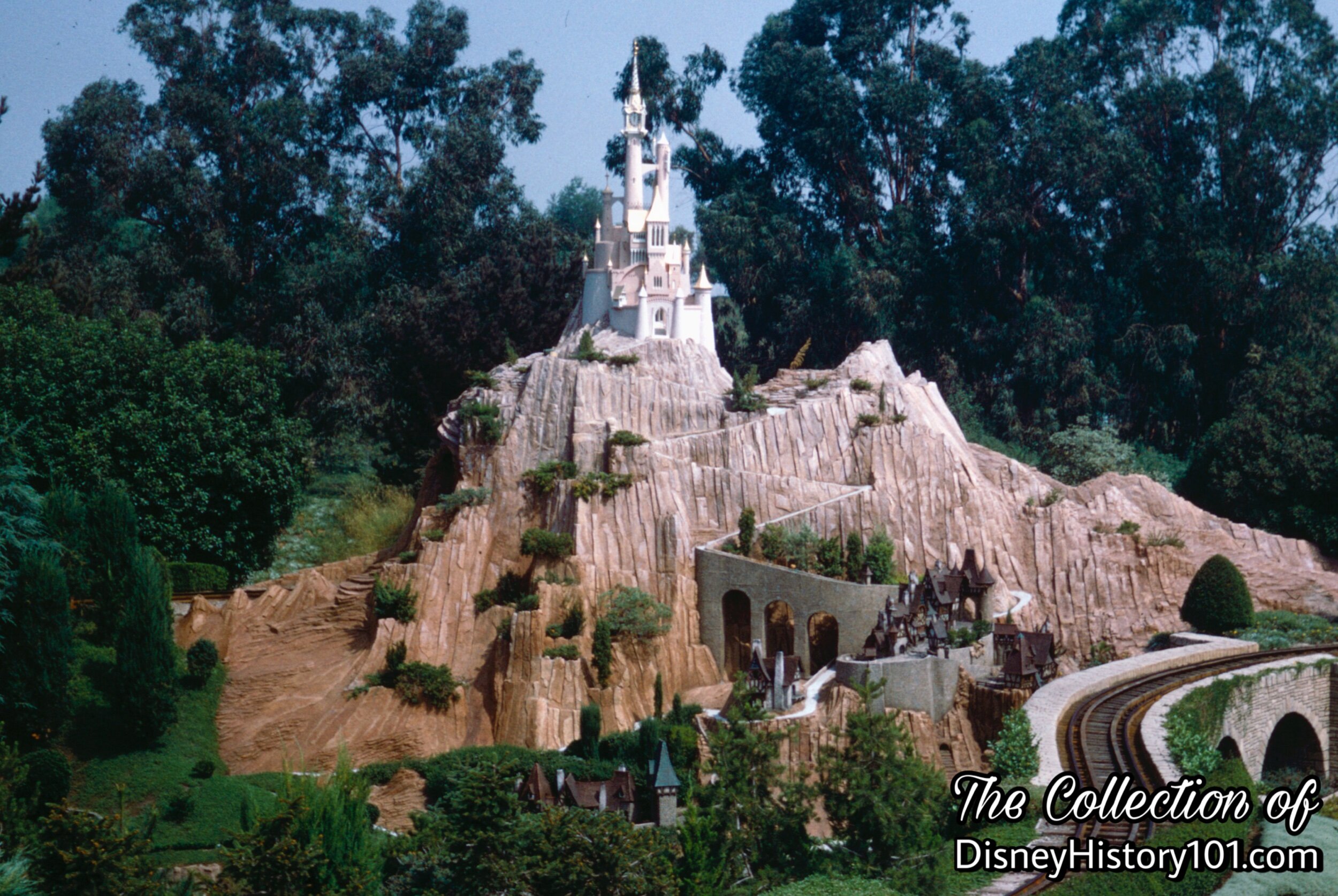
French Village & Castle, (1972)
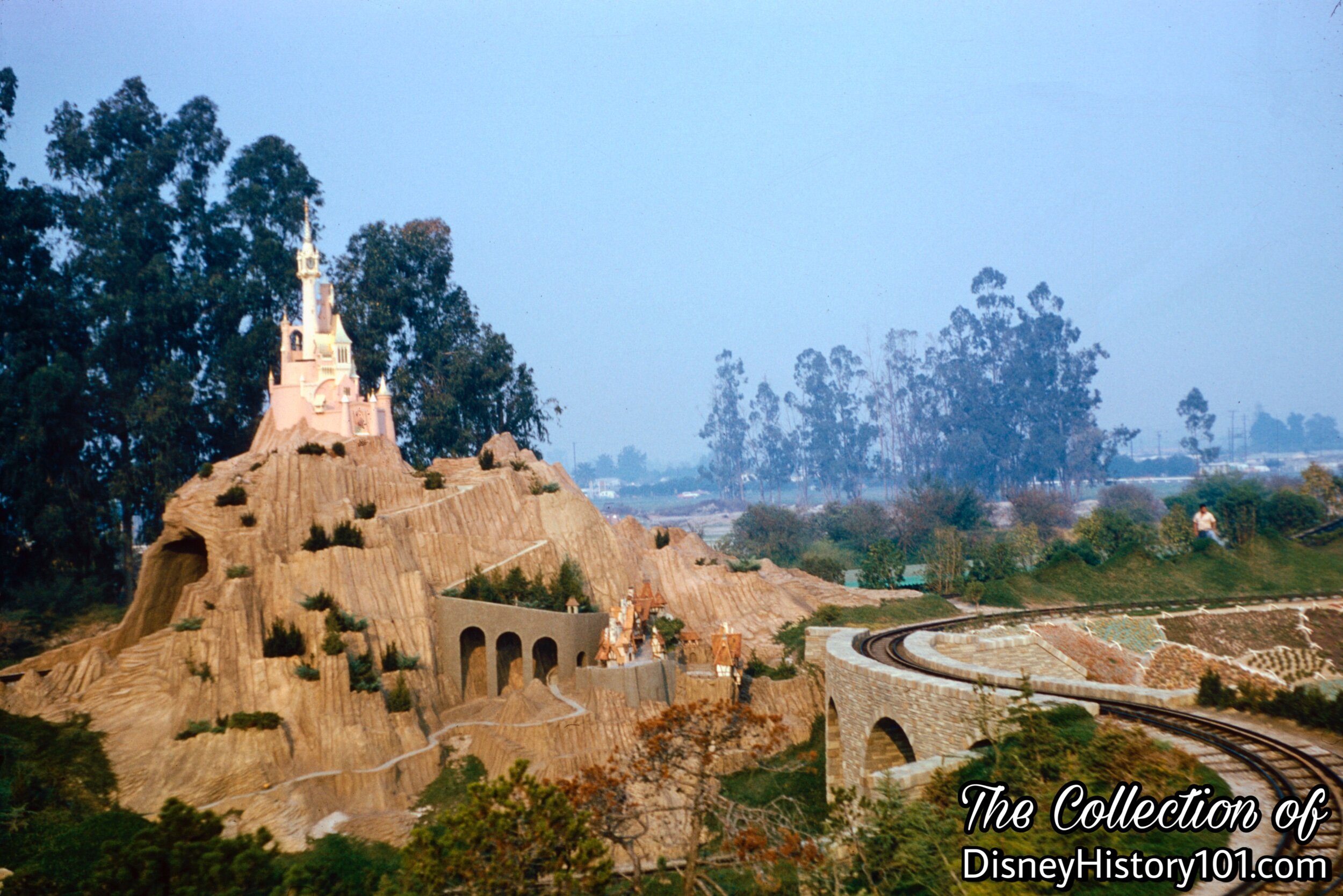
French Village & Castle
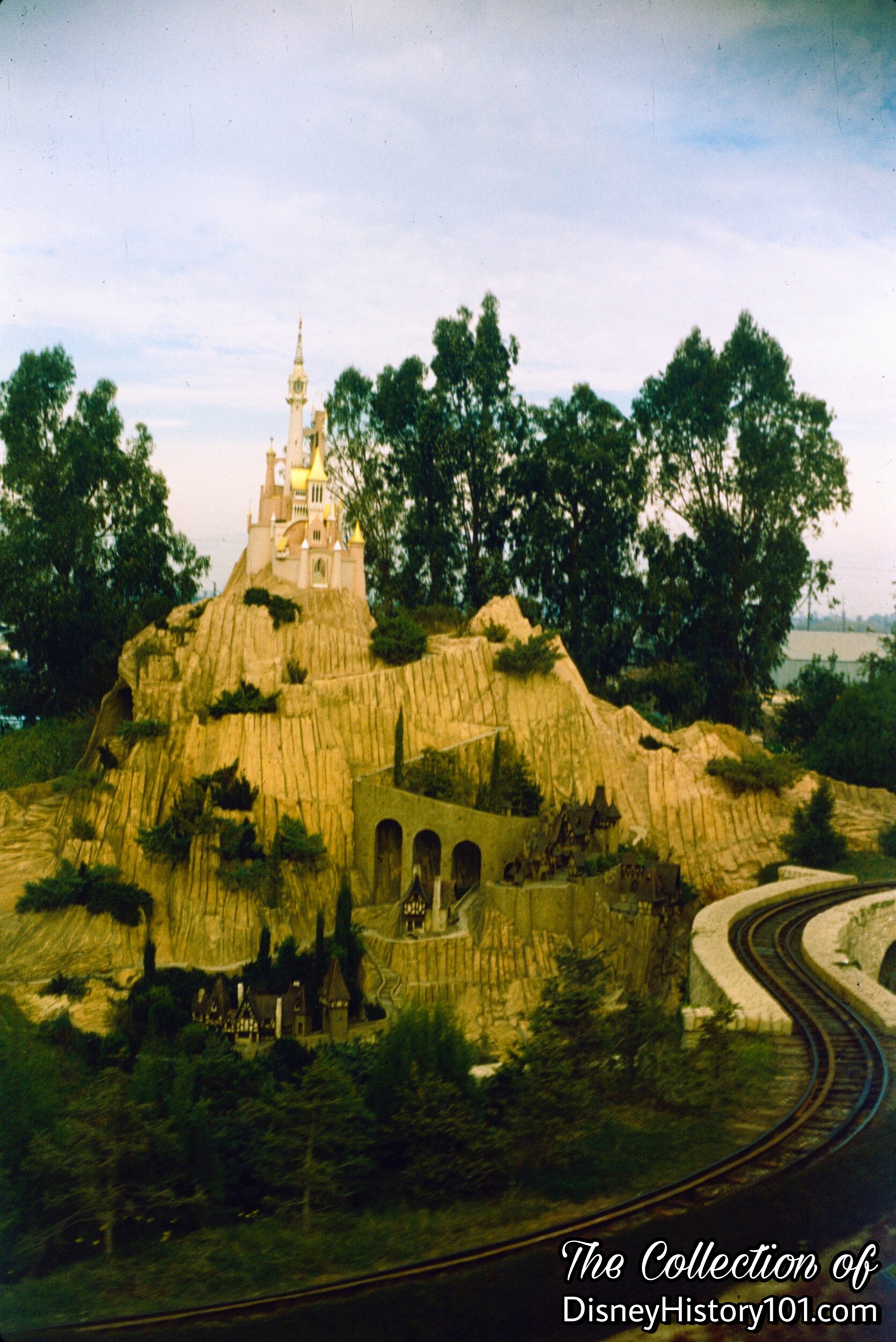
French Village & Castle
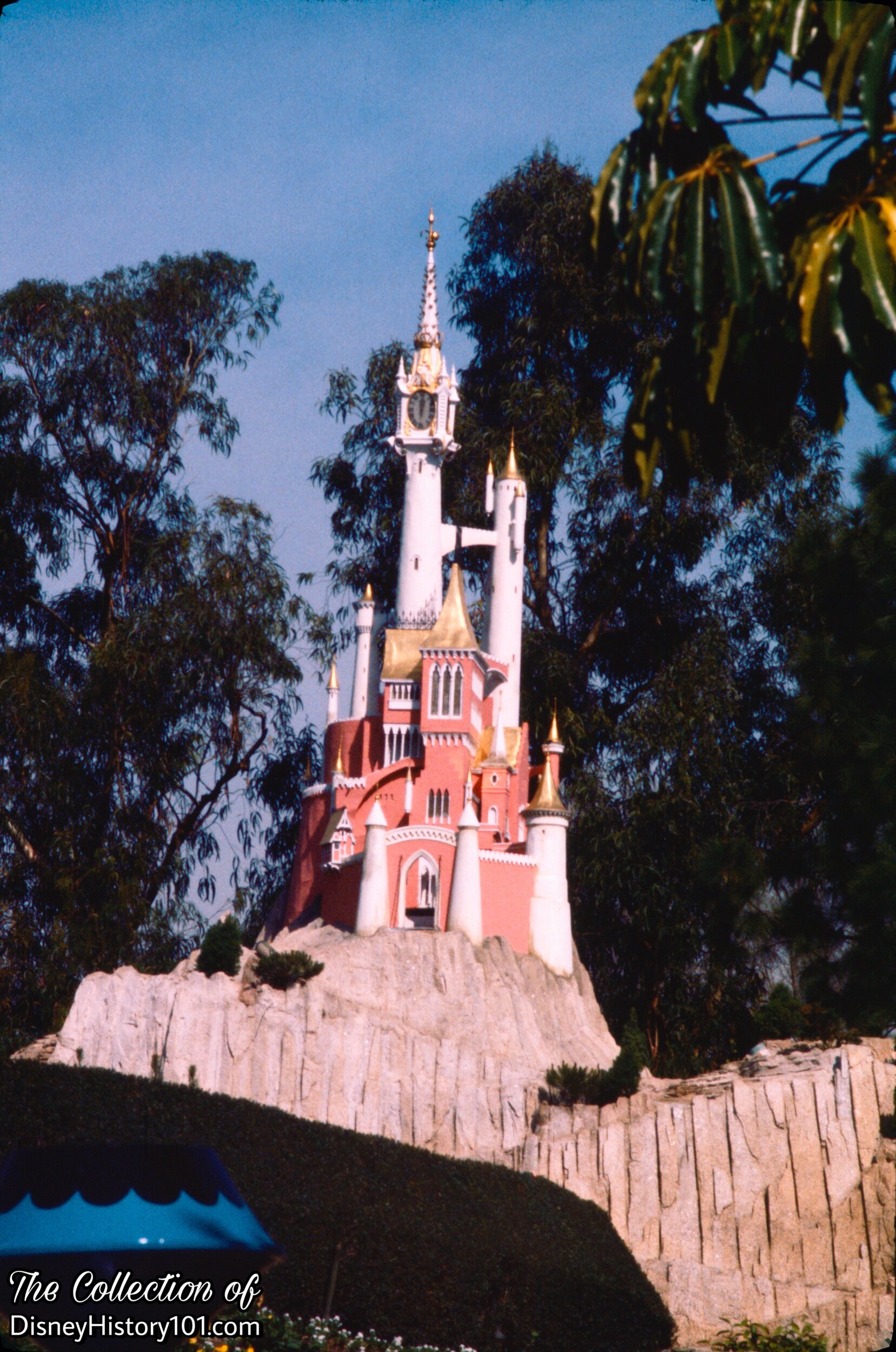
French Castle
One circa 1959 post card read : “Her majesty - Cinderella’s Castle… nestled high on the hilltop - strikes the bewitching magical hour of twelve in its tower clock as Casey, Jr., chugging and puffing, happily passes below with a train full of Fantasyland guests.”
Decades later it was reported that “the turrets and finials are covered in 24-karat gold and reflect the light from the sun,” according to one Disney Parks blog entry published in 2019.
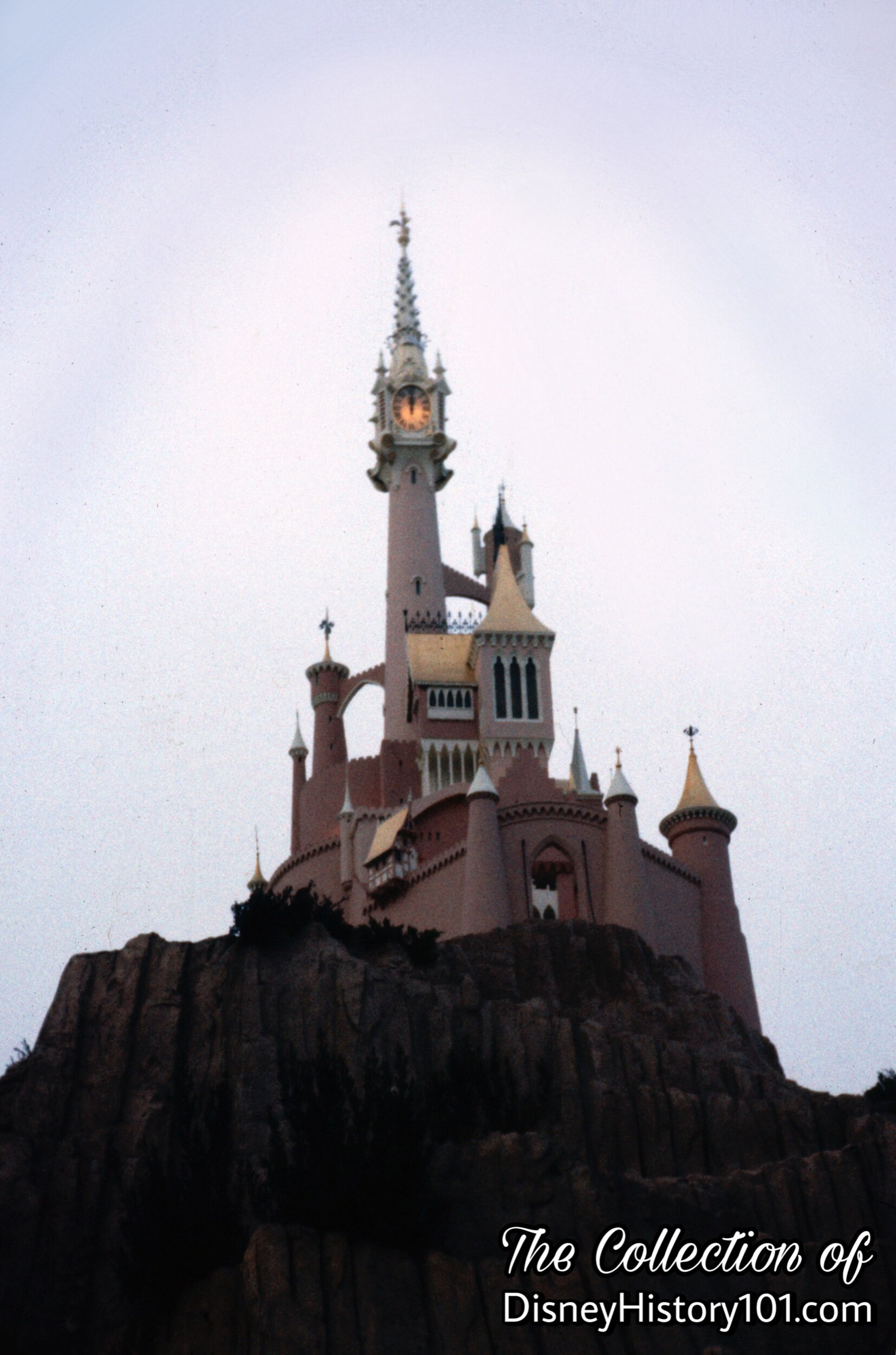
French Castle Illuminated at Dusk
In recent decades, it has been said that “if you’re riding at night, you may notice that the windows glow with light as if a great celebration - or ball - is underway,” according to one Disney Parks blog entry published in 2019.

French Village & Castle

French Village & Castle
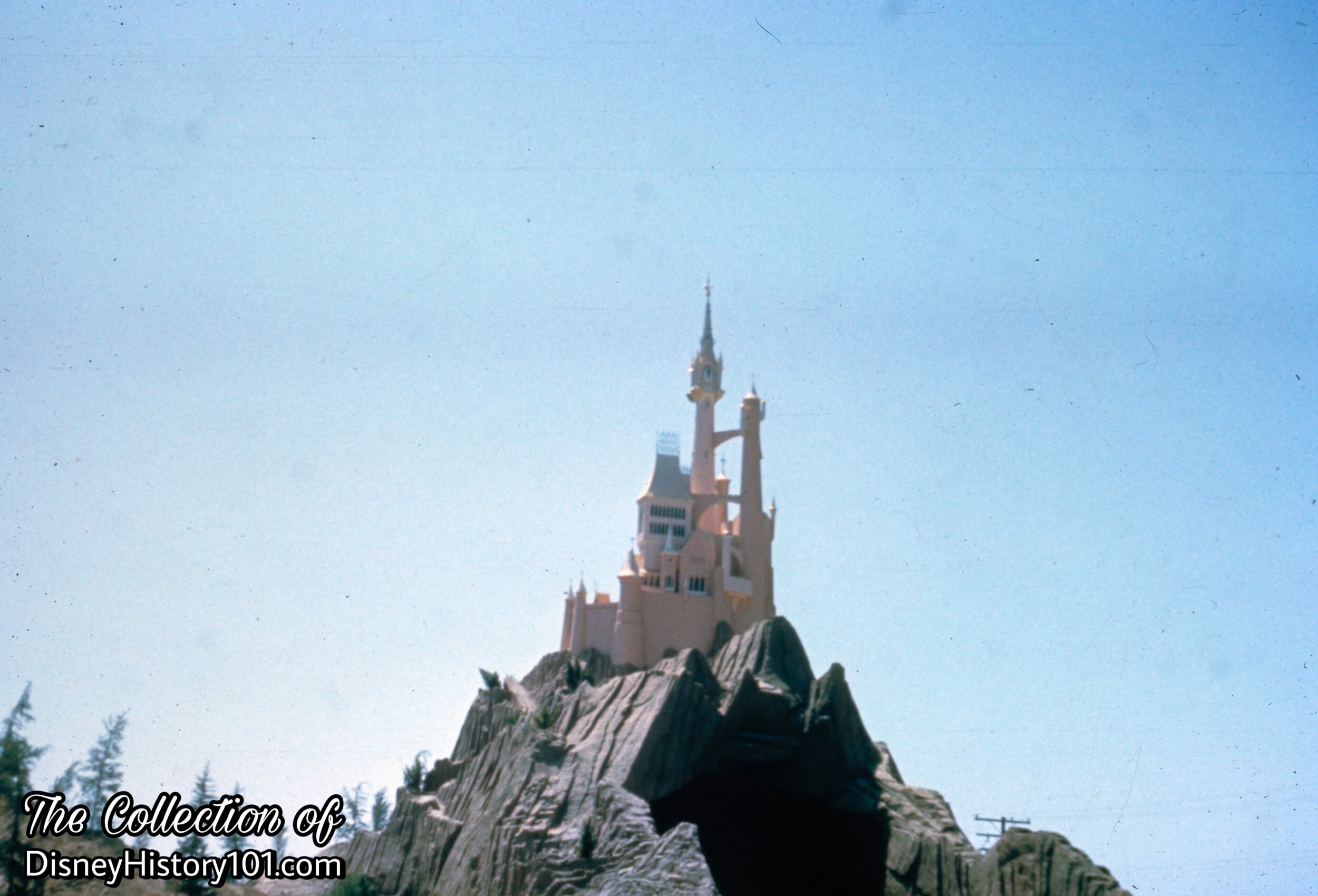
French Castle

Storybook Land Hostess
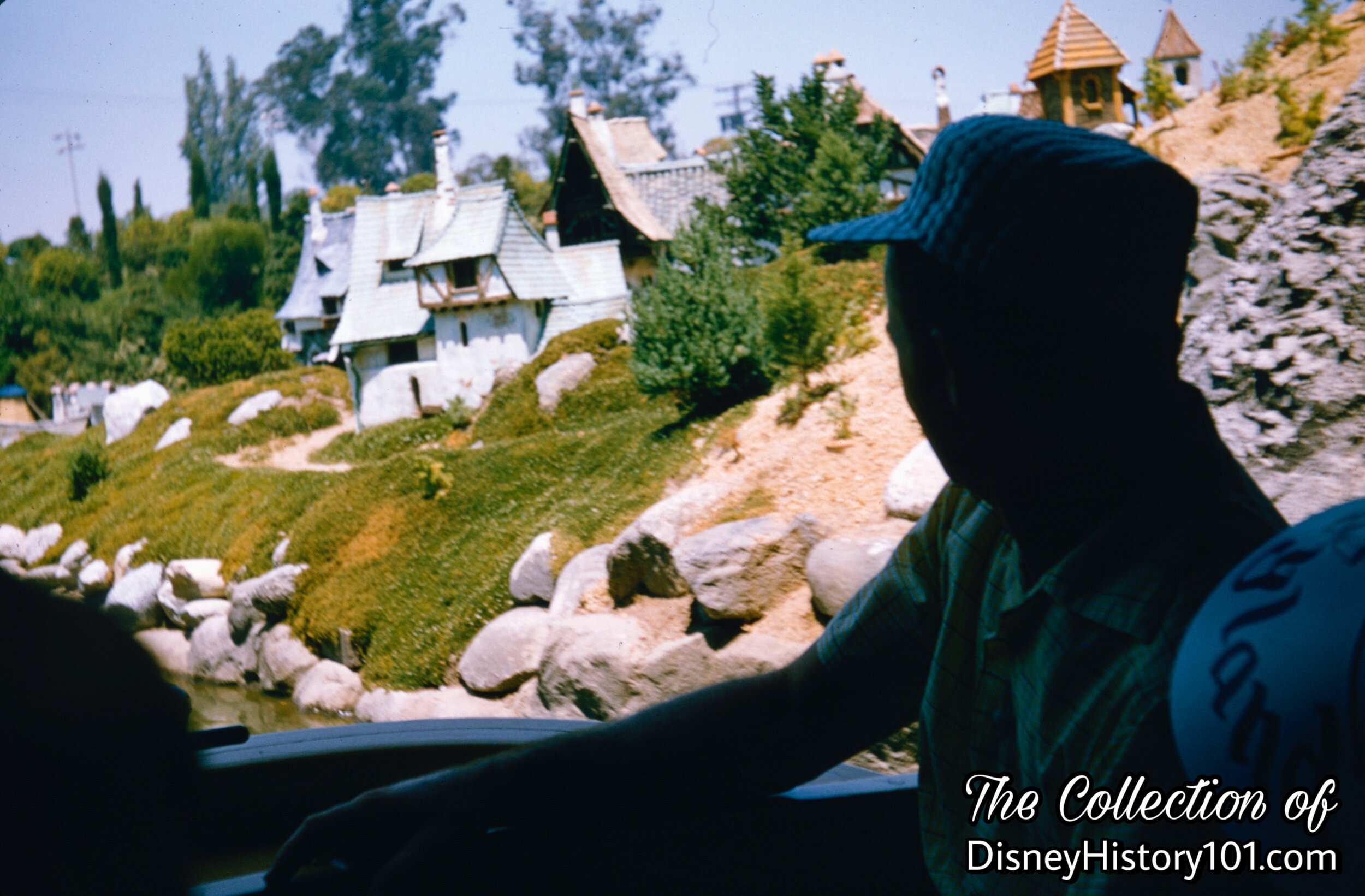
Looking Back at The French Village
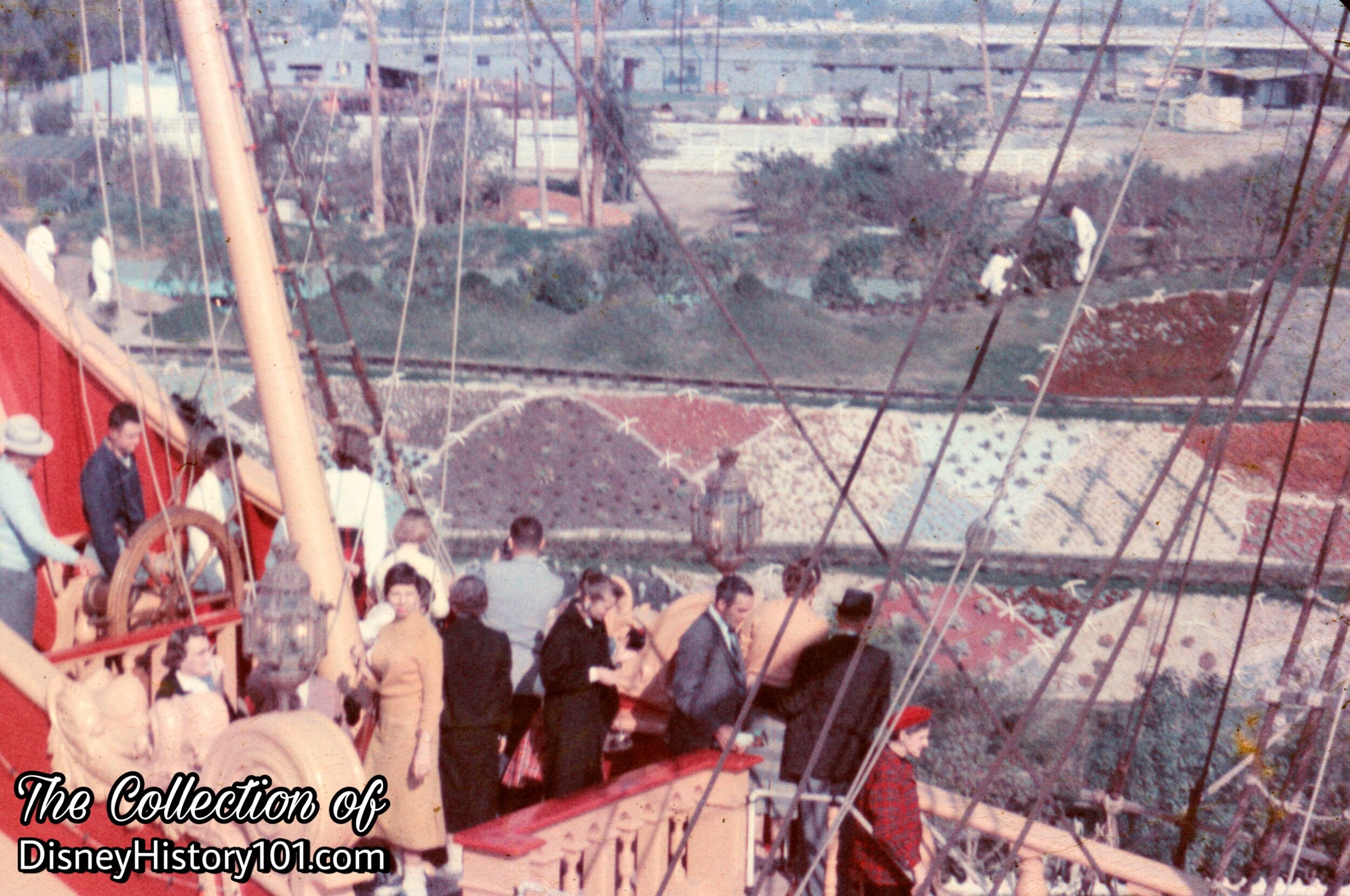
Lullabyland Patchwork Quilt From Chicken of the Sea Pirate Ship
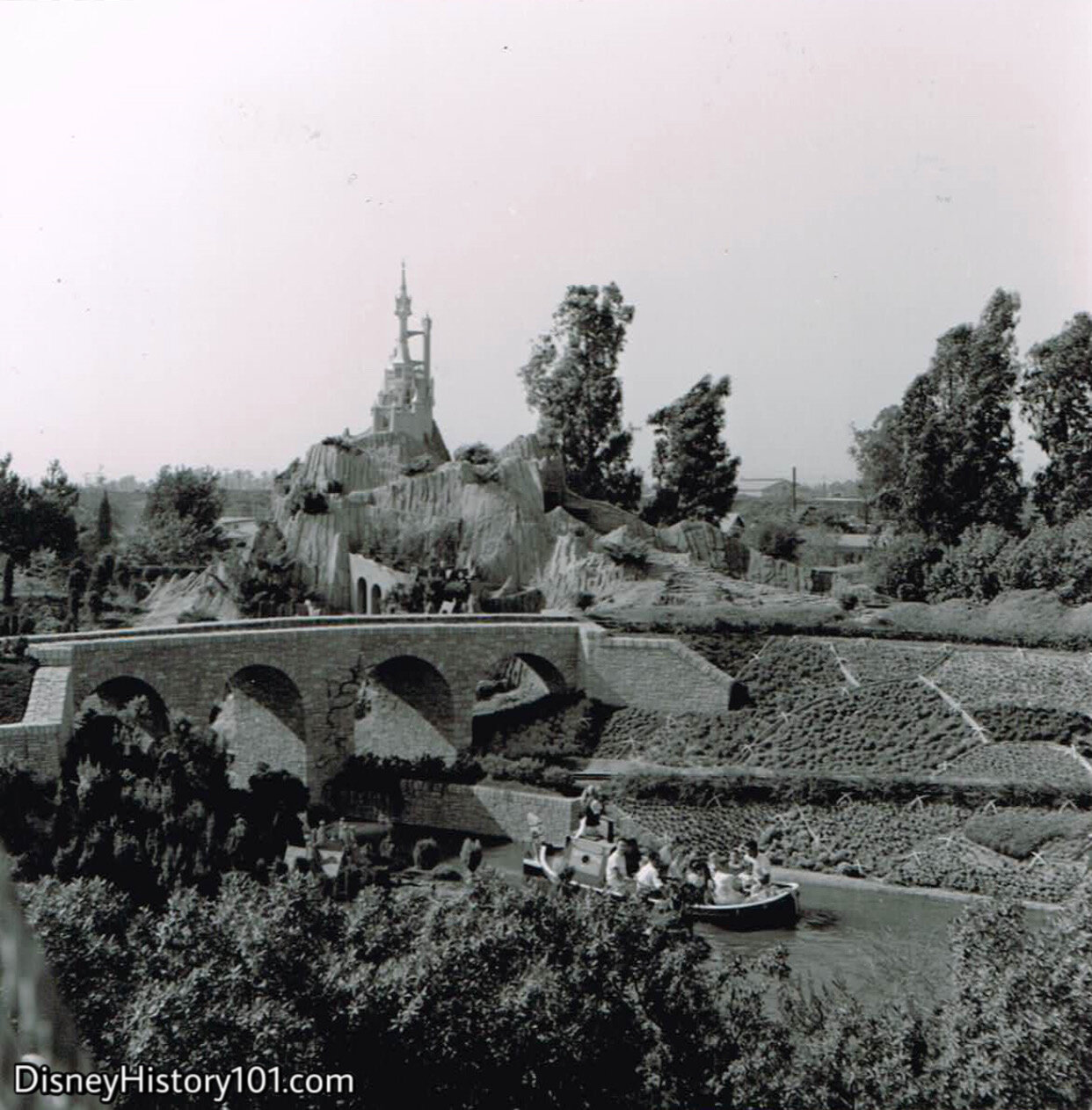
Lullabyland Patchwork Quilt, French Village & Castle

Lullabyland Patchwork Quilt, May, 1959.

Lullabyland Patchwork Quilt, Toad Hall and Ratty's House, 1978
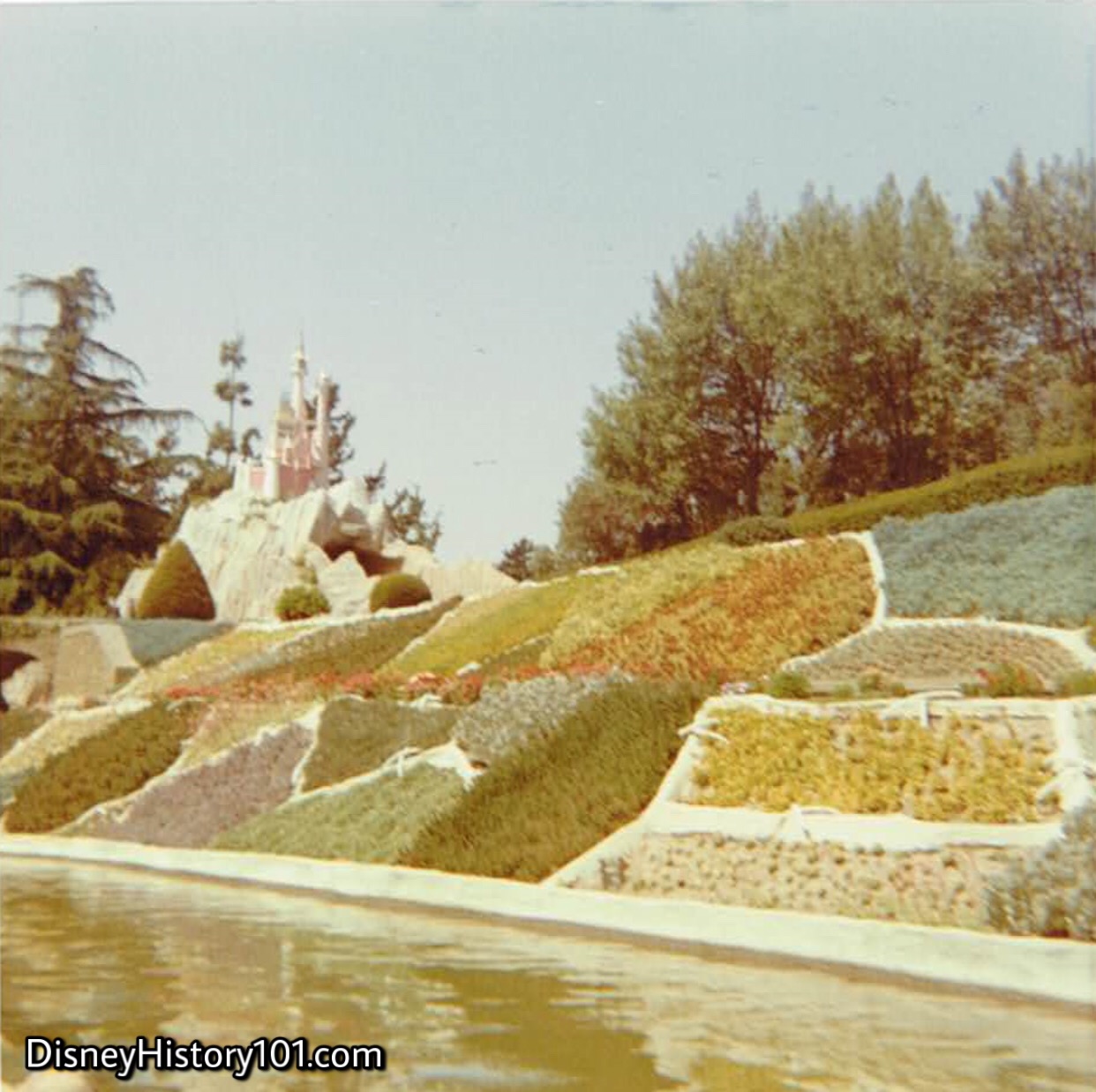
Lullabyland Patchwork Quilt, (May, 1971)
“On the left is one of the most unusual desert flower displays in the country, inspired by the movie Lullabyland. This giant patchwork quilt with its giant stitches is decorated with almost fifty varieties of desert flowers.”
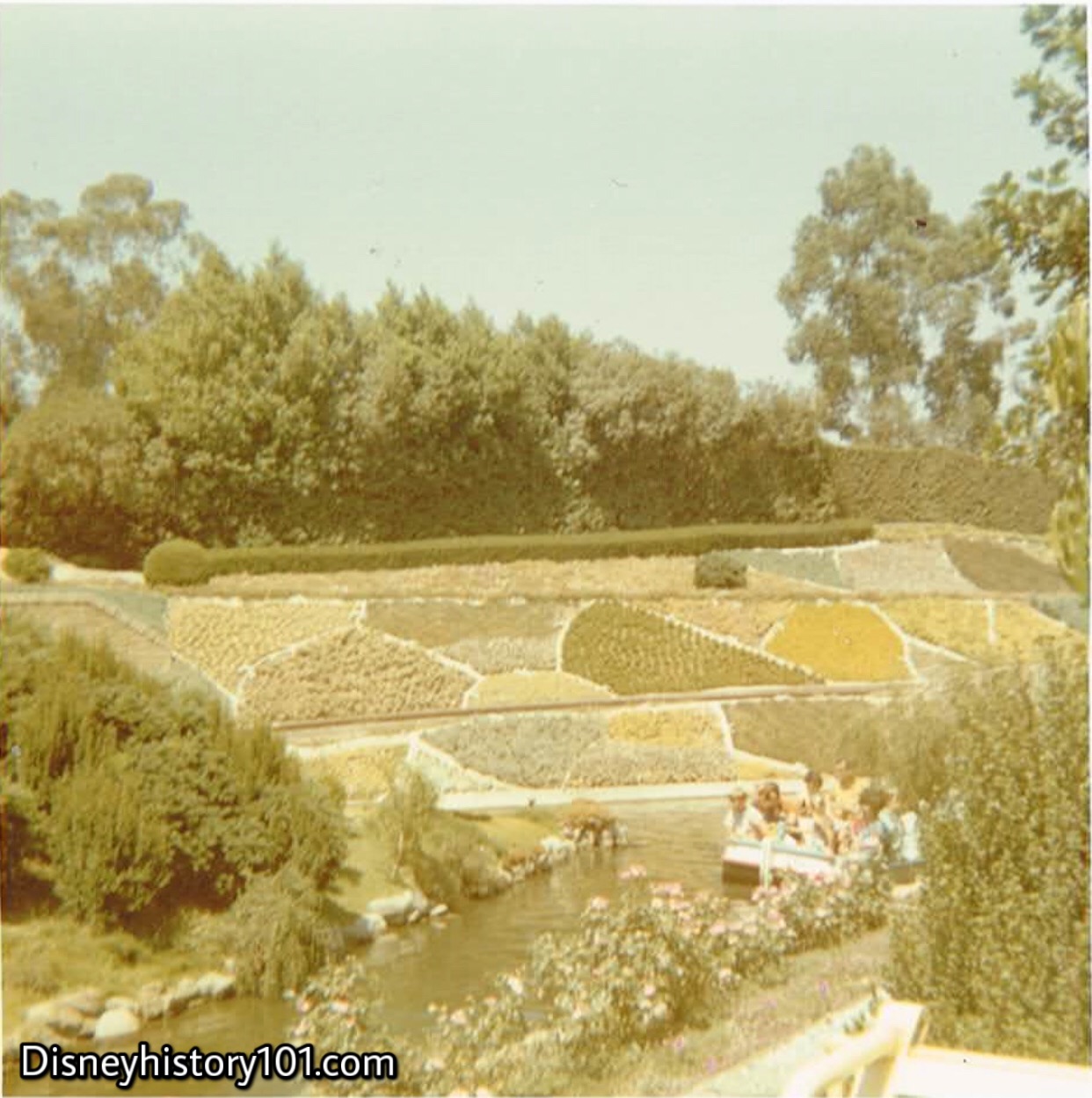
Lullabyland Patchwork Quilt
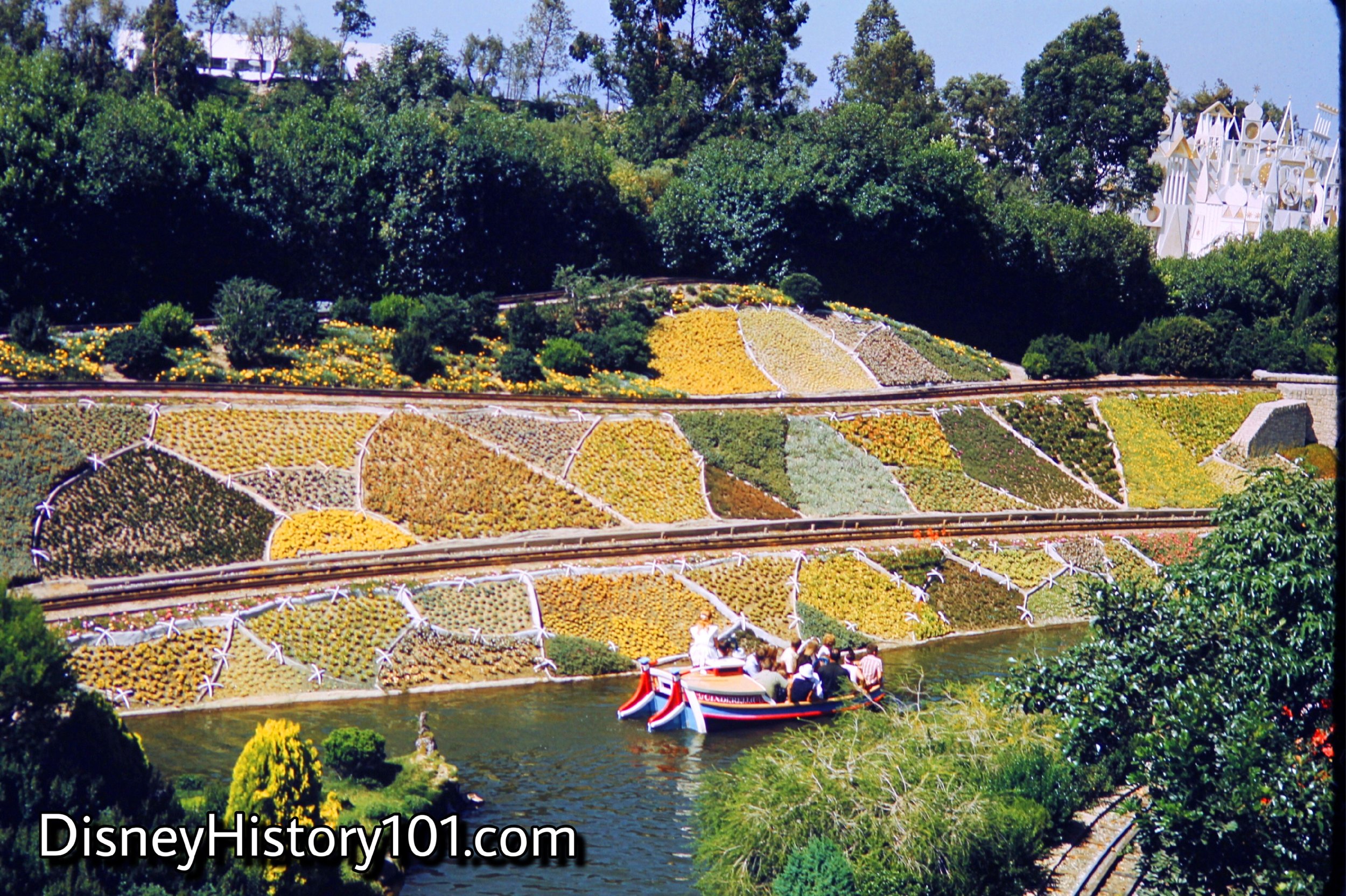
Lullabyland Patchwork Quilt, Summer, 1966
Succulents and cactus form the brightly colorful patches of Crazy Quilt Country from “Wynken, Blinken and Nod” as it was renown in 1957. Today this is known as the “Giant’s Quilt.” By the spring of 1990, the Giant’s Patchwork Quilt was decorated with almost 50 varieties of desert flowers.
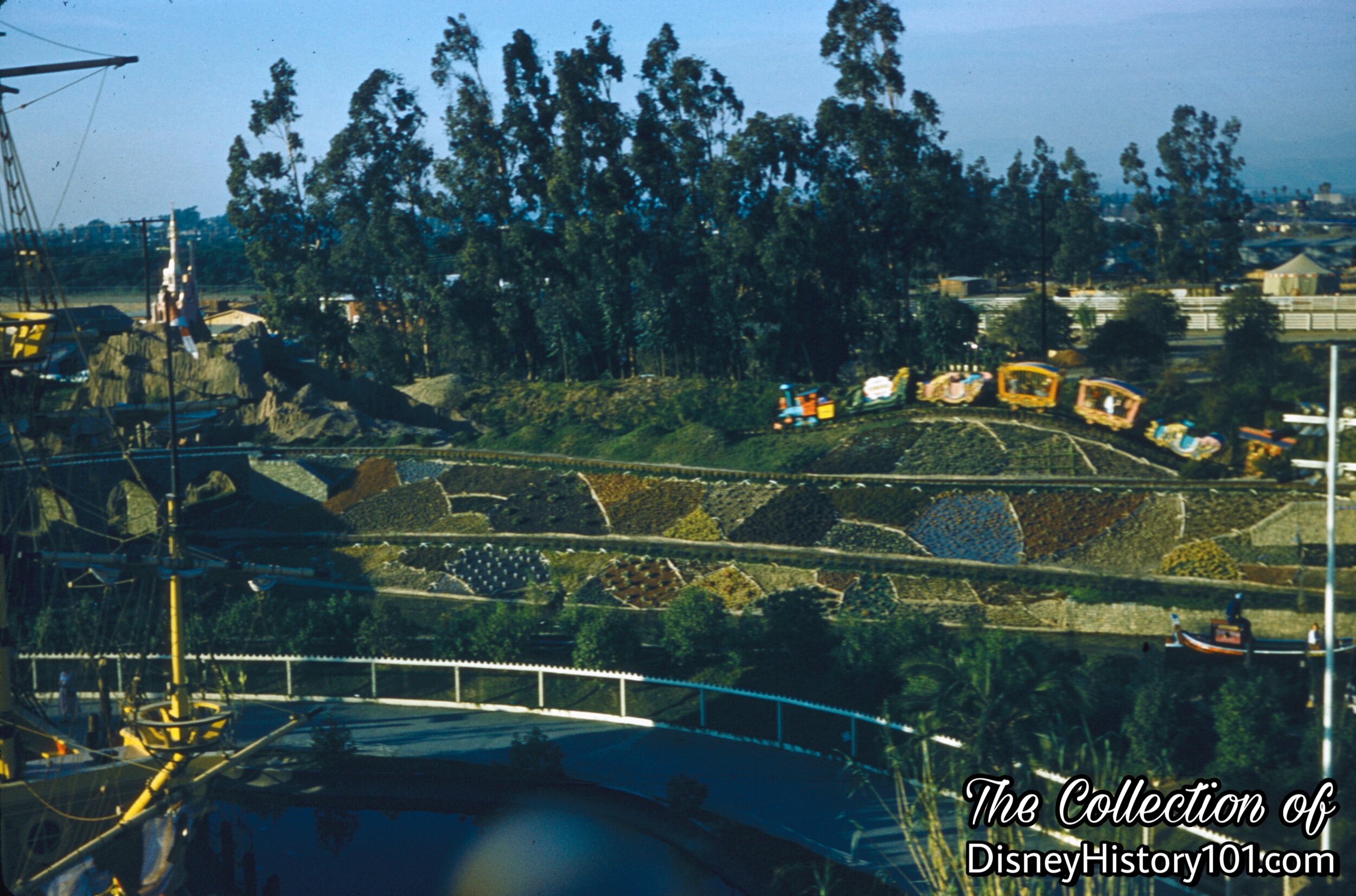
“Crazy Quilt Country”
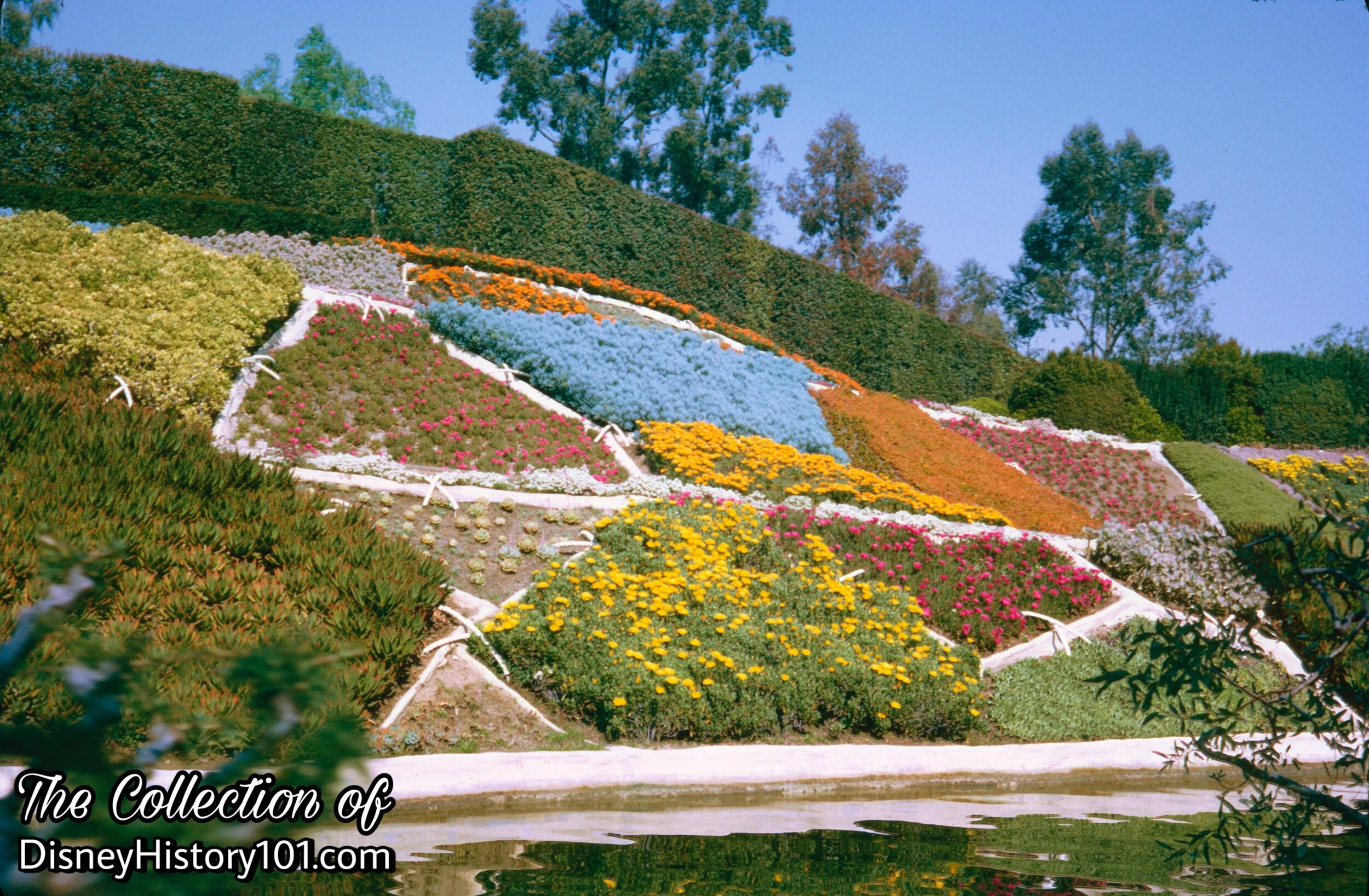
“Crazy Quilt Country” from “Wynken, Blinken, and Nod”, (April, 1974)
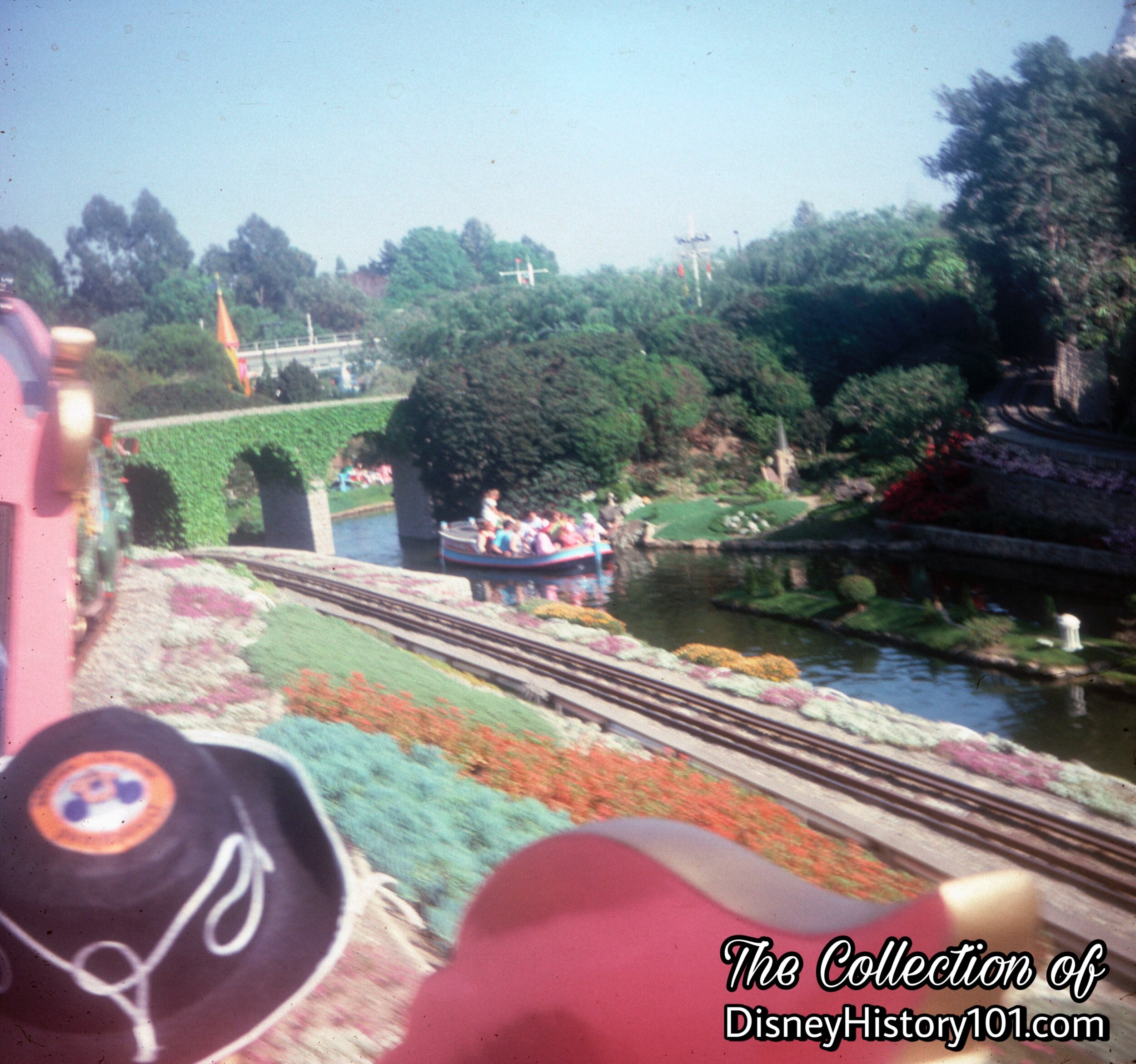
“Crazy Quilt Country” from “Wynken, Blinken, and Nod”
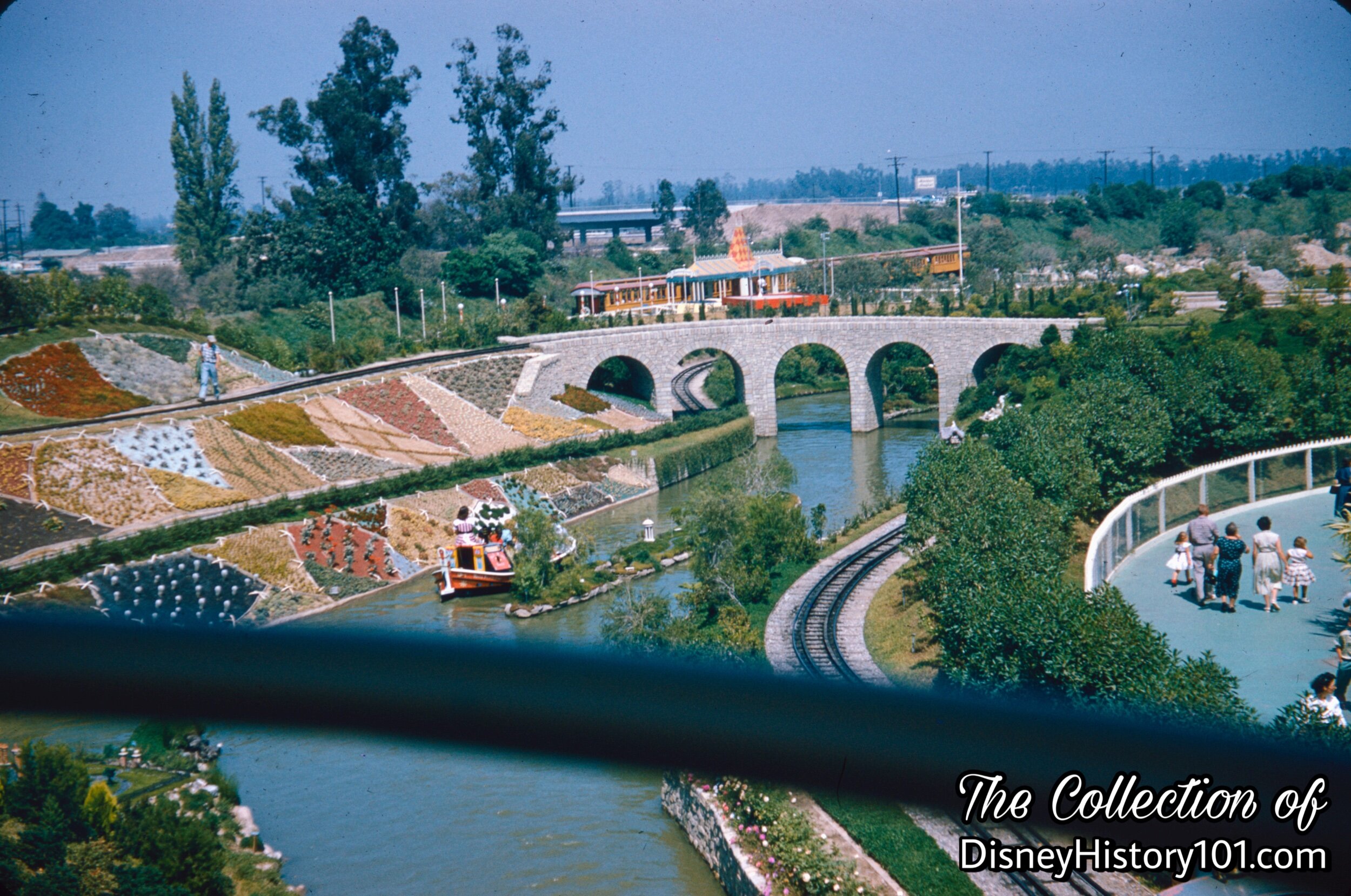
“Crazy Quilt Country” from “Wynken, Blinken, and Nod”, 1957.
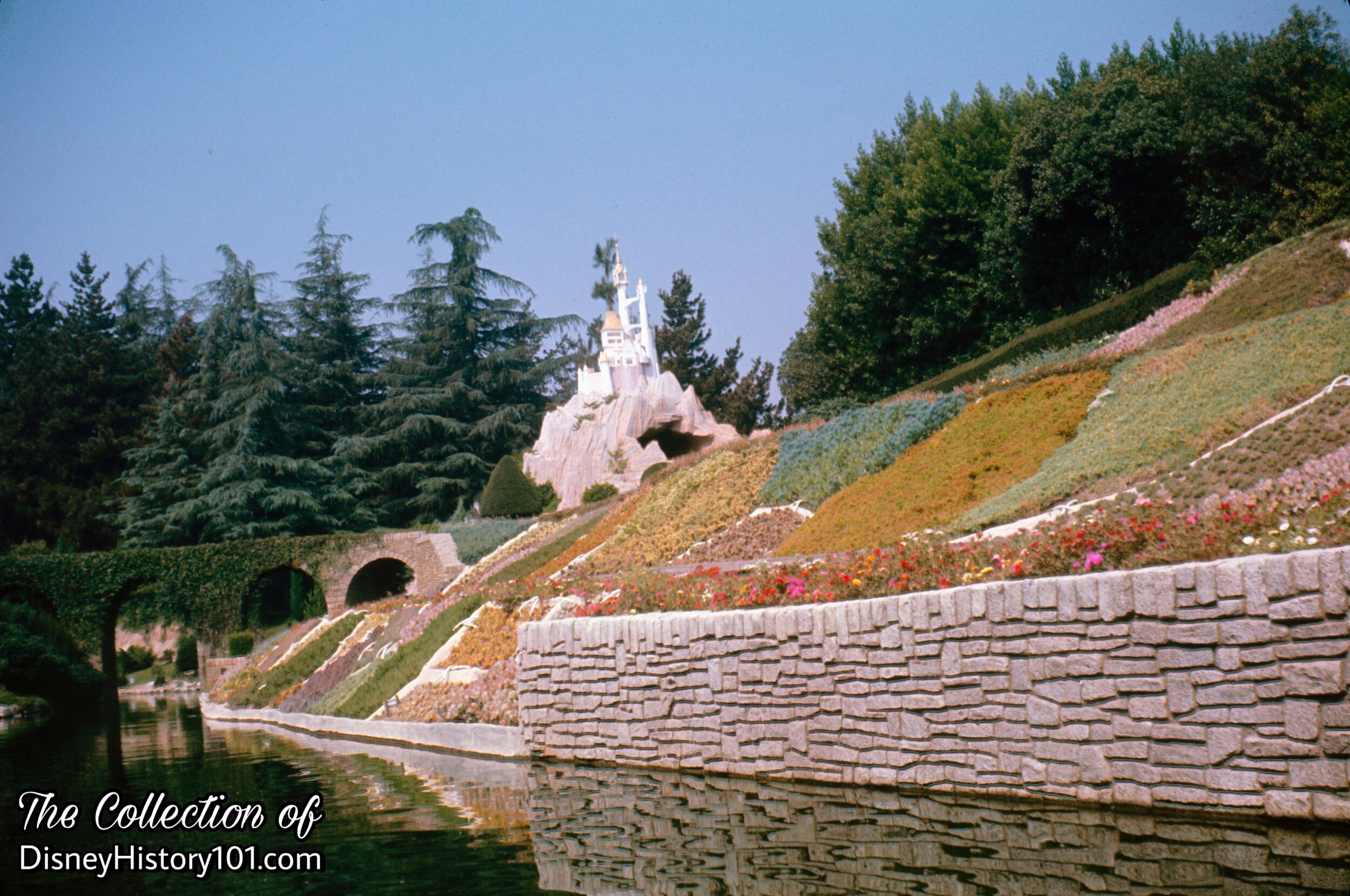
Lullabyland Patchwork Quilt
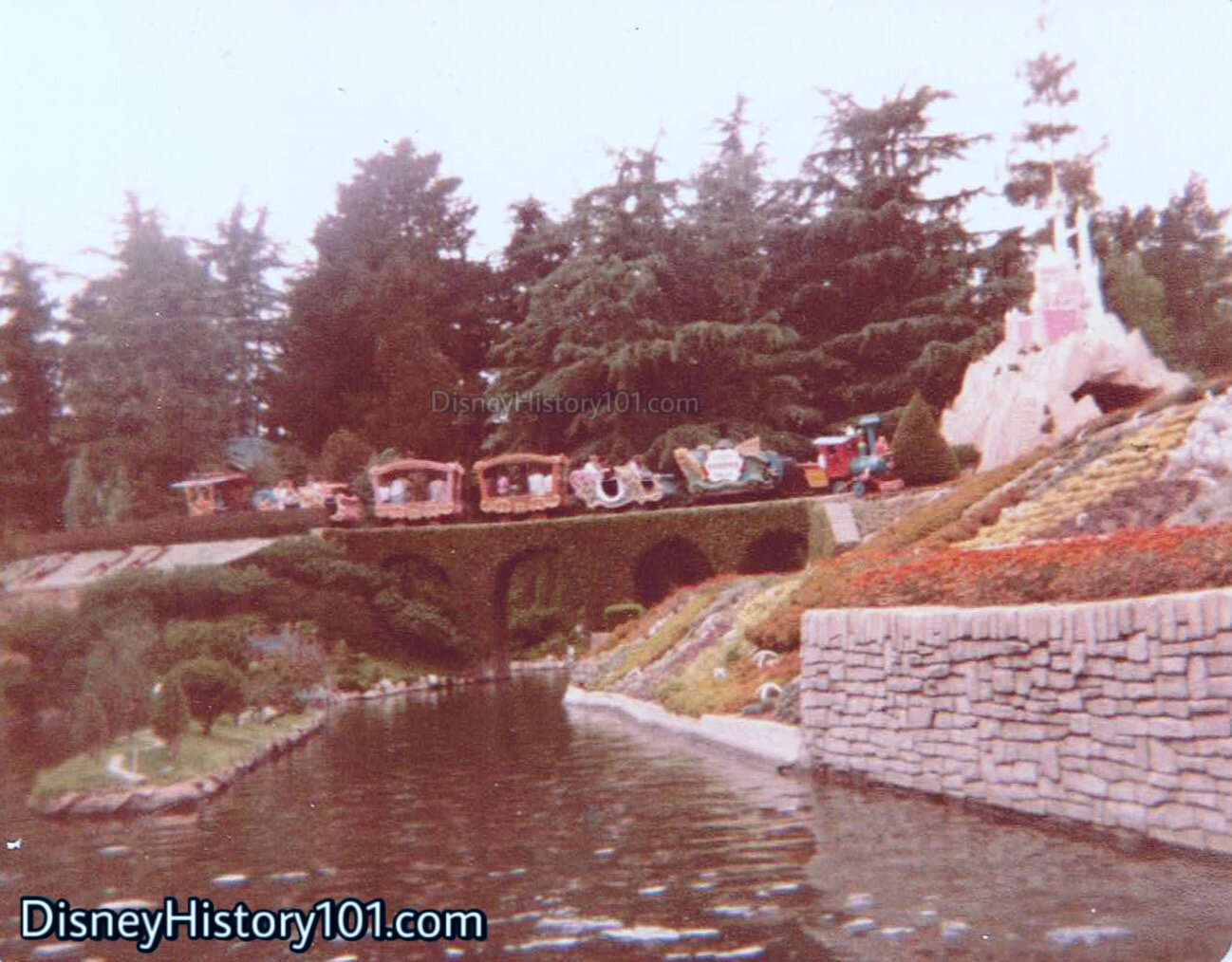
Storybook Land Canal, c. 1981-1982
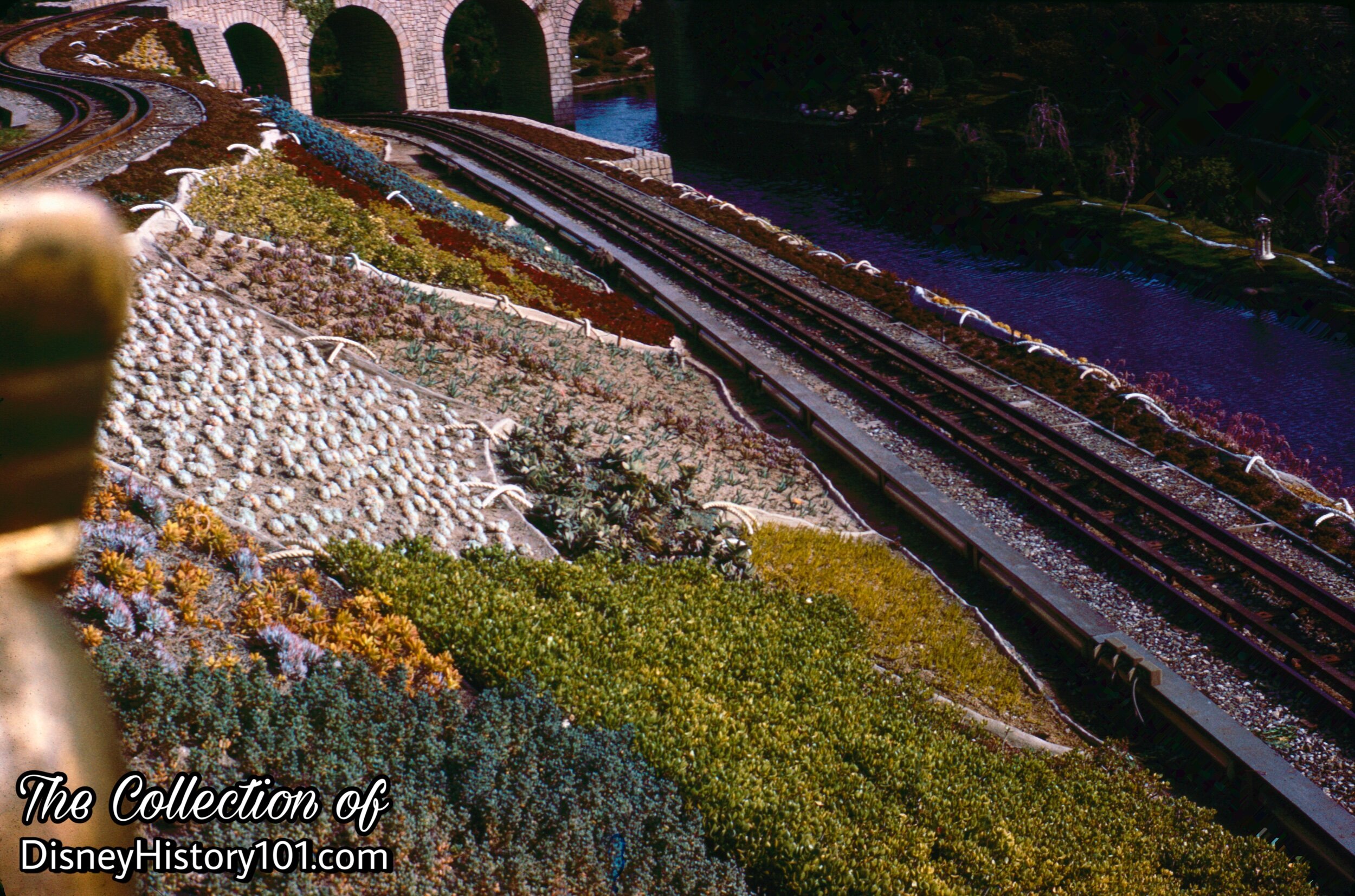
“Crazy Quilt Country” from “Wynken, Blinken, and Nod”
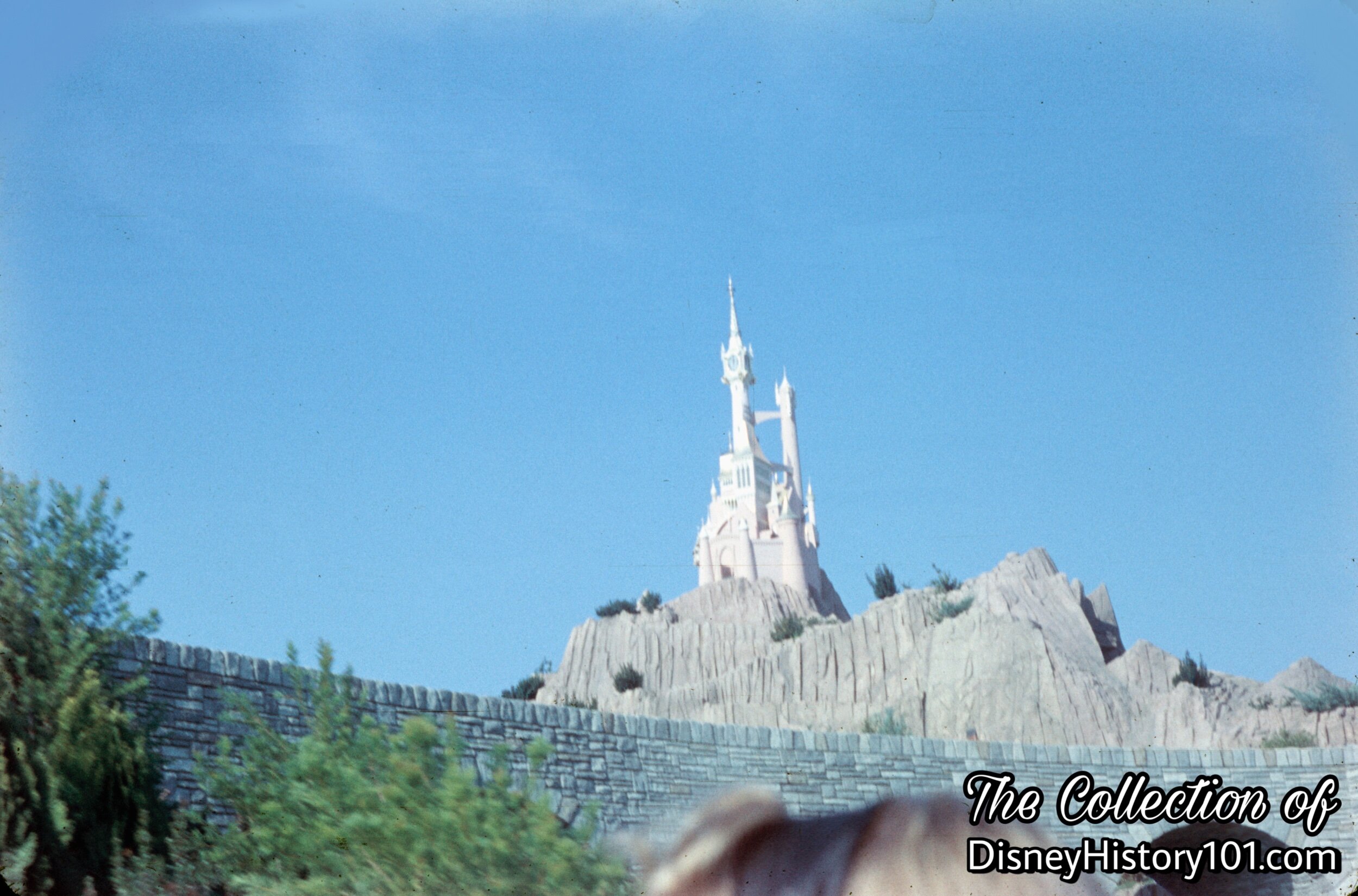
French Castle, (1973)
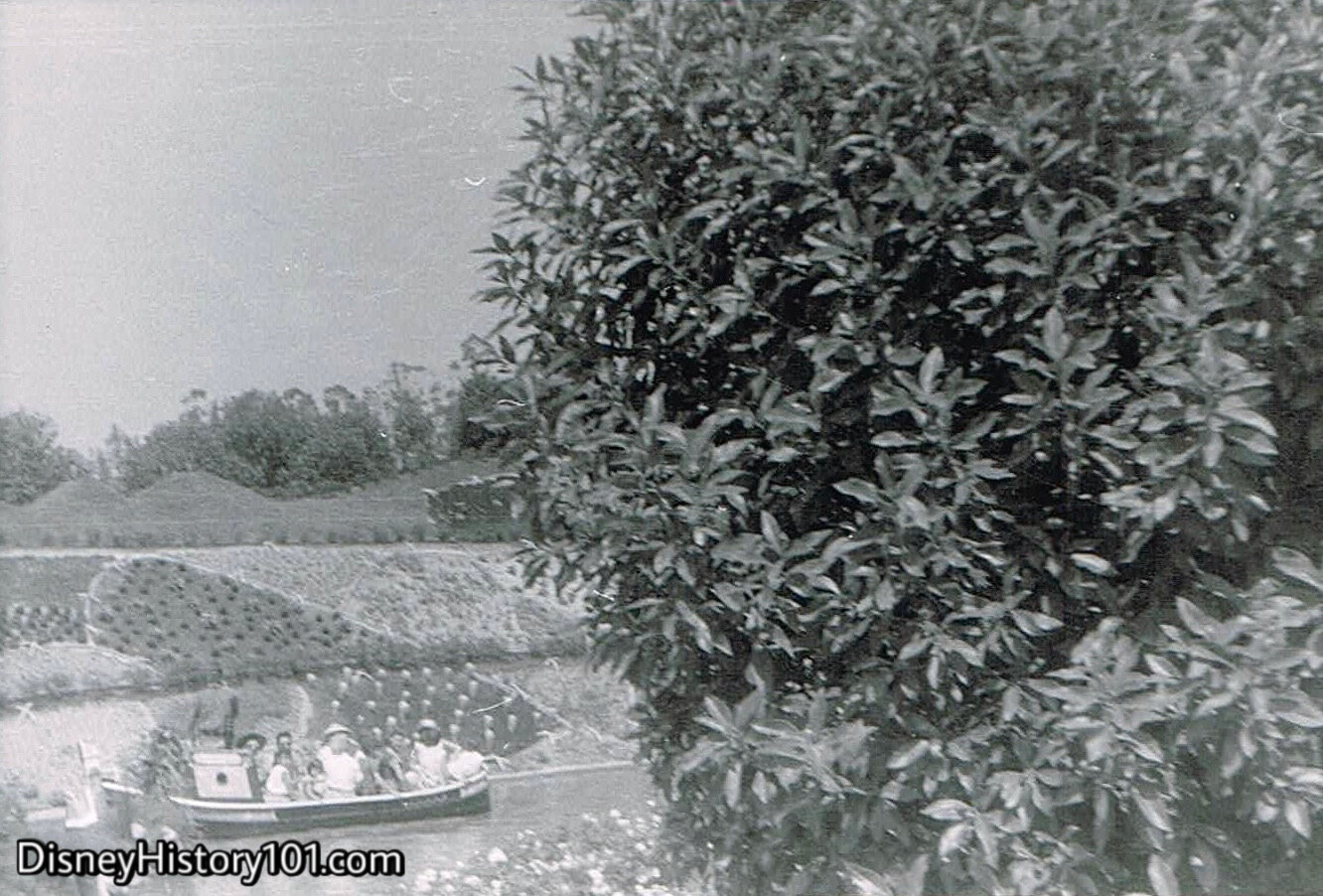
Lullabyland Patchwork Quilt
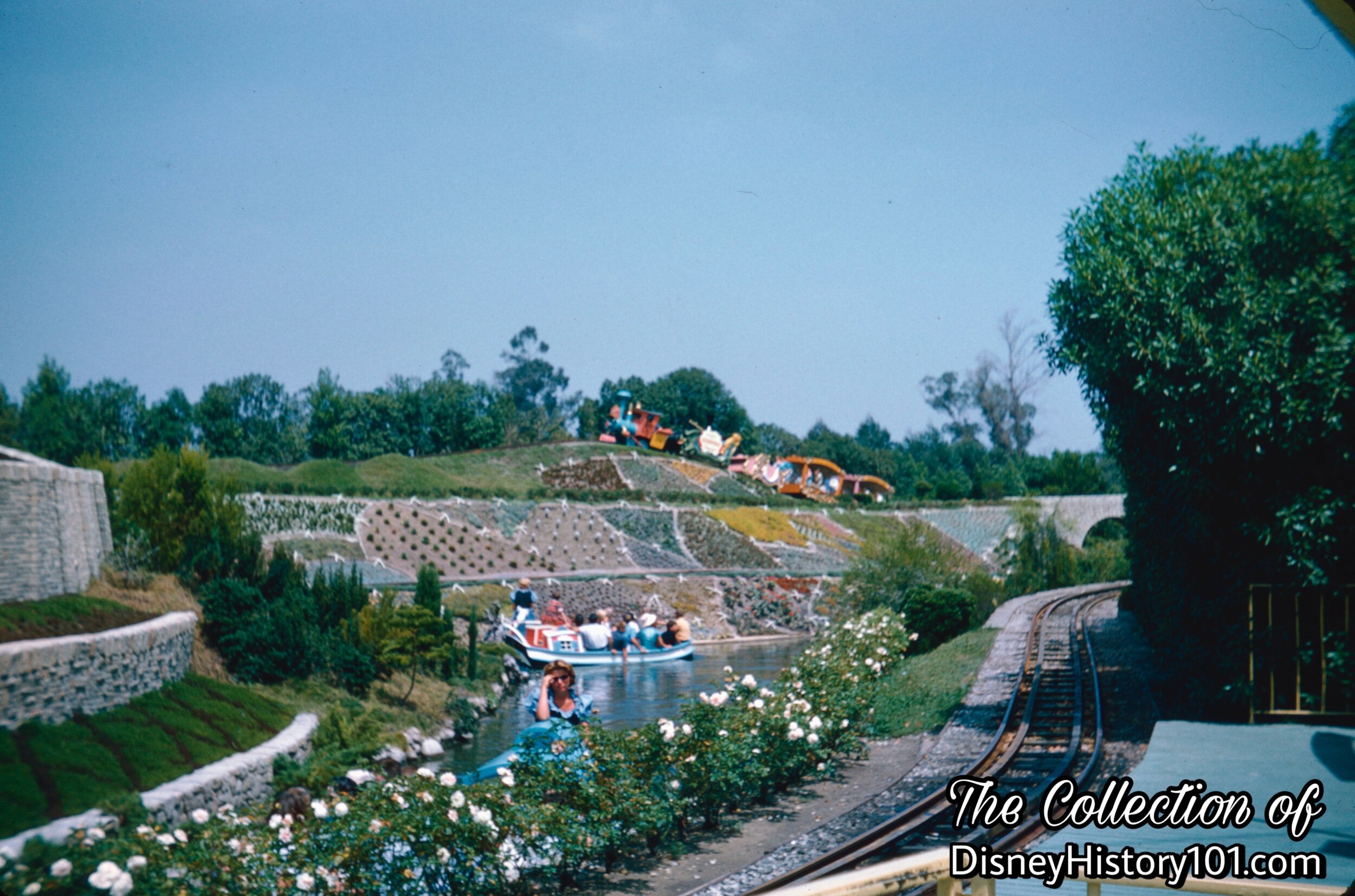
Lullabyland Patchwork Quilt, (August, 1960)

Lullabyland Patchwork Quilt

Lullabyland Patchwork Quilt & Storybook Land Canal, 1968
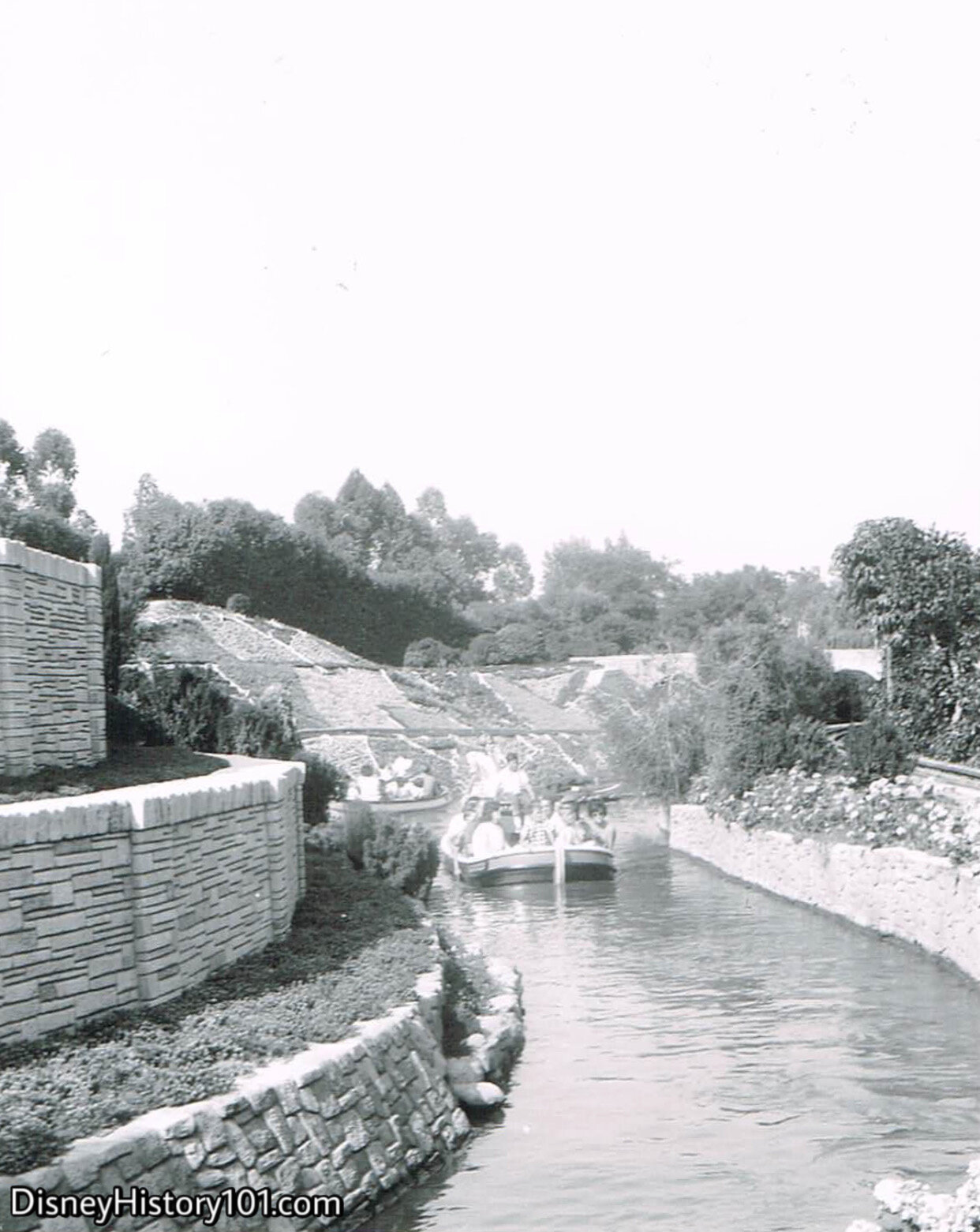
Storybook Land Canal
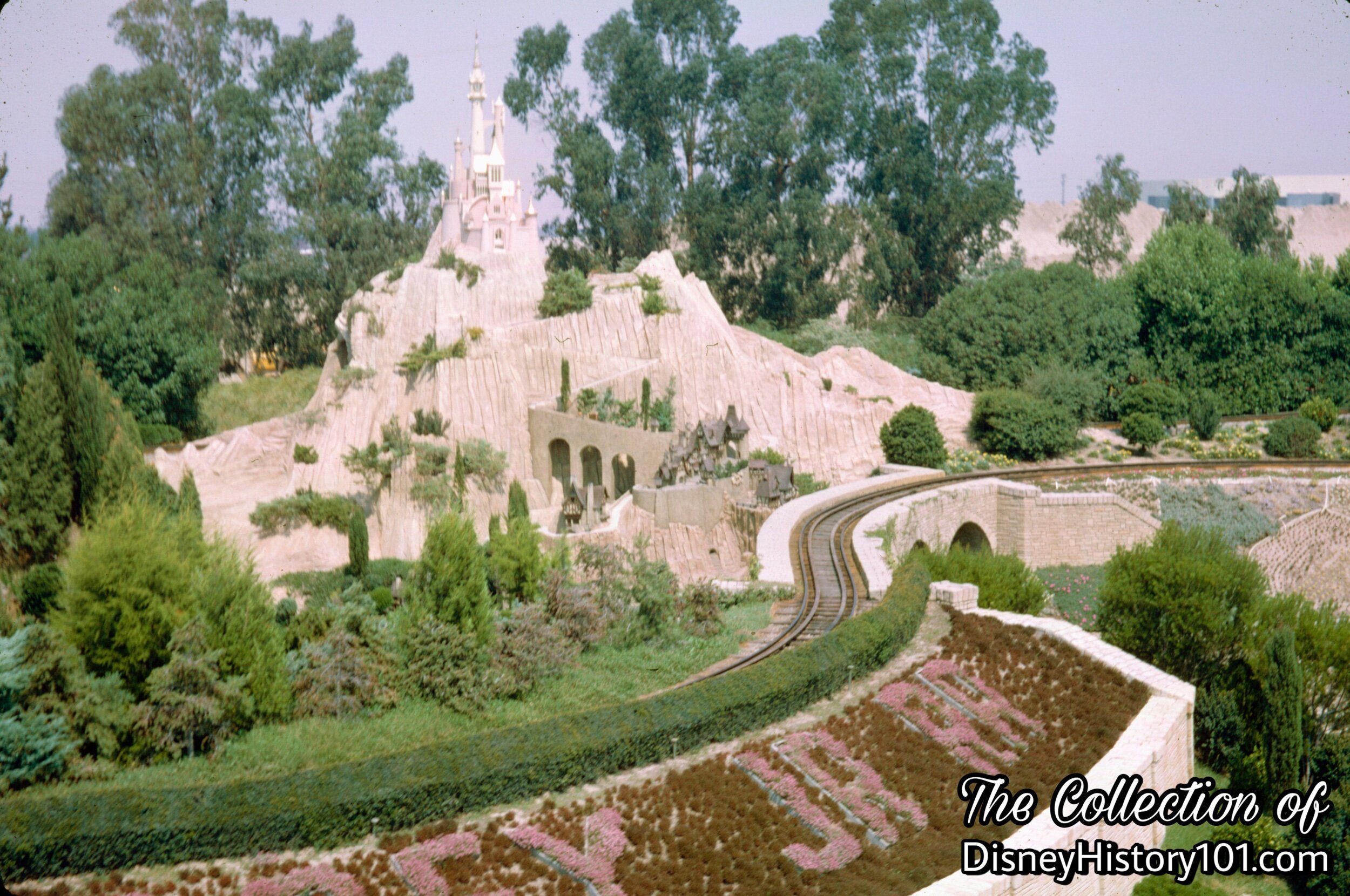
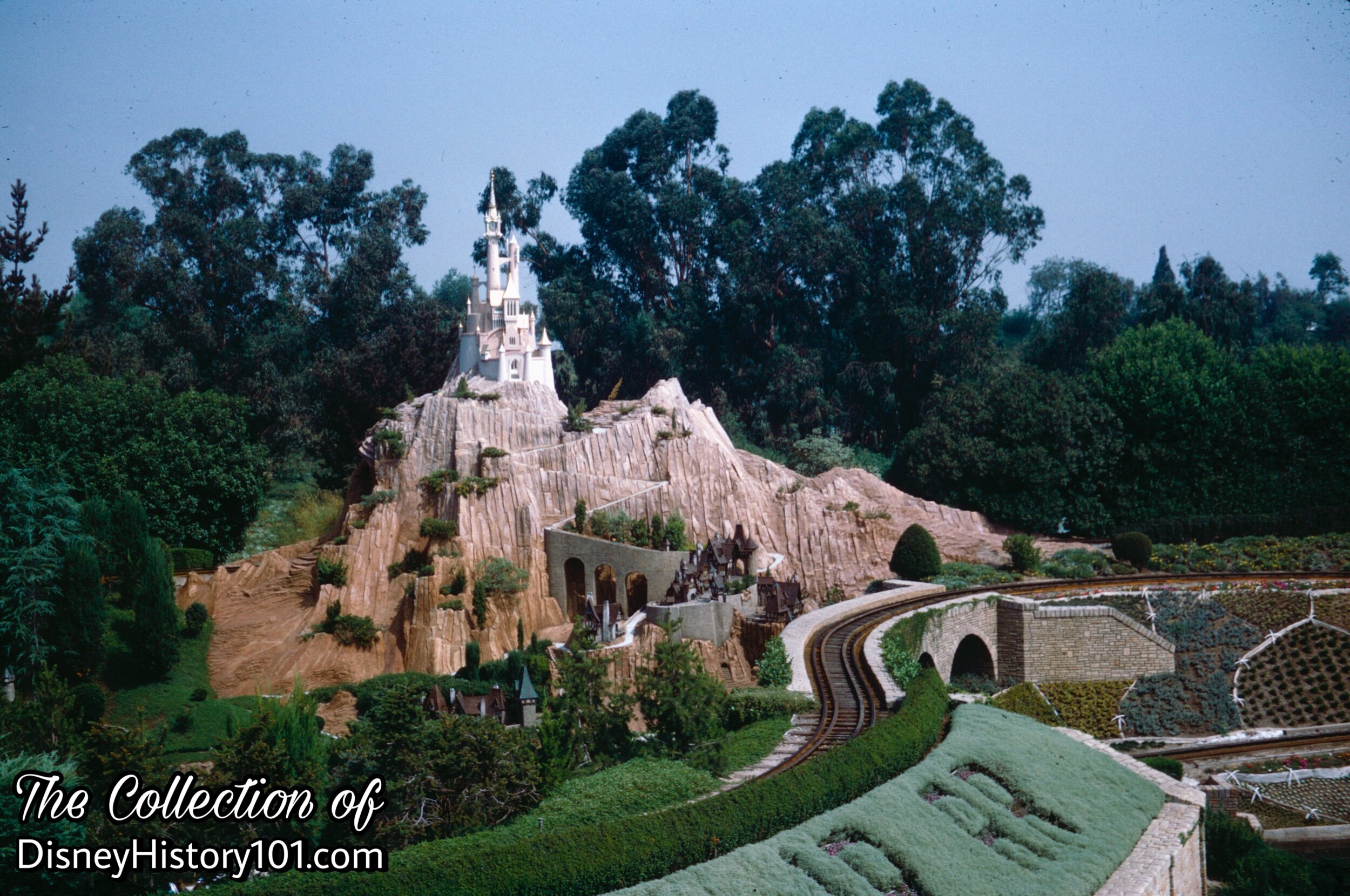
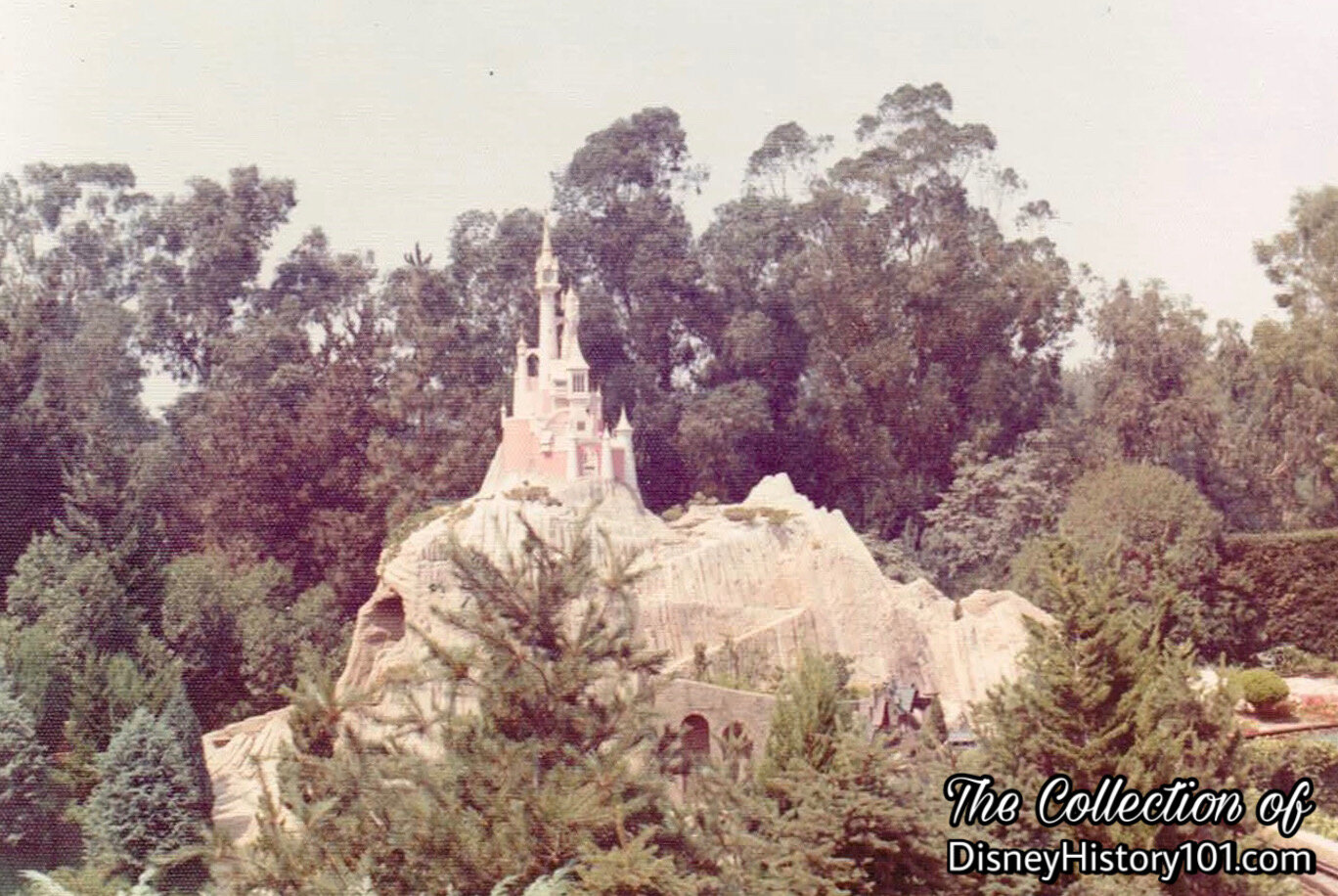
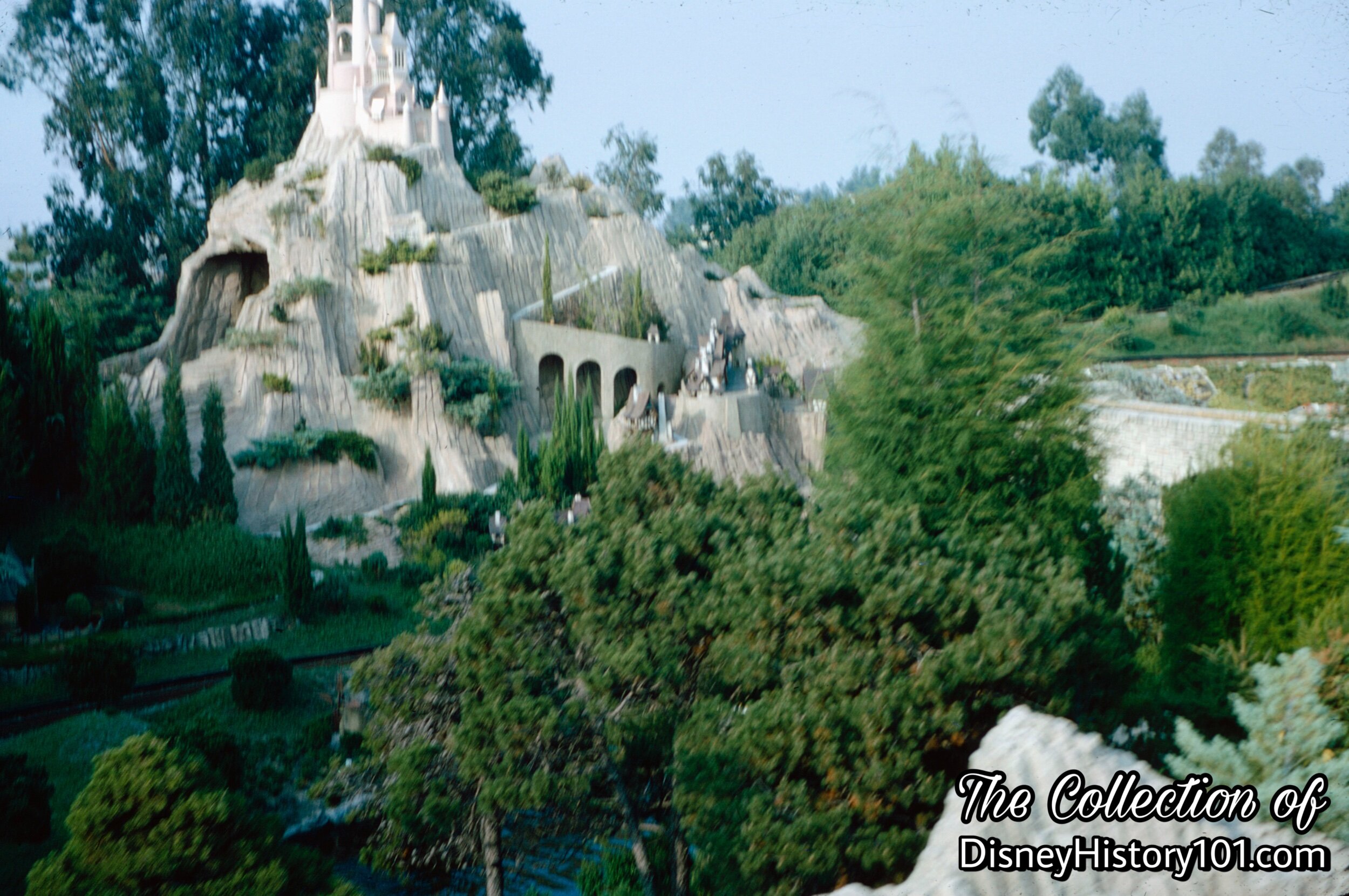

Storybook Land Canal
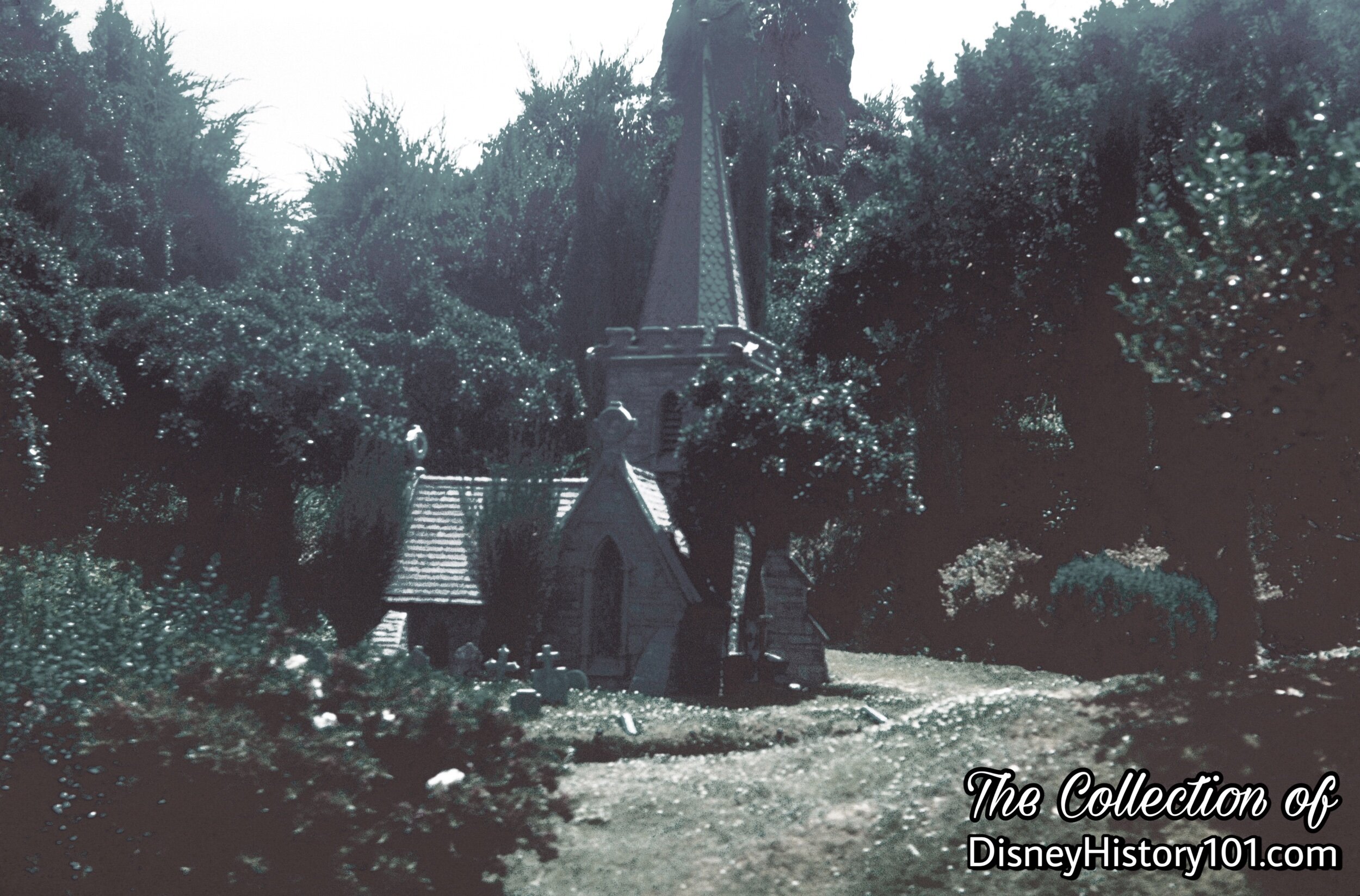
English Countryside Church of “Alice’s village,” (1962)
On the left beyond a bridge, or “On the right we pass by Alice’s Village again. Notice the tiny church where Alice goes too Sunday school.” Other scripts read this way : “Alice lives in the little thatched house situated between the church and the rabbit hole. It's not difficult to imagine a tiny girl hurrying upon the tree-shaded path, in pursuit of a mysterious white rabbit.”
This particular building was designed by Walt Disney Studio artist Frank Armitage and leaded together by artist Harriet Burns. While the original structure was replaced with one of more durable materials (during the early 1980s), “the stained glass installed at the construction of the village remains to this day,” according to one Disney Parks blog entry published in 2019.
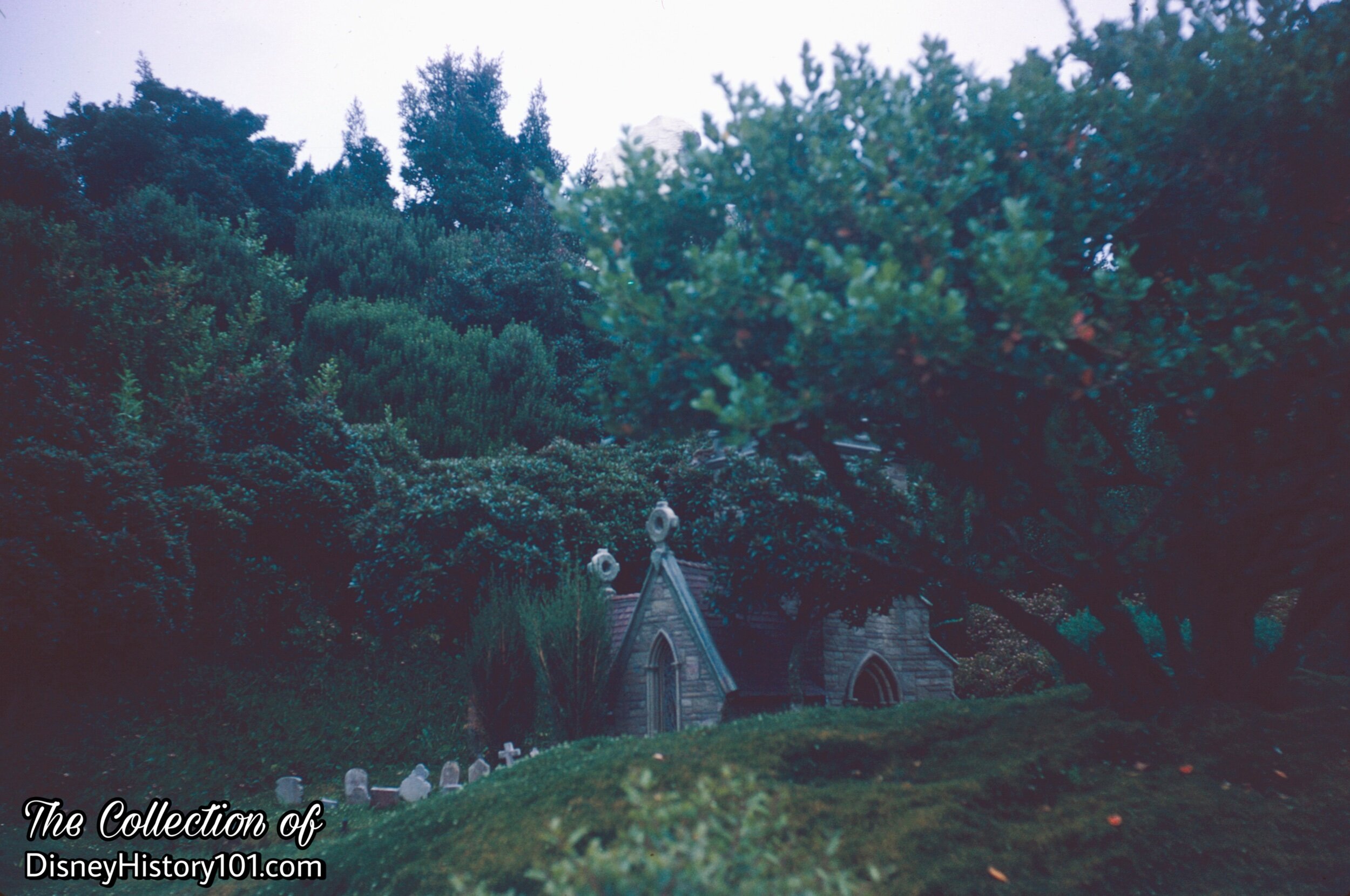
English Countryside Church of “Alice’s village”
Nearby, a miniature English Oak (in the foreground on the right), shades the house of the Rabbit from Alice in Wonderland. “Near this English cottage under the oak tree, Alice began her adventures in Wonderland!”
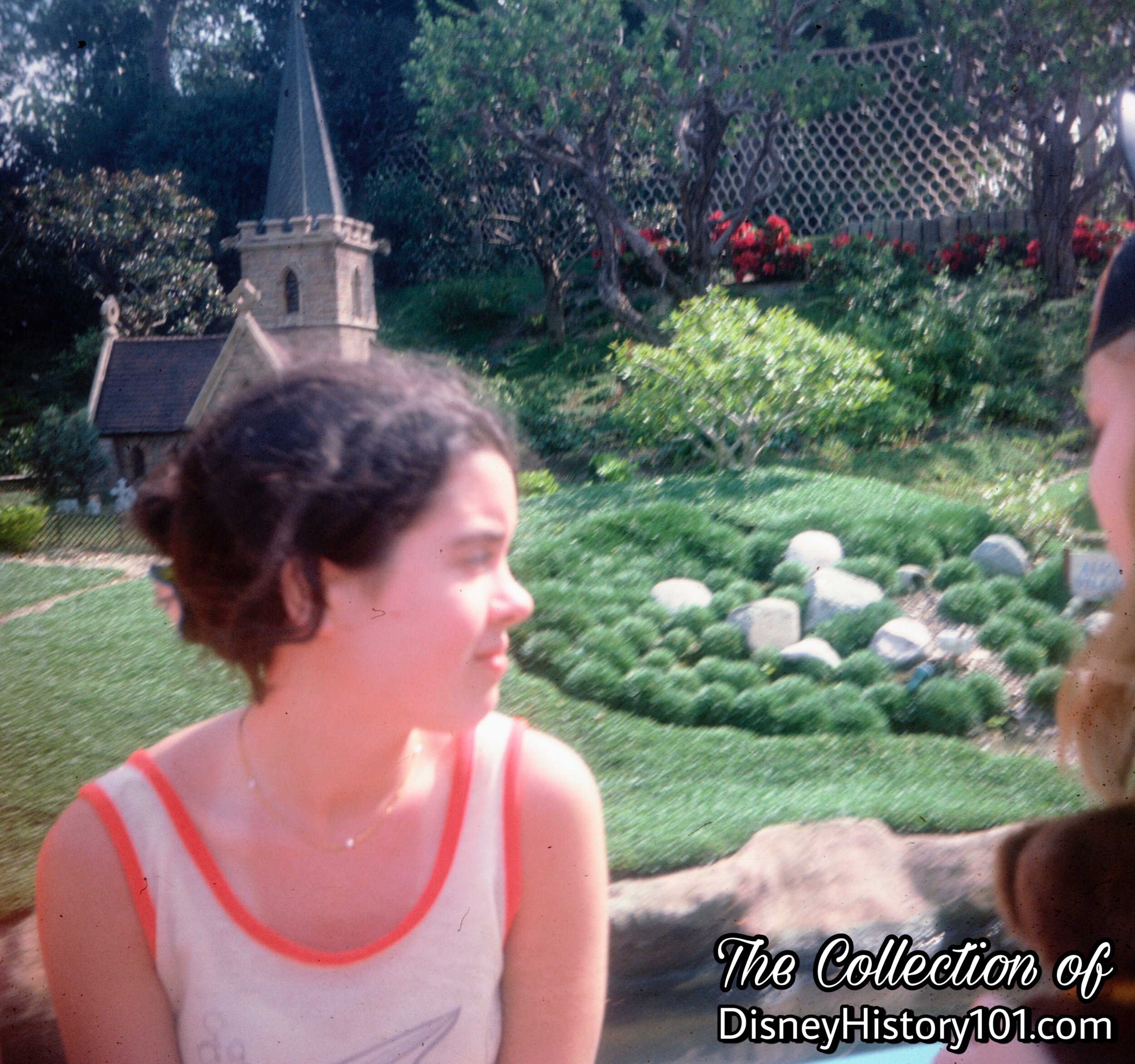
English Countryside Church of “Alice’s village” and English Oak

London Park & Dutch Windmills of Holland Beyond
“Around the bend (and in the distance) are the three Dutch Windmills from the story “The Old Mill”. The one in the center [with the white sails] is where all the animals took refuge during the great flood in Holland.”
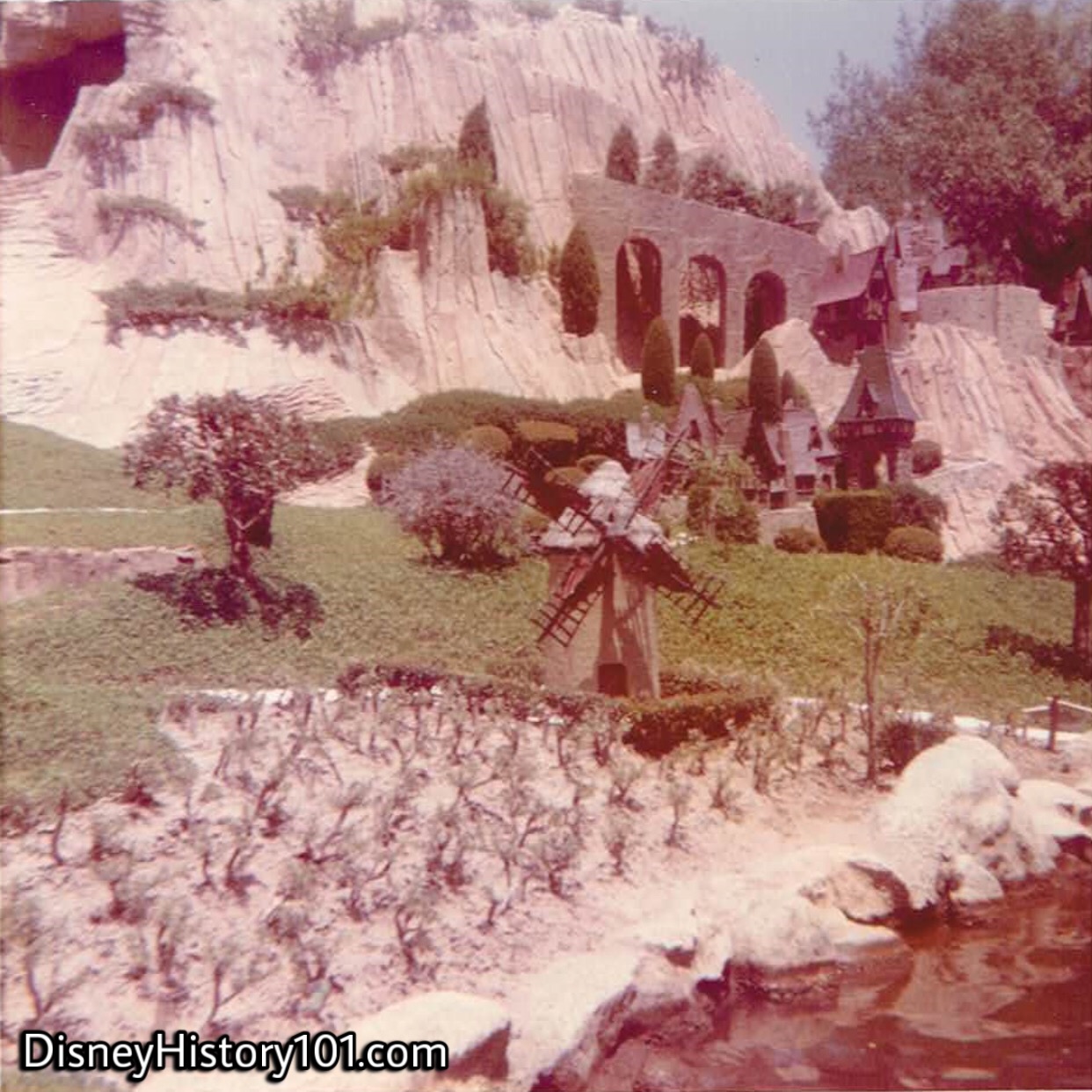
Dutch Windmill, 1972
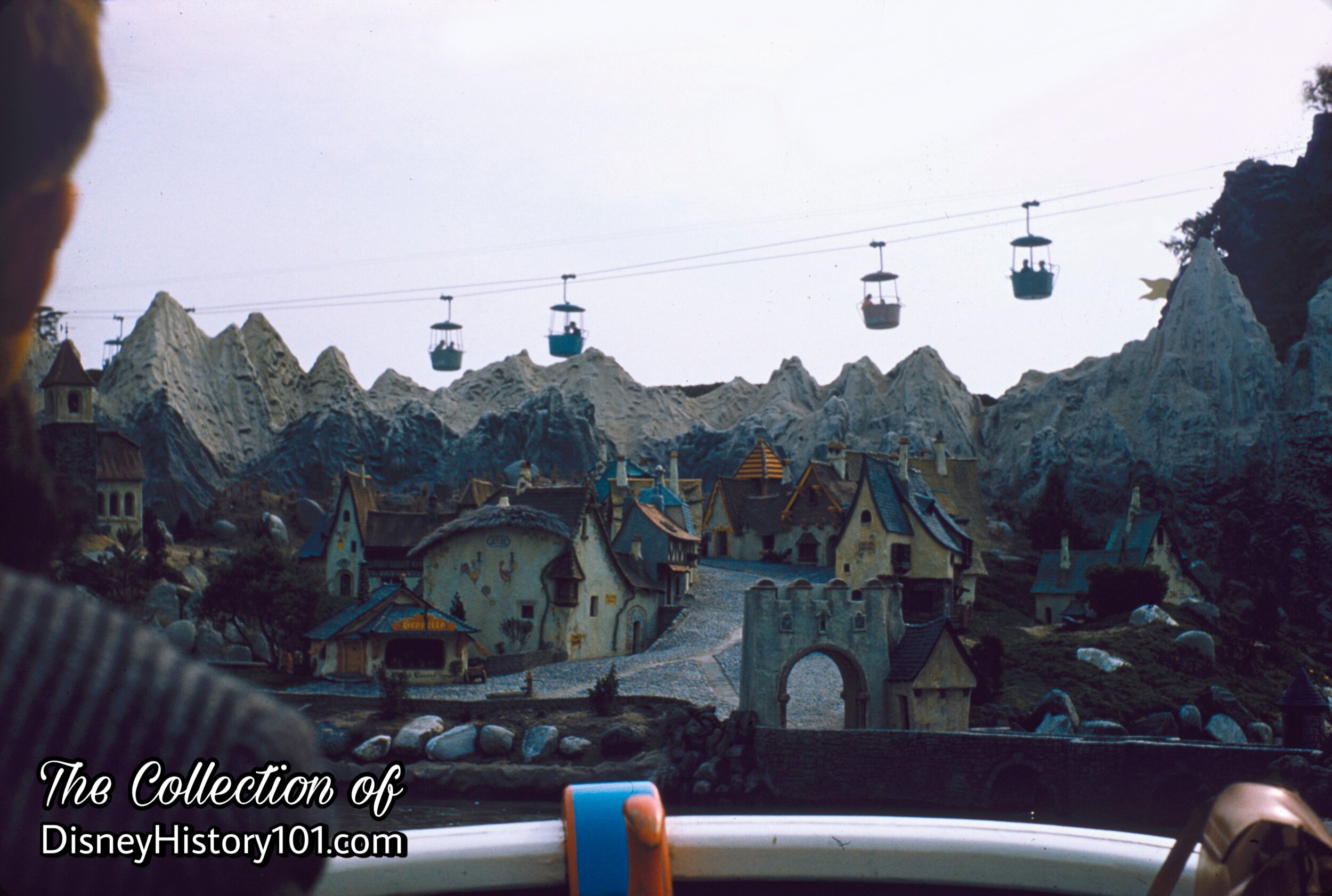
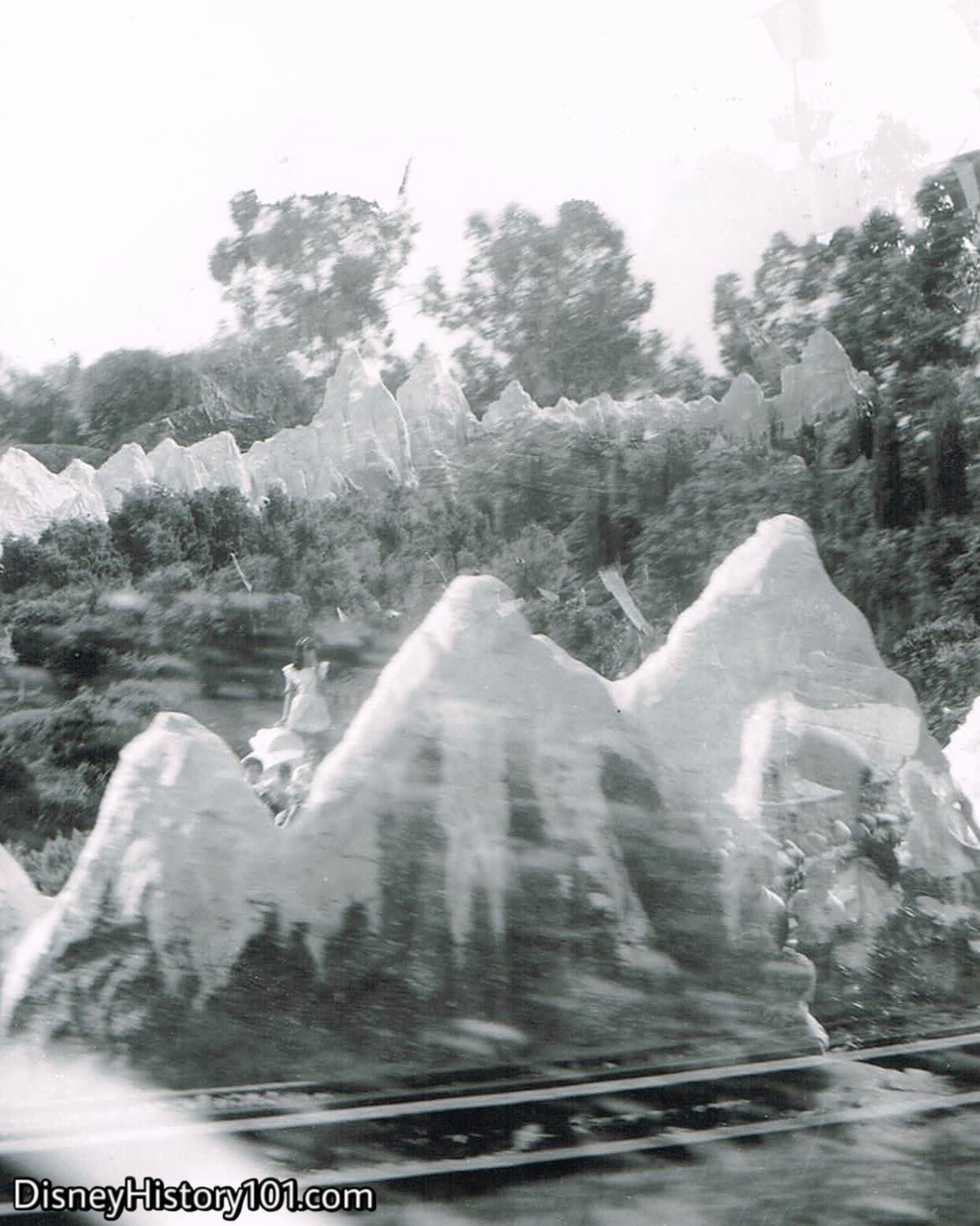
Mountains Behind Gepetto's Village
In the distance - the Swiss Alps shared by both Italy and Switzerland.
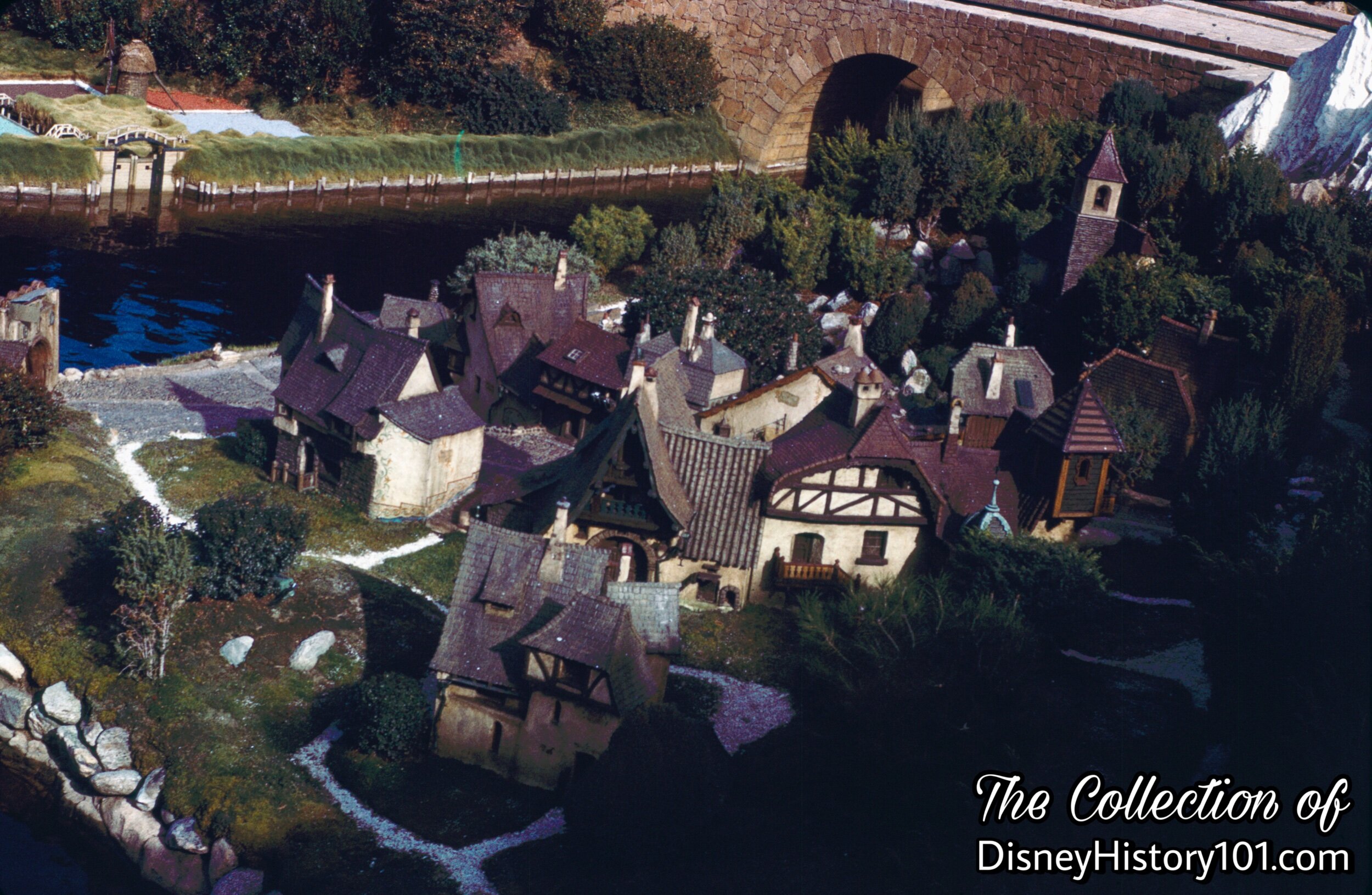
Geppetto's Village, (January, 1965)
Now, we pass by the little Swiss-Italian village home to the painted shop of Geppetto the wood-carver.
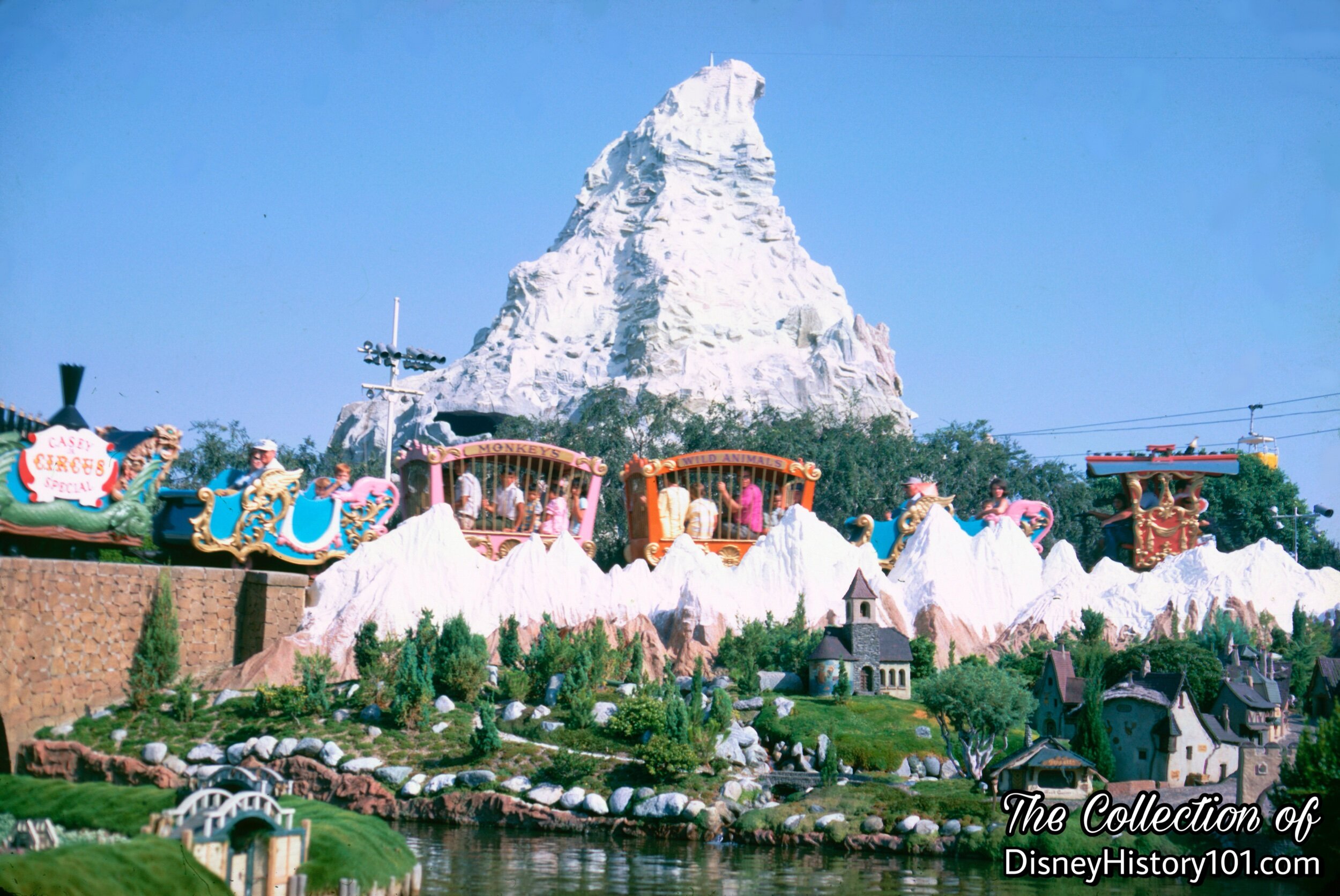
Gepetto's Village, Swiss Alps and Matterhorn, (July, 1969)
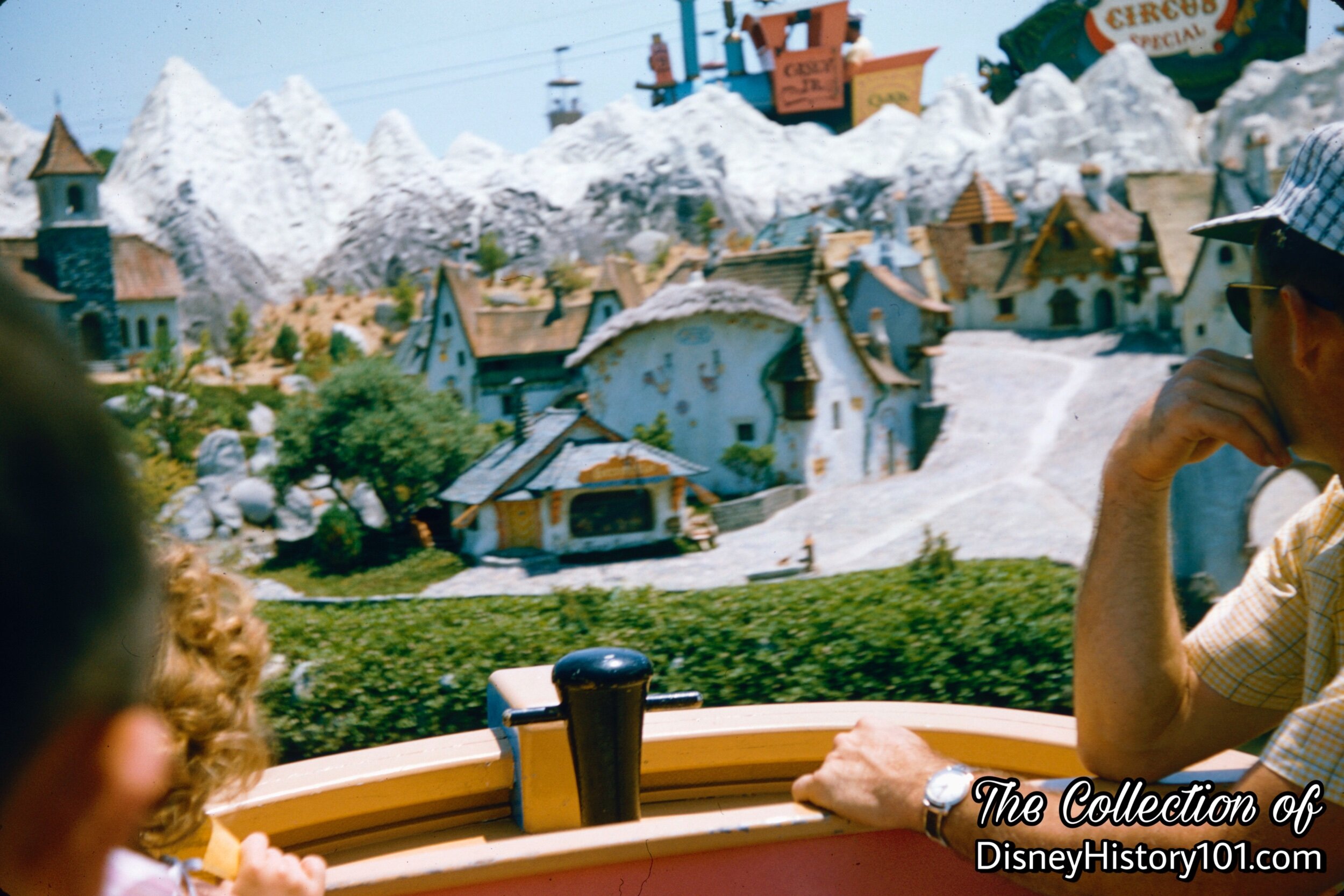
Gepetto's Village
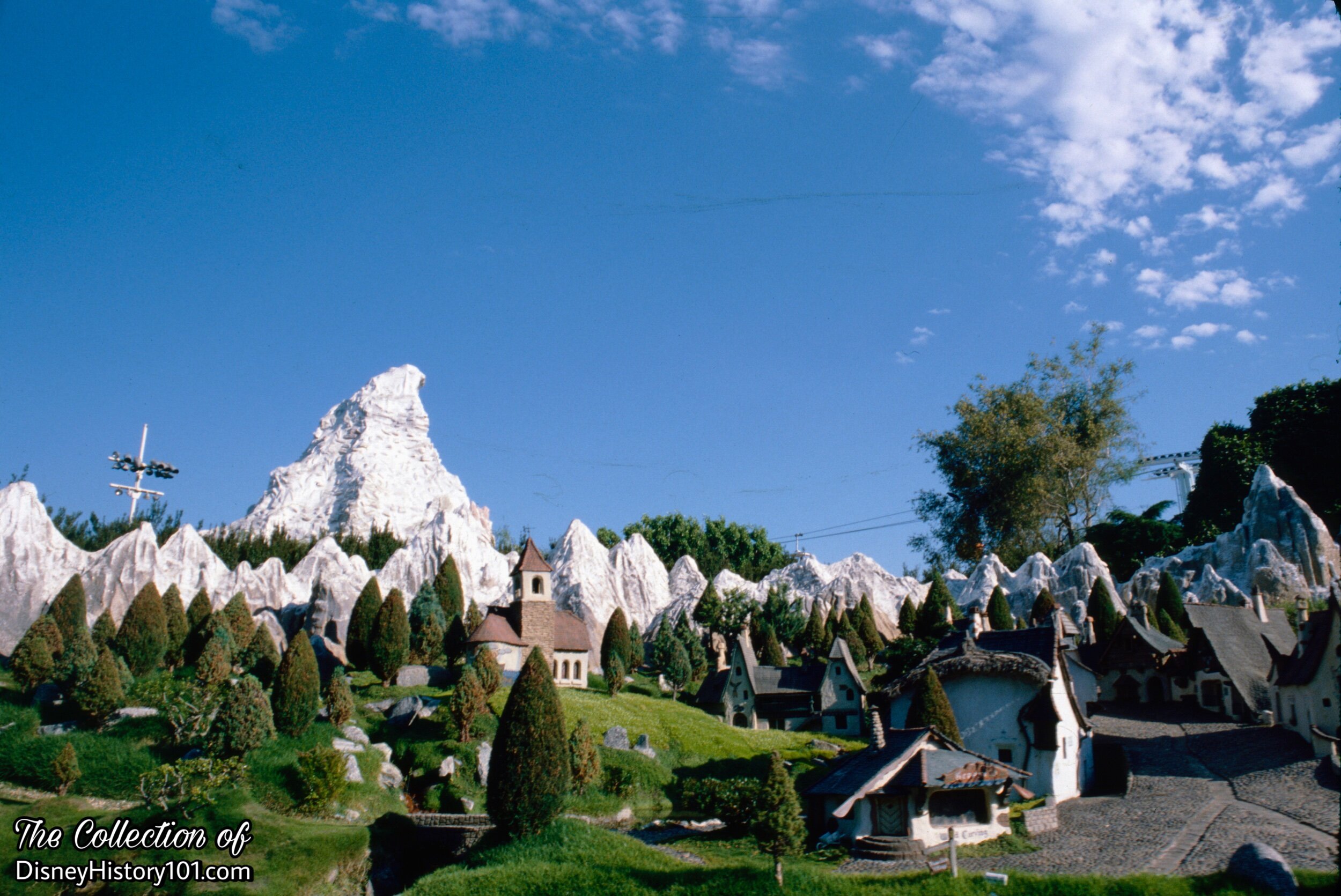
Gepetto's Village, (June, 1979)
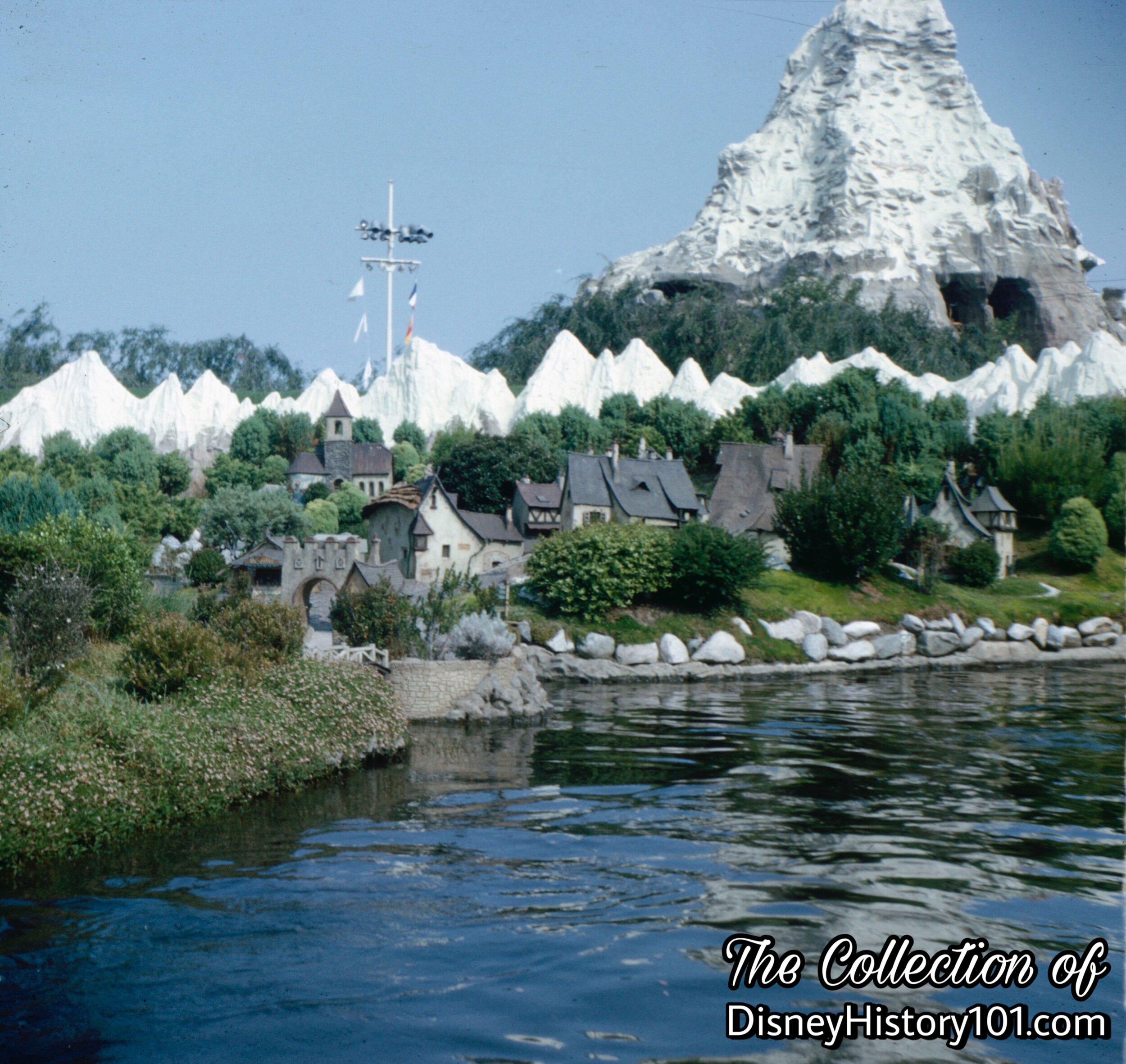
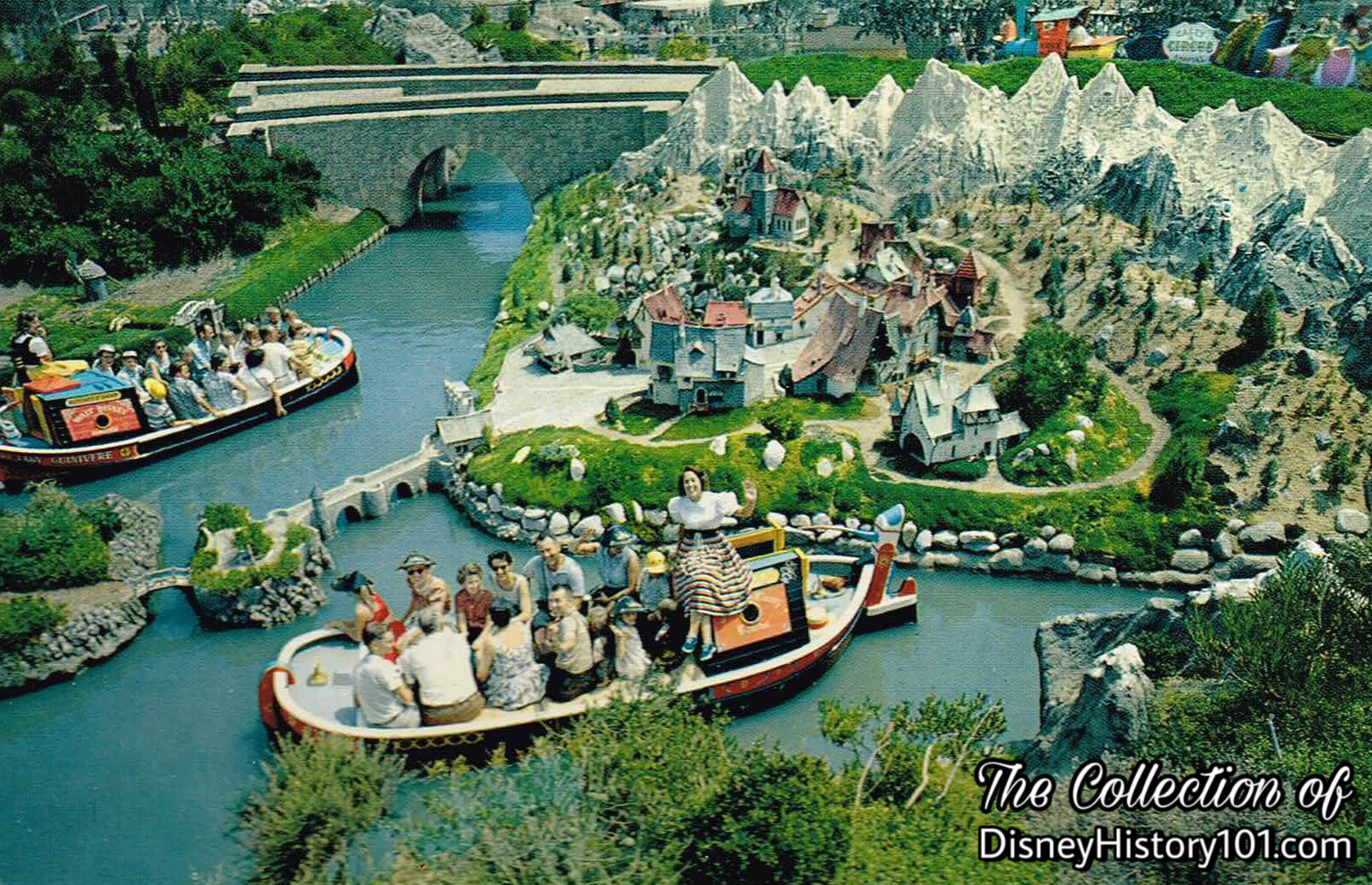
Postcard Image

Gepetto's Village, (September 17, 1970)
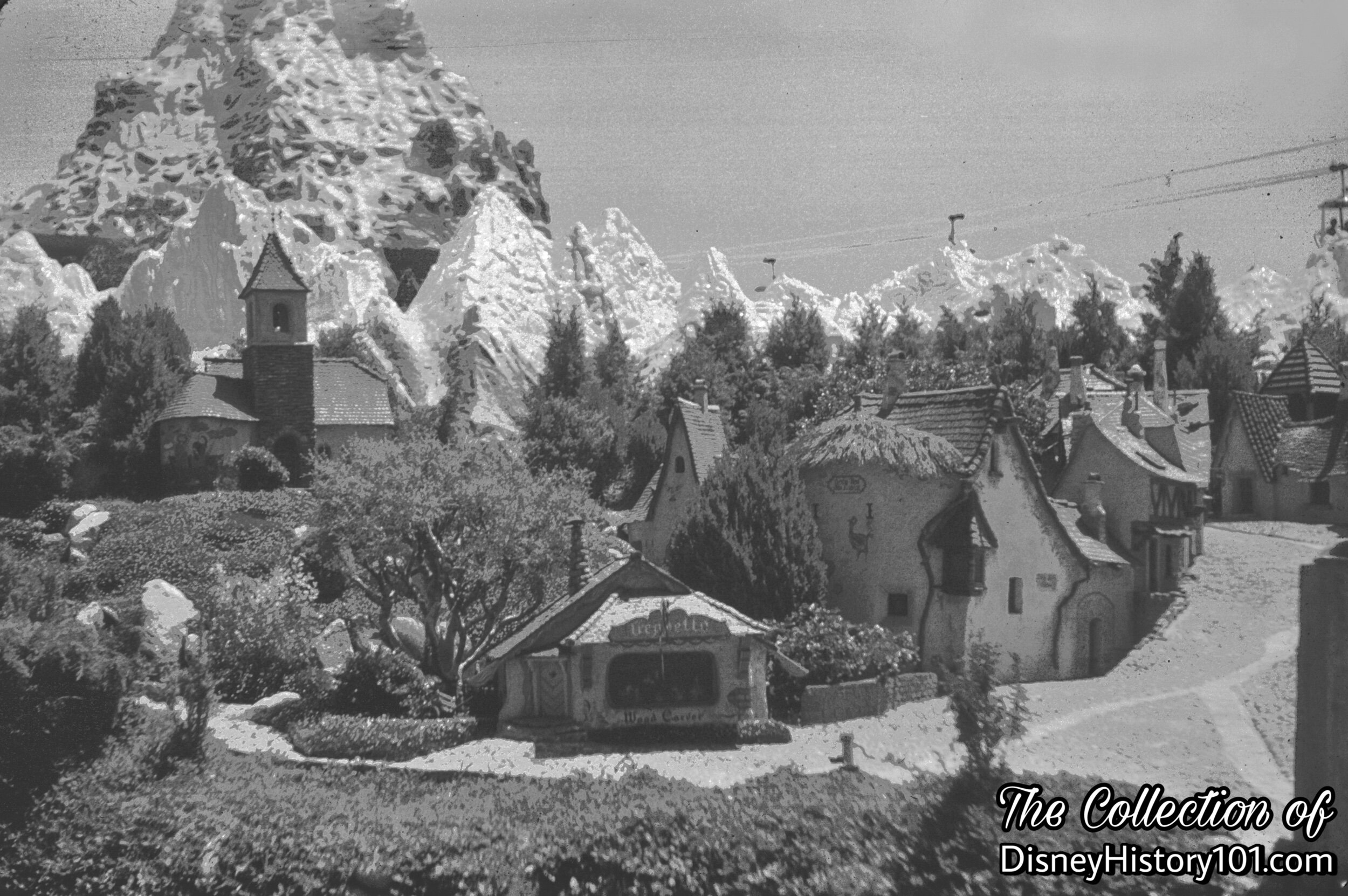
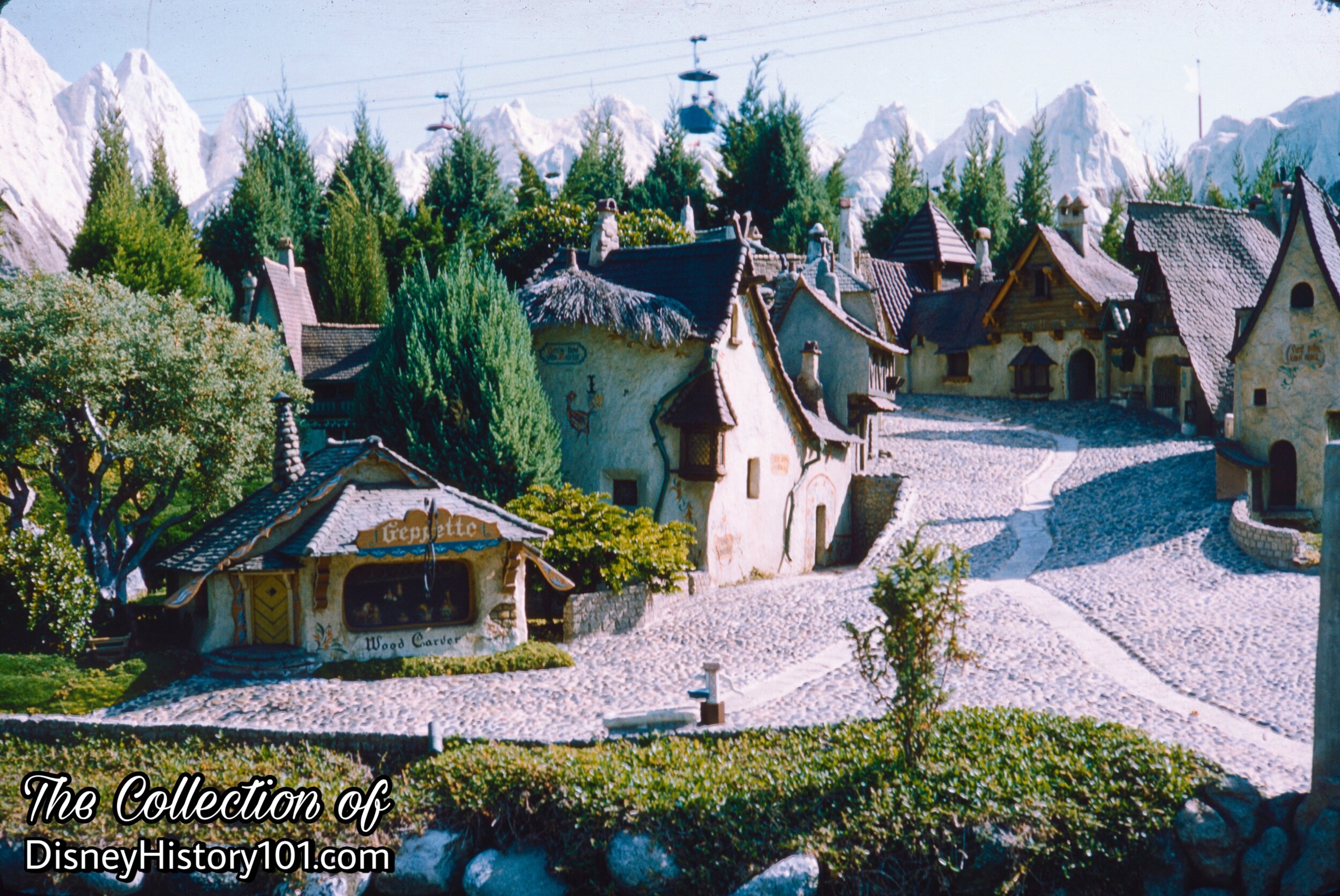
Gepetto's Village, (1962)
Diosma, dwarf myrtle and conifers accent the small village.

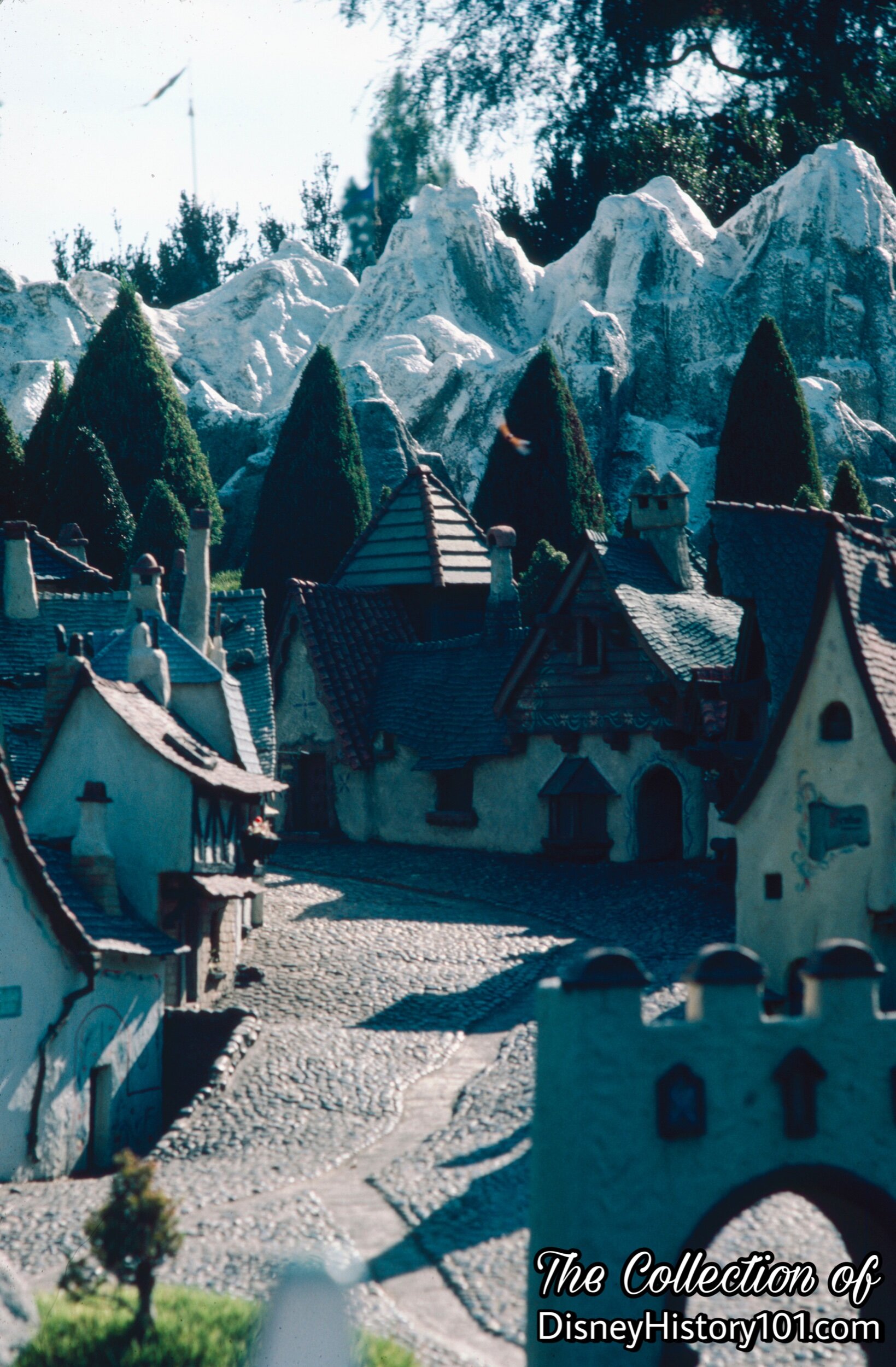
(1980)
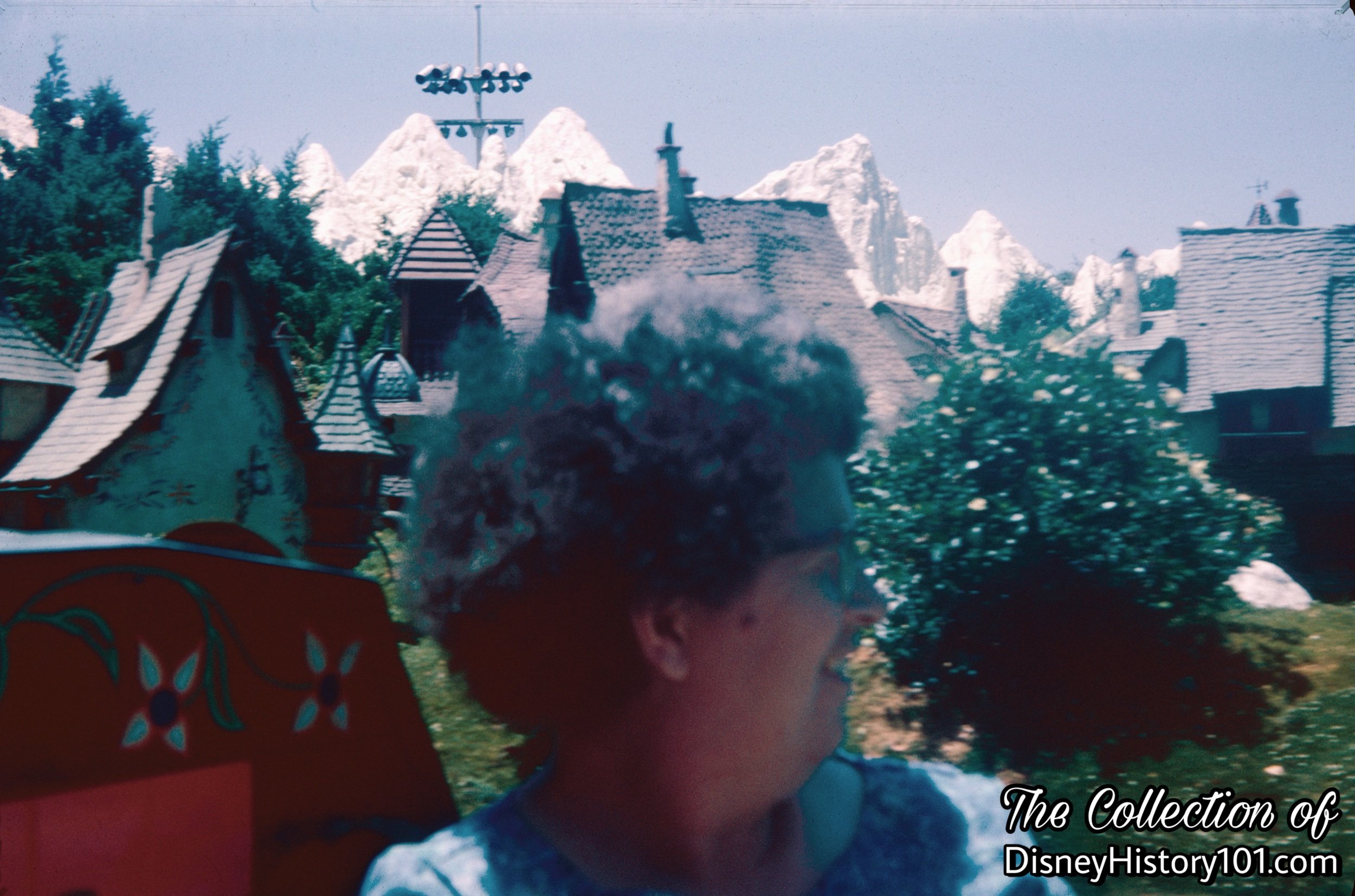
Gepetto's Village, (1962)
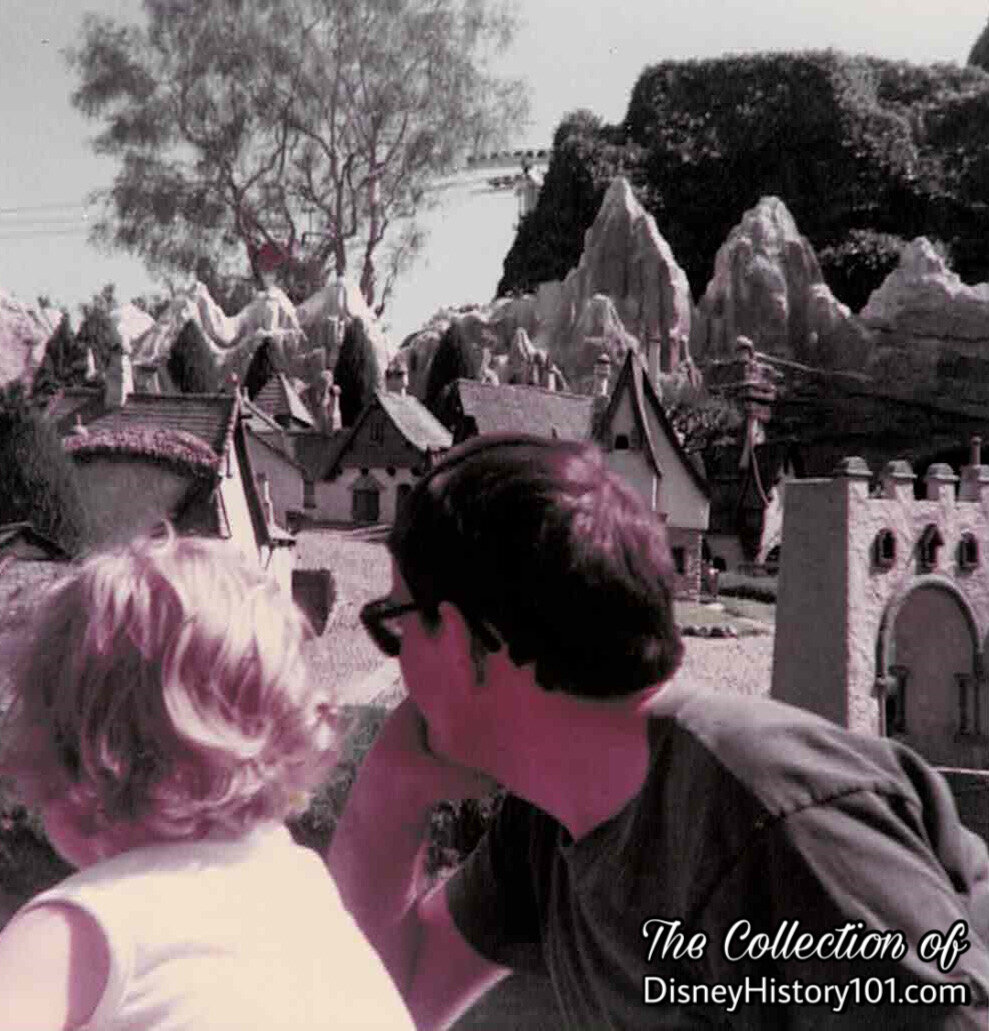
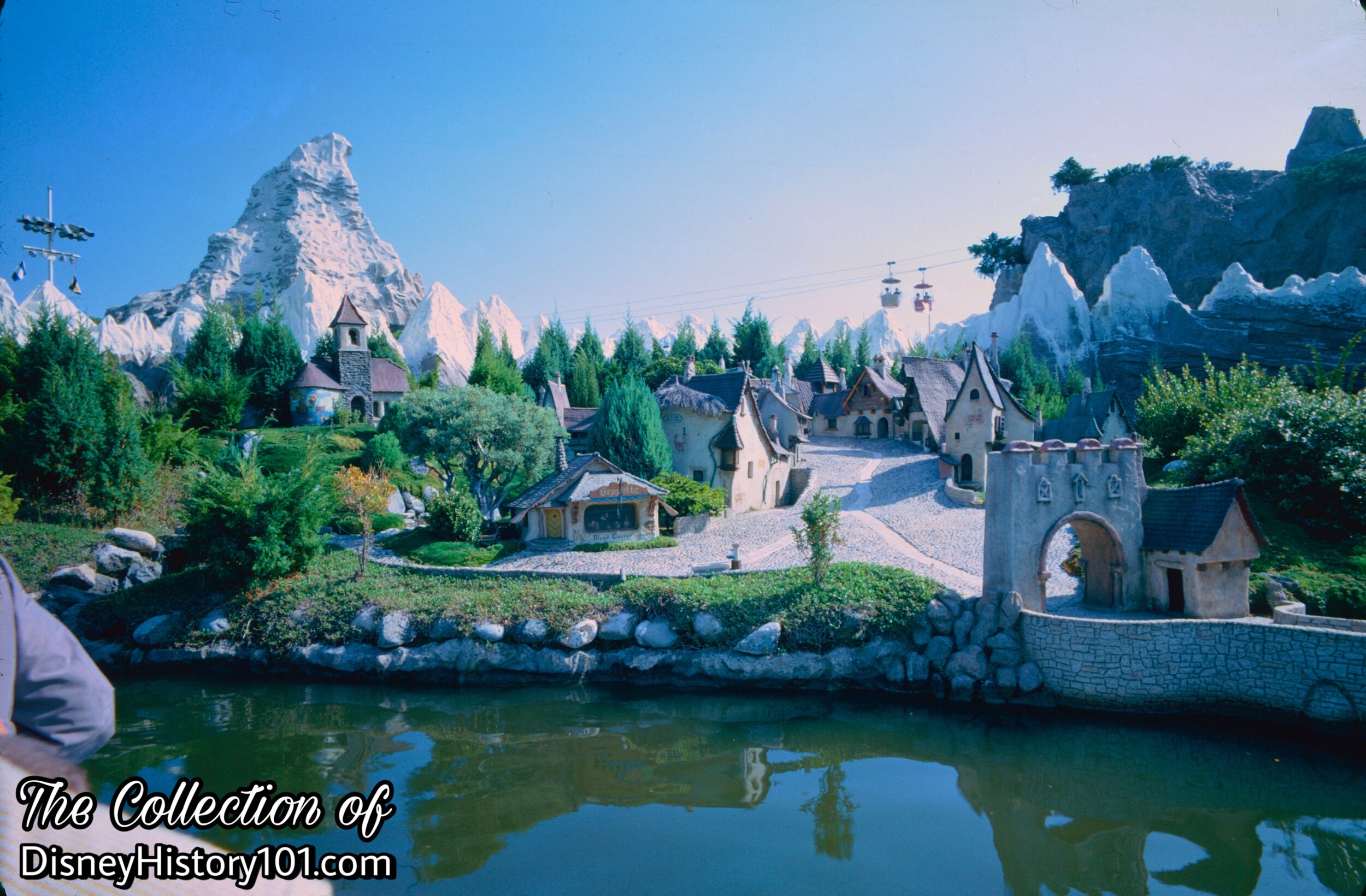
Gepetto's Village, (1962)
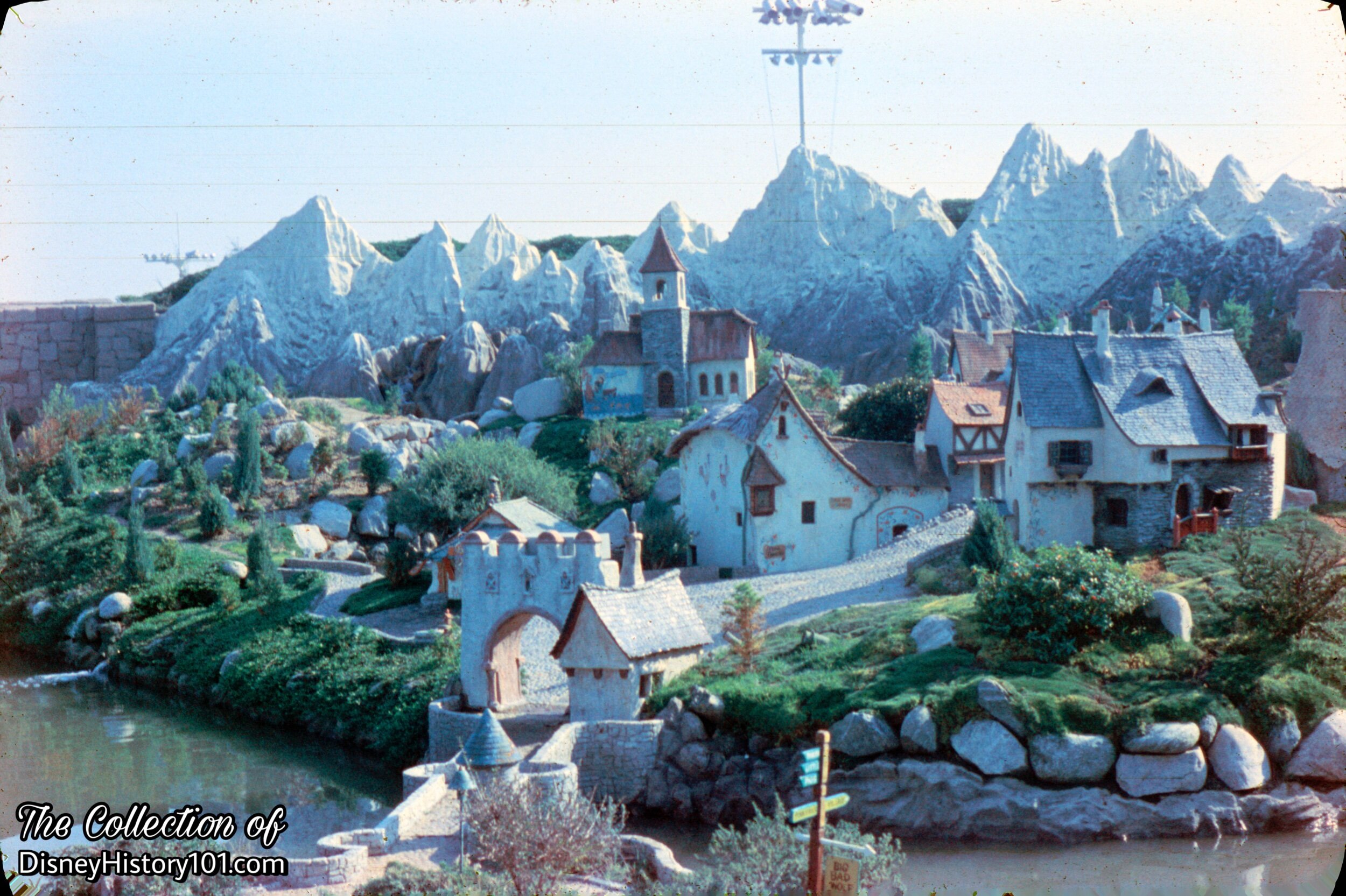
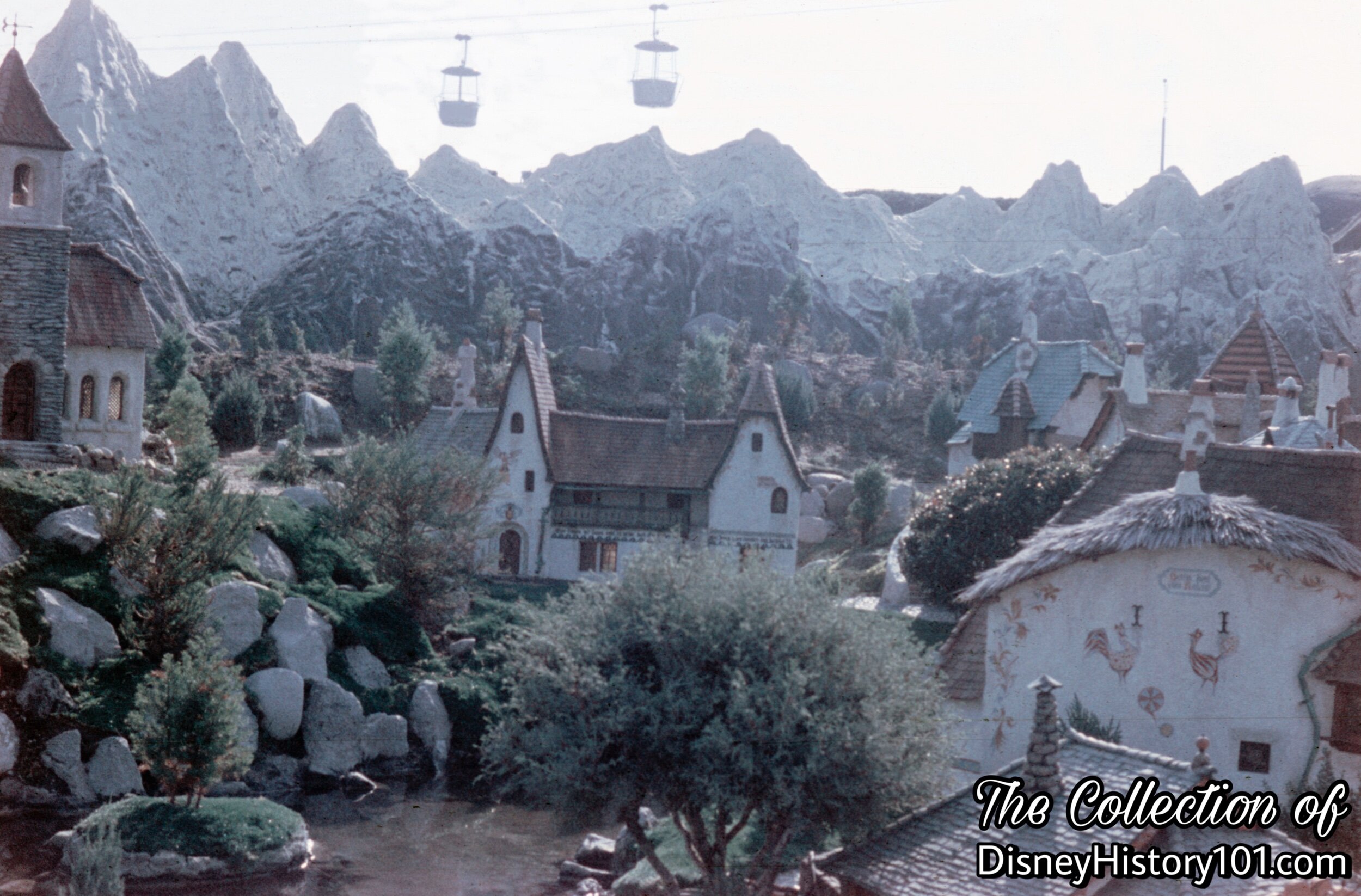
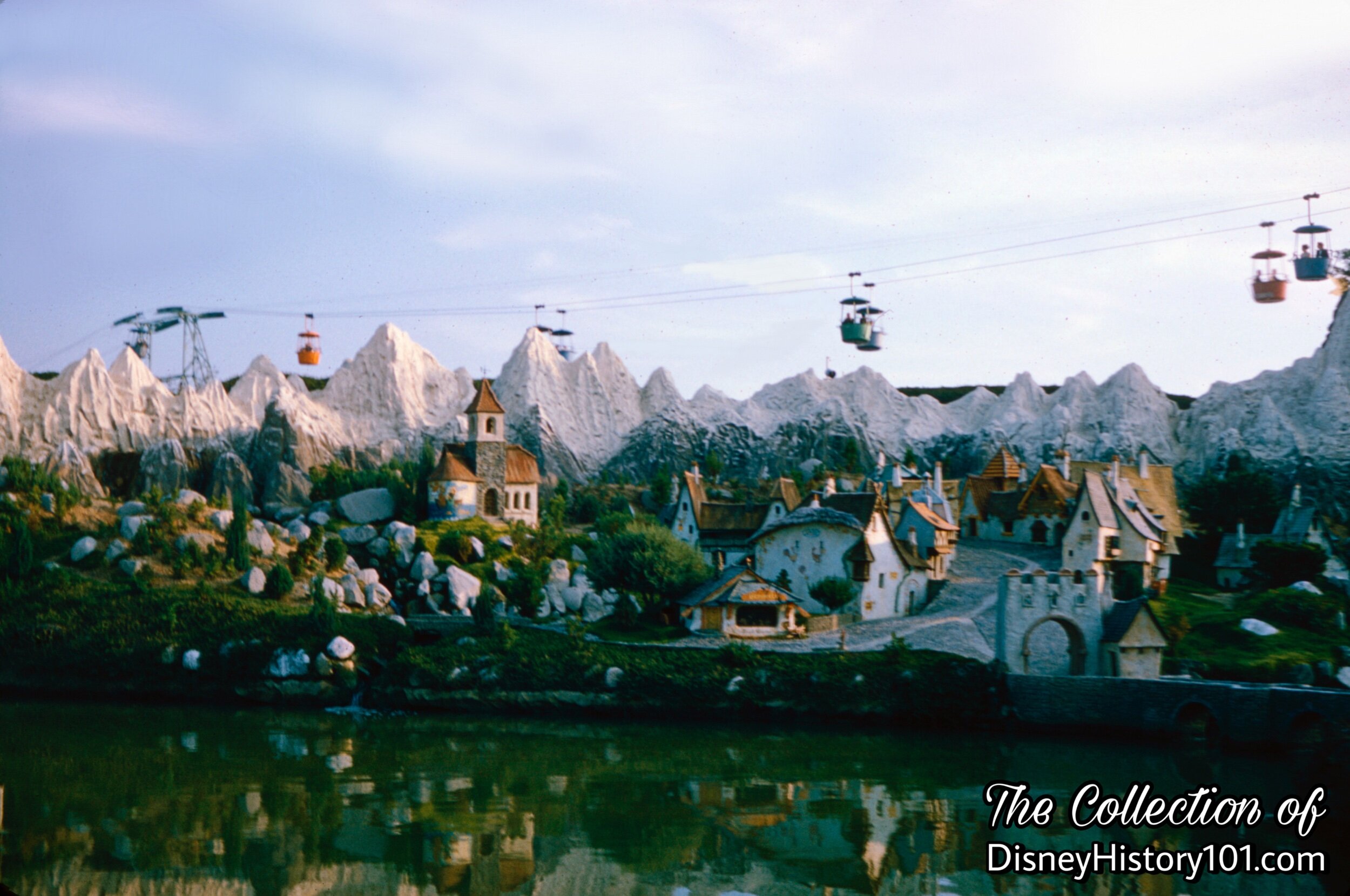
(c. 1957-1958)

Gepetto's Village
“Straight ahead is Gepetto’s Village. You all remember Gepetto - he’s the man who wanted a son so badly he carved one out of wood. Right down by the water’s edge is the Toy Shoppe where Pinocchio first came to life.”
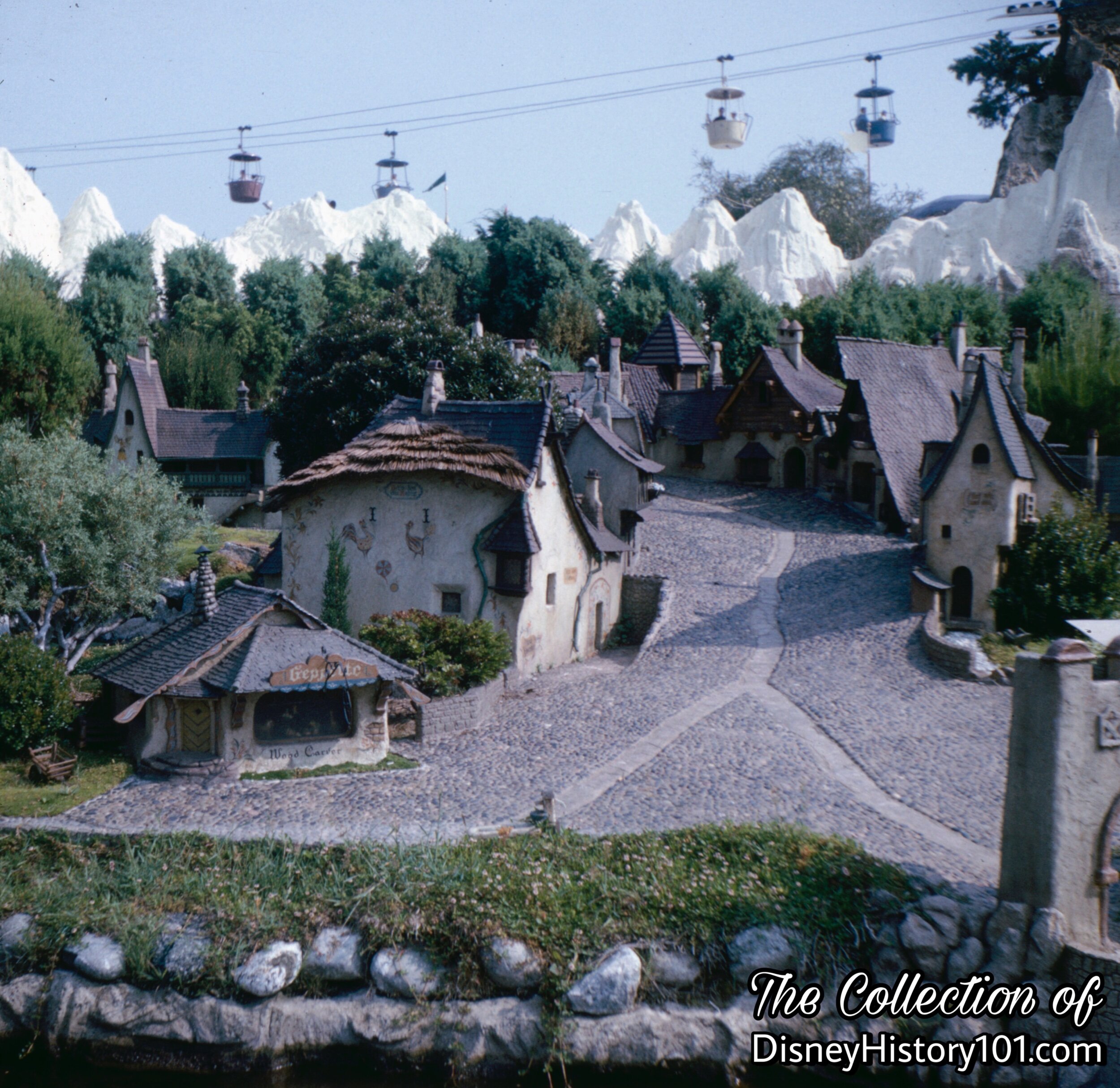
Gepetto's Village

Gepetto's Village, c. 1981-1982
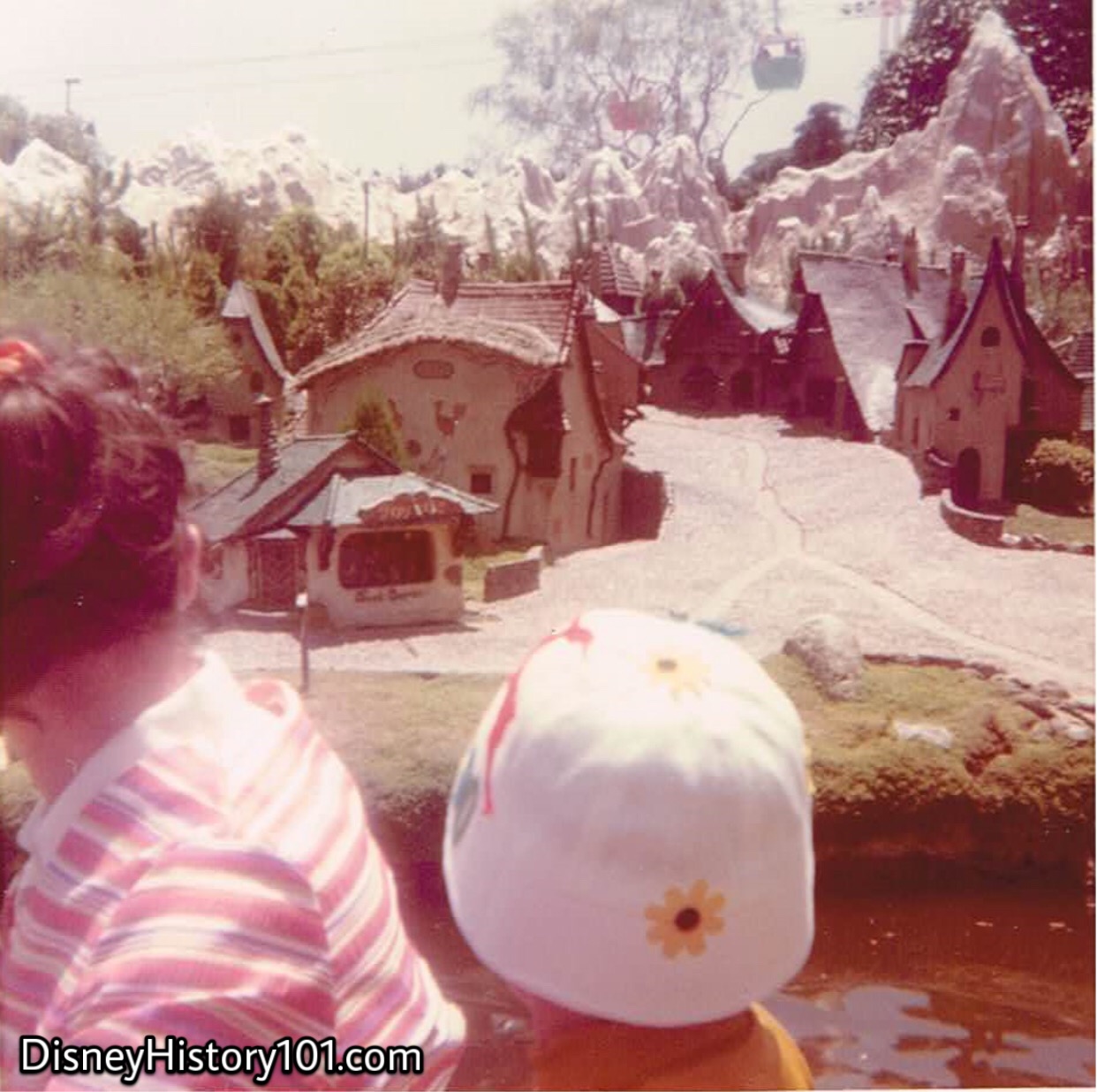
Gepetto's Village, 1972

Gepetto's Village
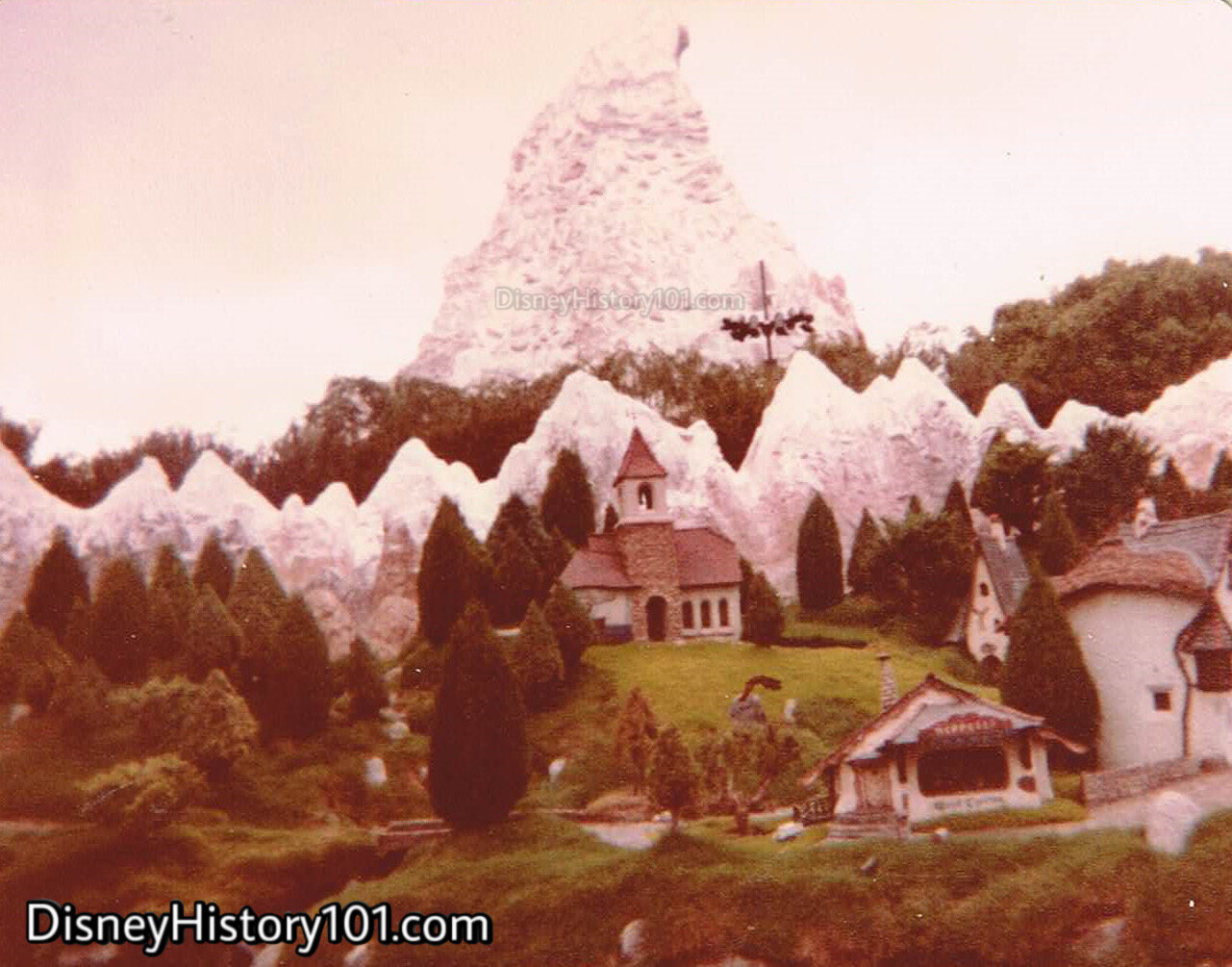
Gepetto's Village, c. 1981-1982
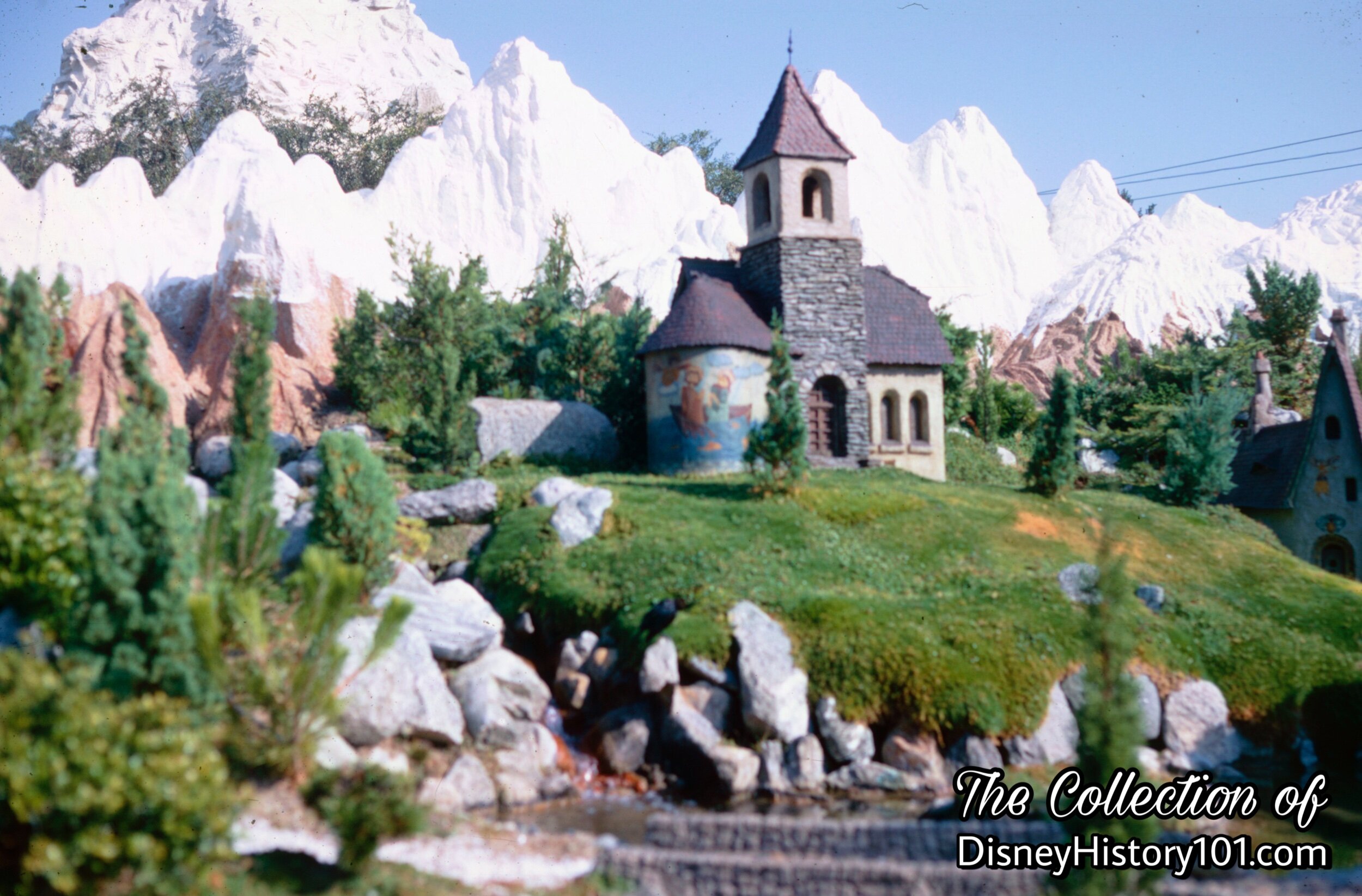
Gepetto's Village Church, 1969
“Do you see the steeple of the old chapel? Some say that it is Pinocchio himself who rings the bell.”
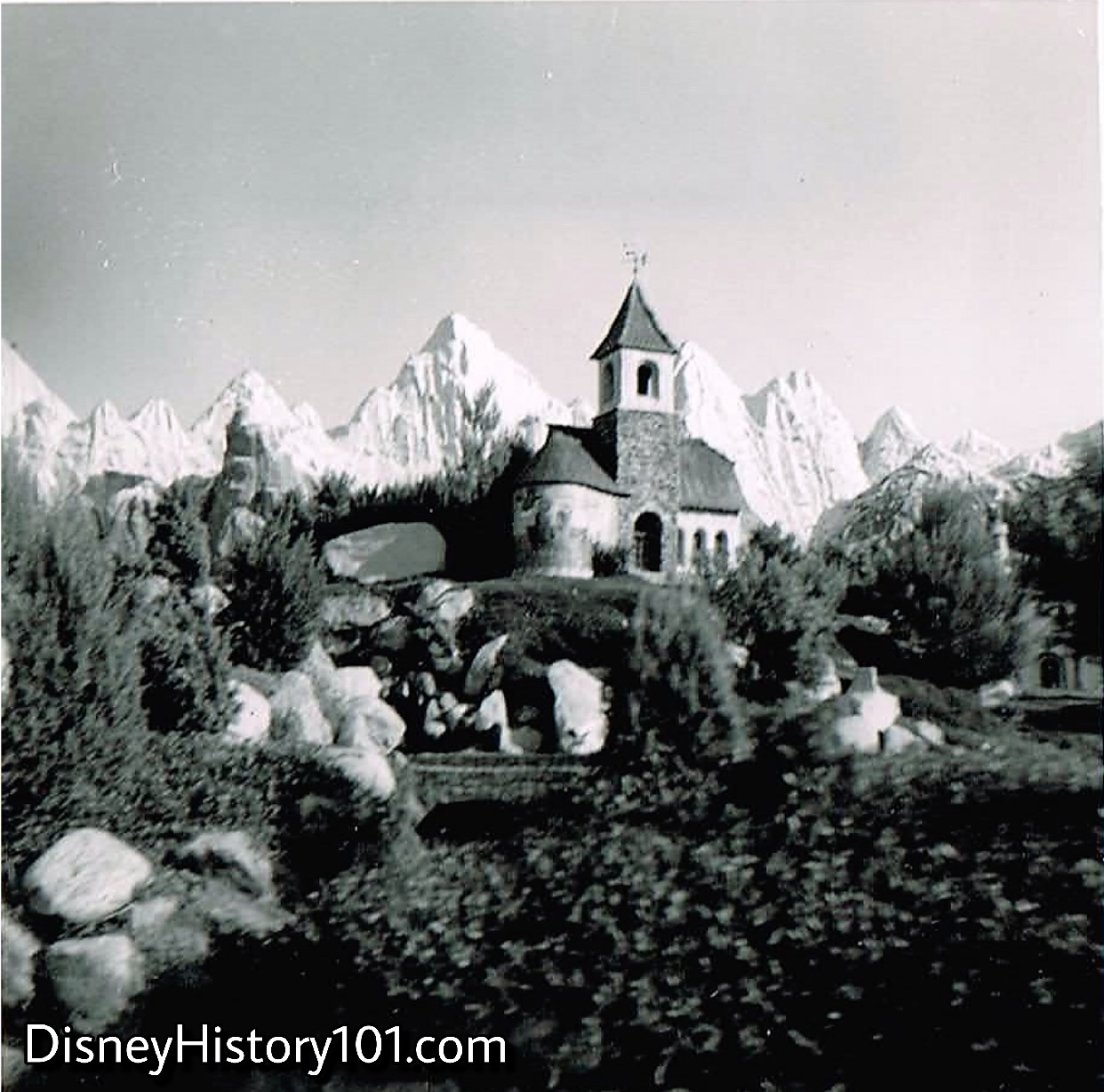
Gepetto's Village
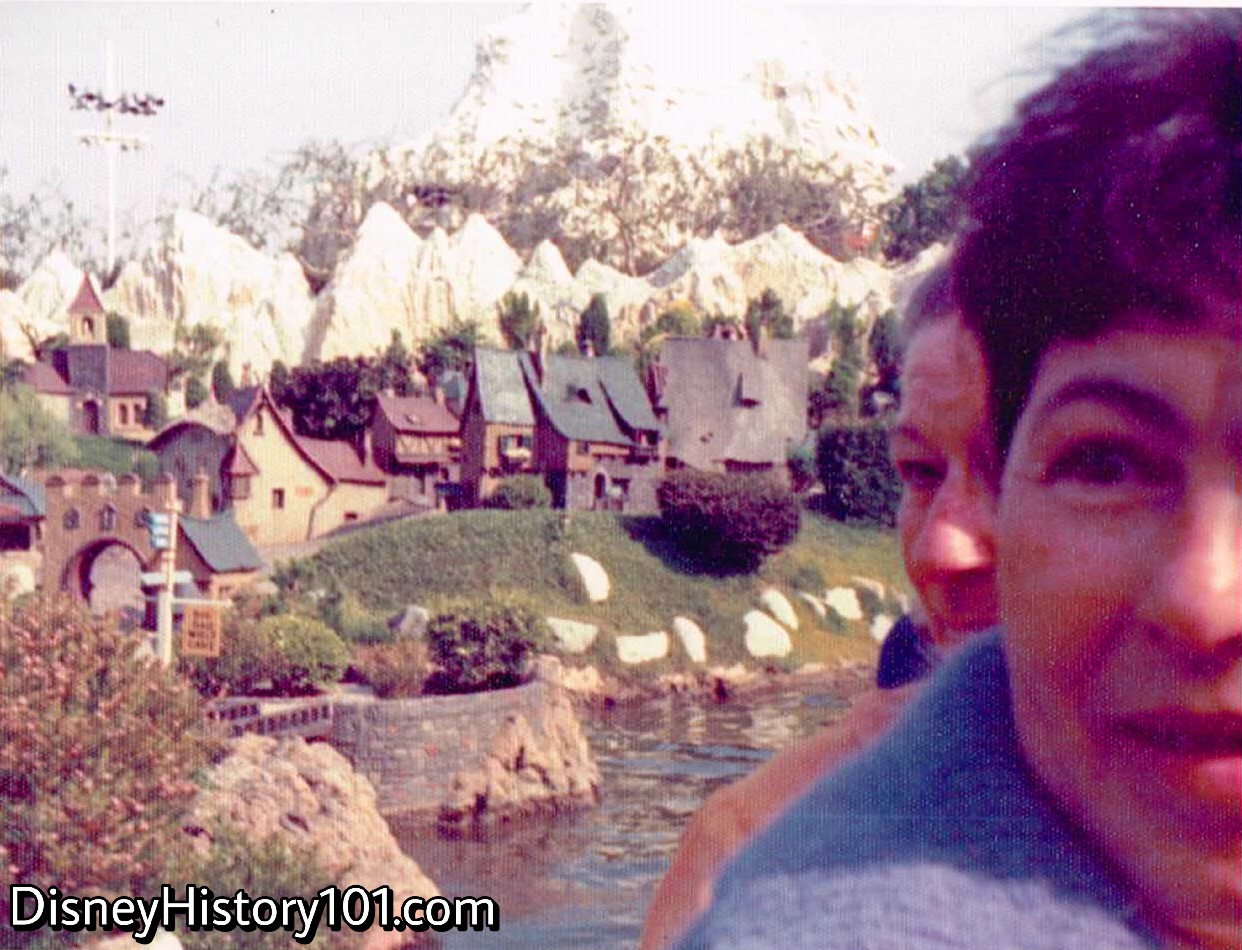
Gepetto's Village, 1960s.
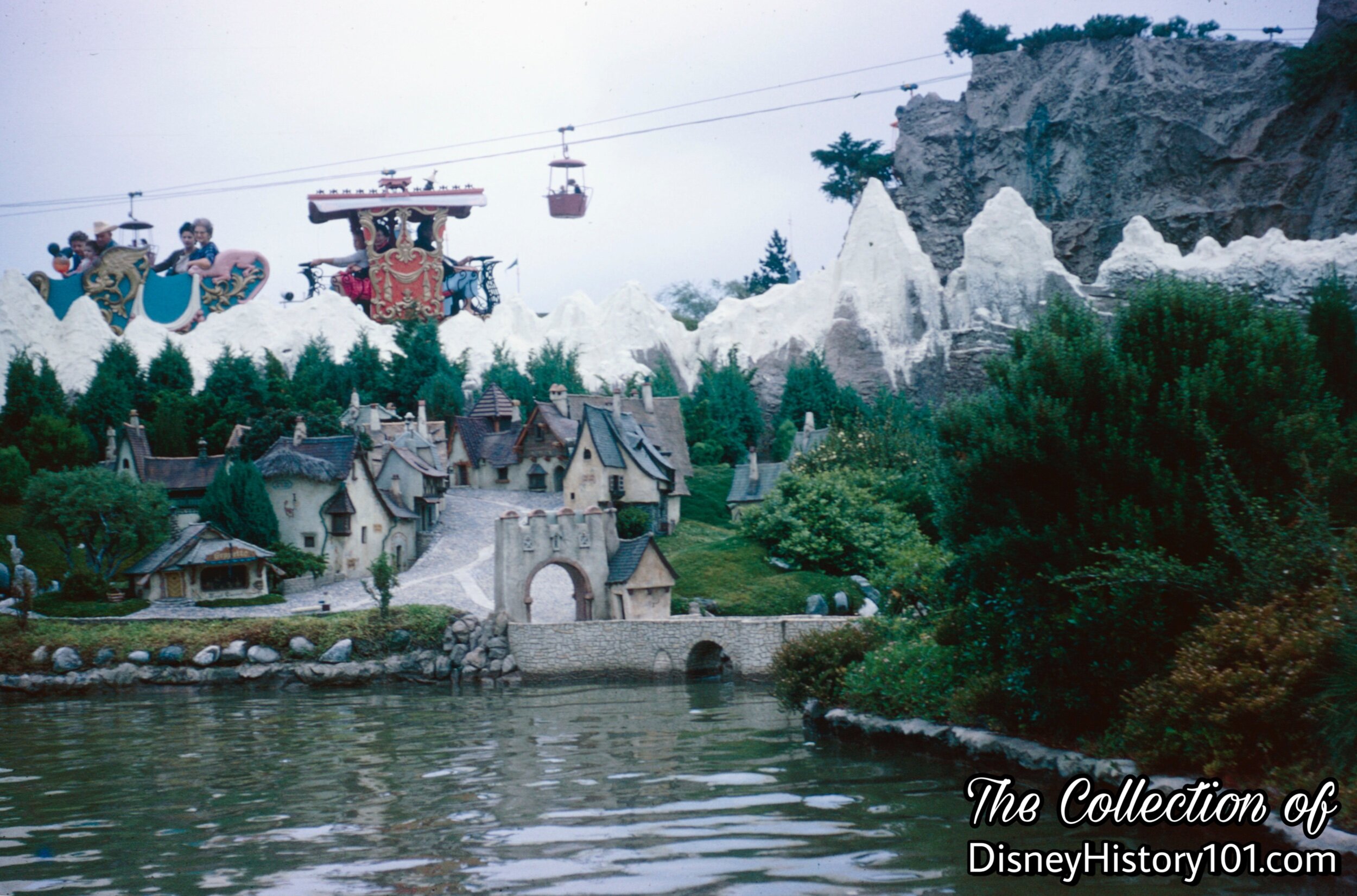
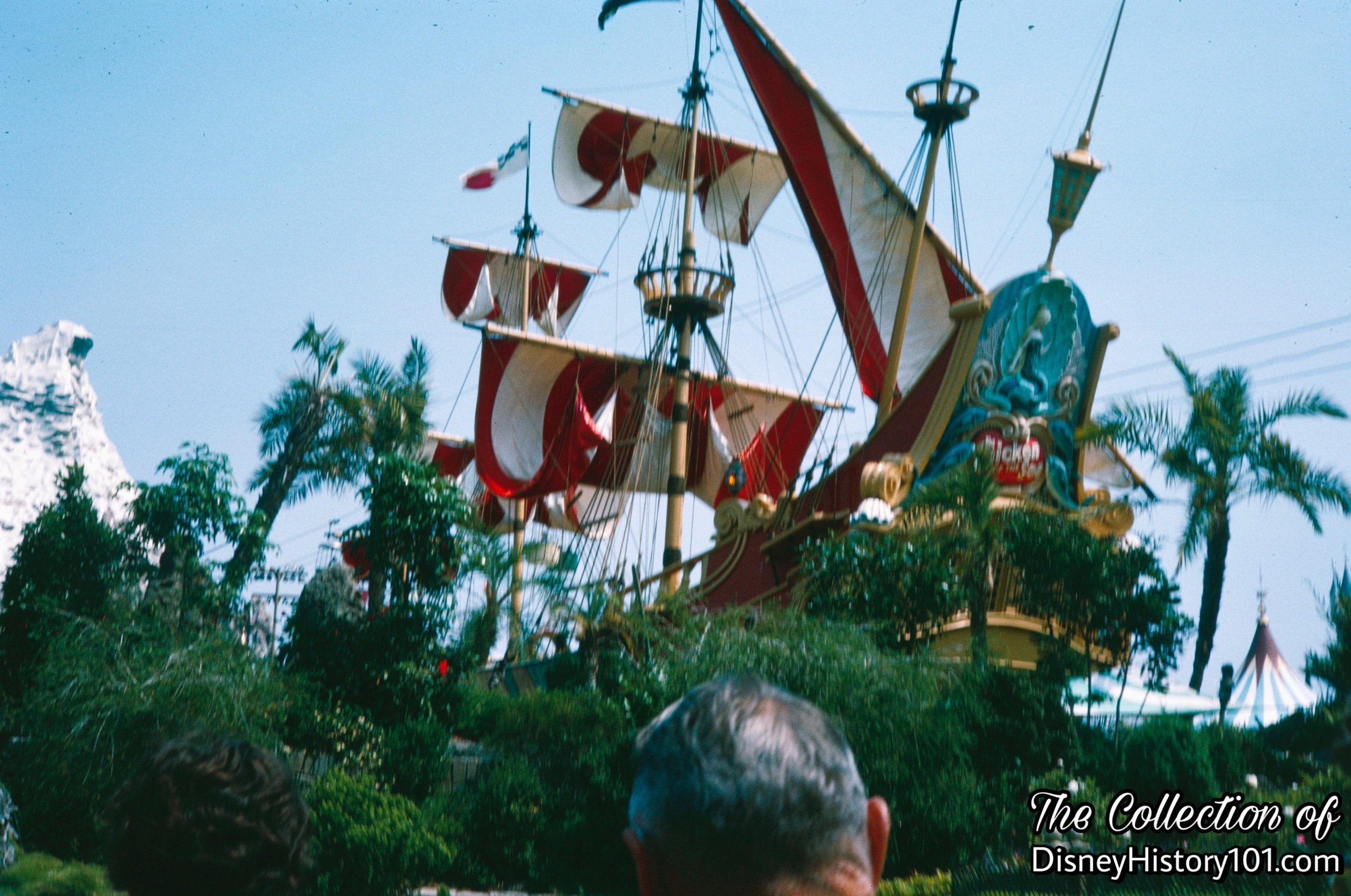
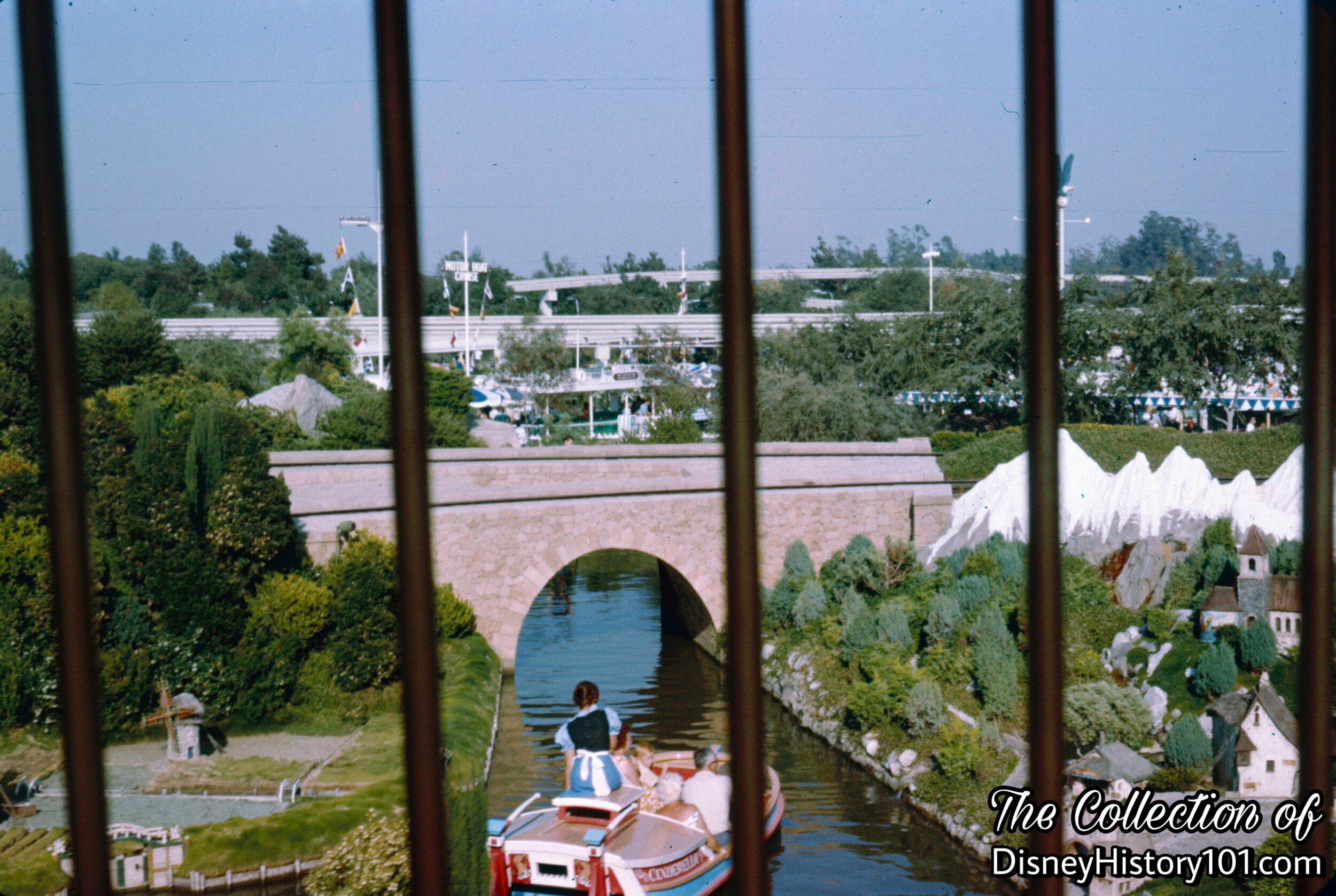
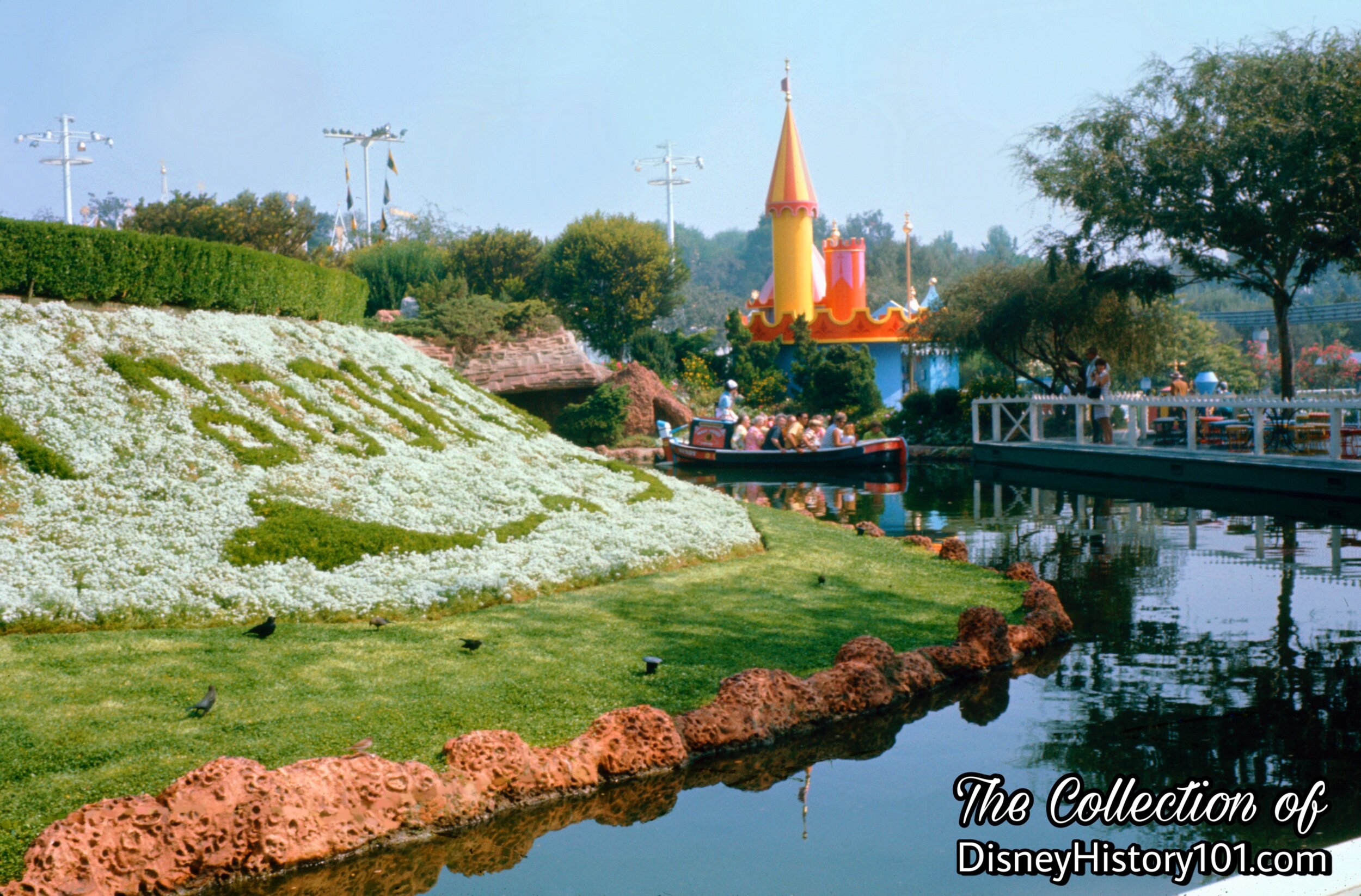
(September 17, 1970)
Upon the end of our story, we emerge into Fantasyland ready for another adventure (like Bell’s Picture Phones or having our Caricature drawn at the colorful castle, nearby).
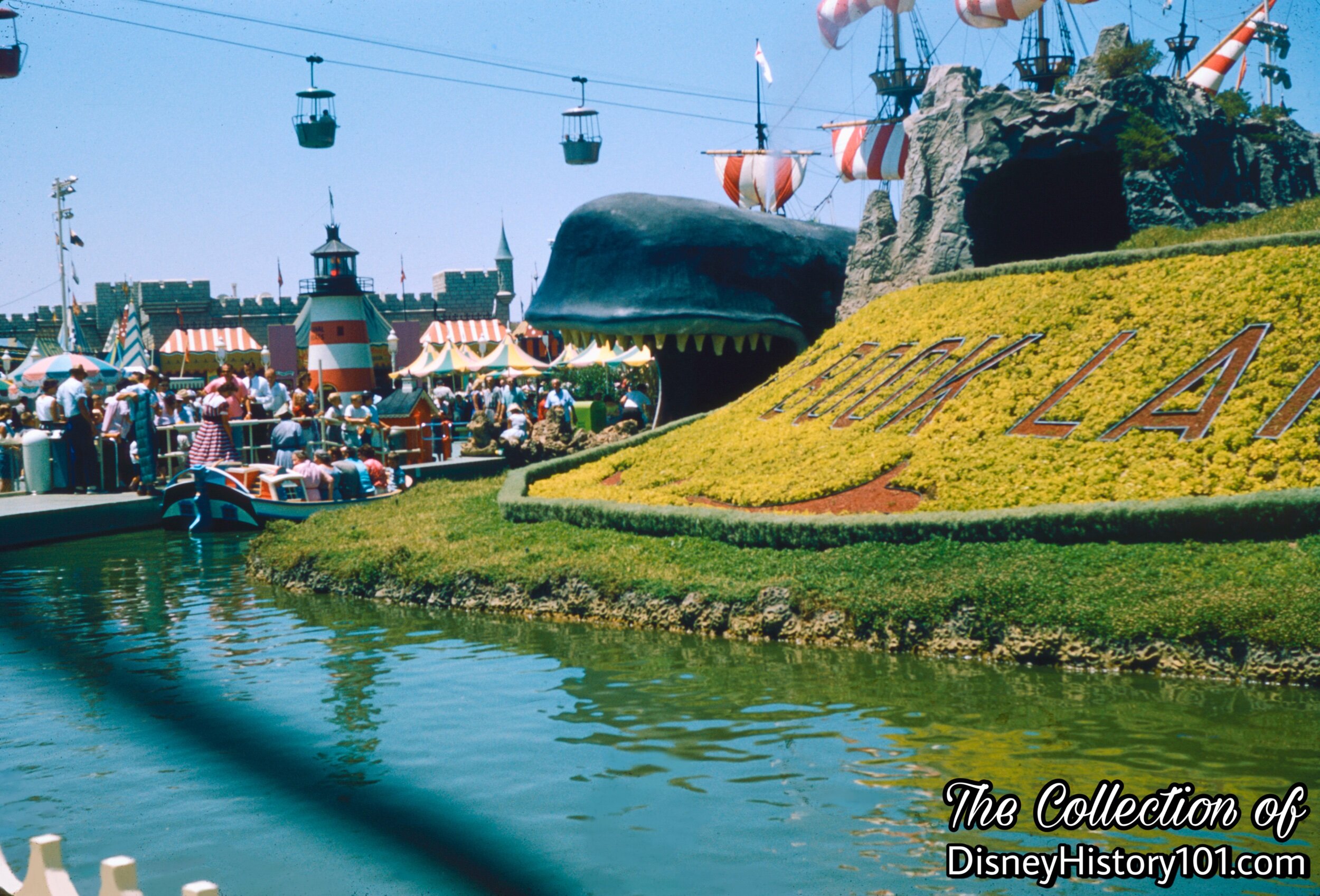
Approaching Storybook Land Canal and Loading Area, (1959)
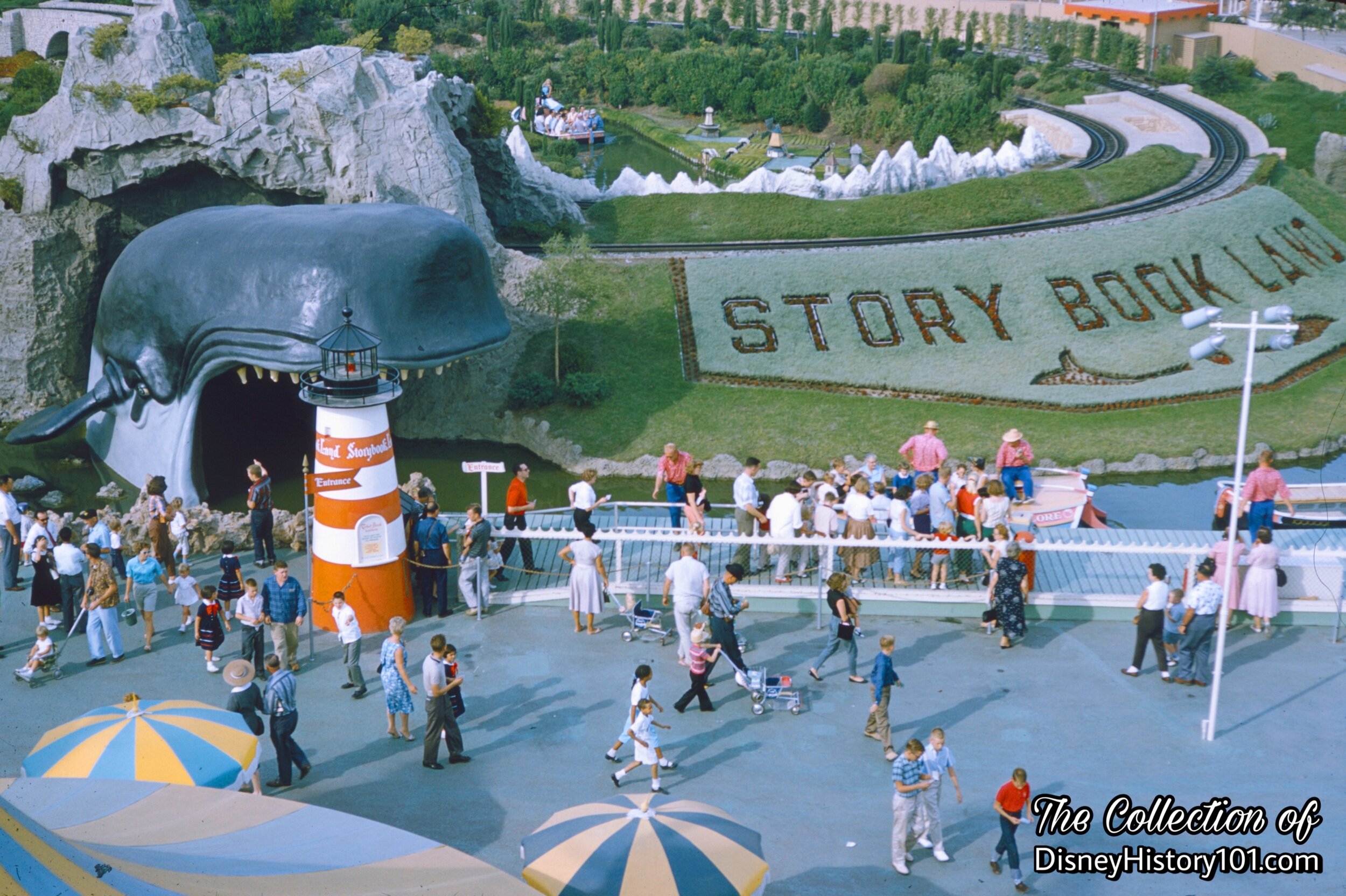
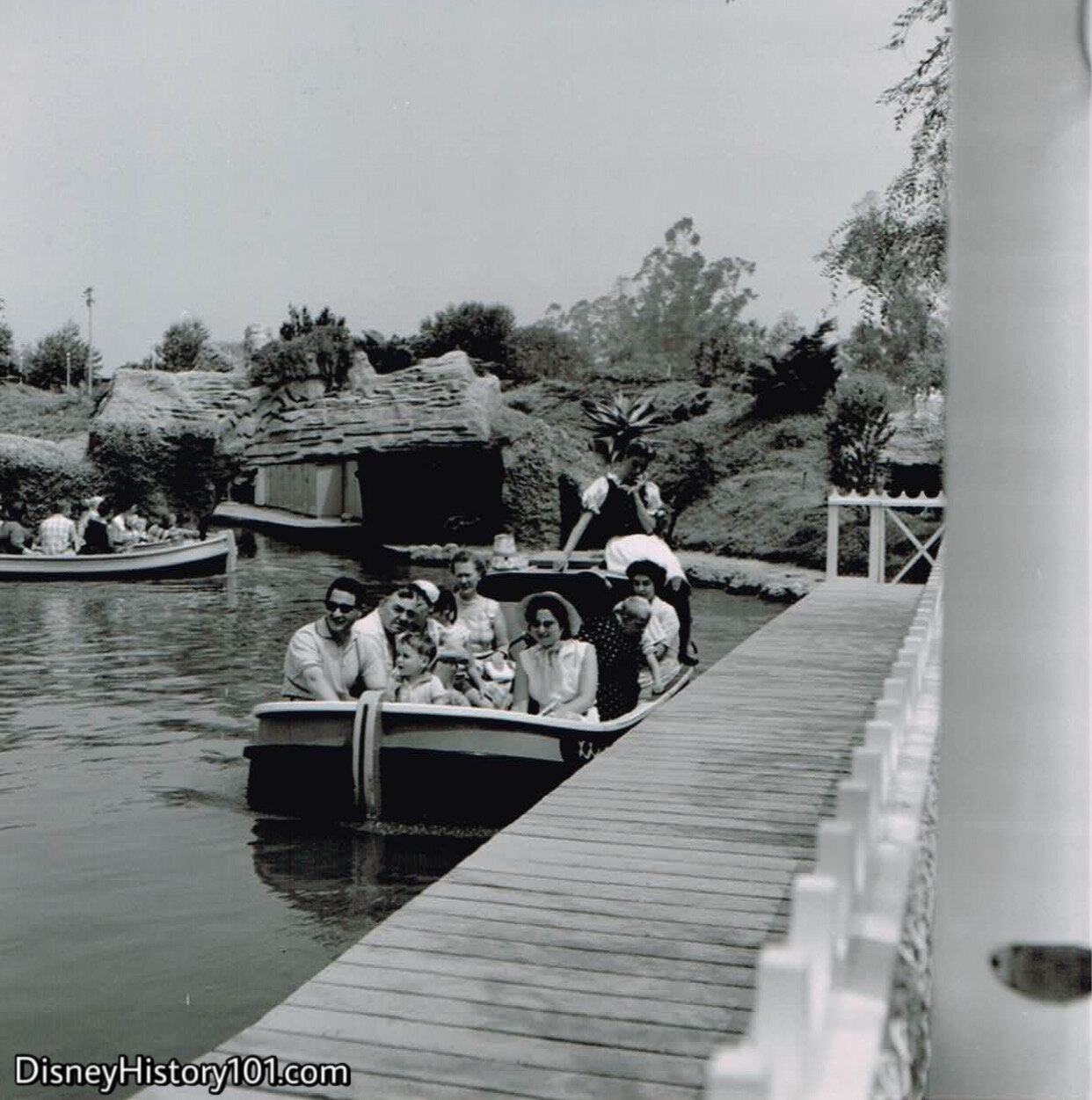
Storybook Land Dock
“Through the cave (behind us) is Never-Never Land. We call it that because we never, never, take you there. That’s where our boats go to sleep at night. Now, the time has come for us to return to our world, and leave Storybook Land behind us. We hope you’ve enjoyed your trip through Storybook Land and will come back to see us real soon. Have a nice day in the Magic Kingdom!”
Please keep your hands, and especially you fingers, inside the boat and away from the dock… Please remain seated until we come to a complete stop… Once we've stopped please stand up towards the center of the boat and wait for me to help you disembark… then step back this way, and I will help you out of the boat. On the count of three we’ll stand up in the center of the boat together.”
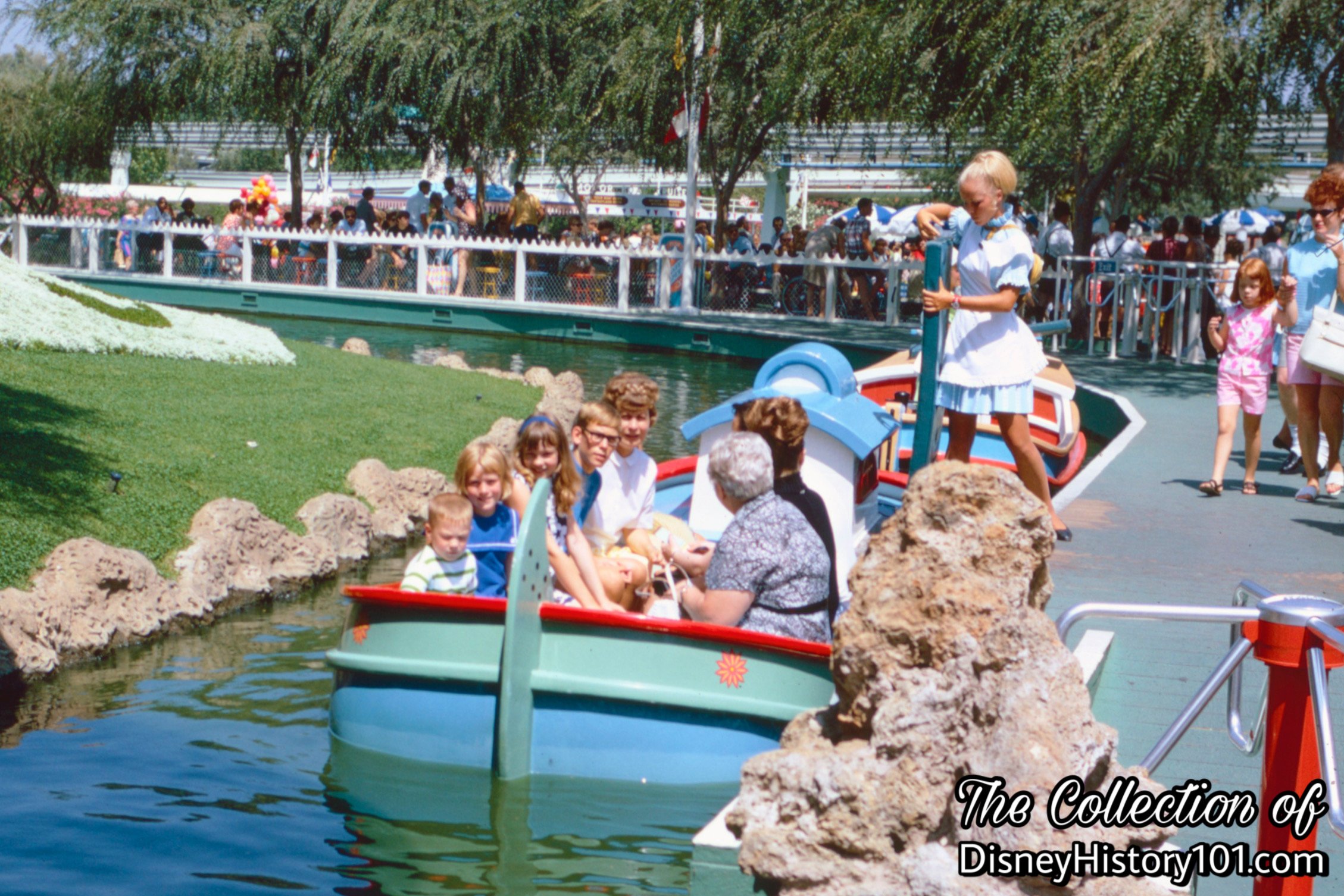
Guests have boarded one of the gaily colored canal boats.
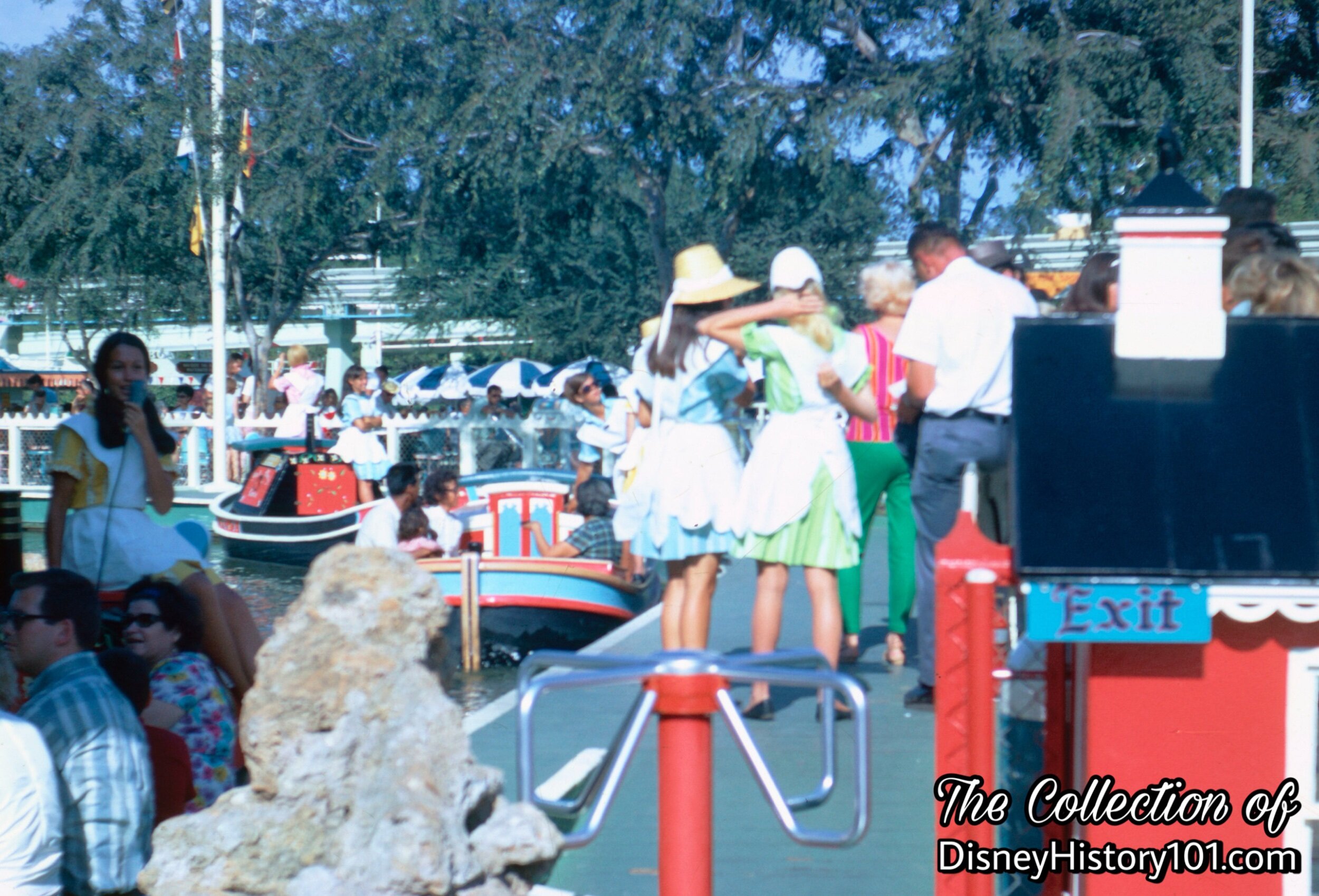
Storybook Land Exit
Many notable Disneylanders had a privileged part in the Storybook Land Canal Boats rotation - the set order of operating positions established by the attraction's Working Lead. To the right, perhaps one Hostess is a “breaker,” “bumping” or relieving another Cast Member in rotation, for a rest period or lunch period.
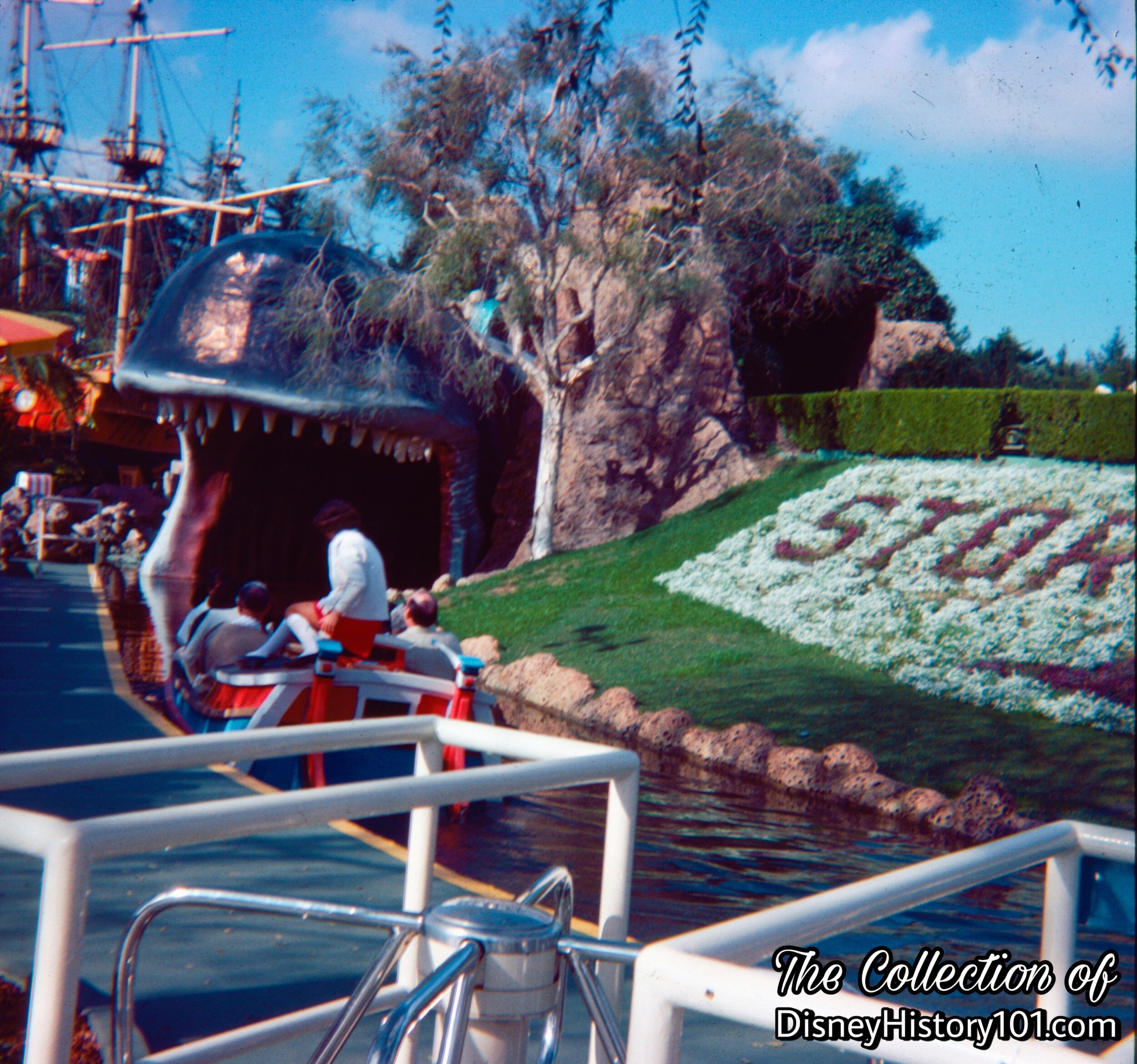
Storybook Land Exit
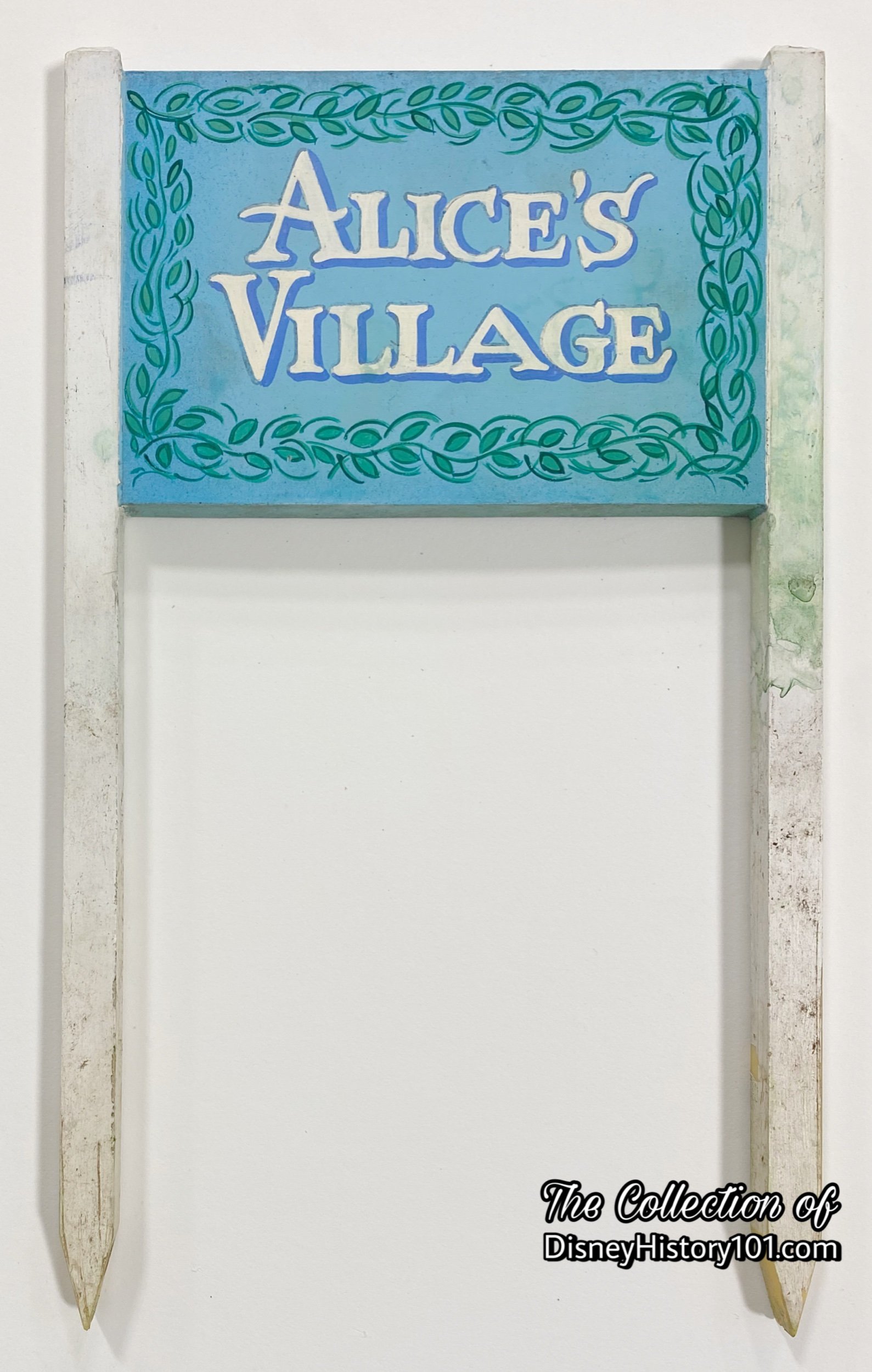
When signage is looking pretty worn and stressed it is replaced or rehabilitated.
At Disneyland, signs are themed to support the stories with appropriate graphics, colors, fonts, terminology, overall design of the sign, materials (wood, metal, banners, etc.), and verbiage used on the signage.
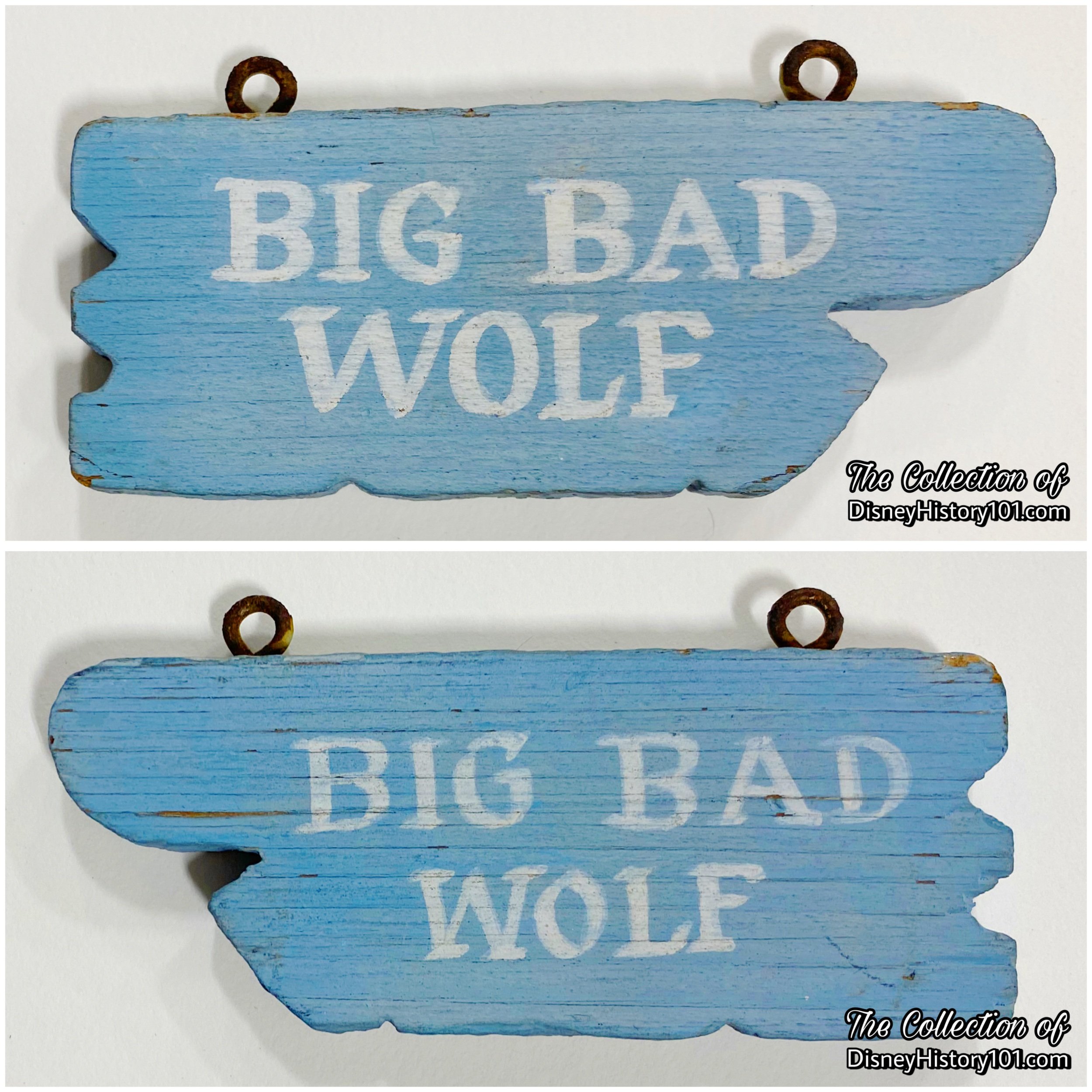

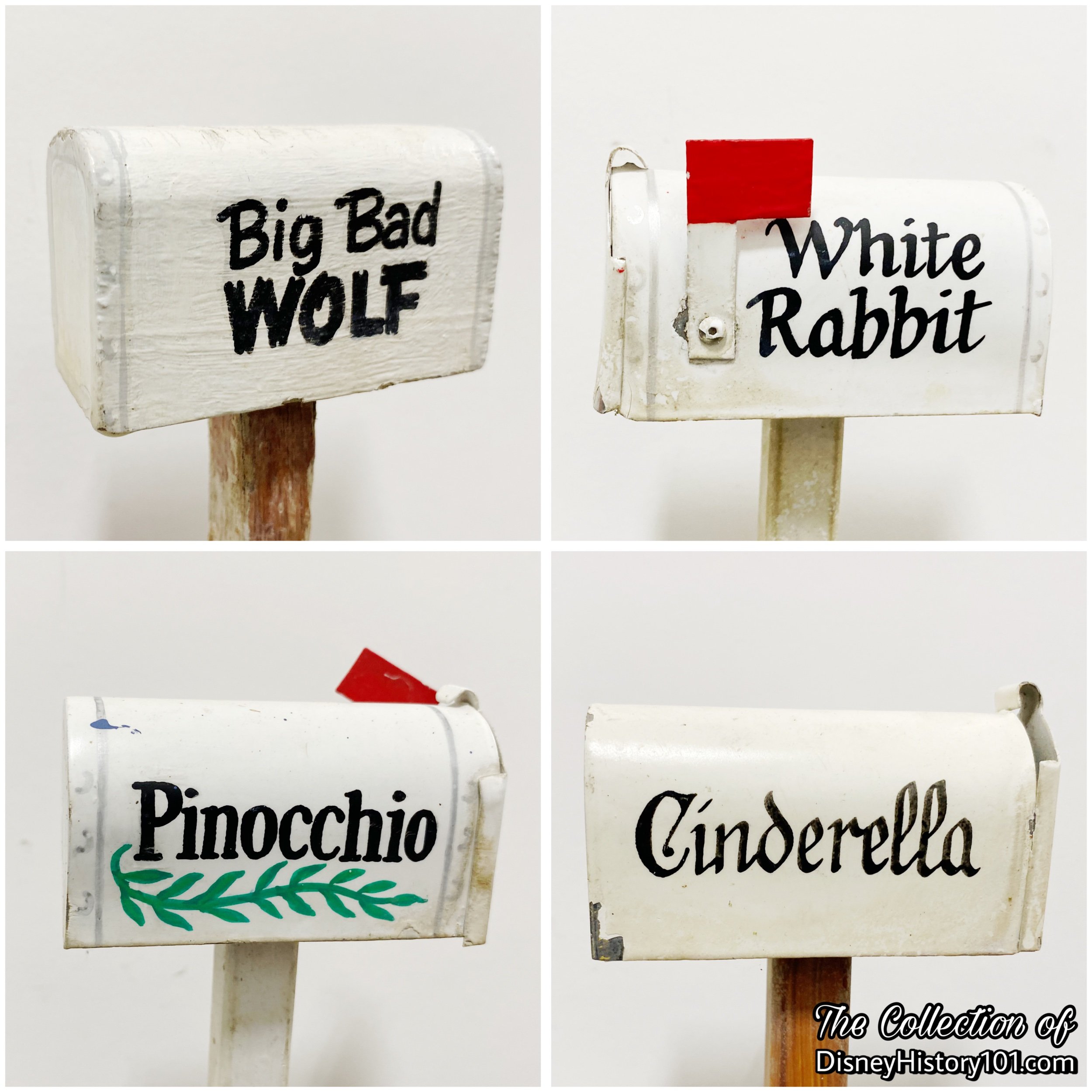
Walt Disney Imagineer John Stone designed, developed and supported overall design by producing Massing Models of Storybook Land.
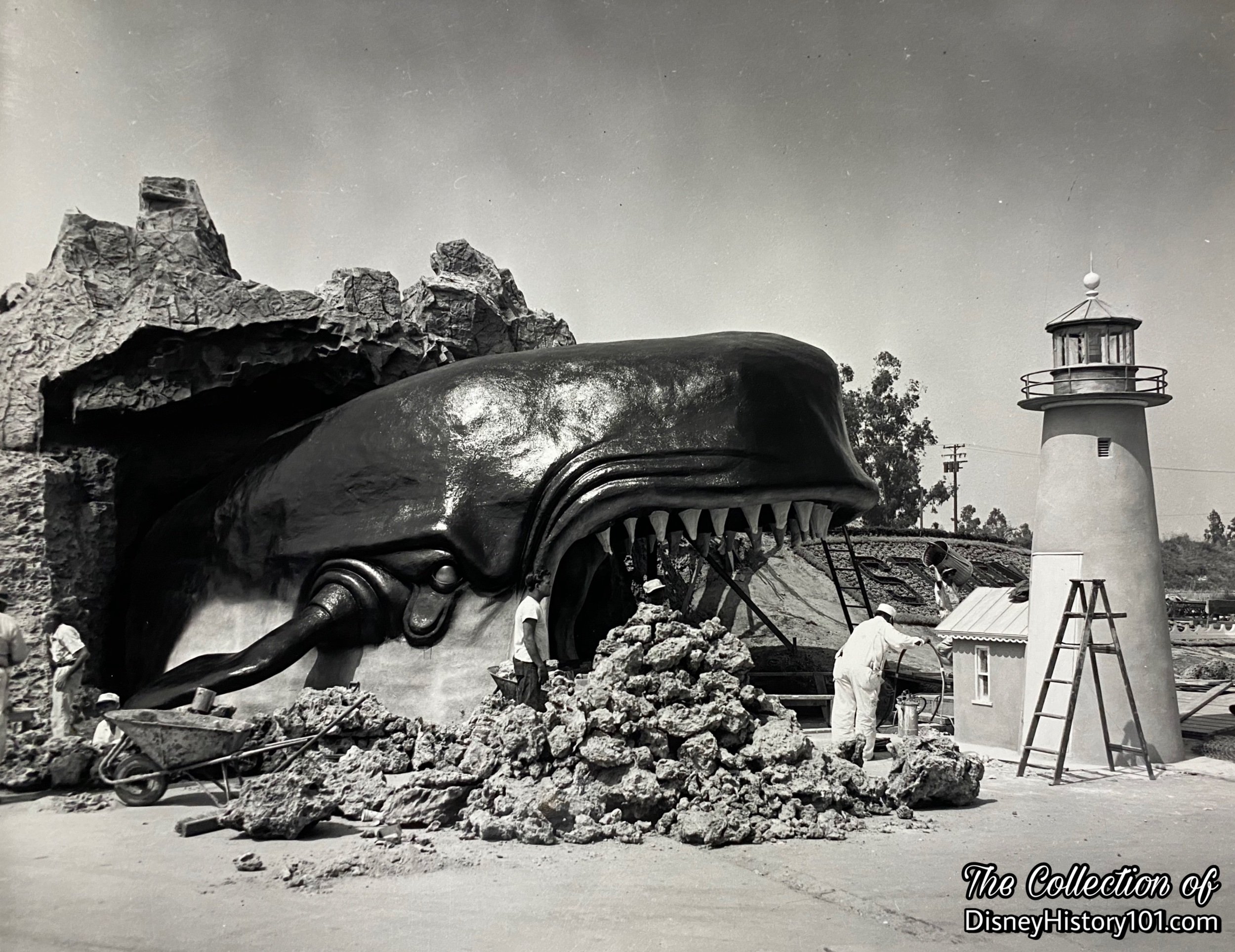

Disneyland "C" Attraction Coupon, 35 Cent Value, (June, 1957 - September, 1958)
The admission for Storybook Land Canal Boats was one “C” Coupon (35 cents) - the same fare as several other Fantasyland adventures!
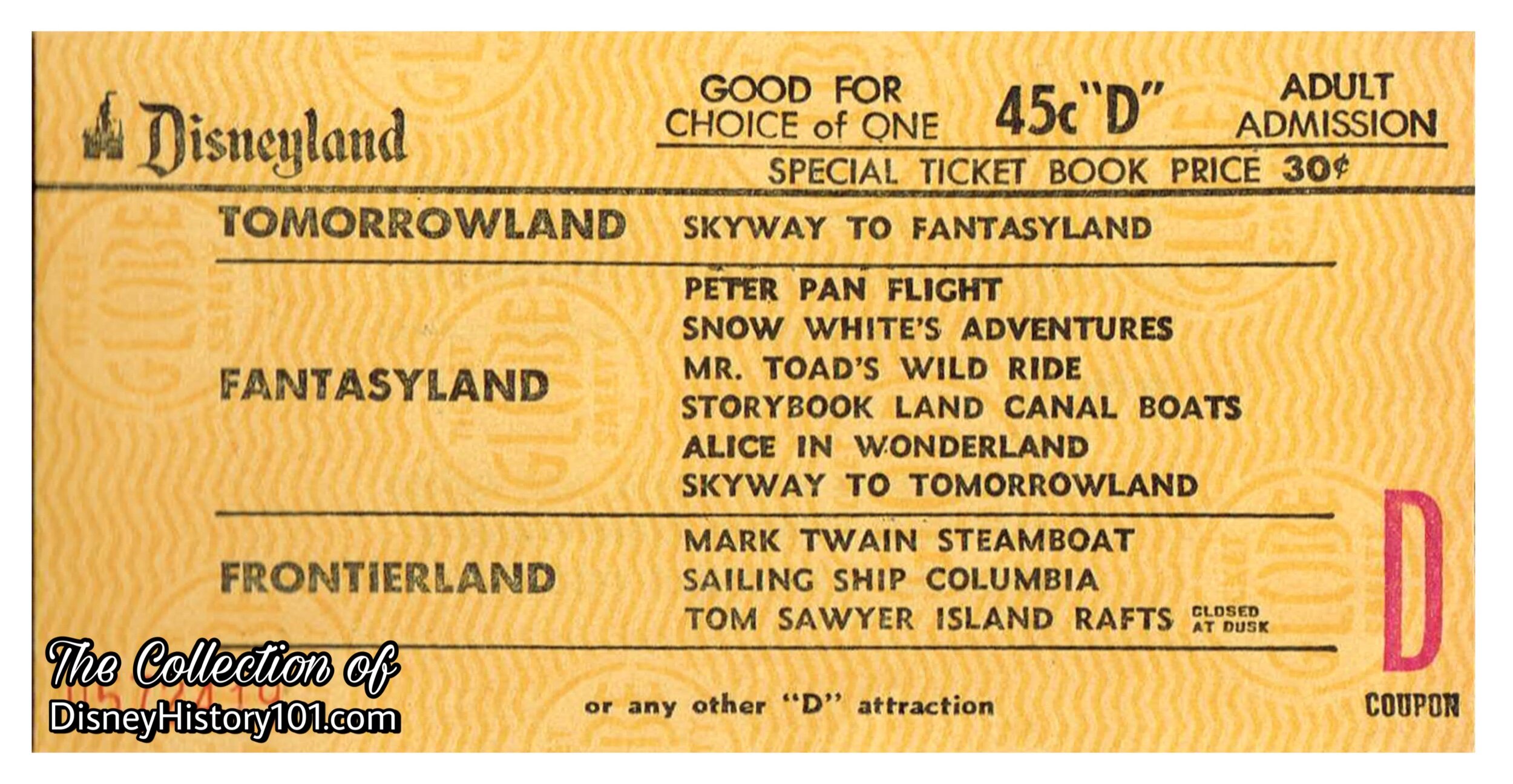
Disneyland "D" Attraction Coupon, (Summer, 1960)

